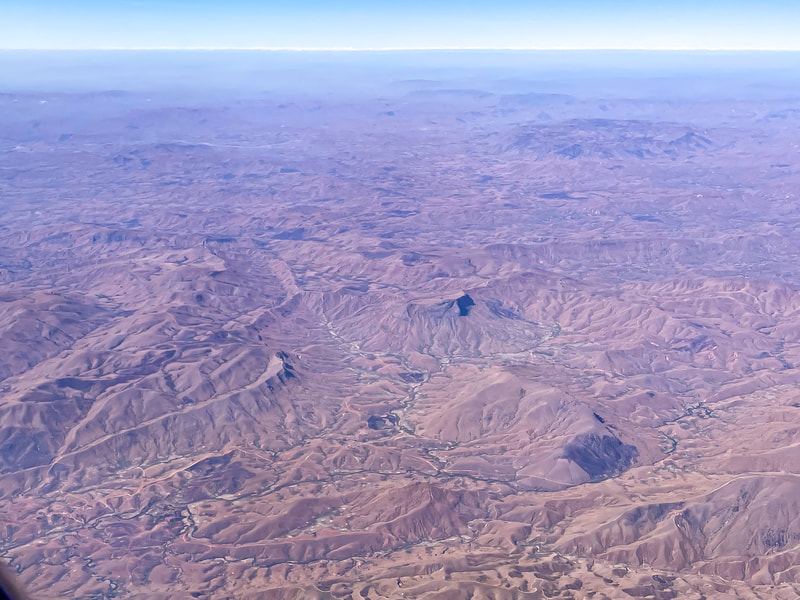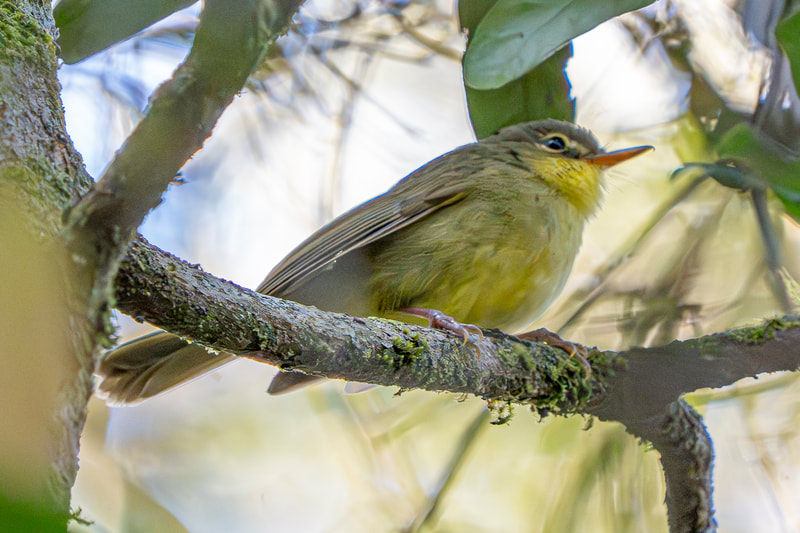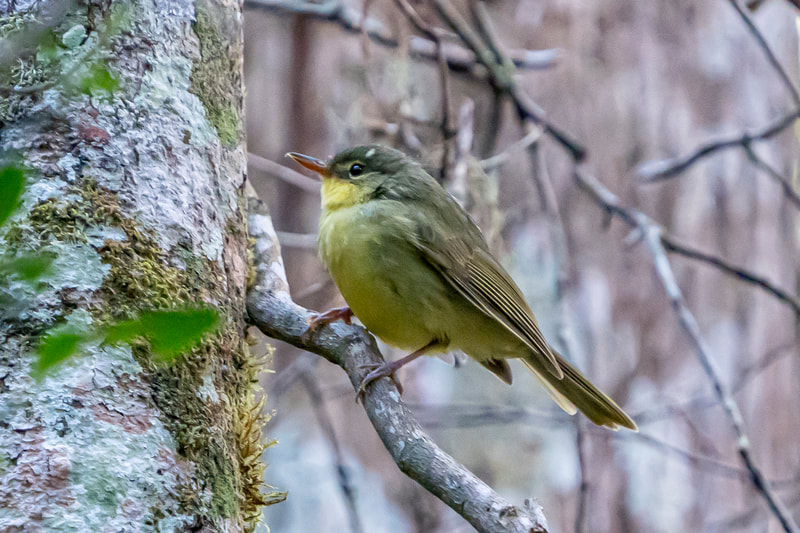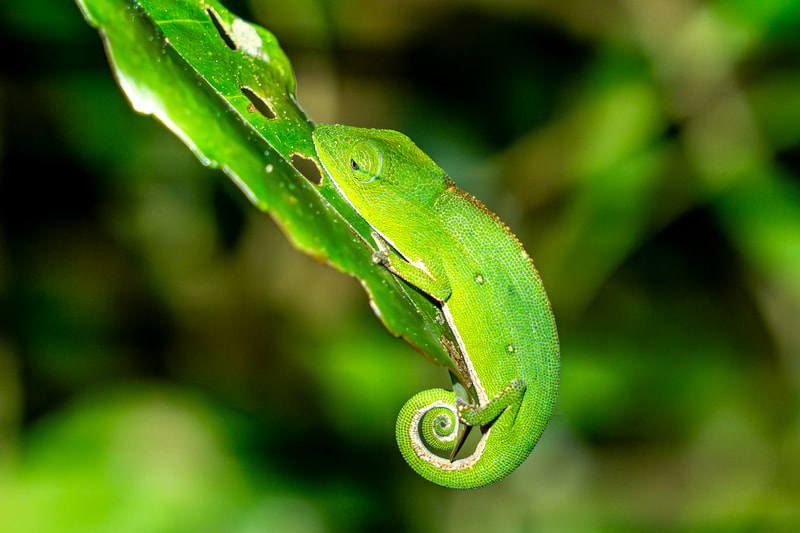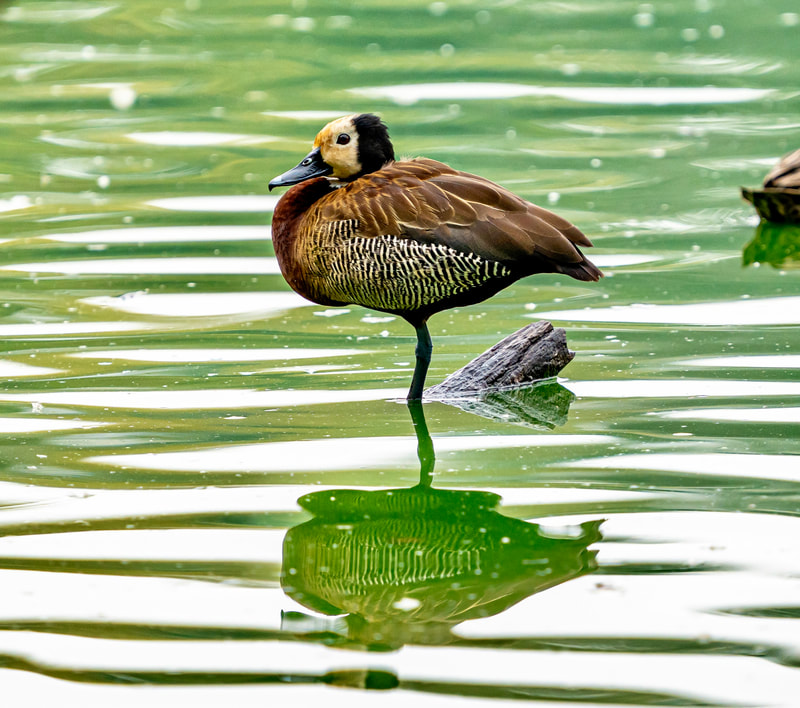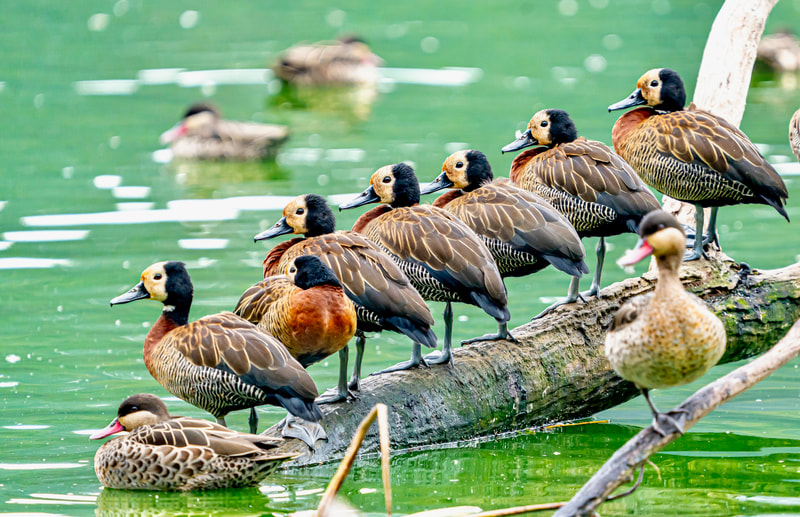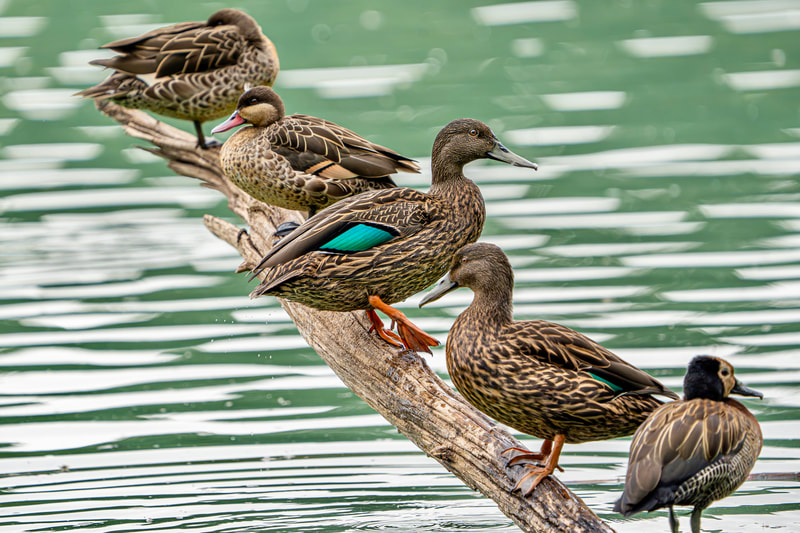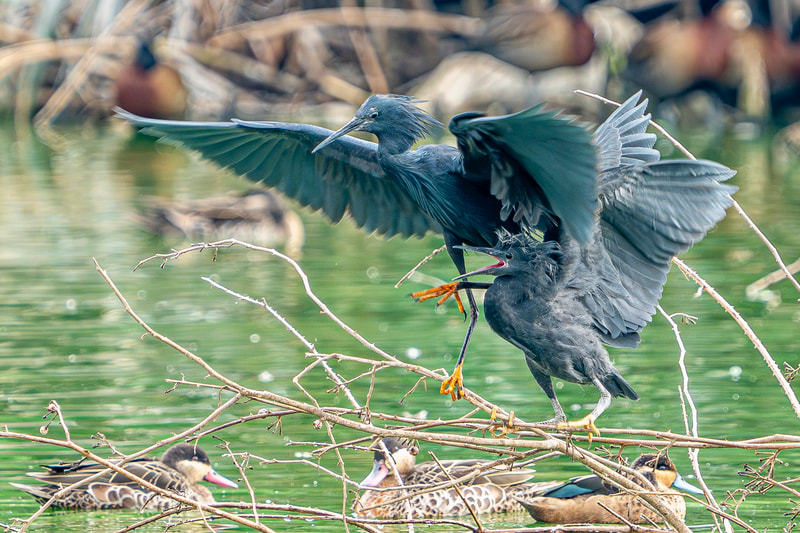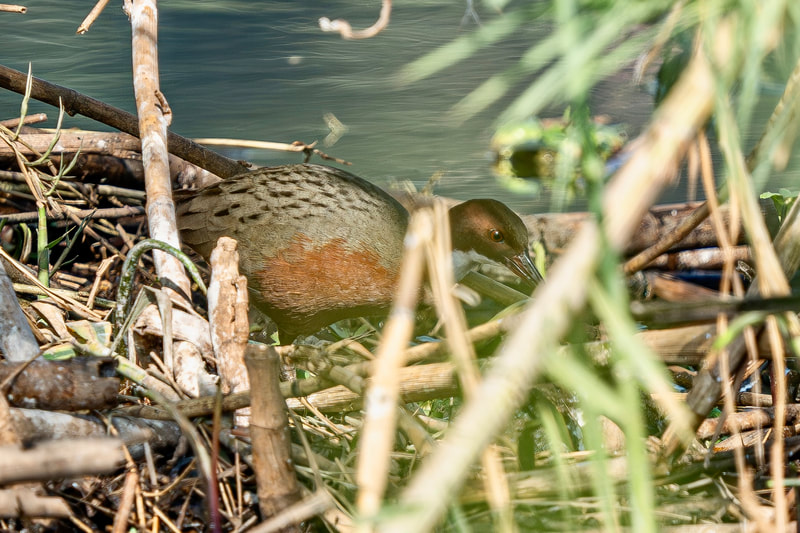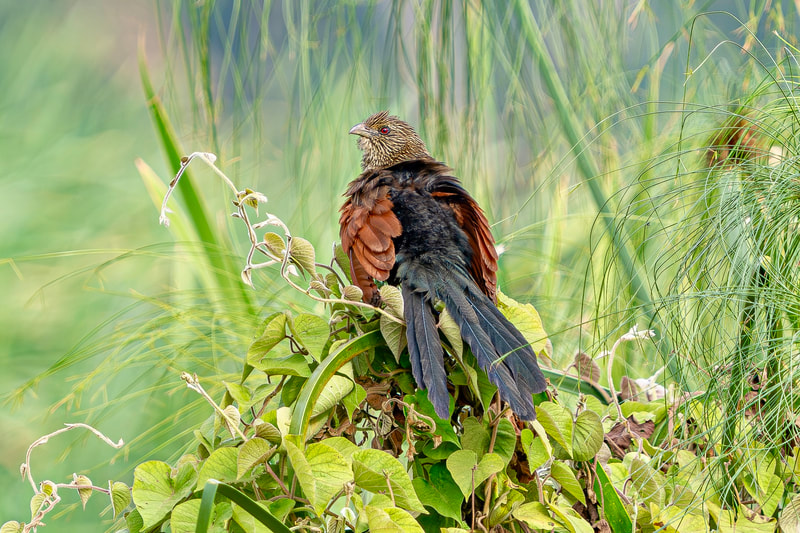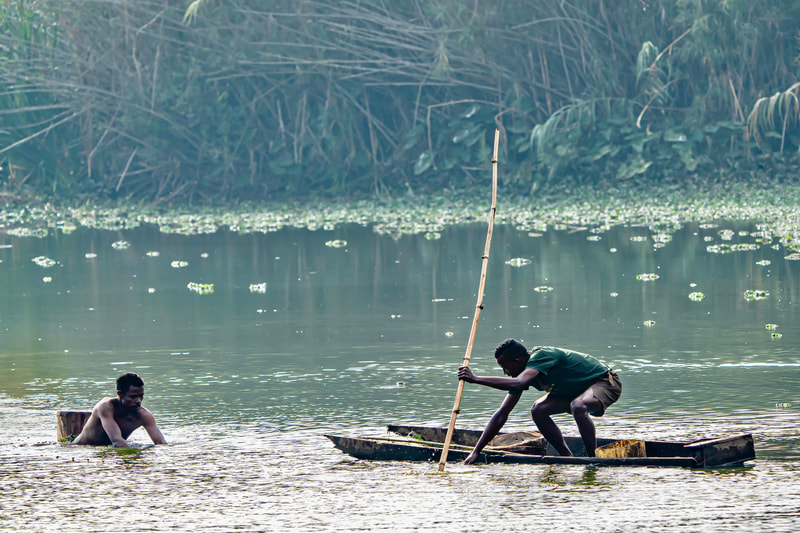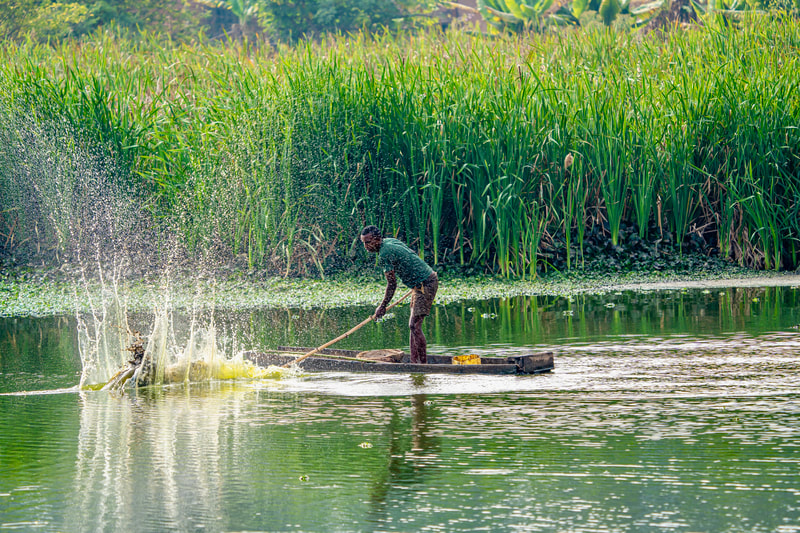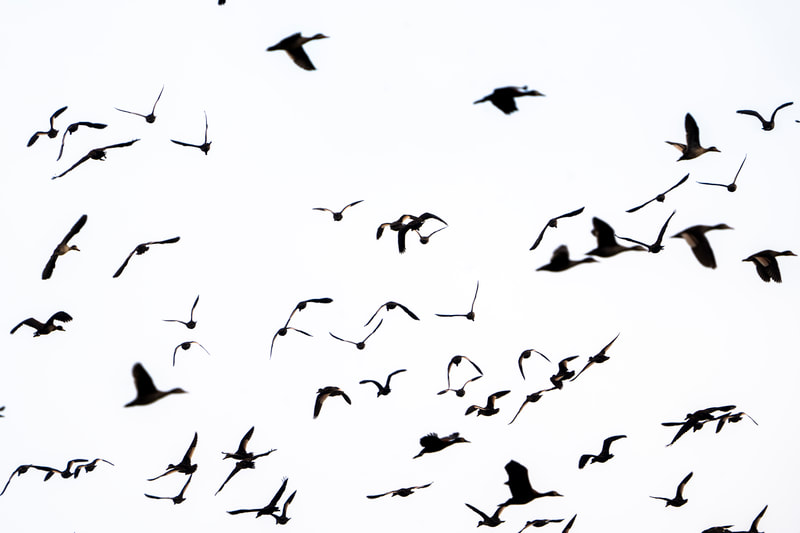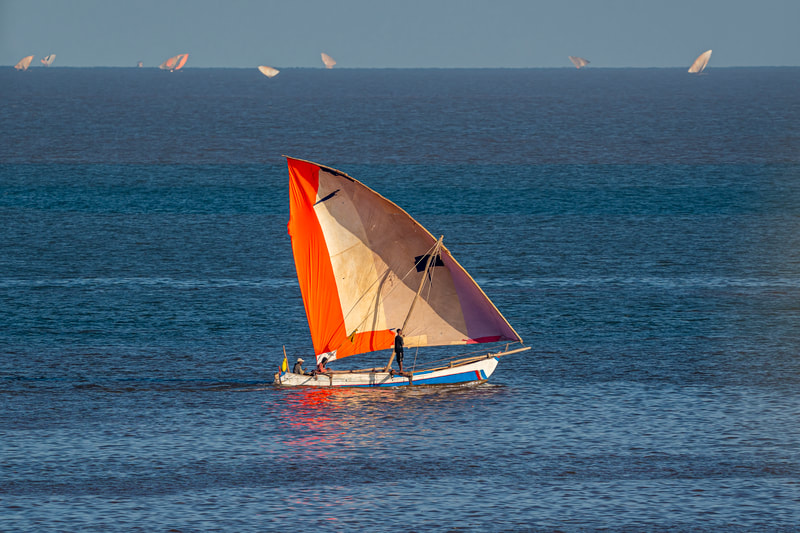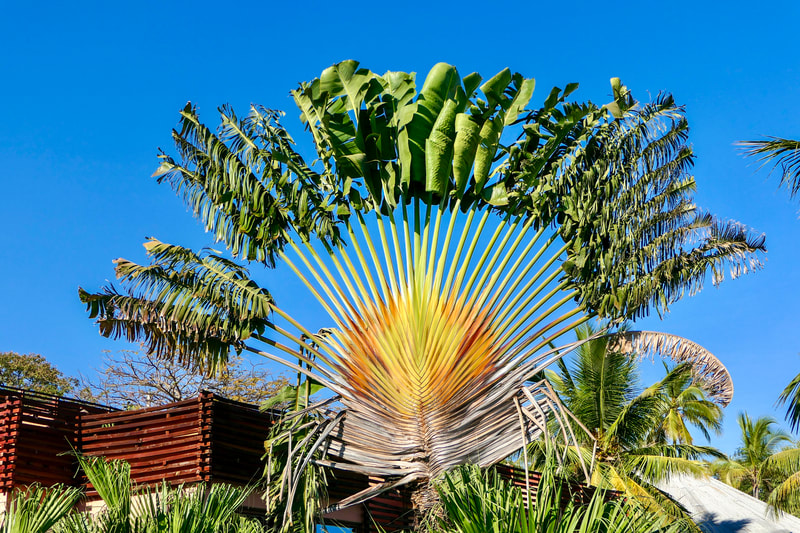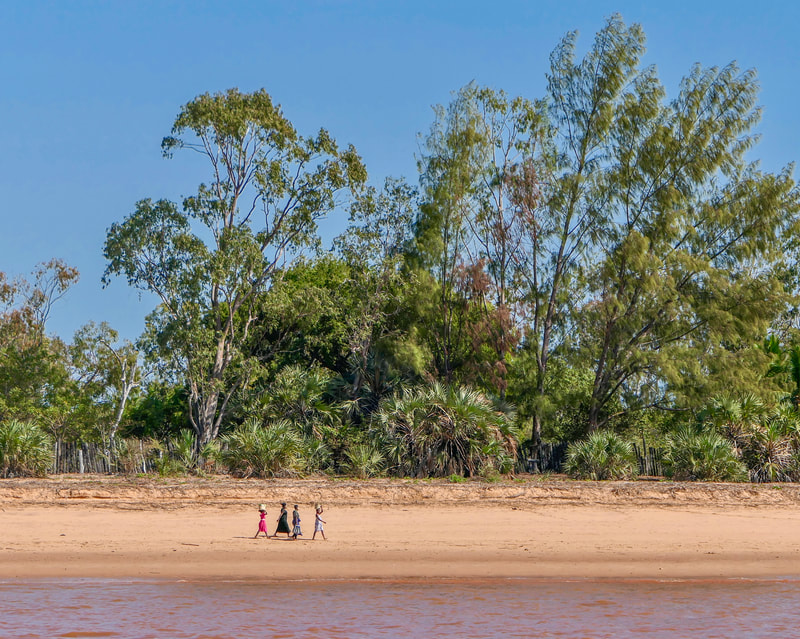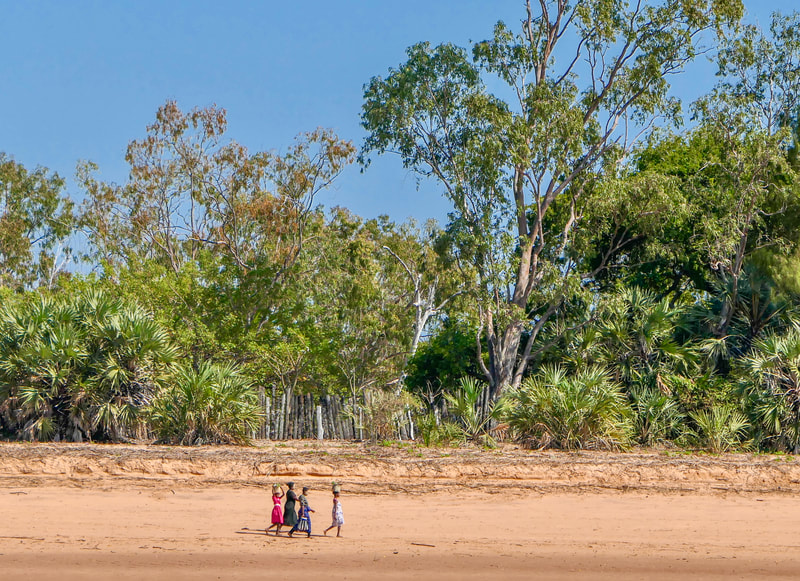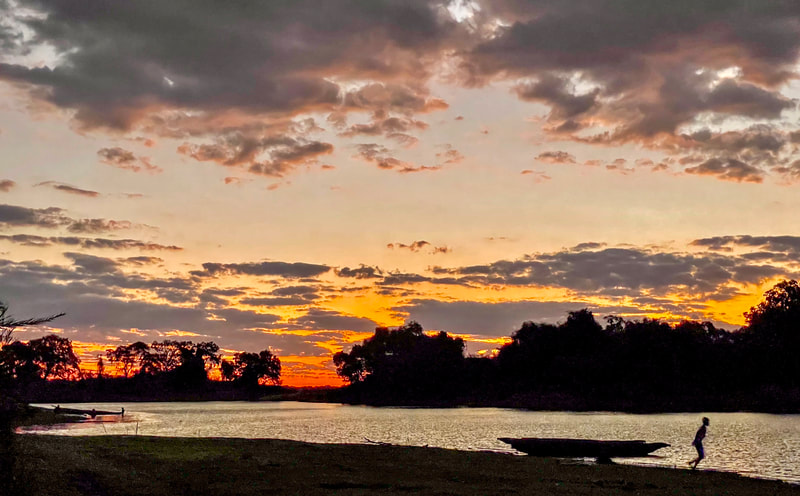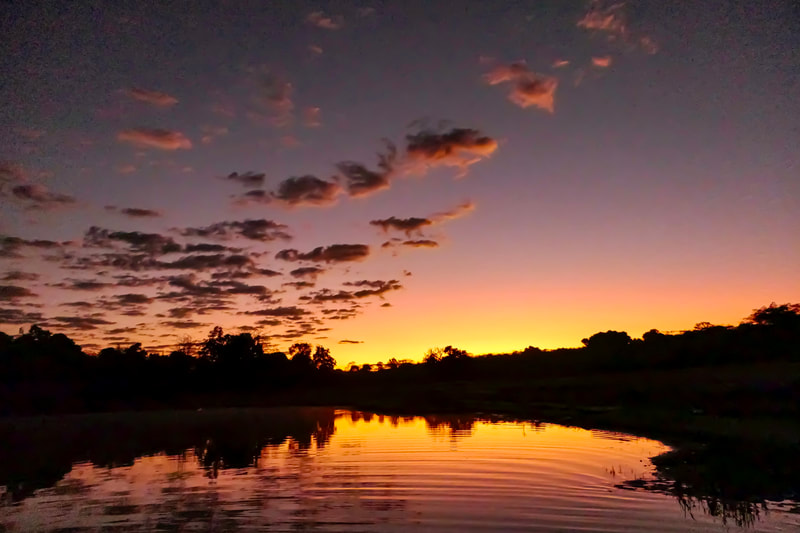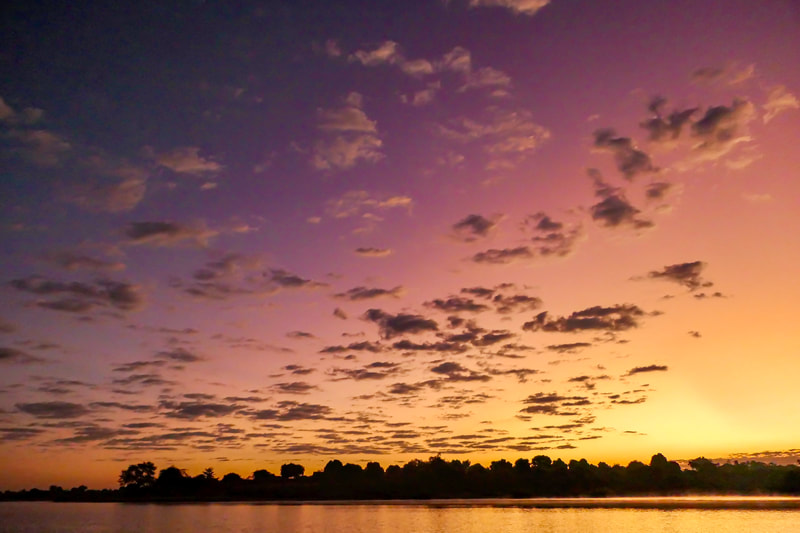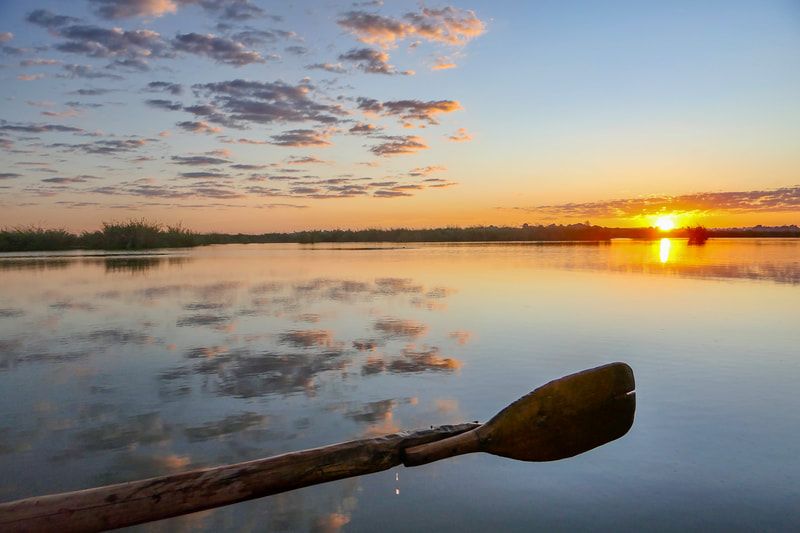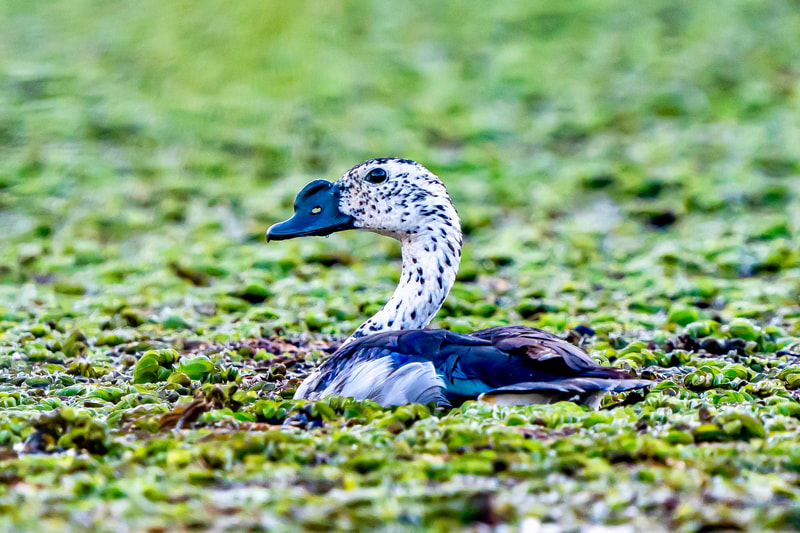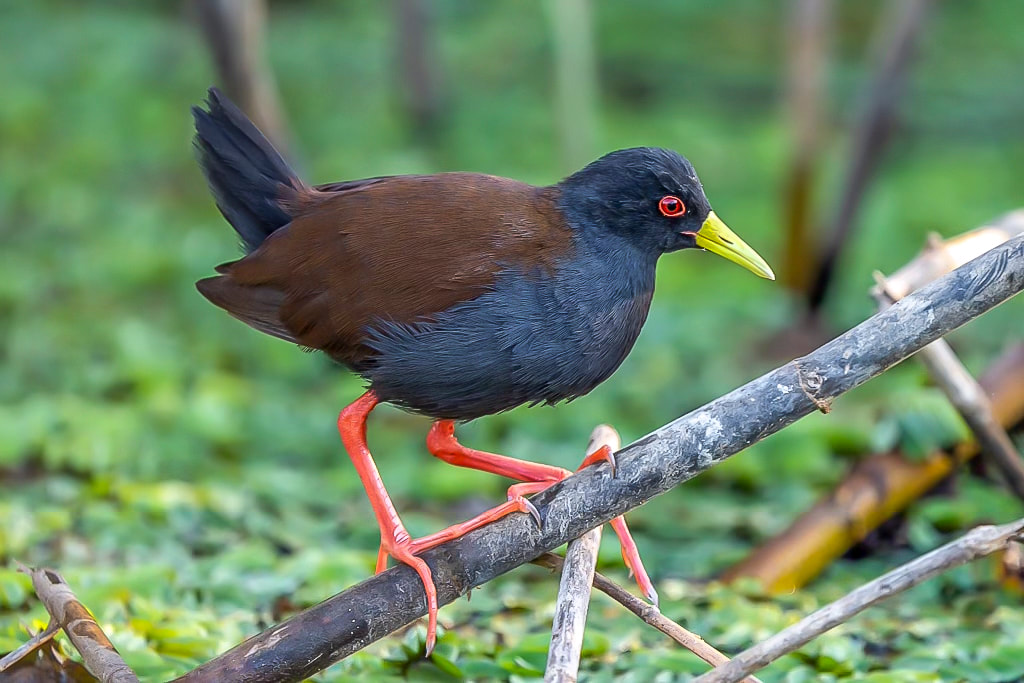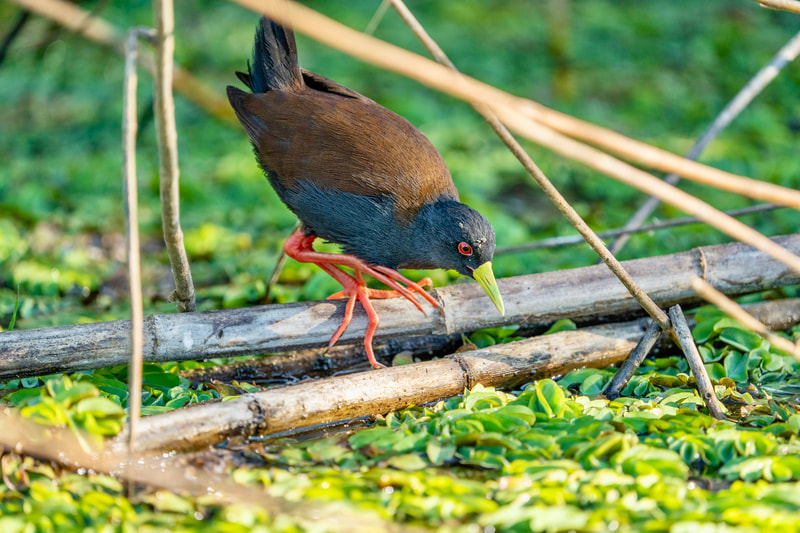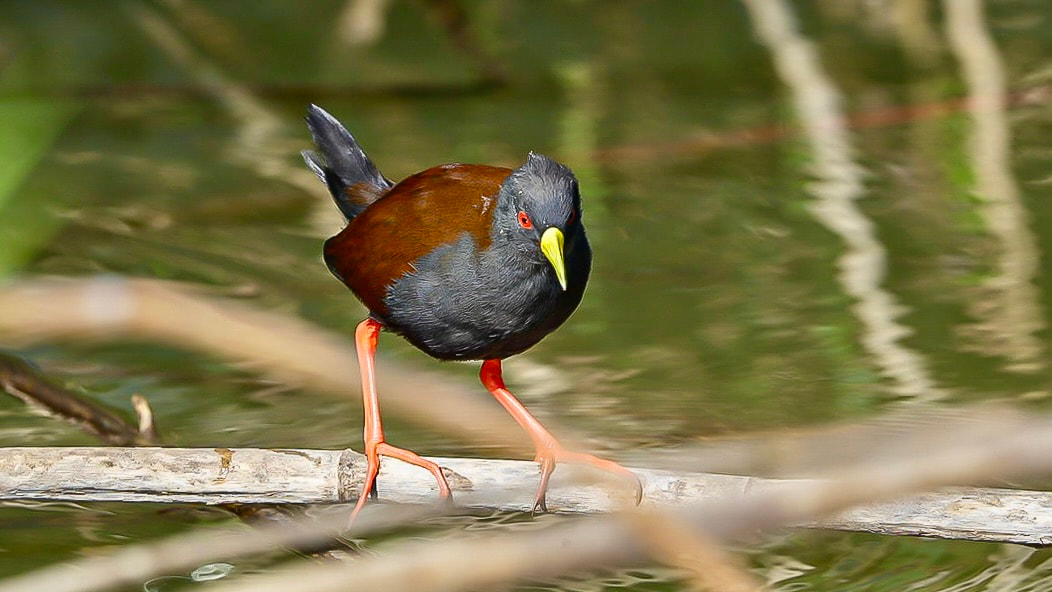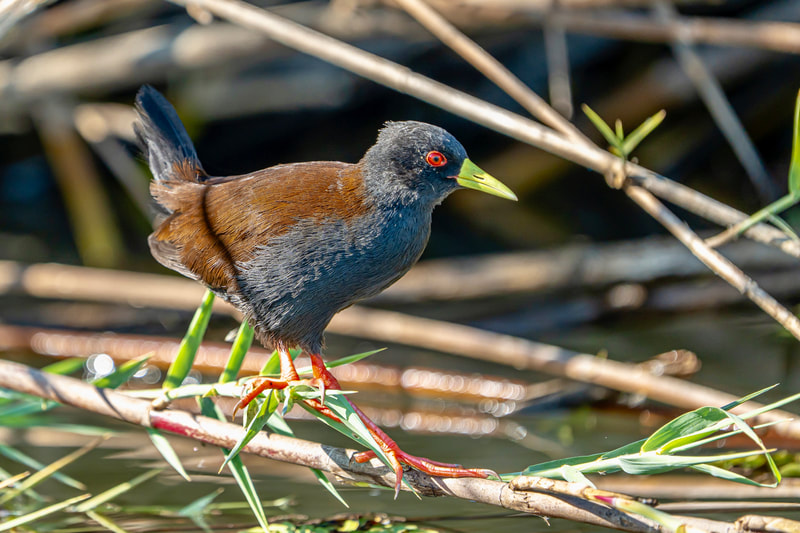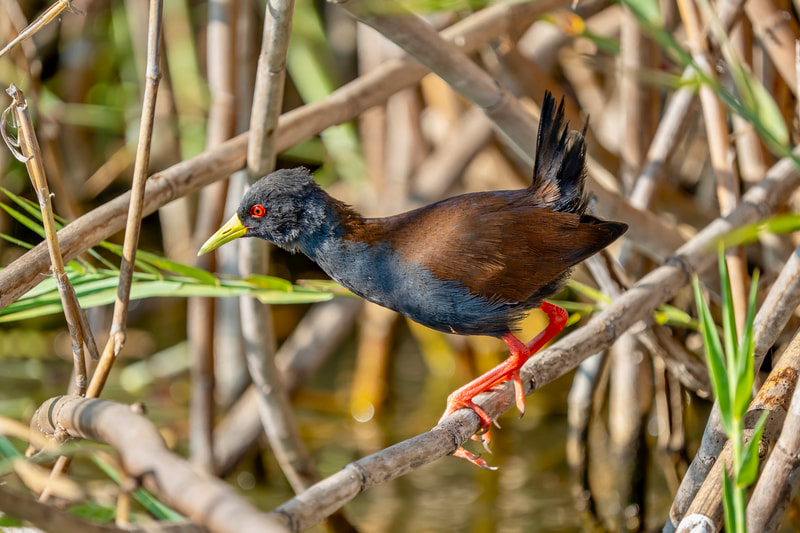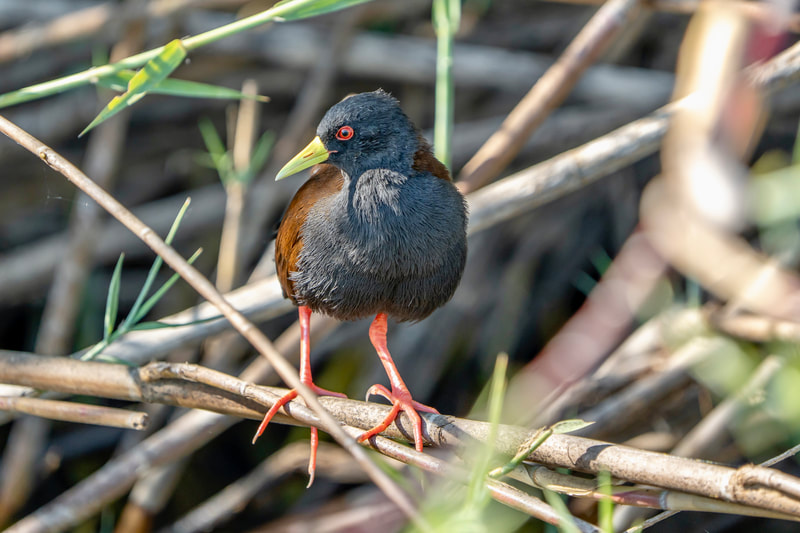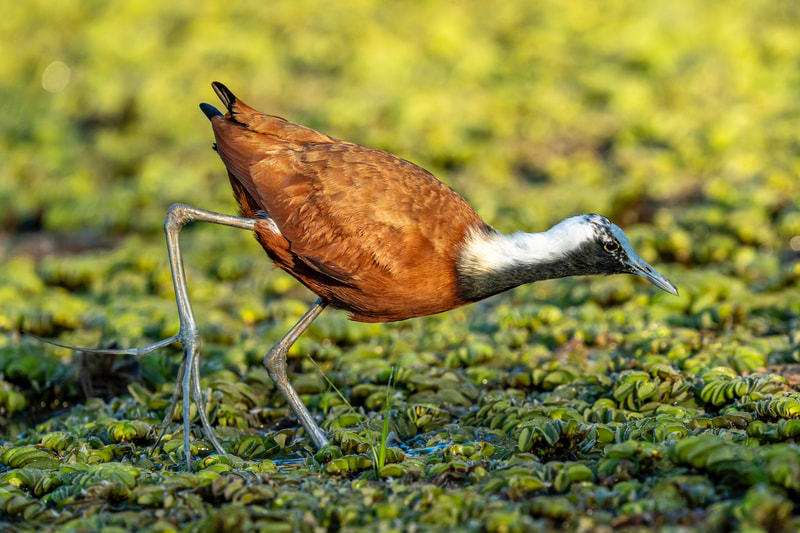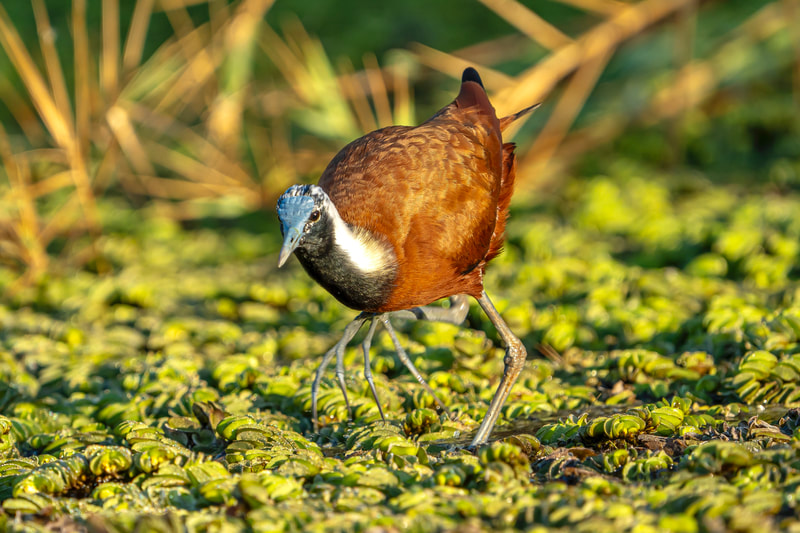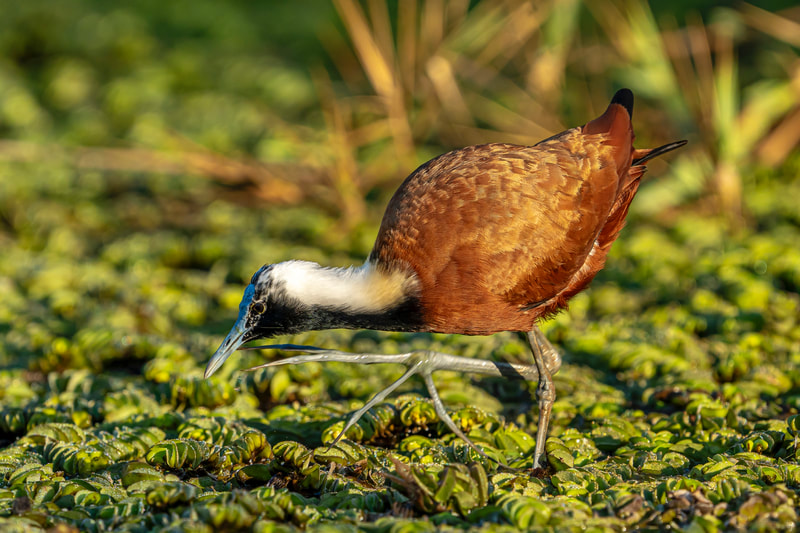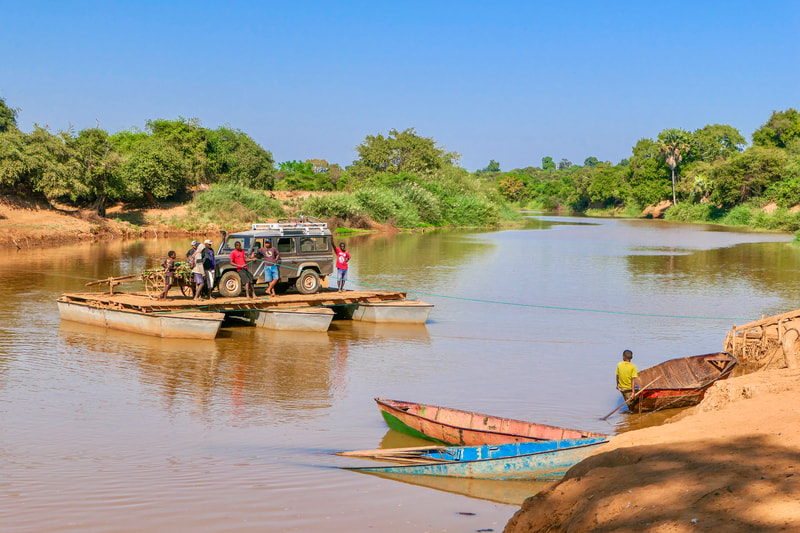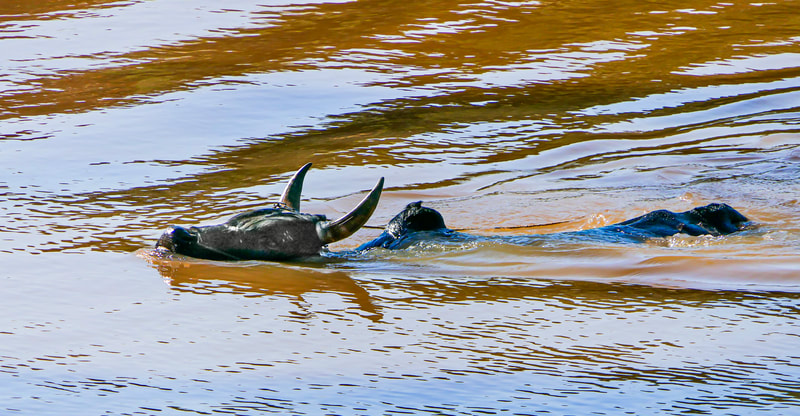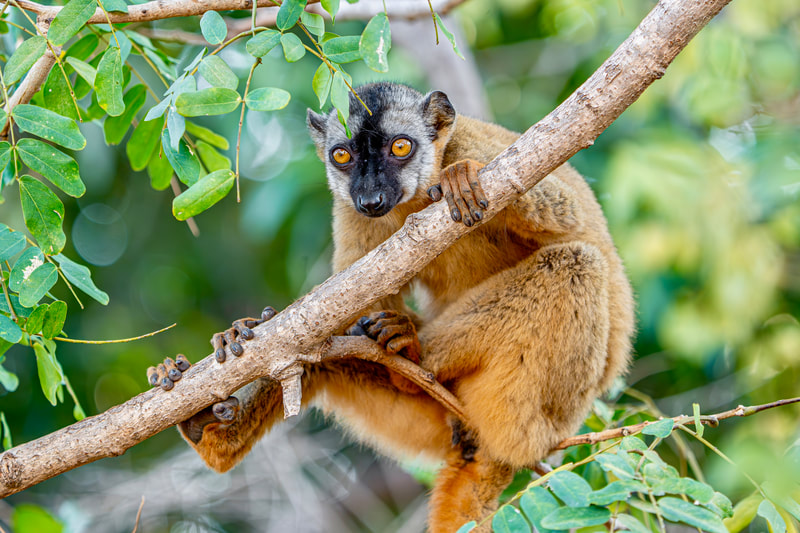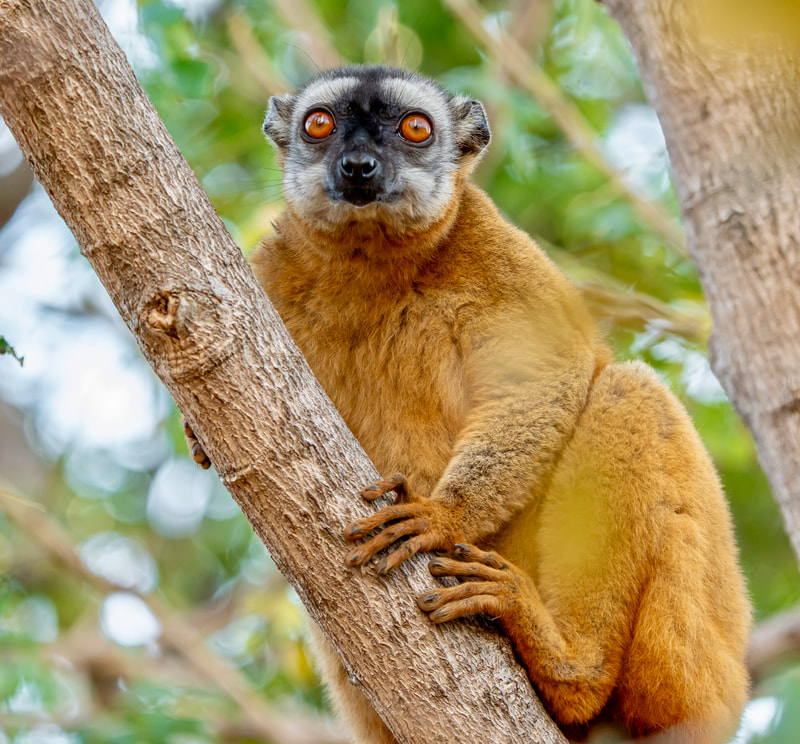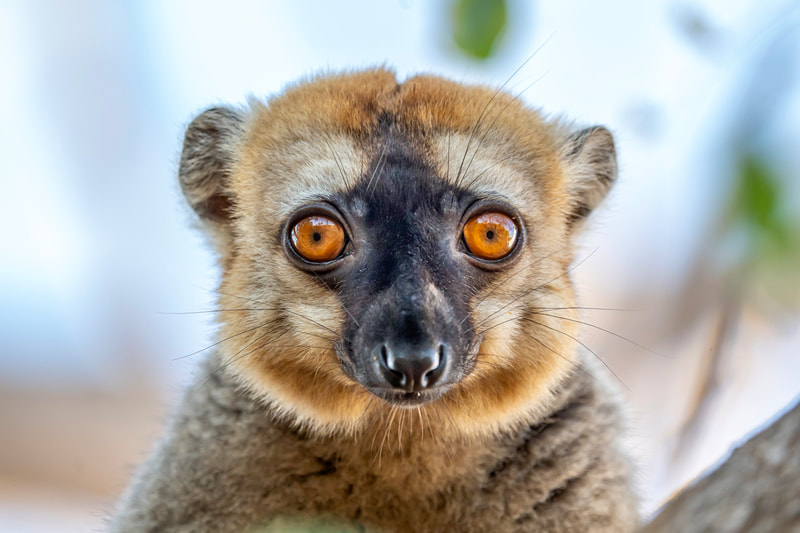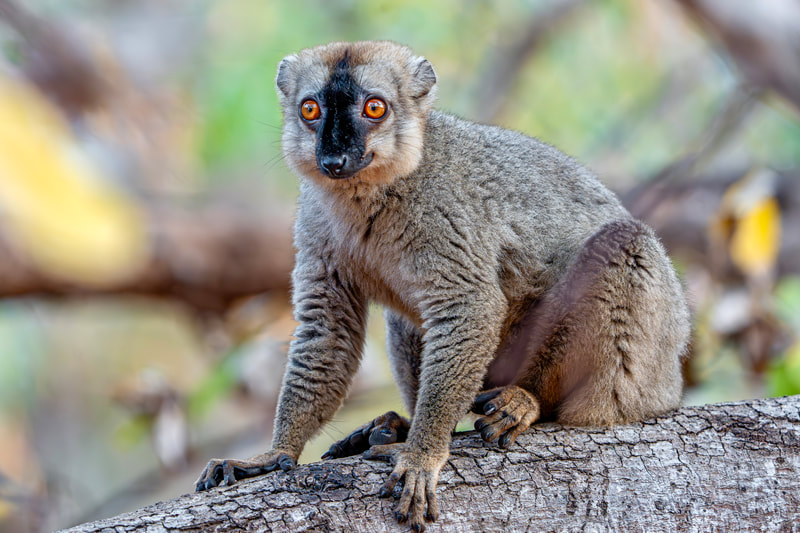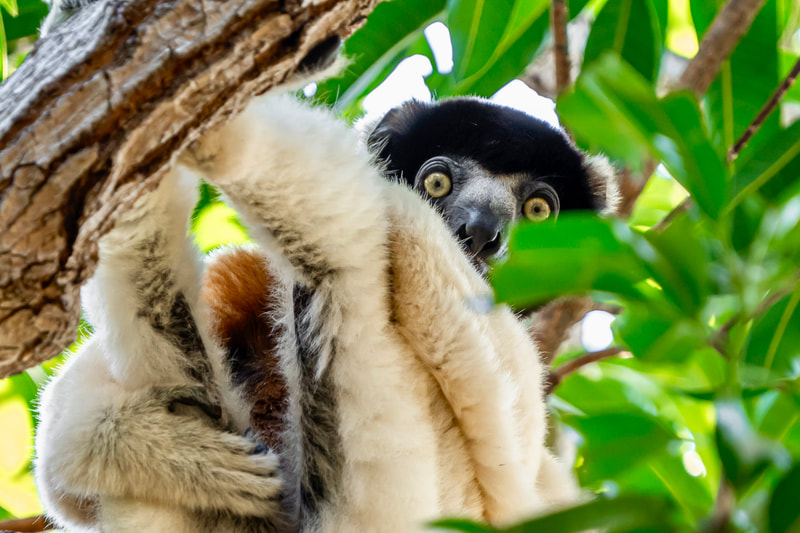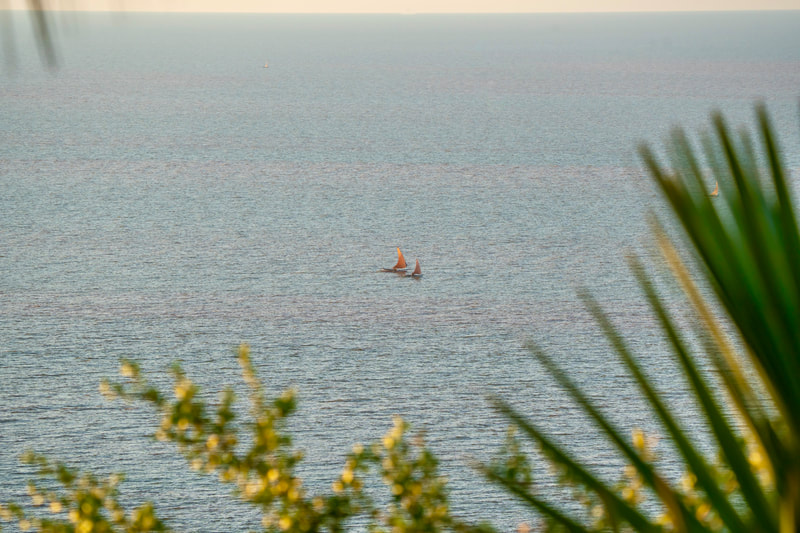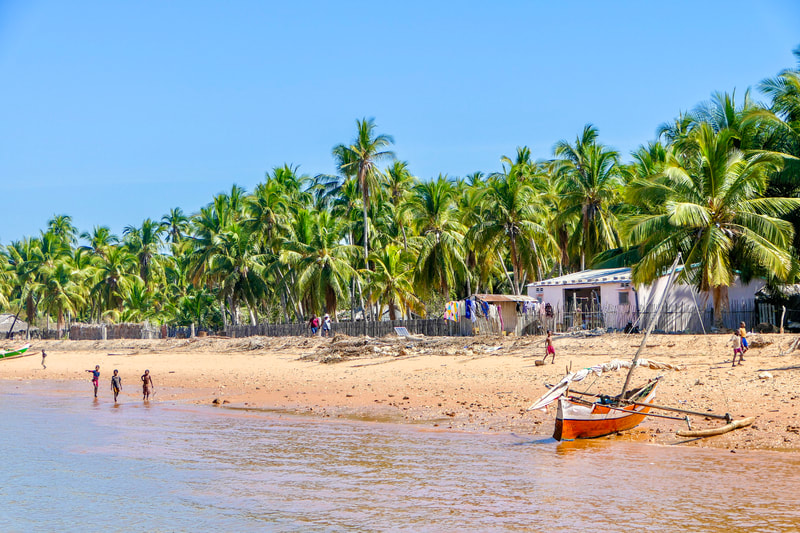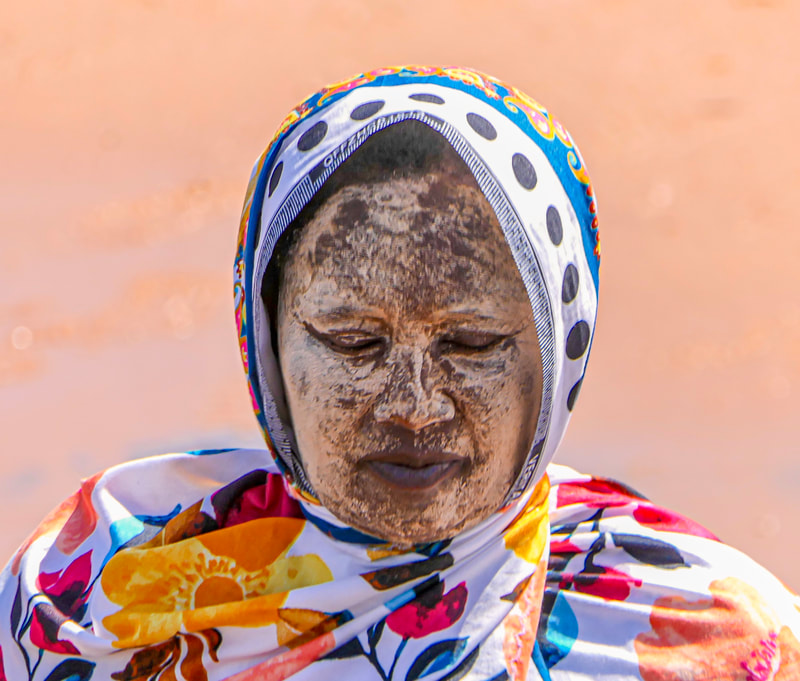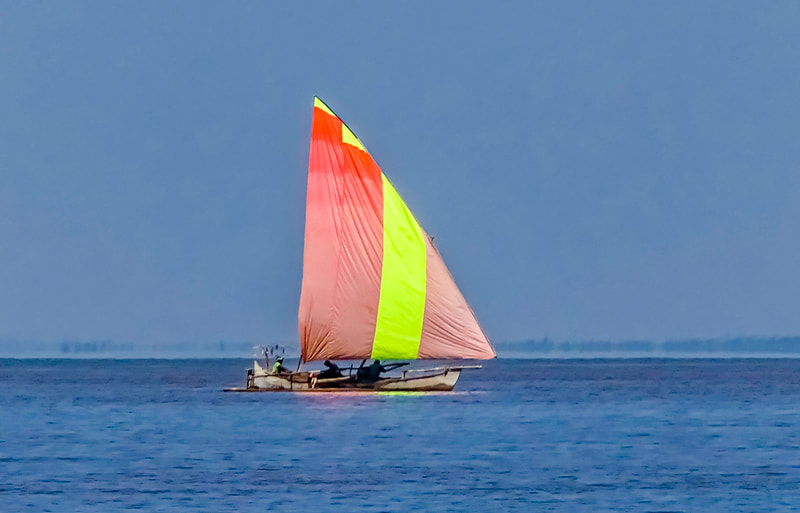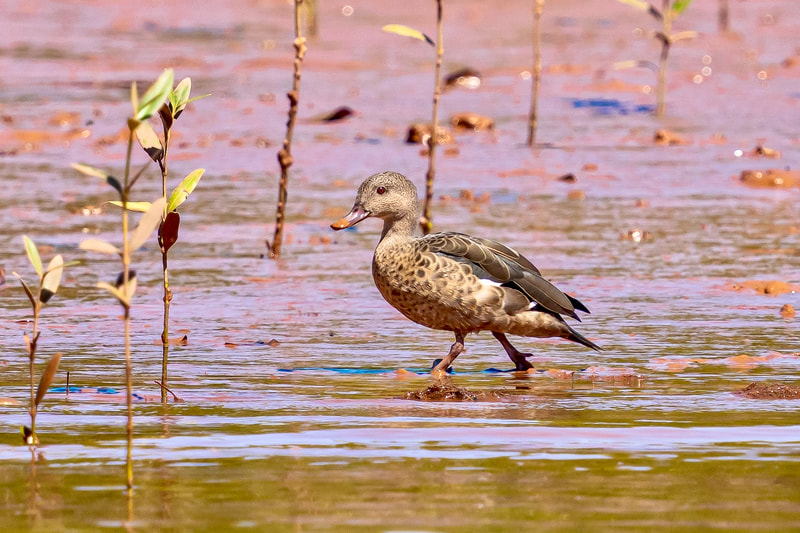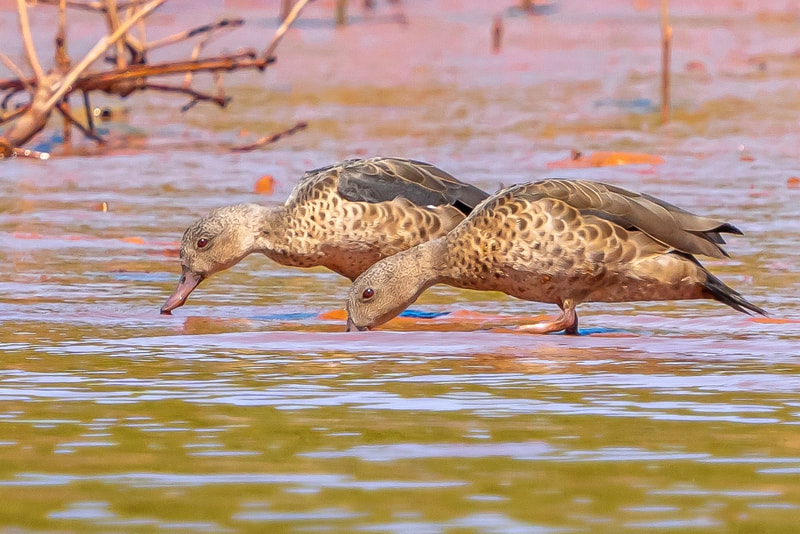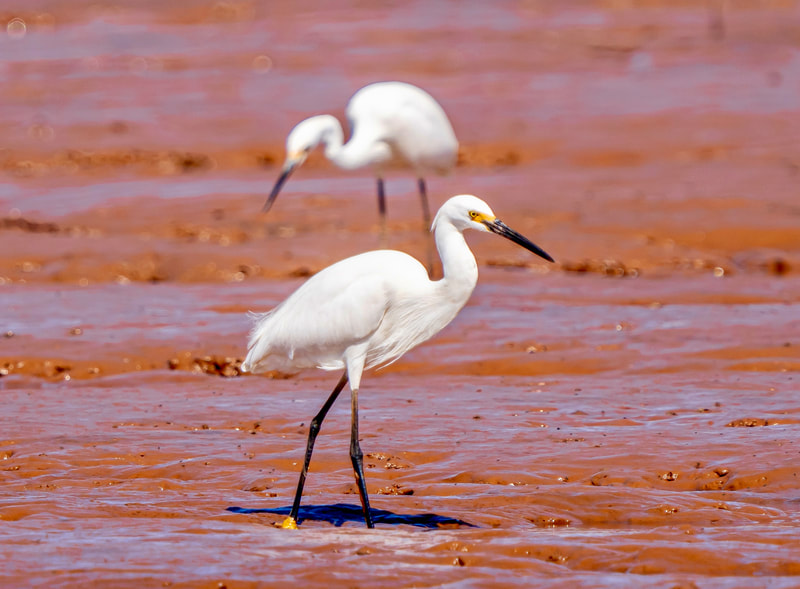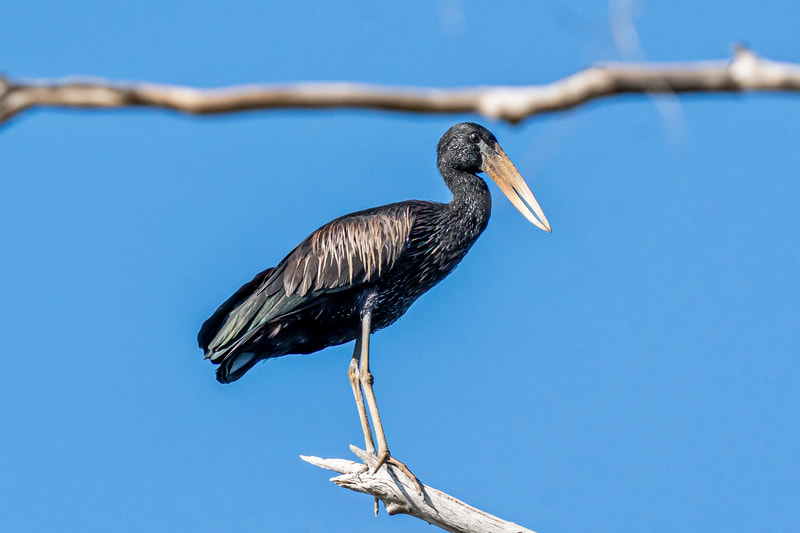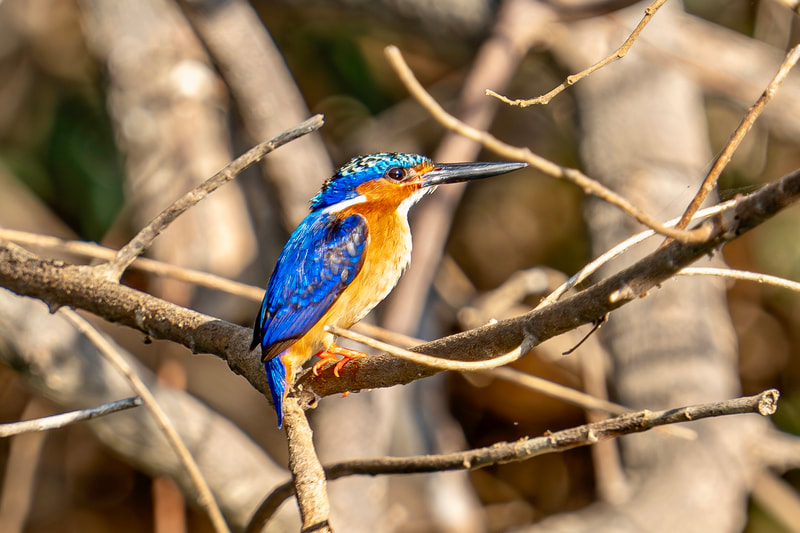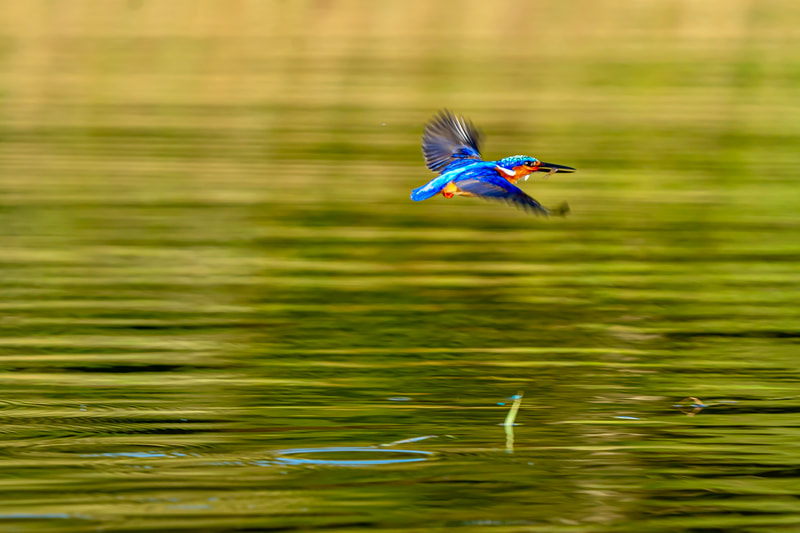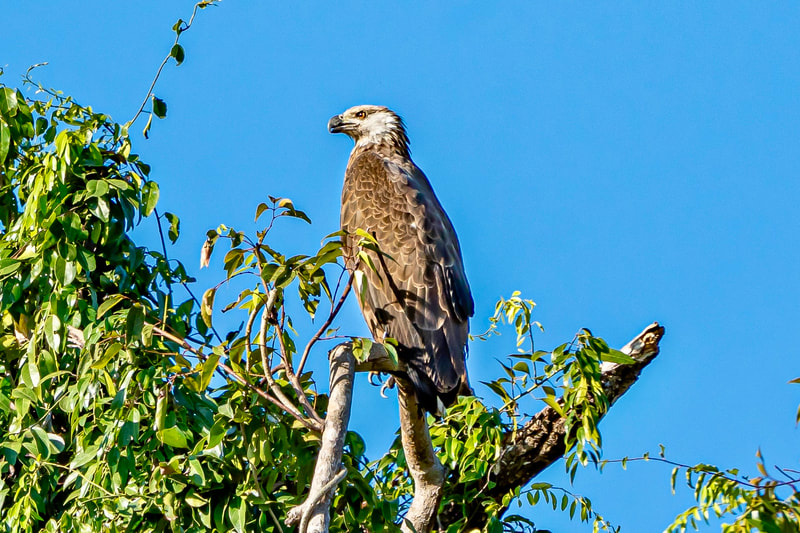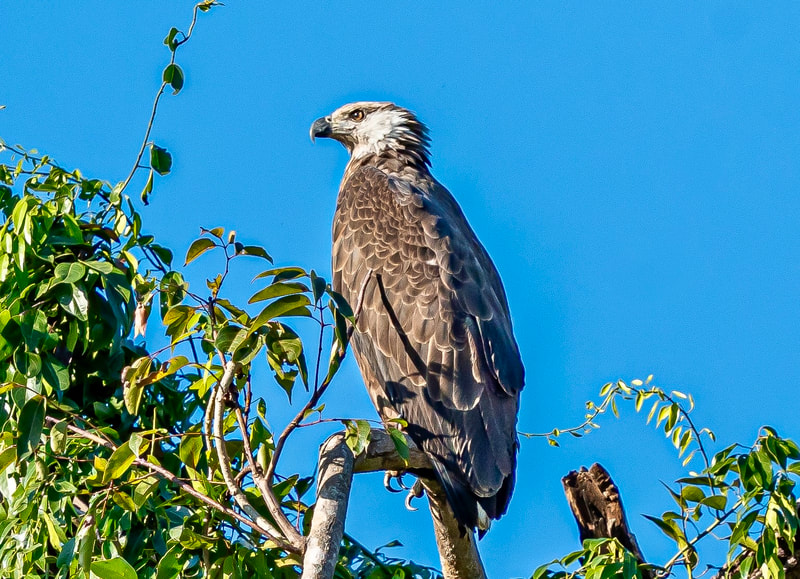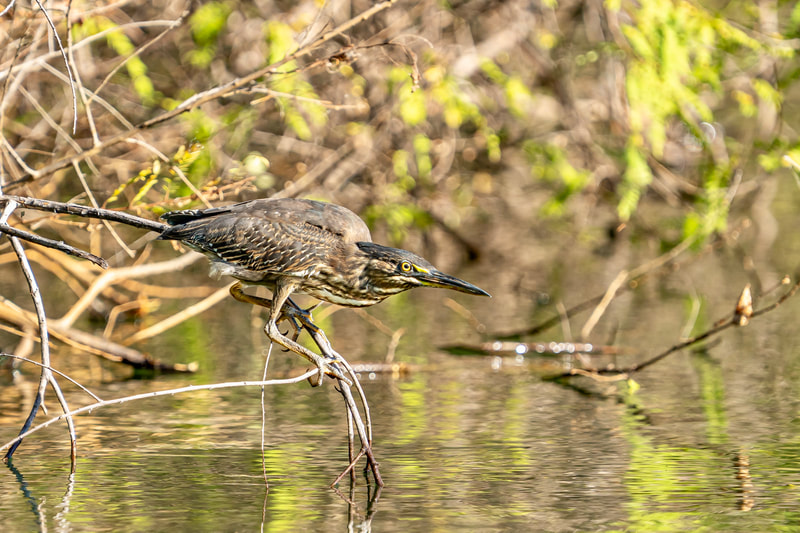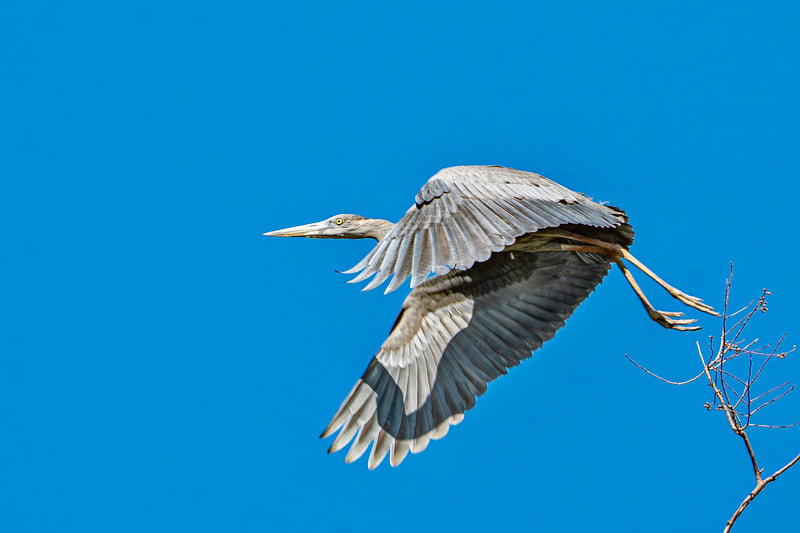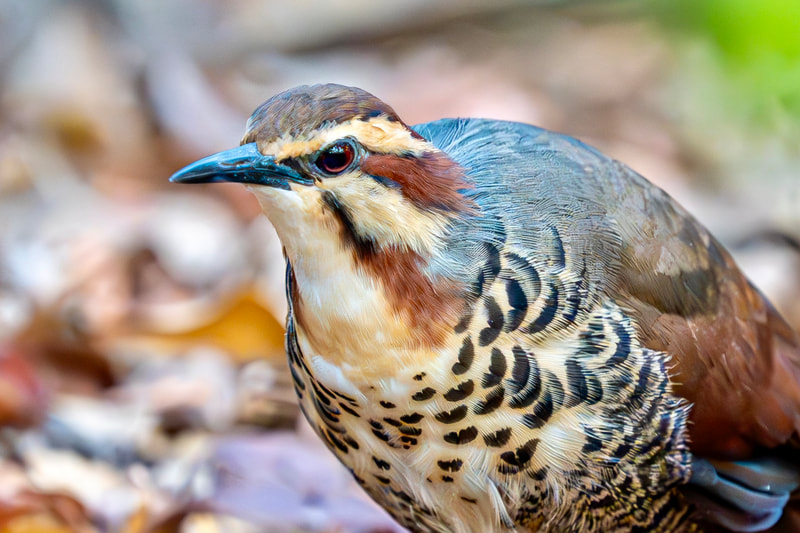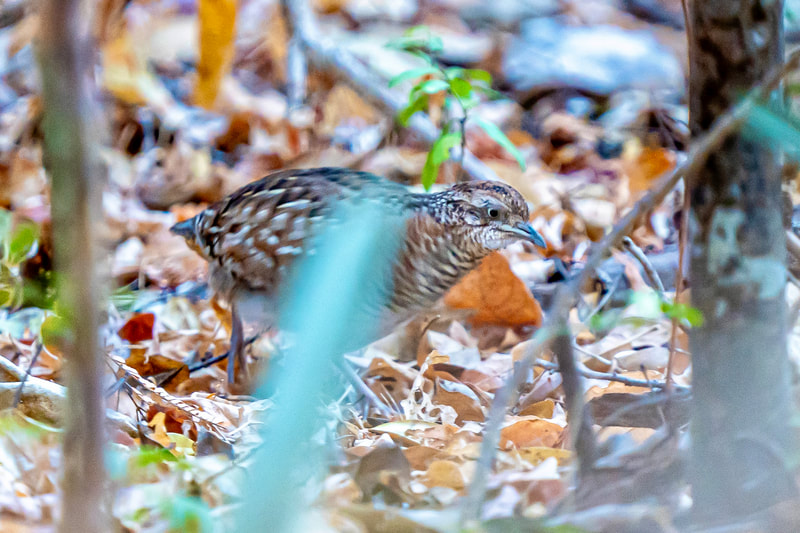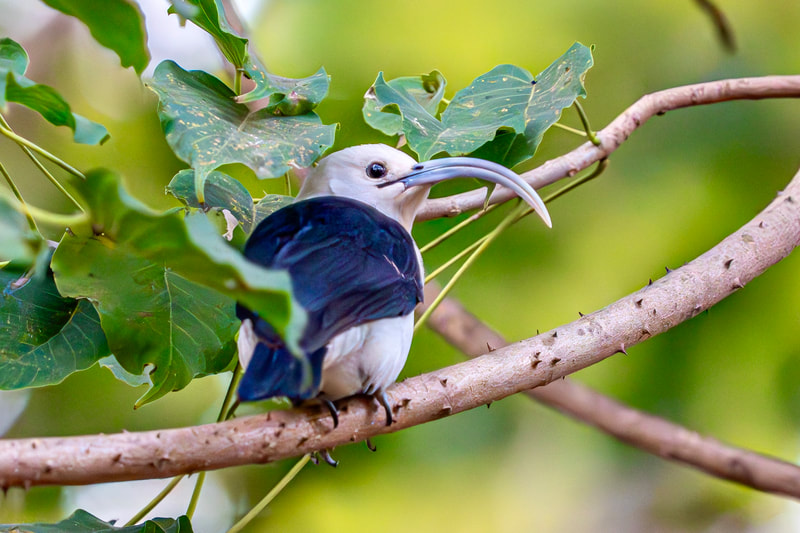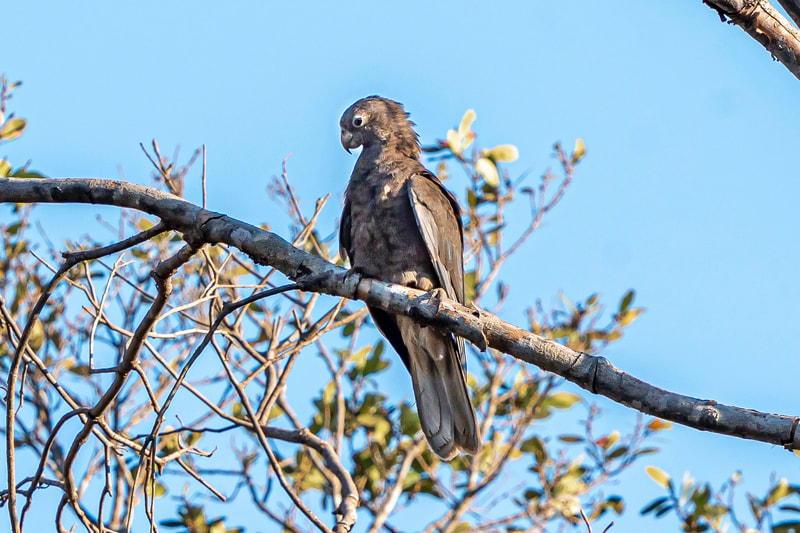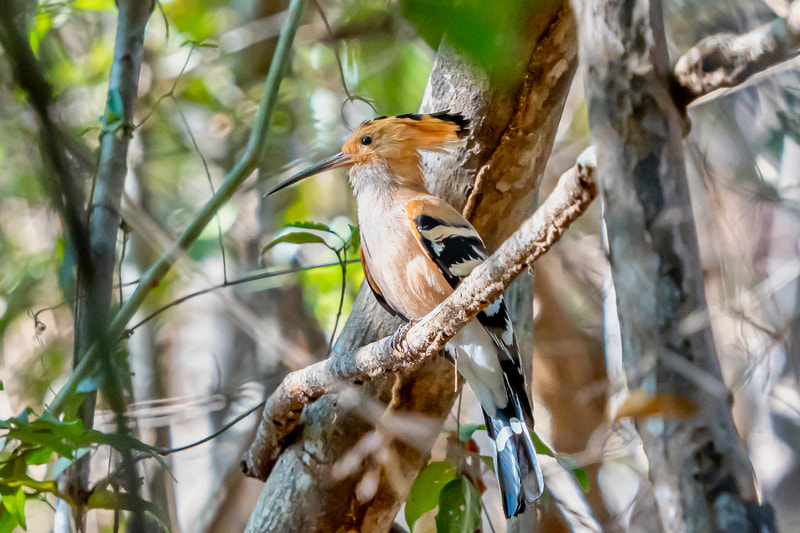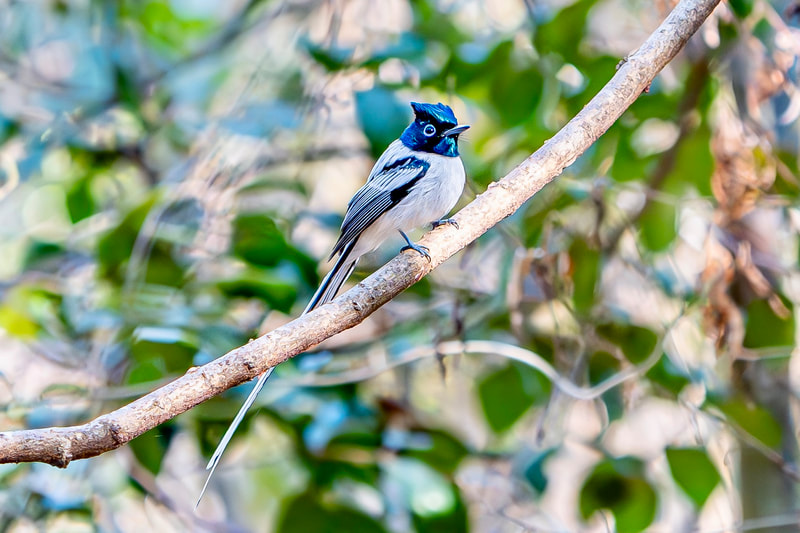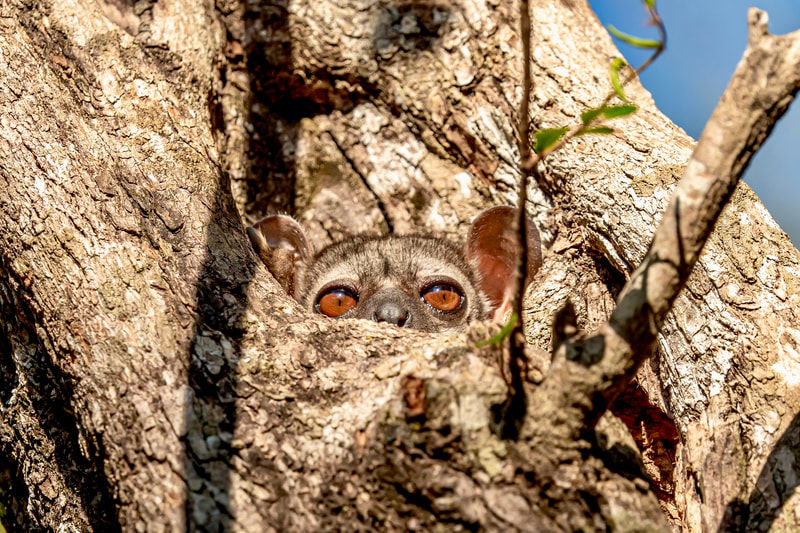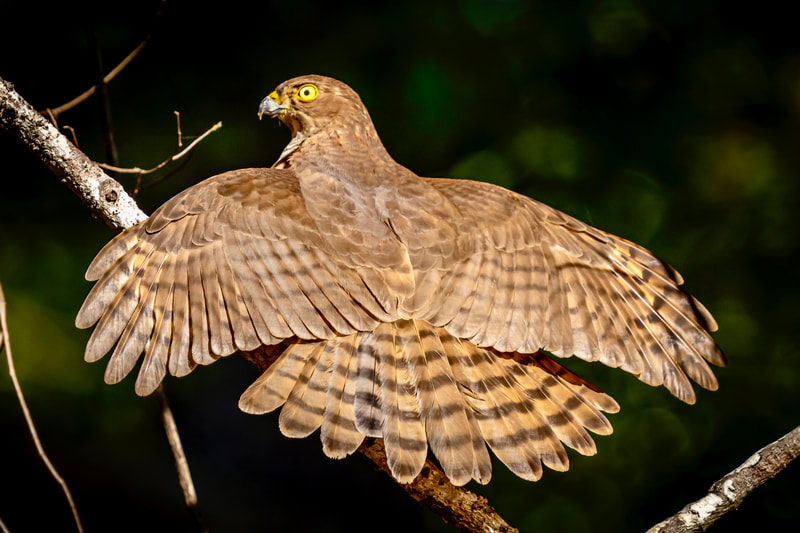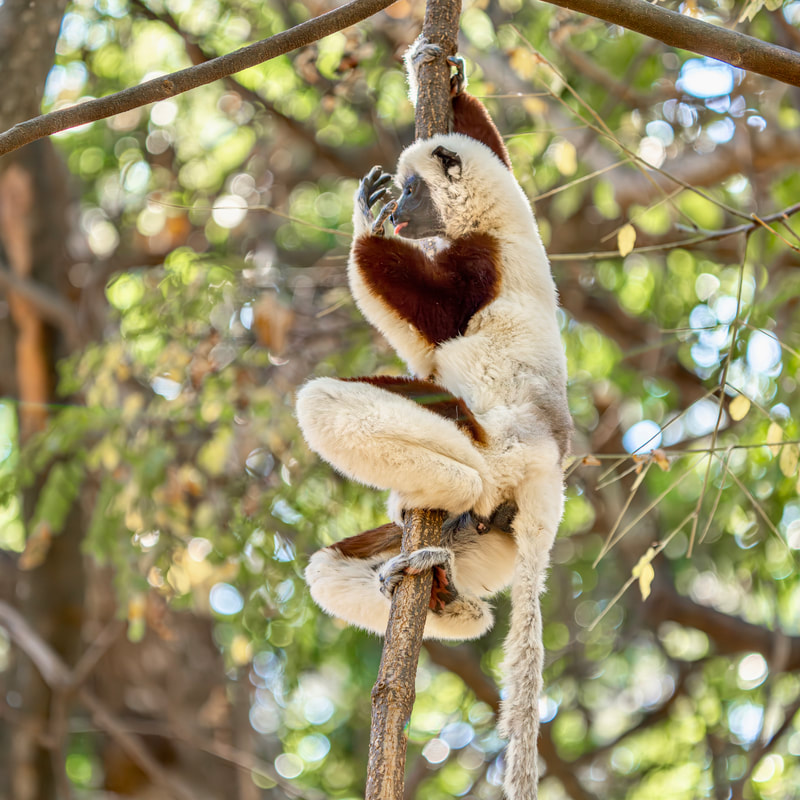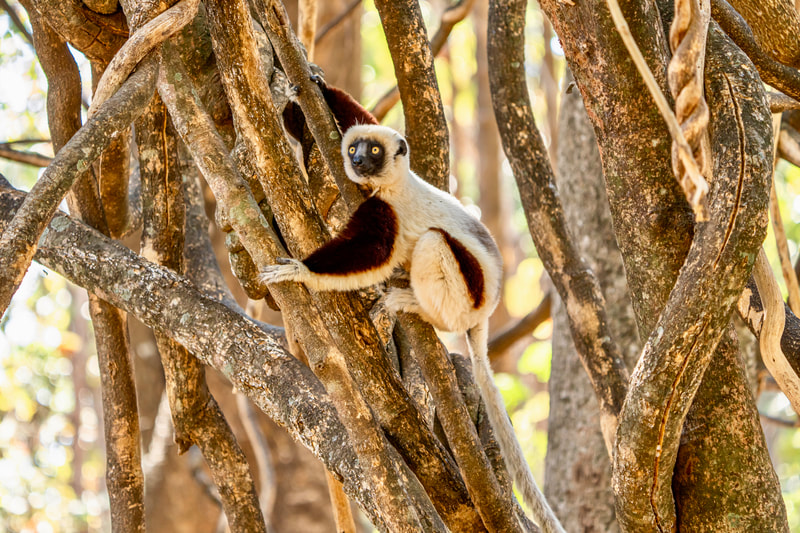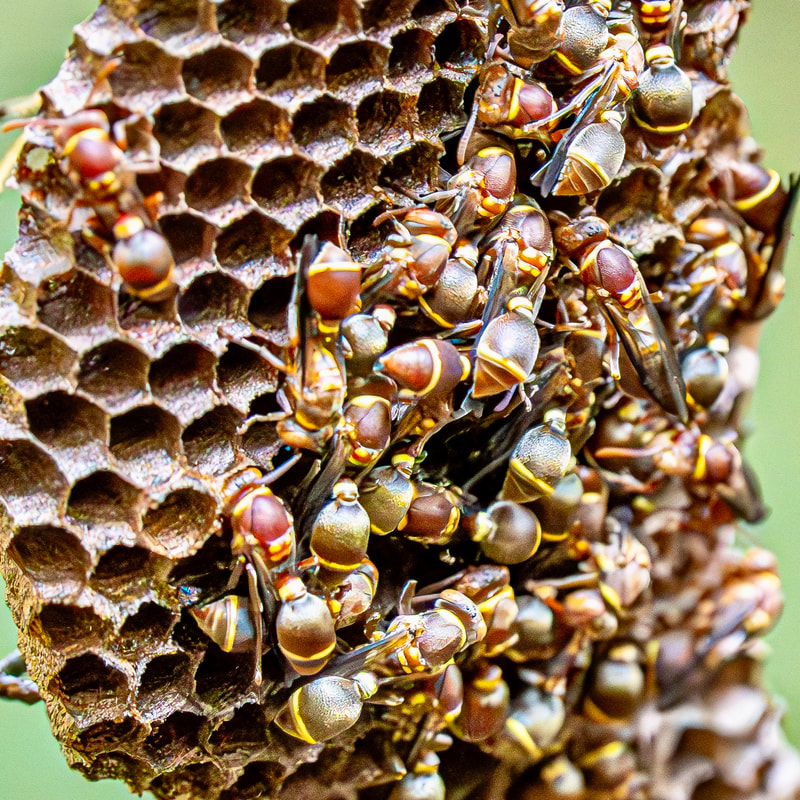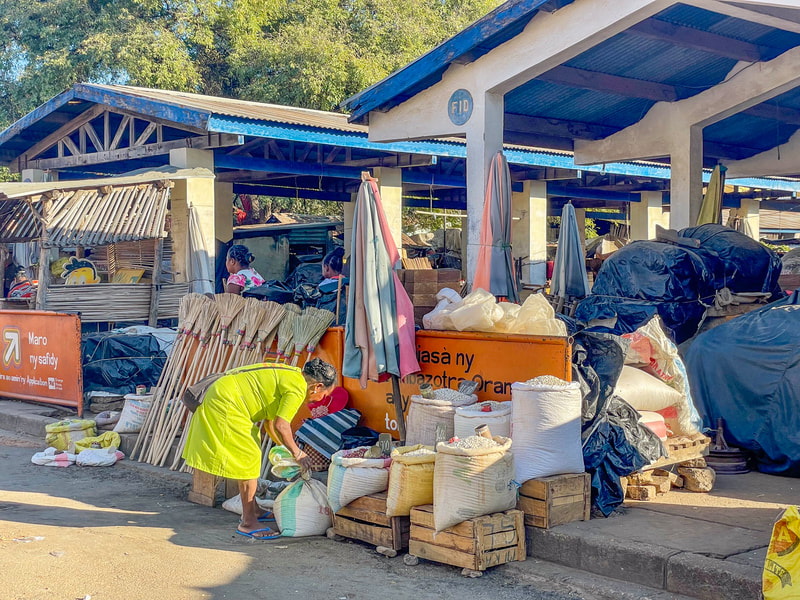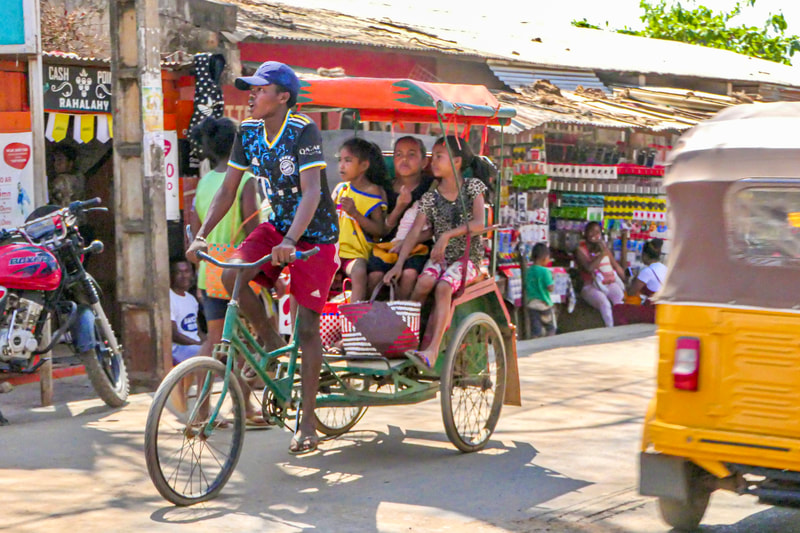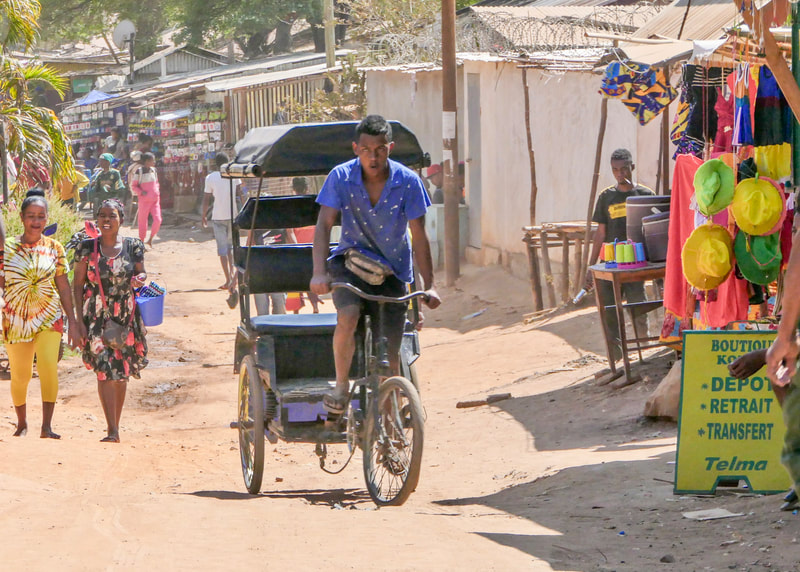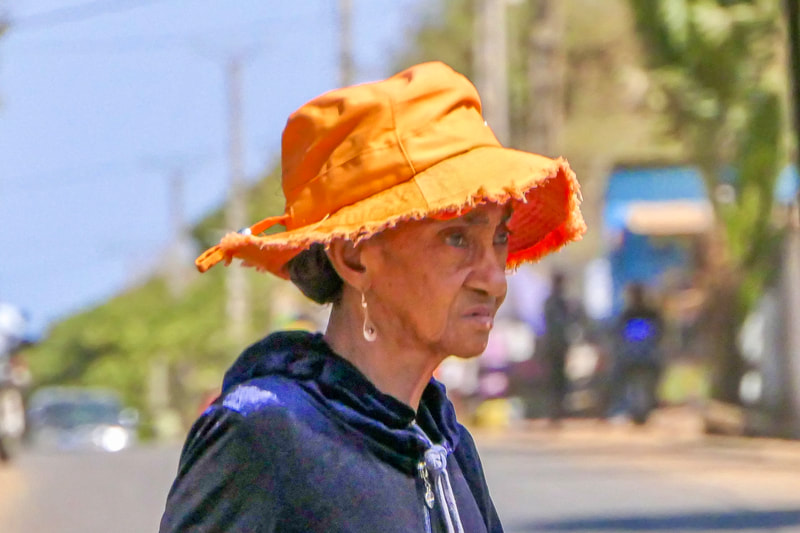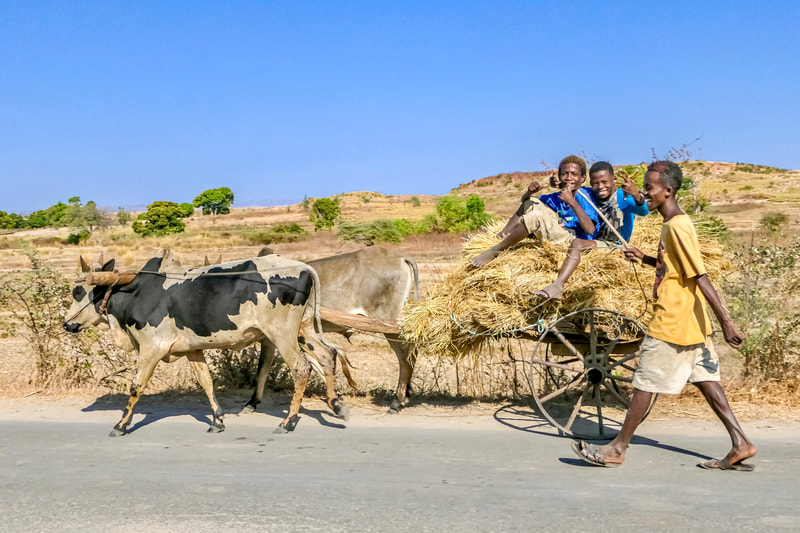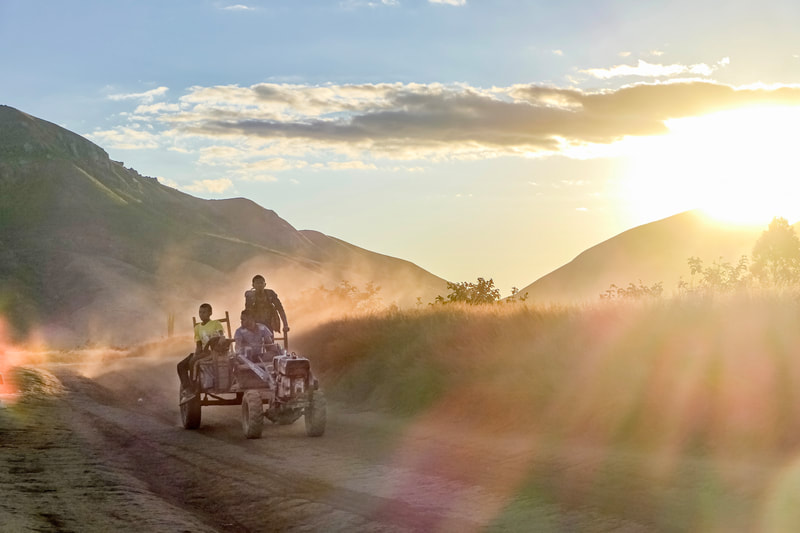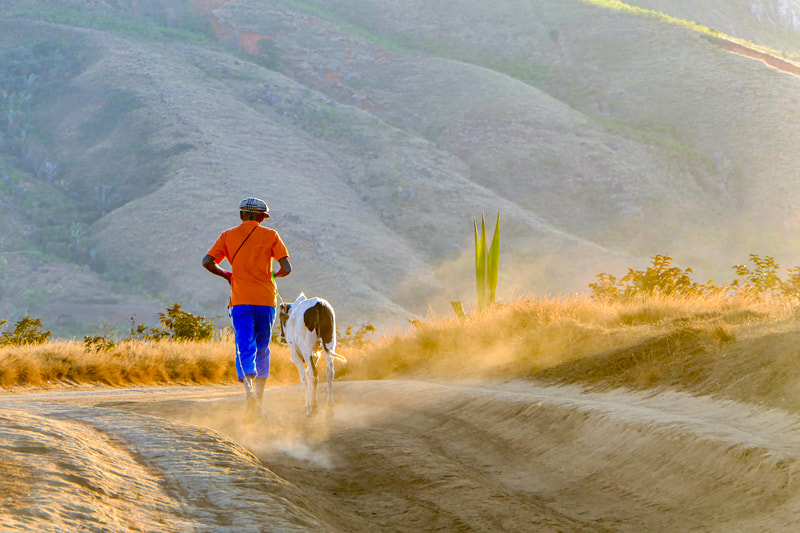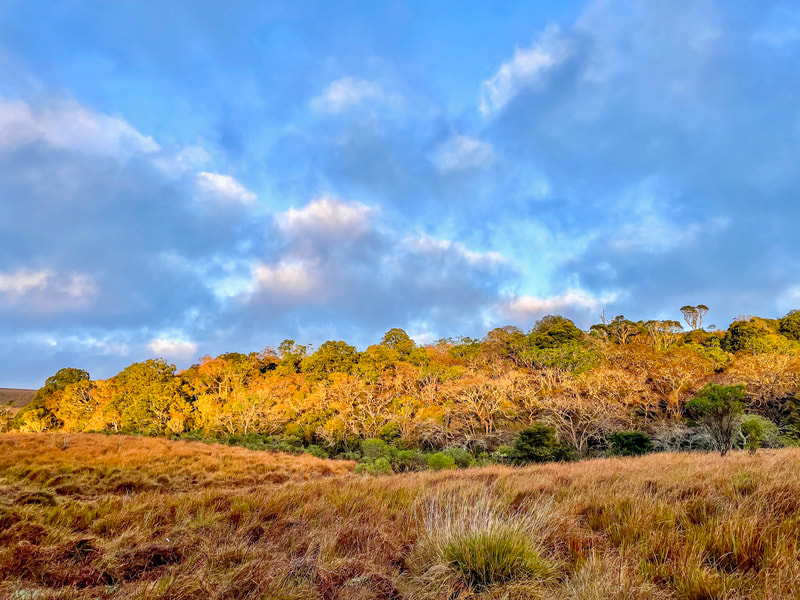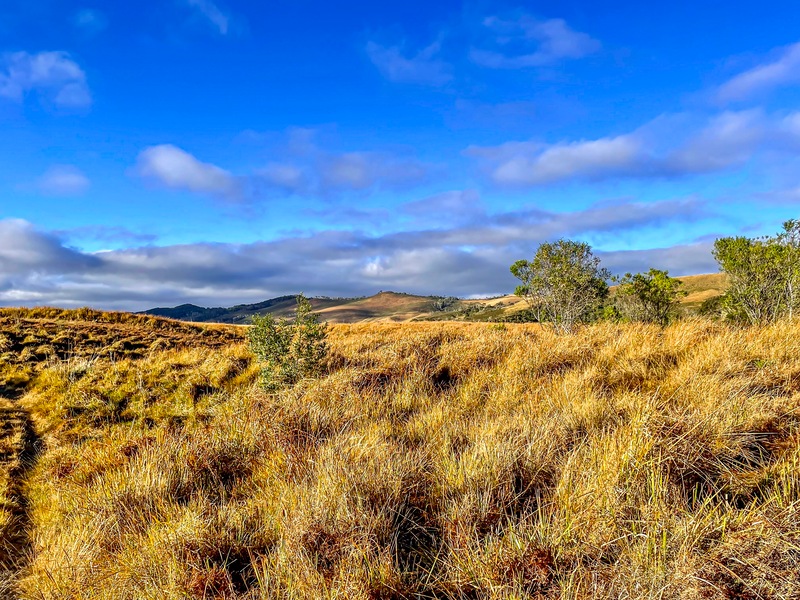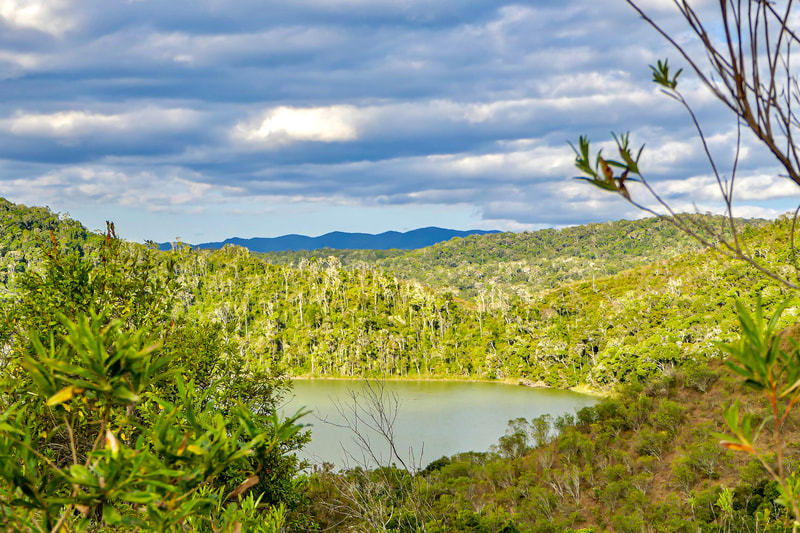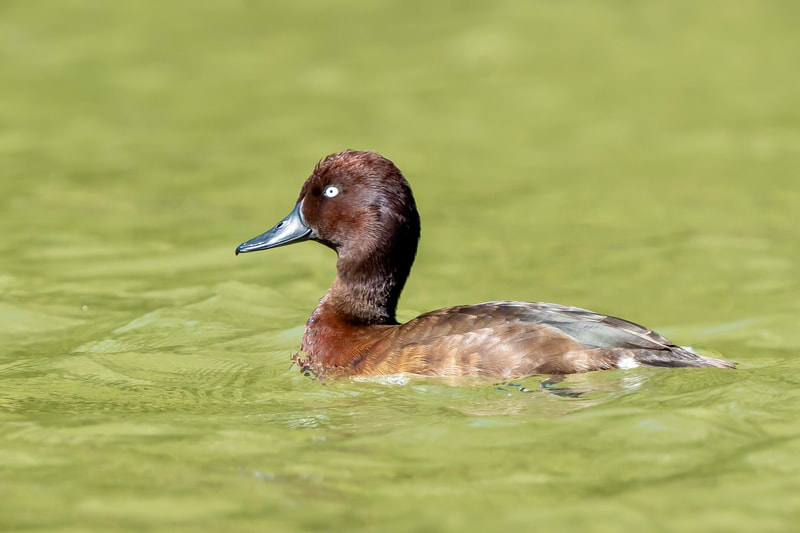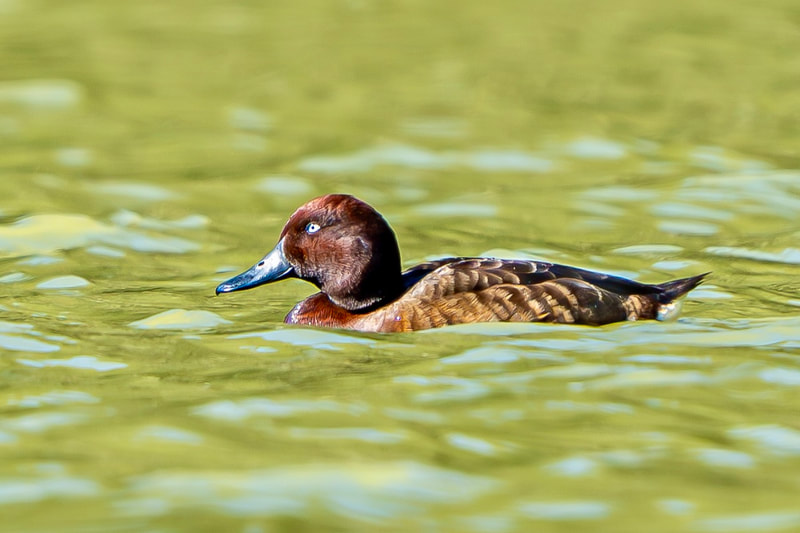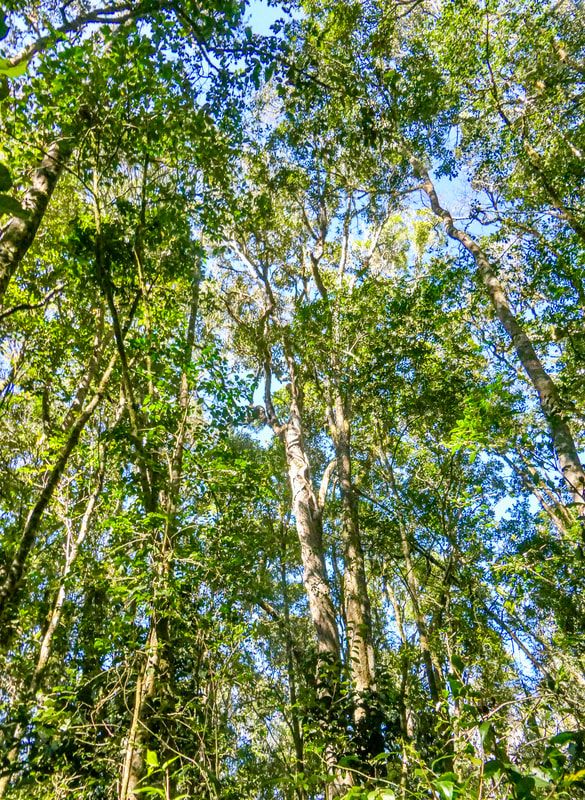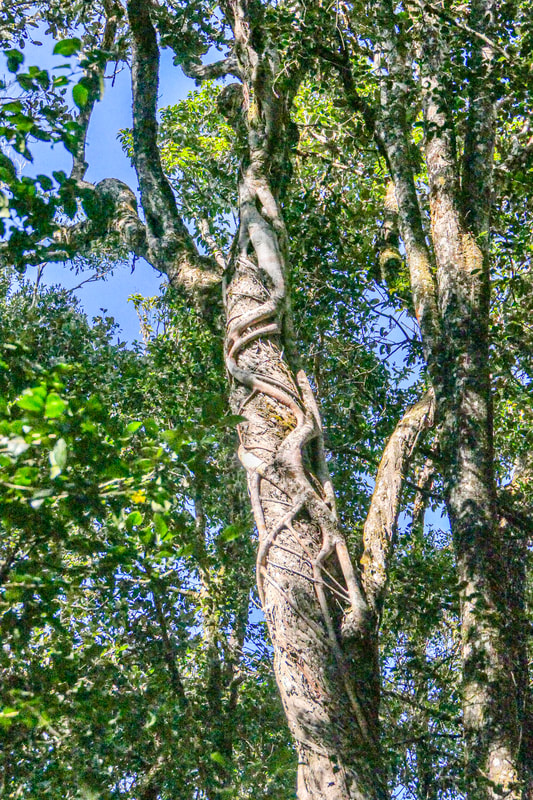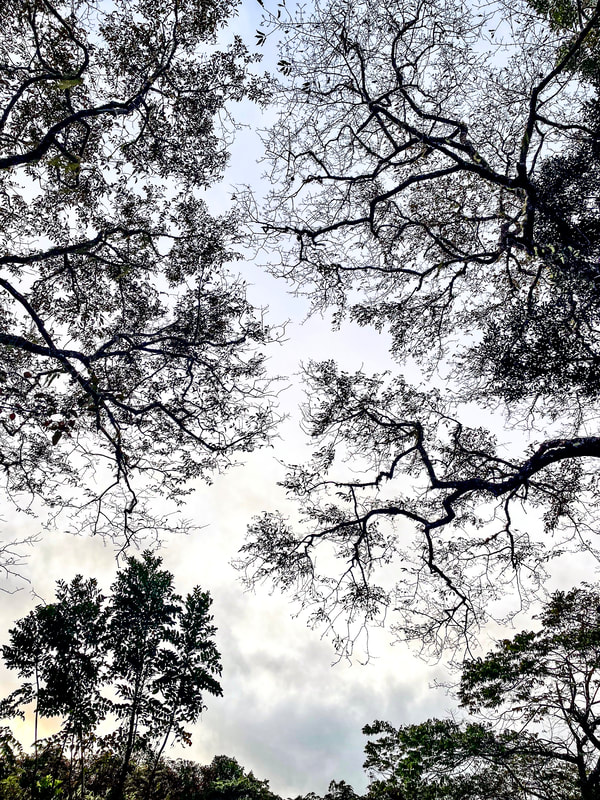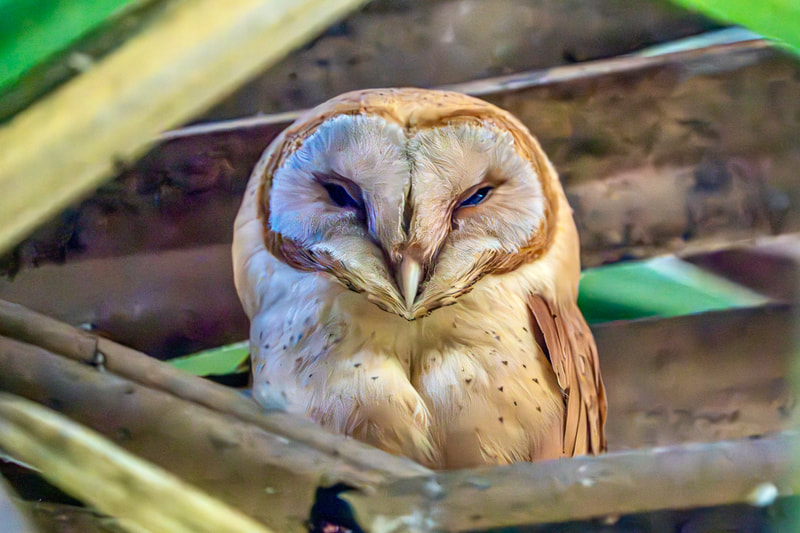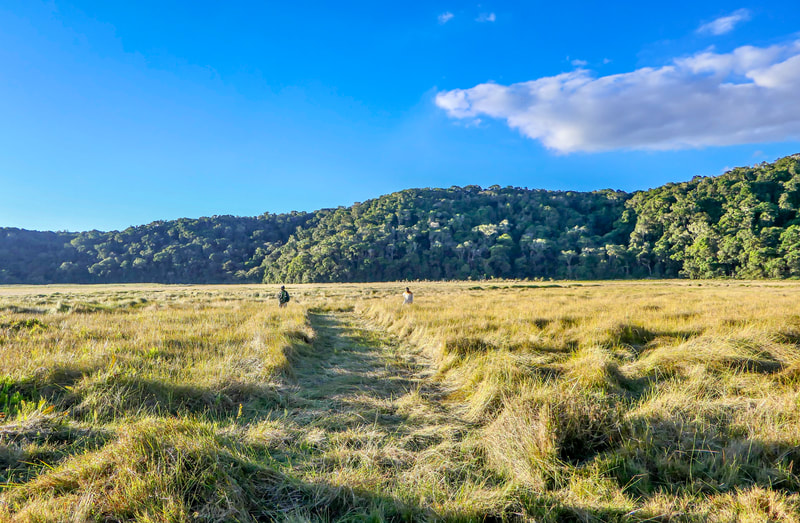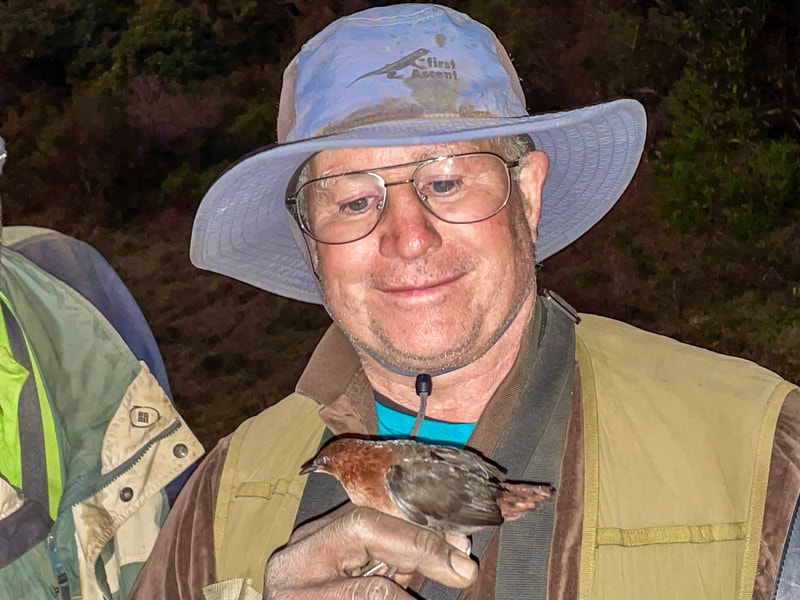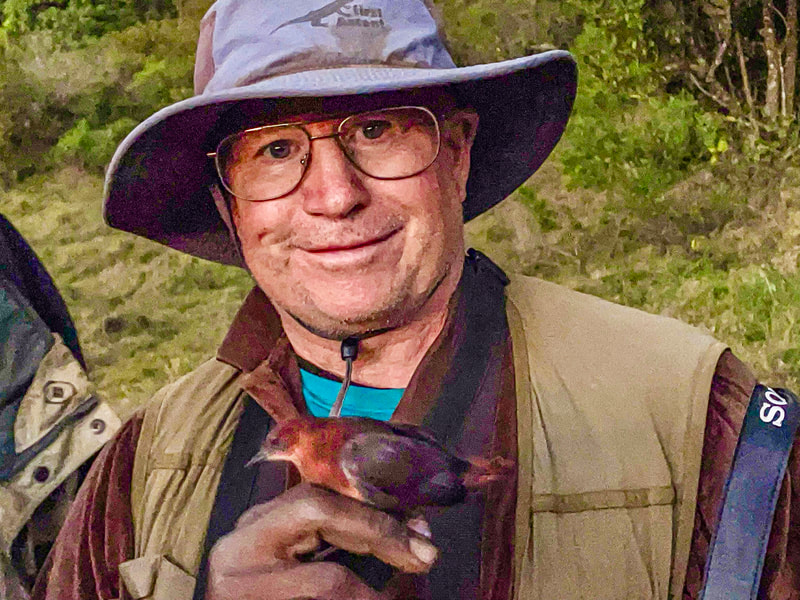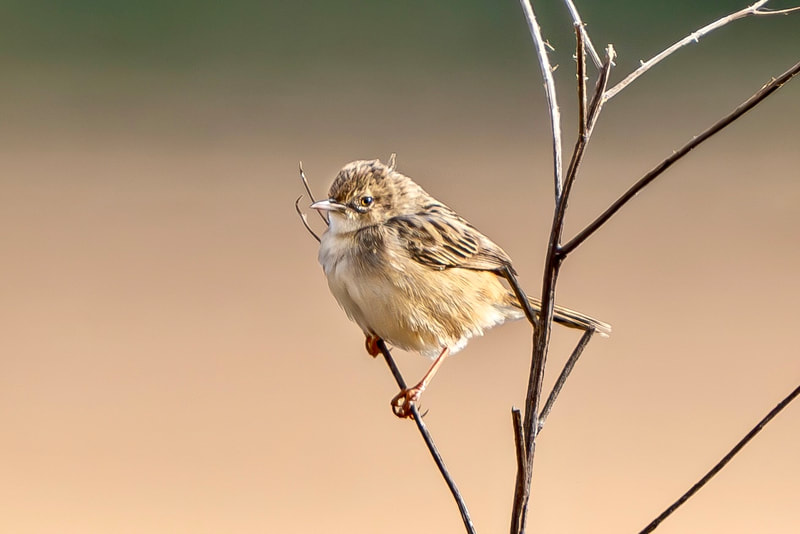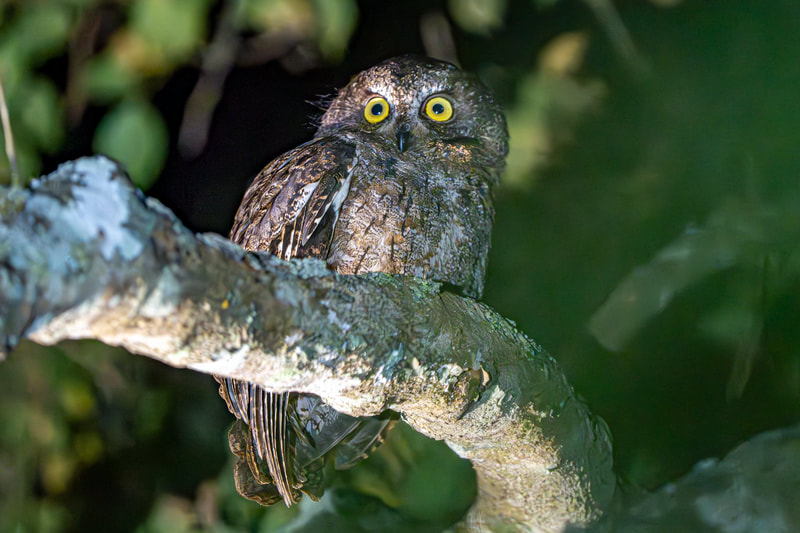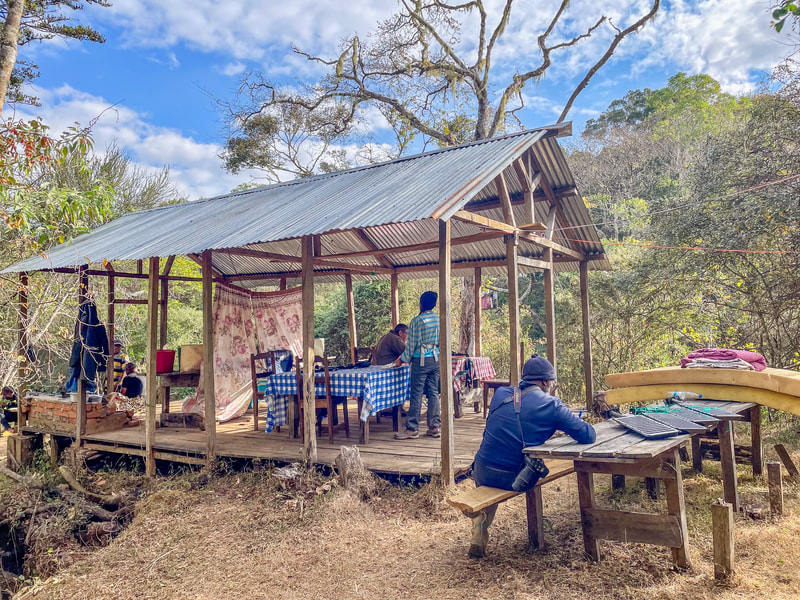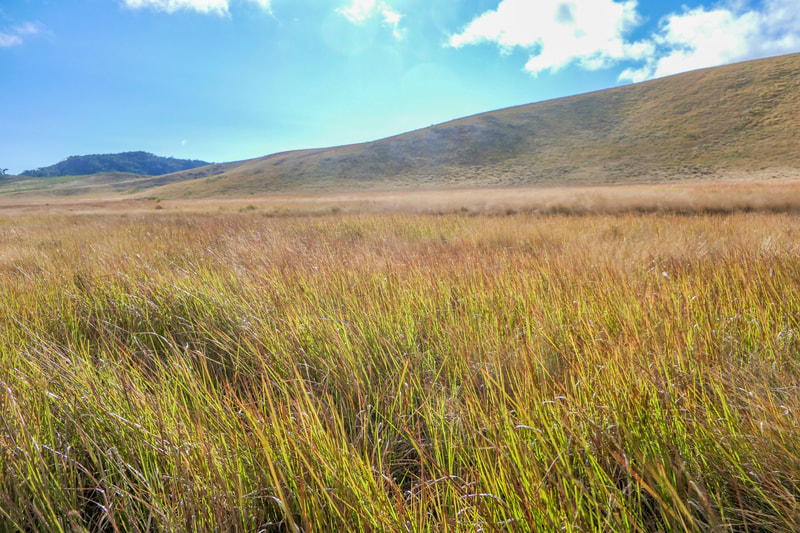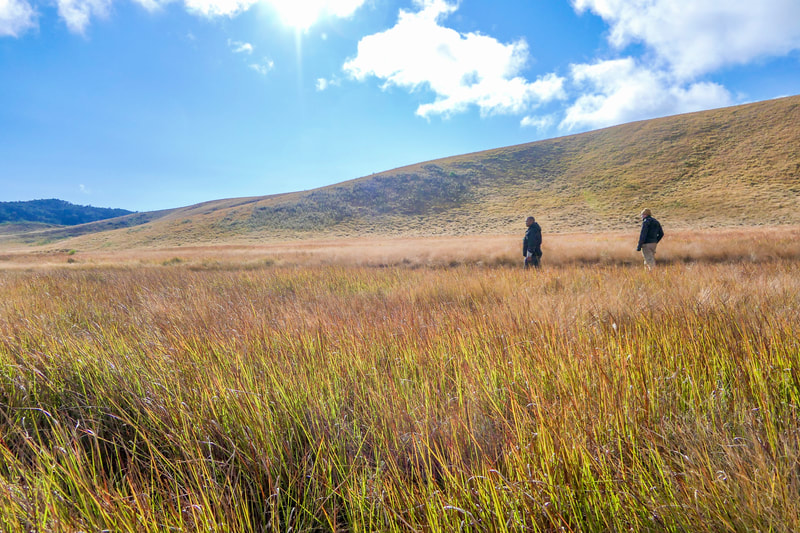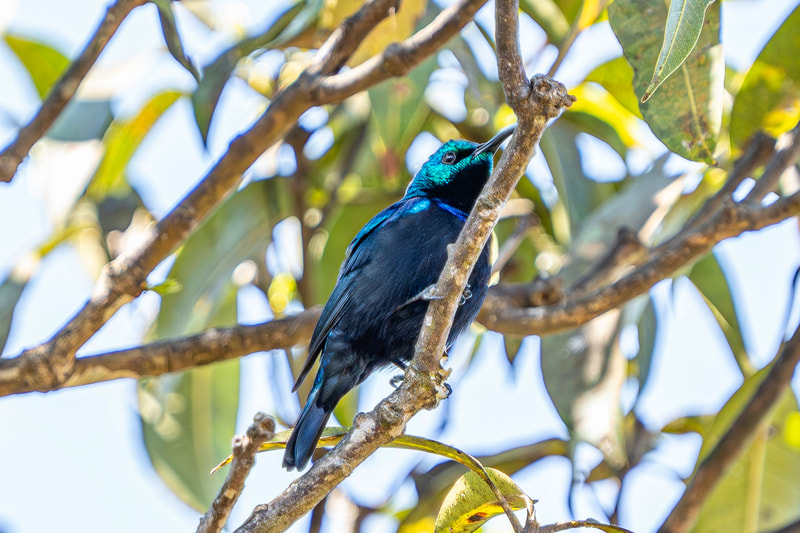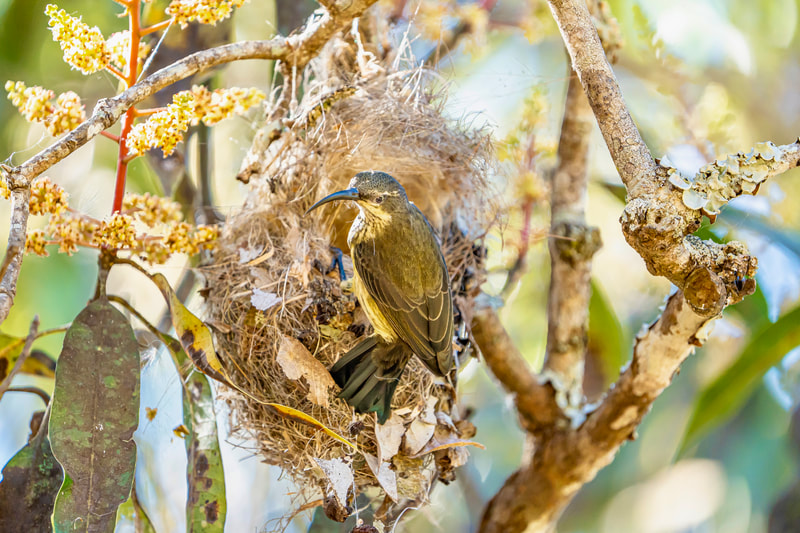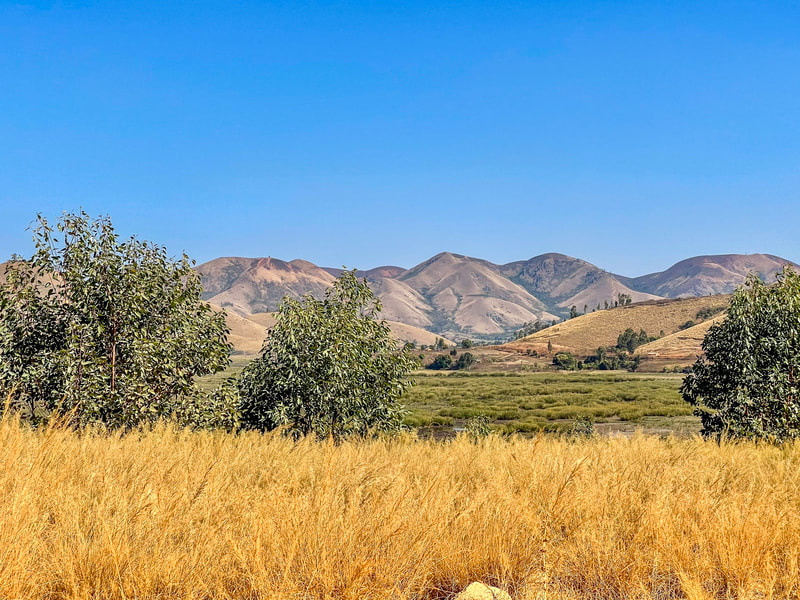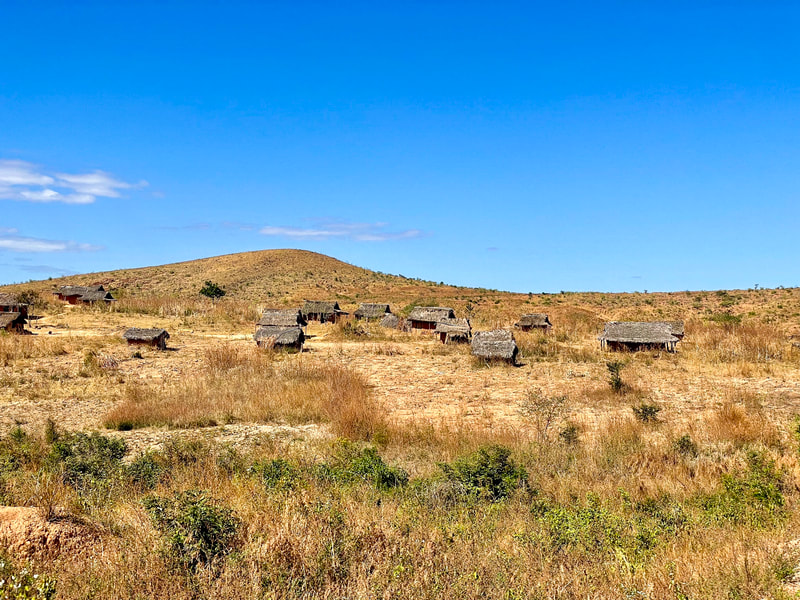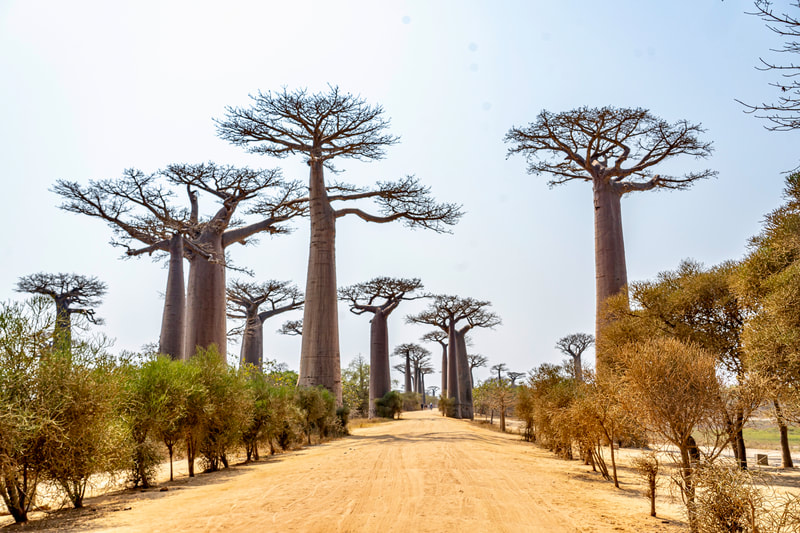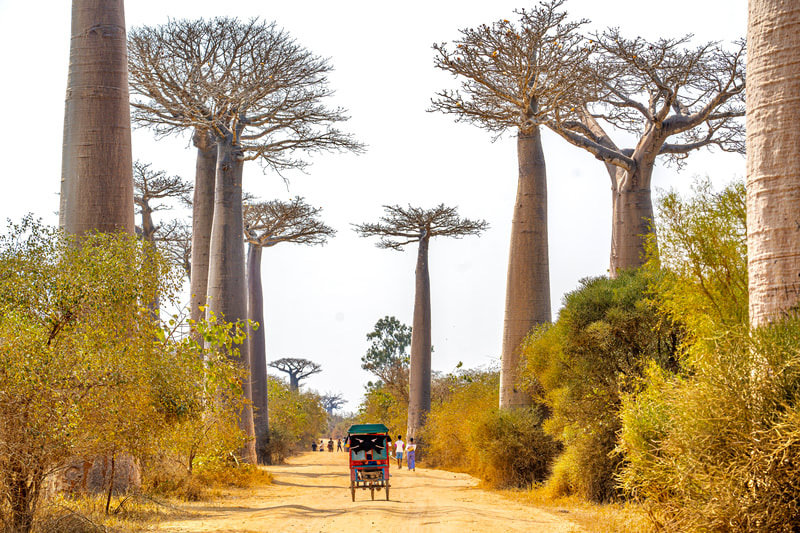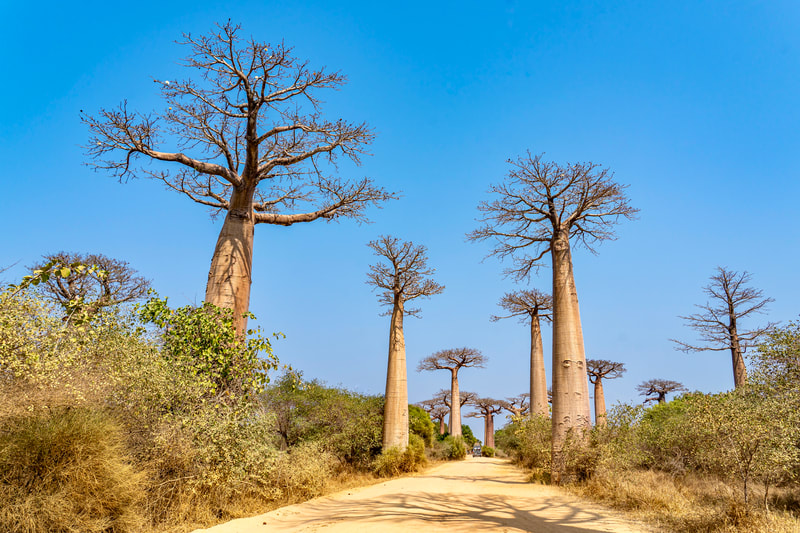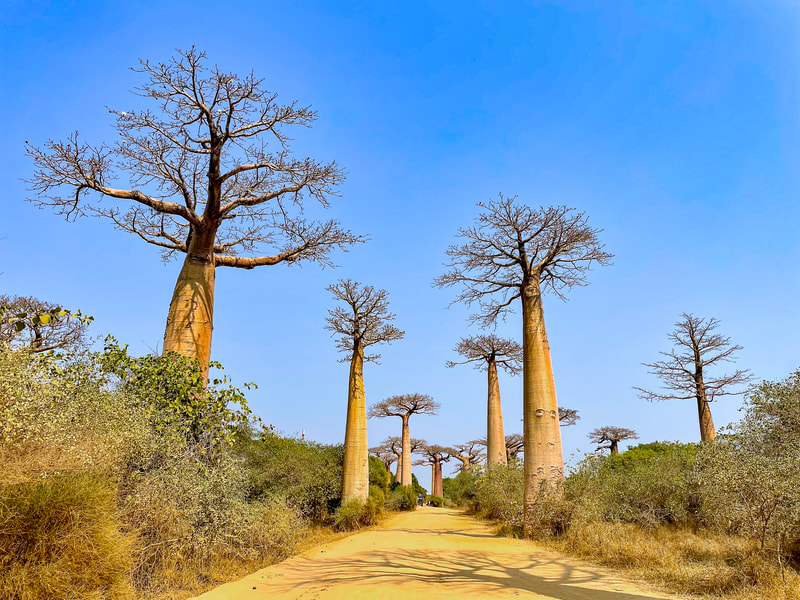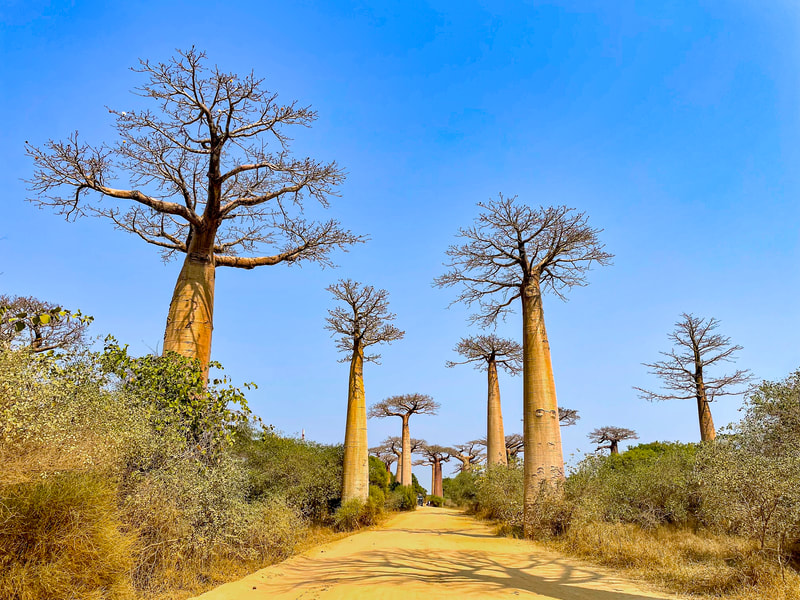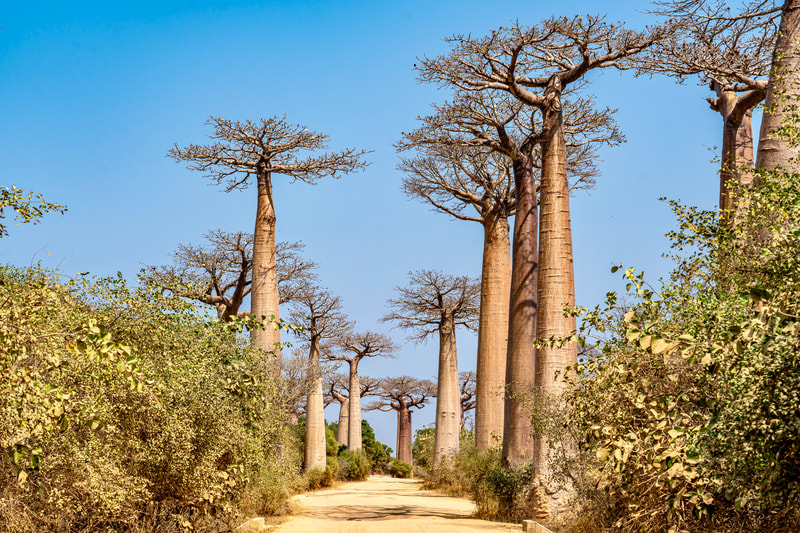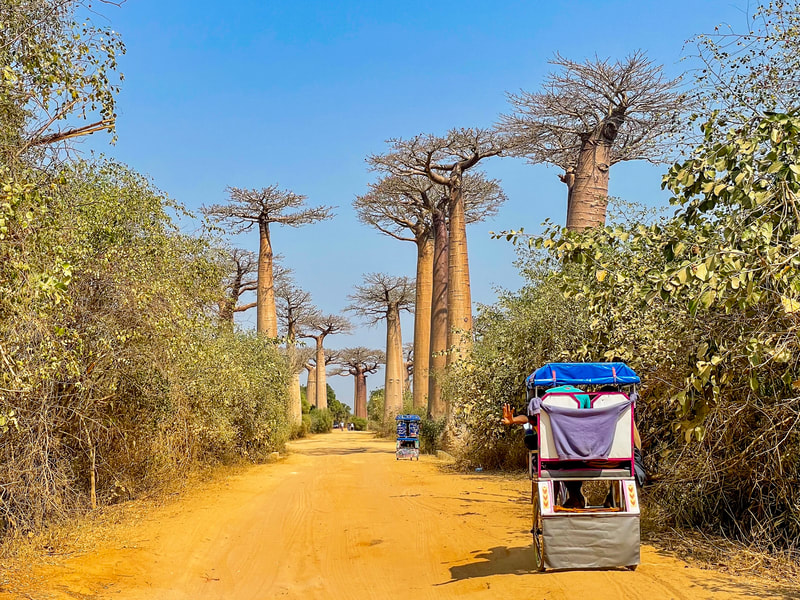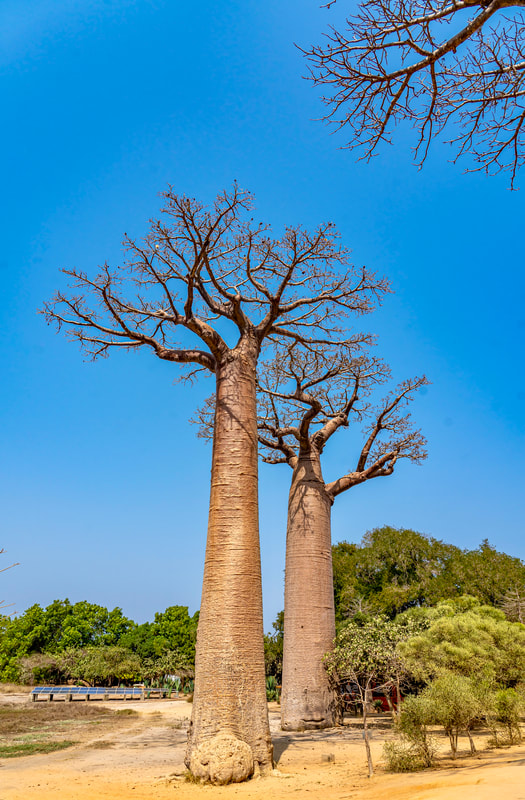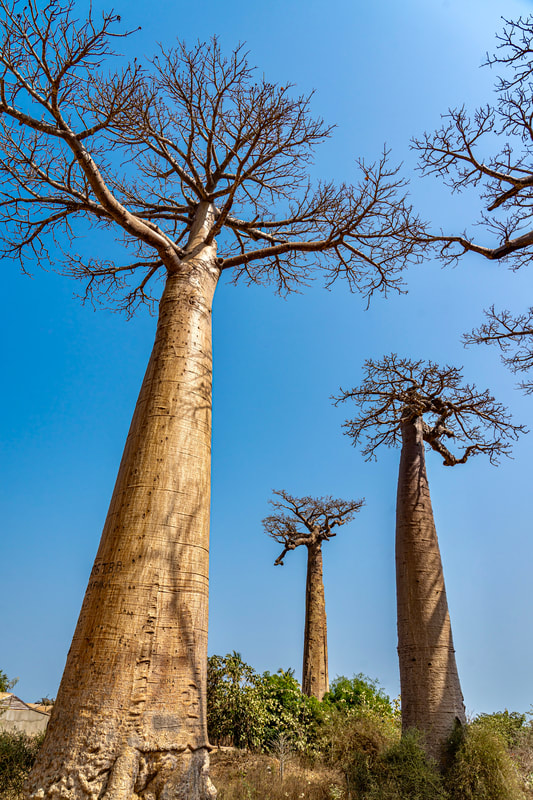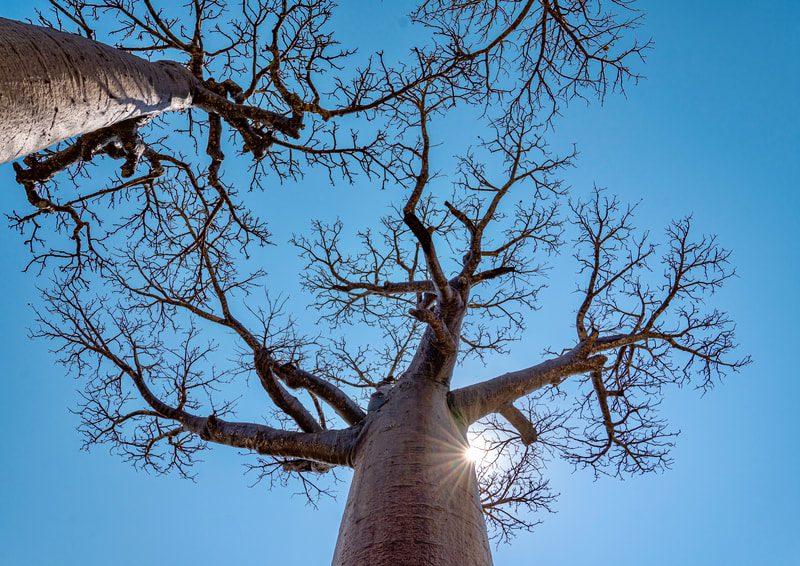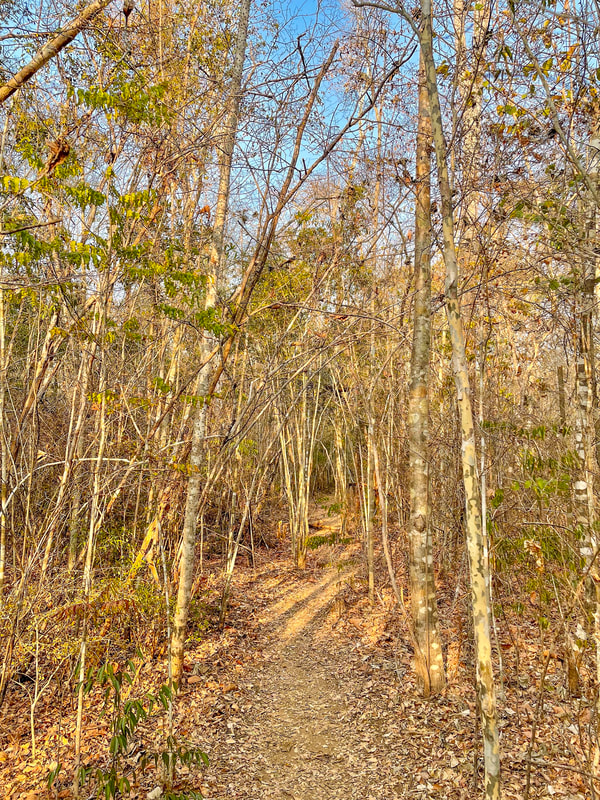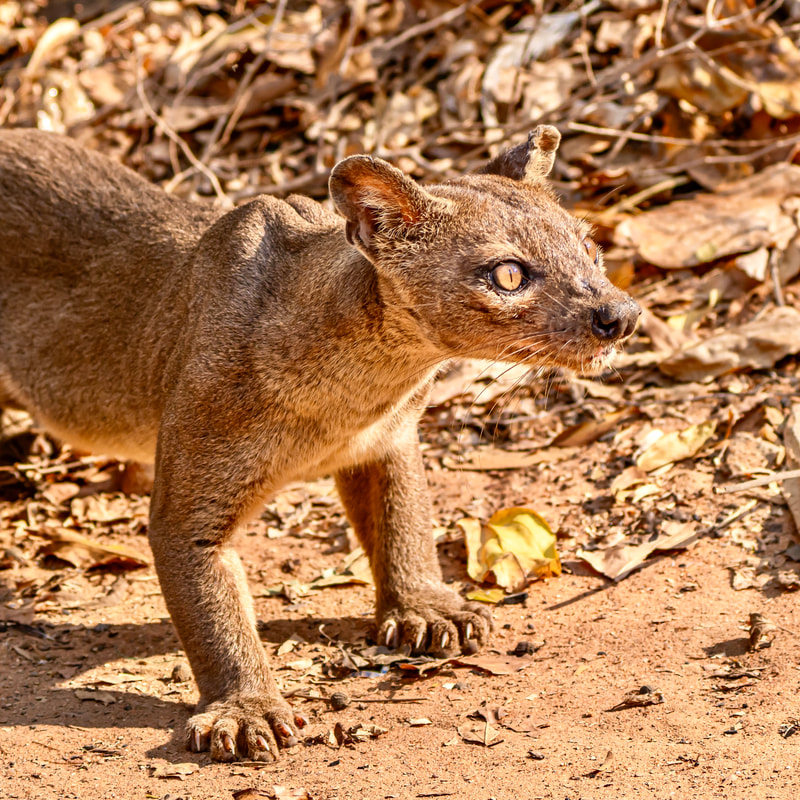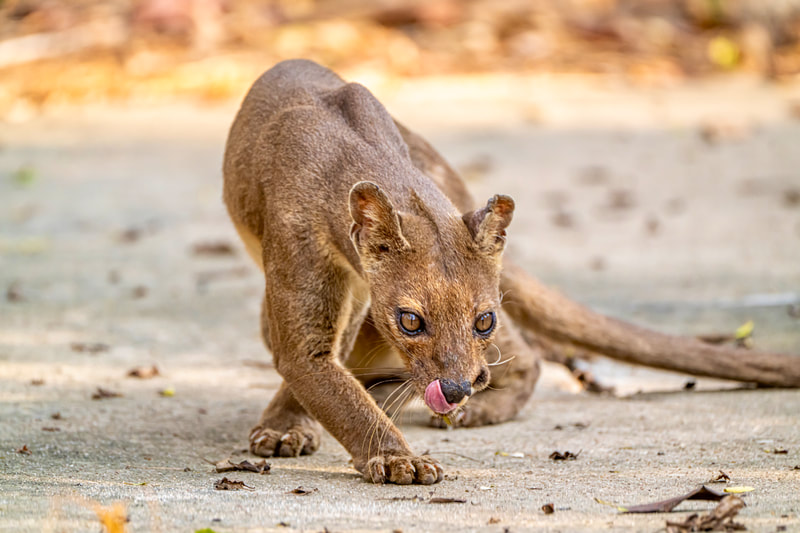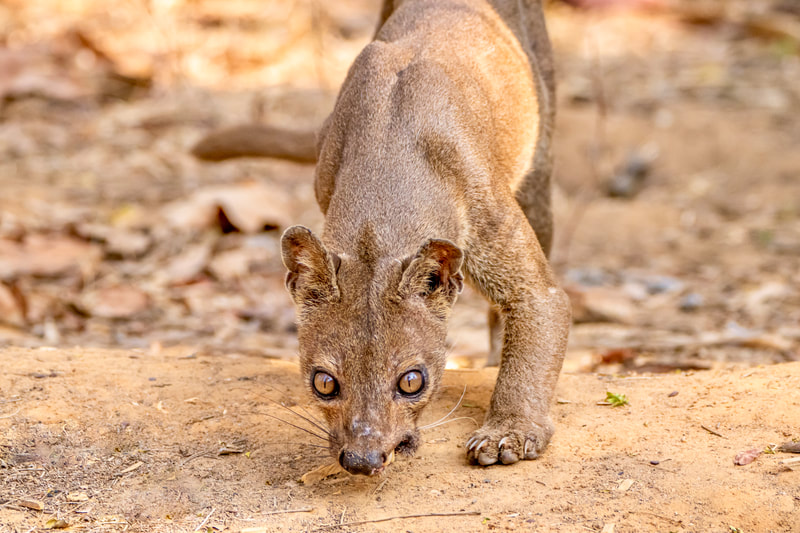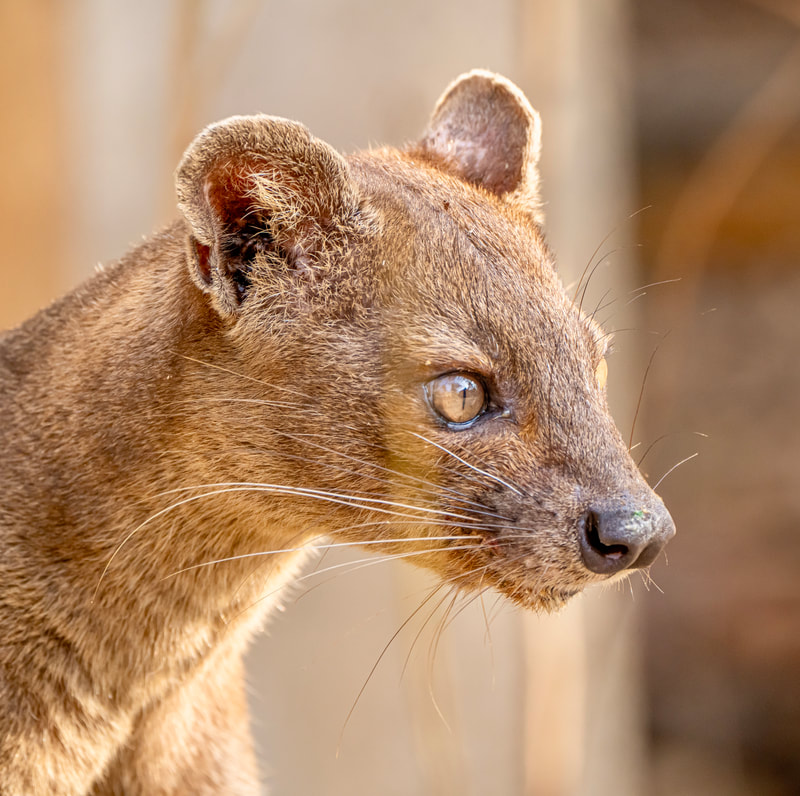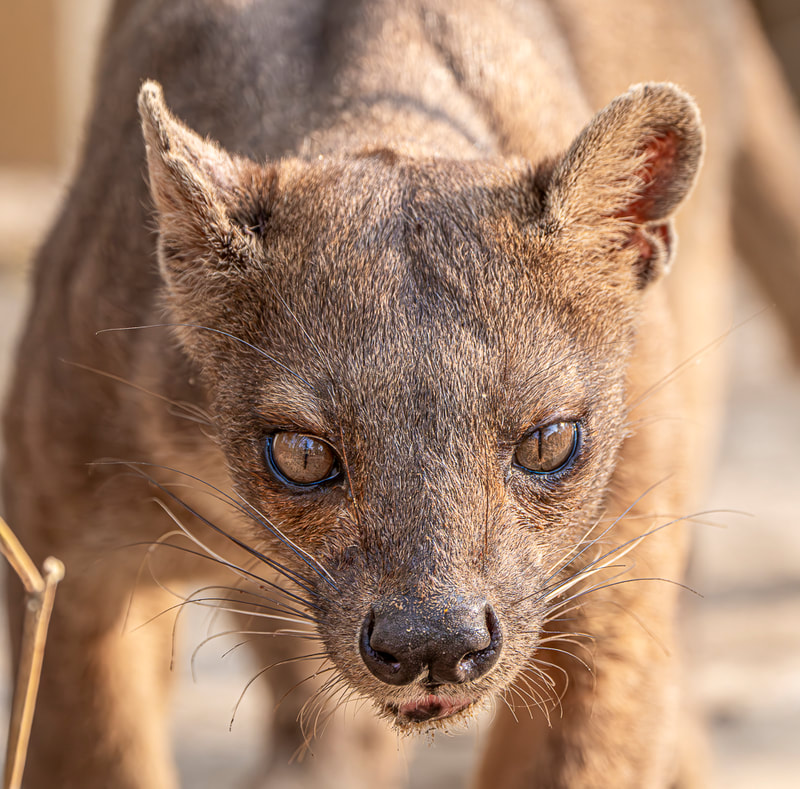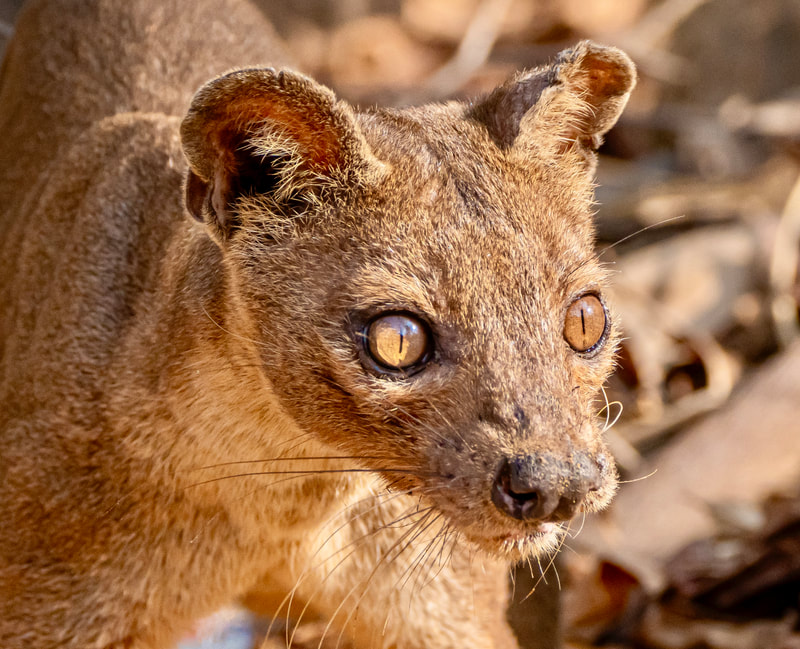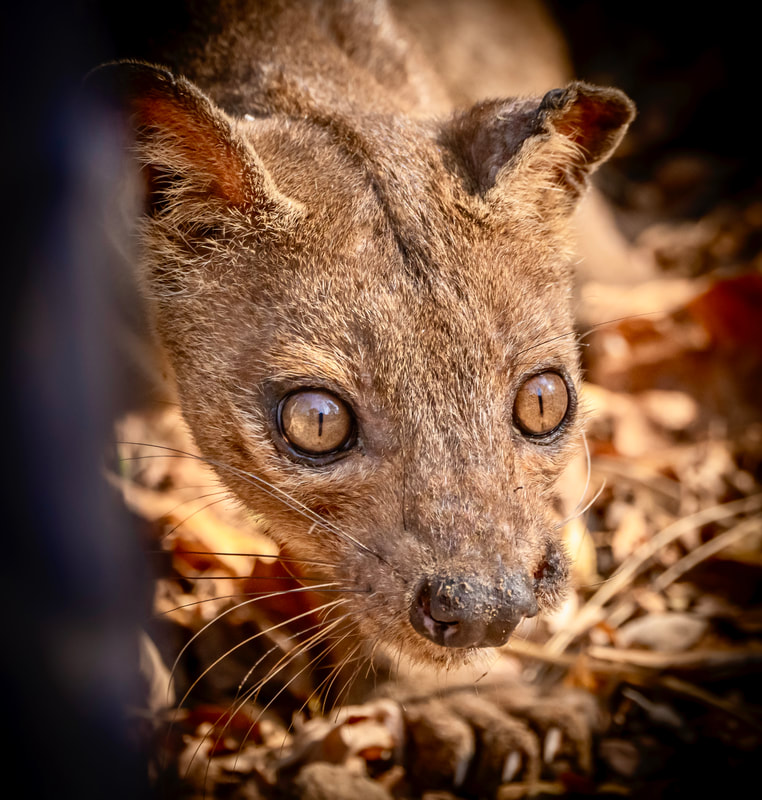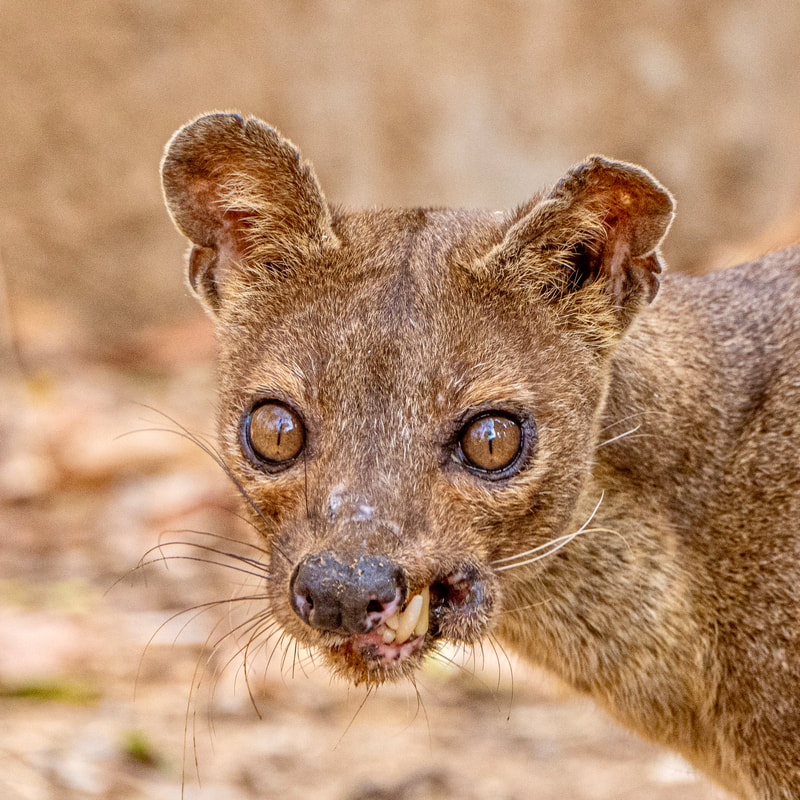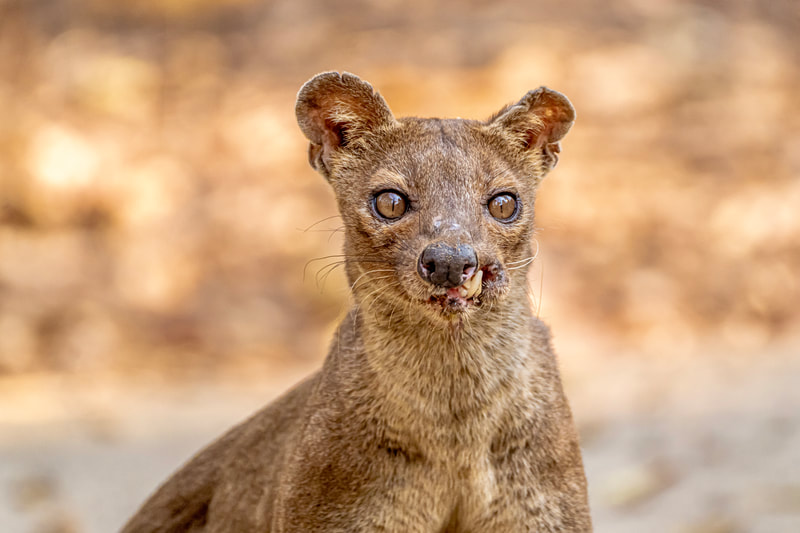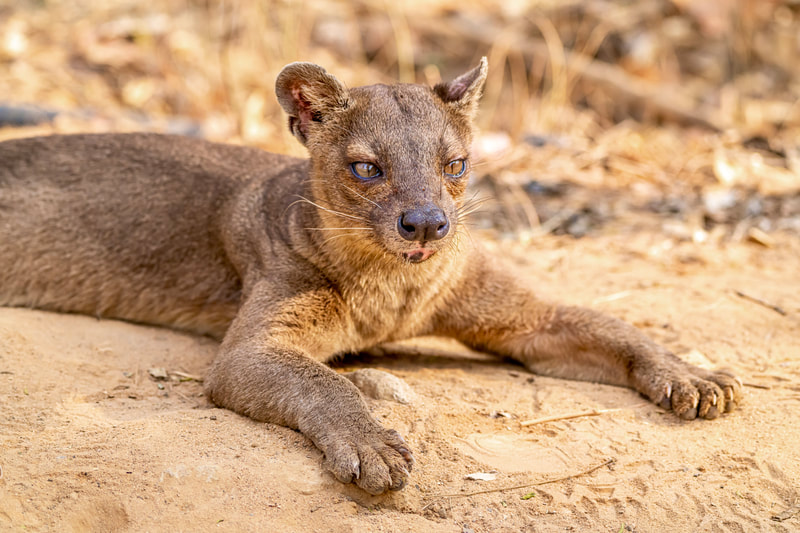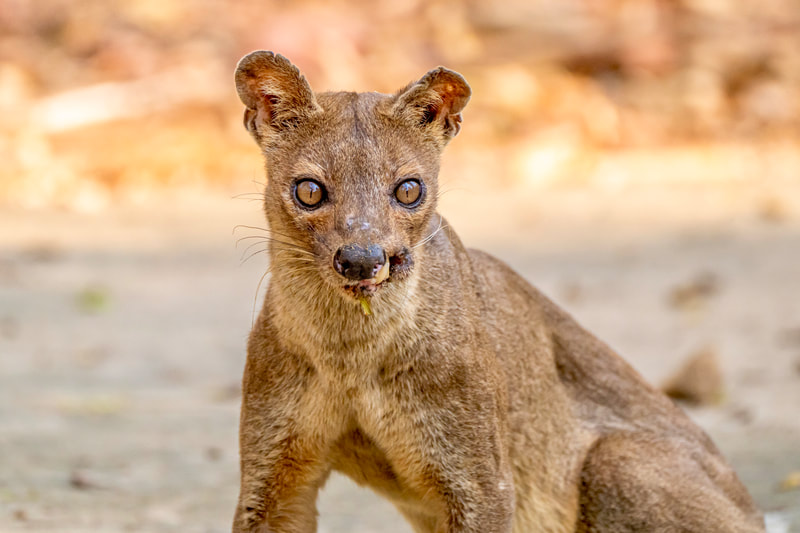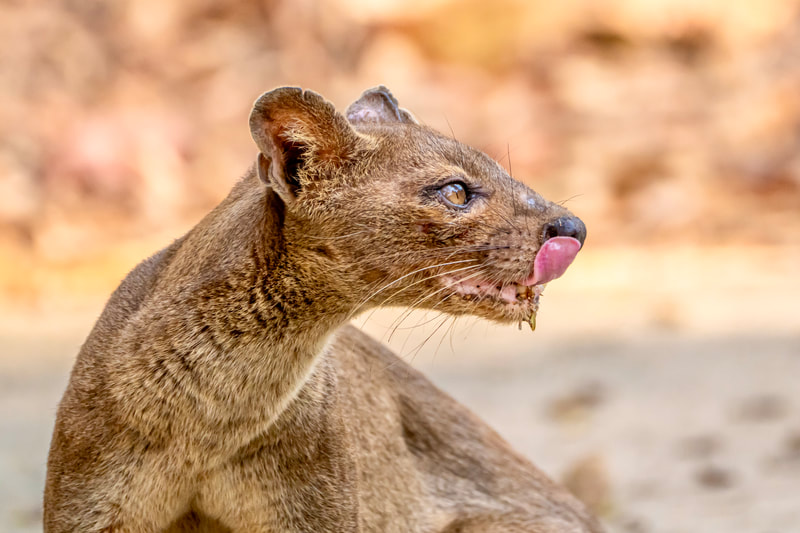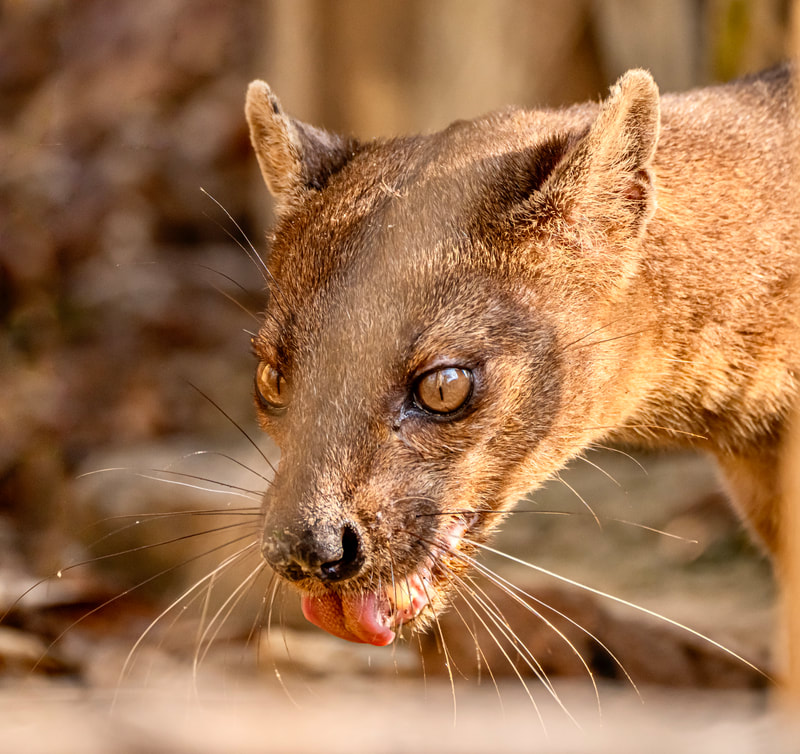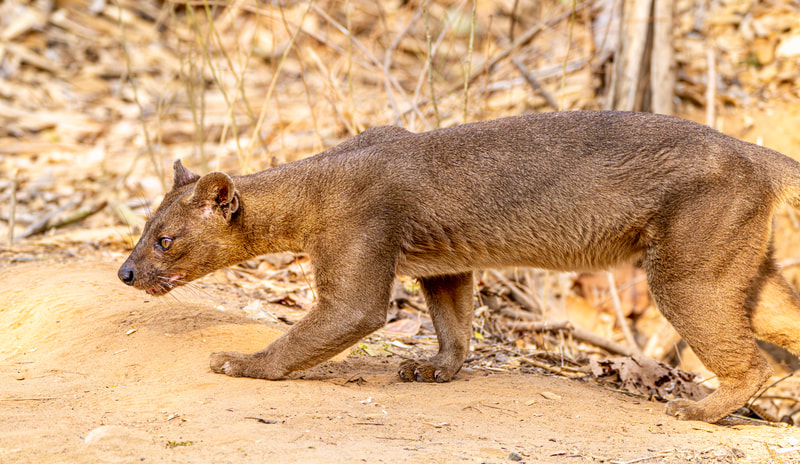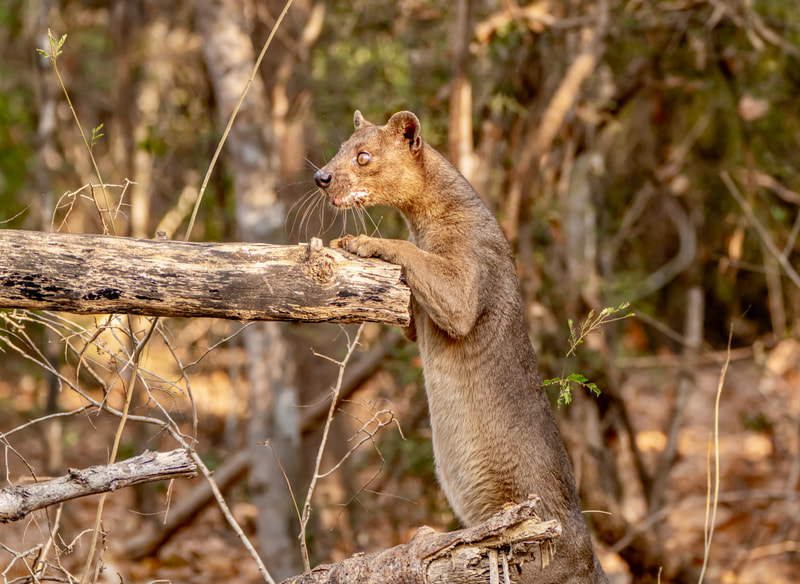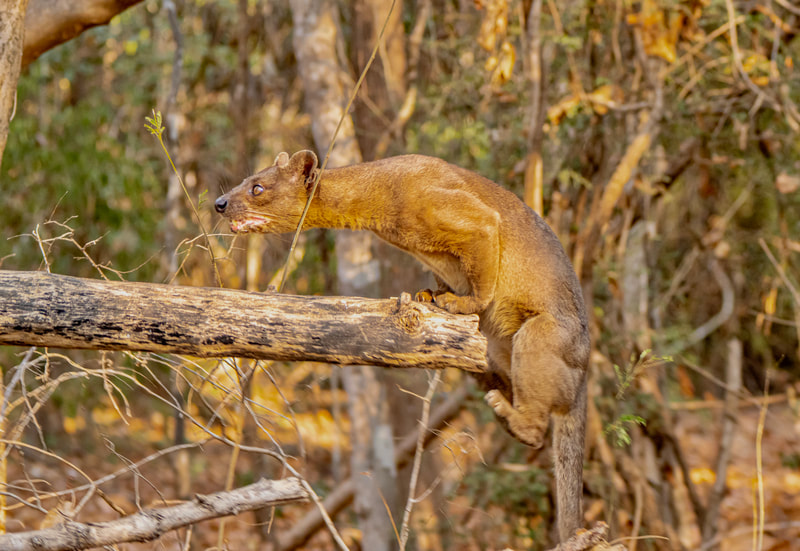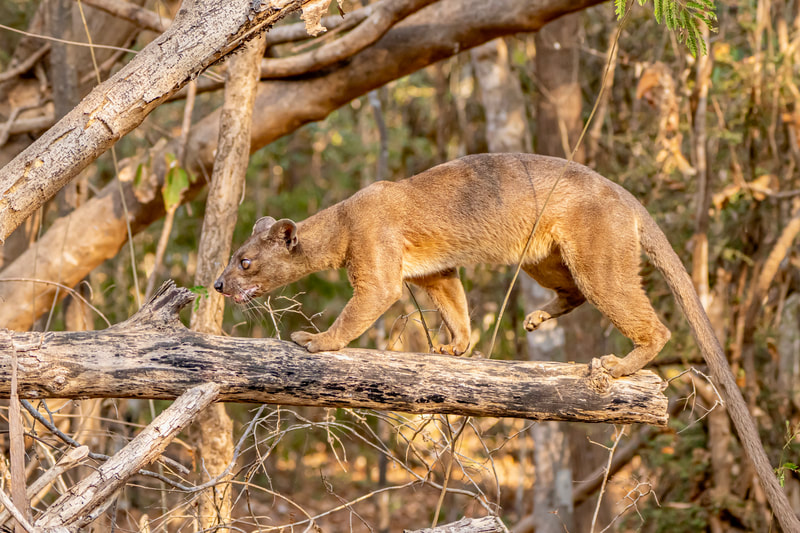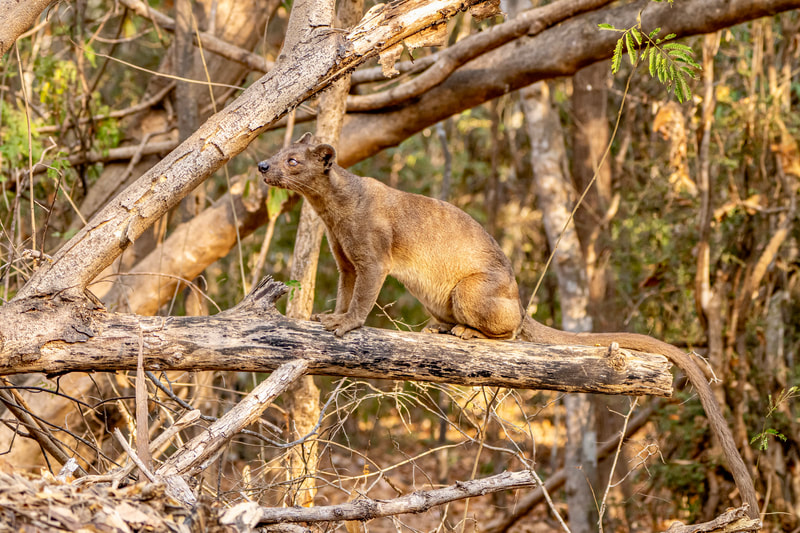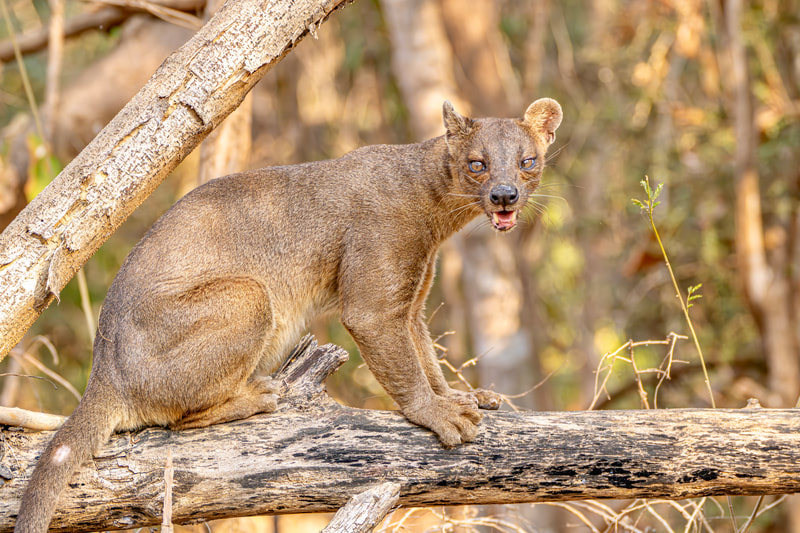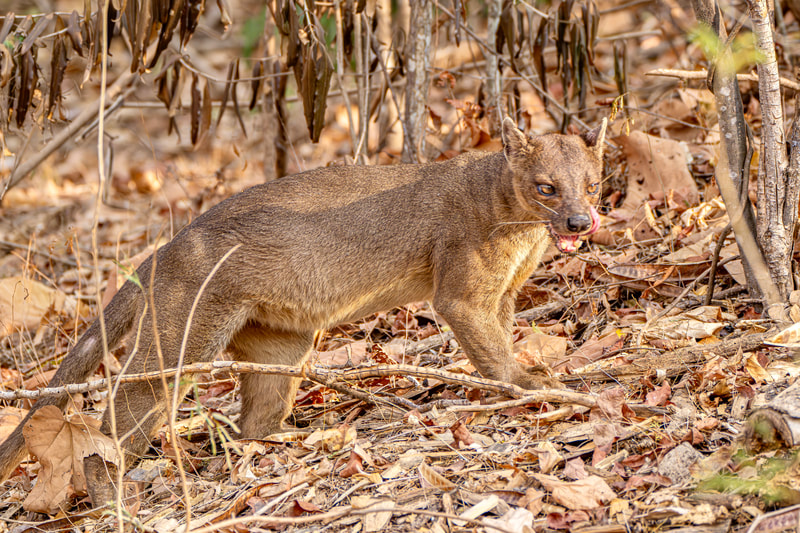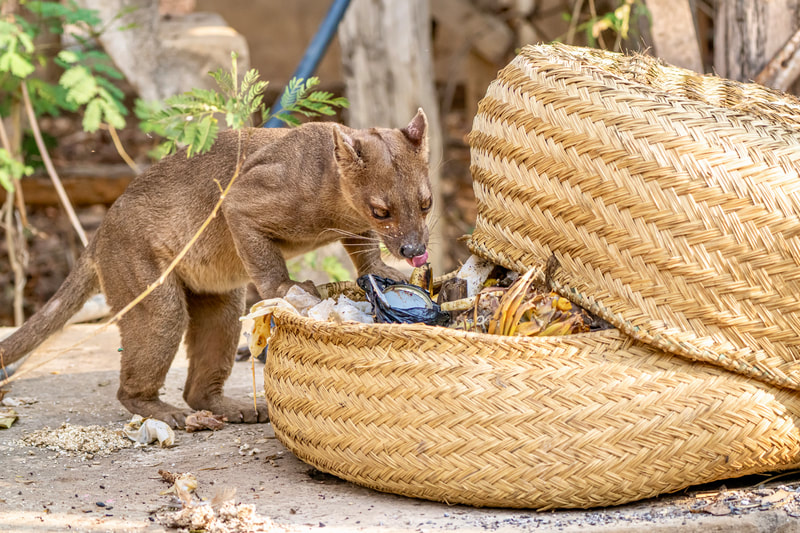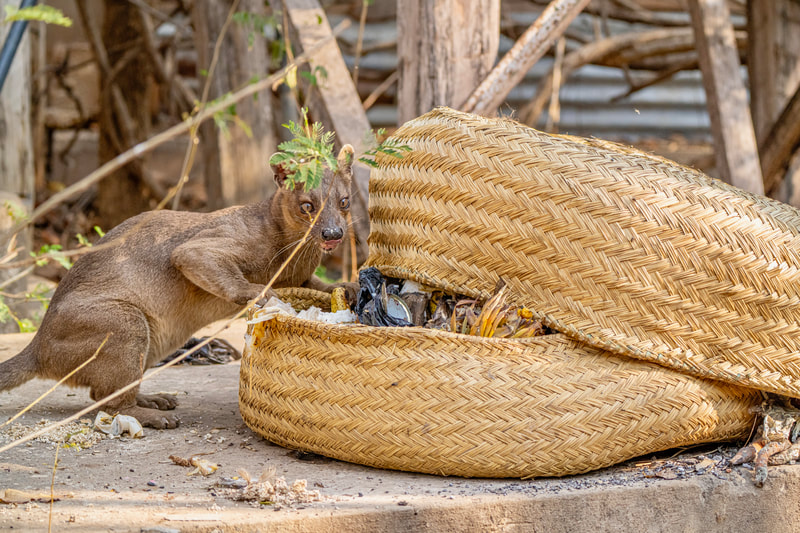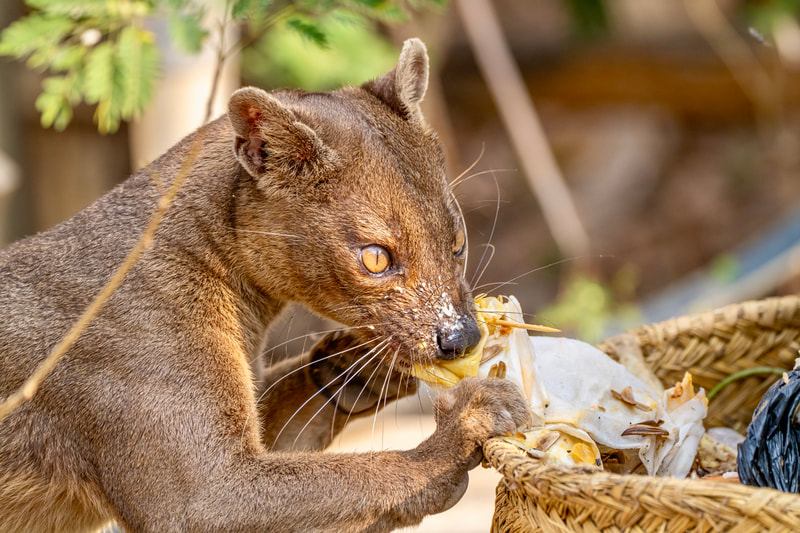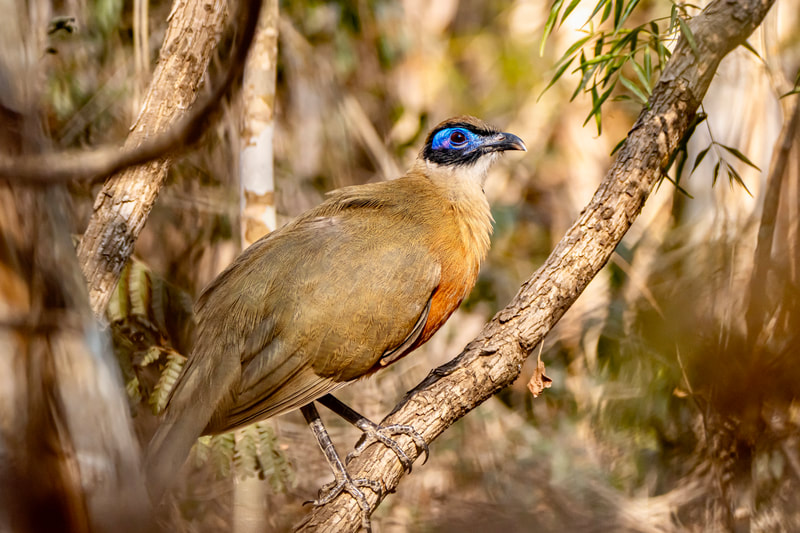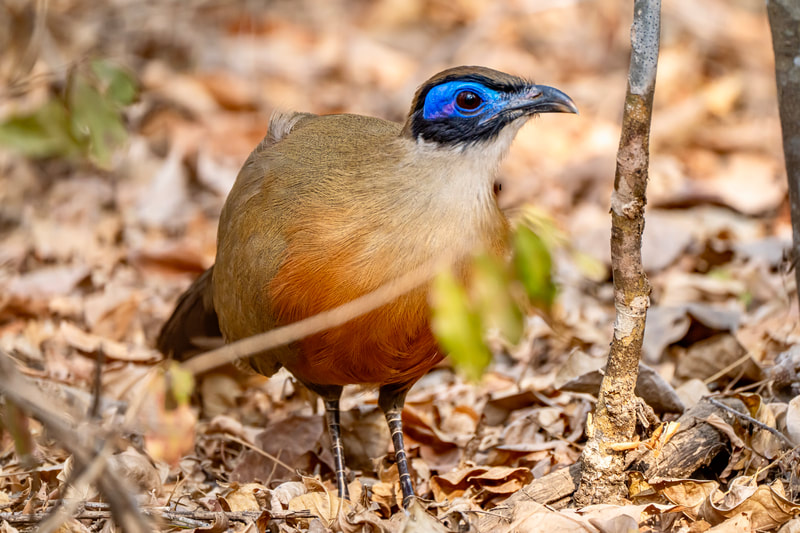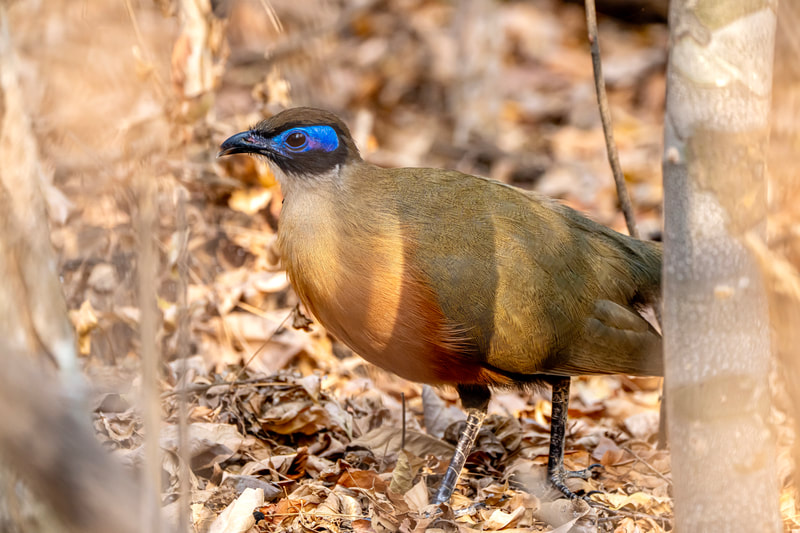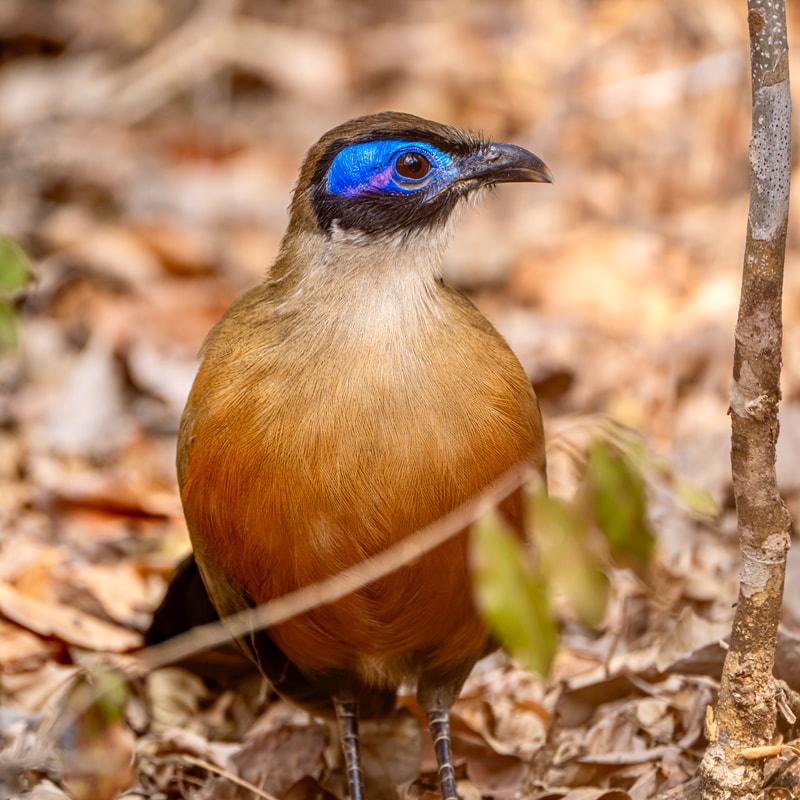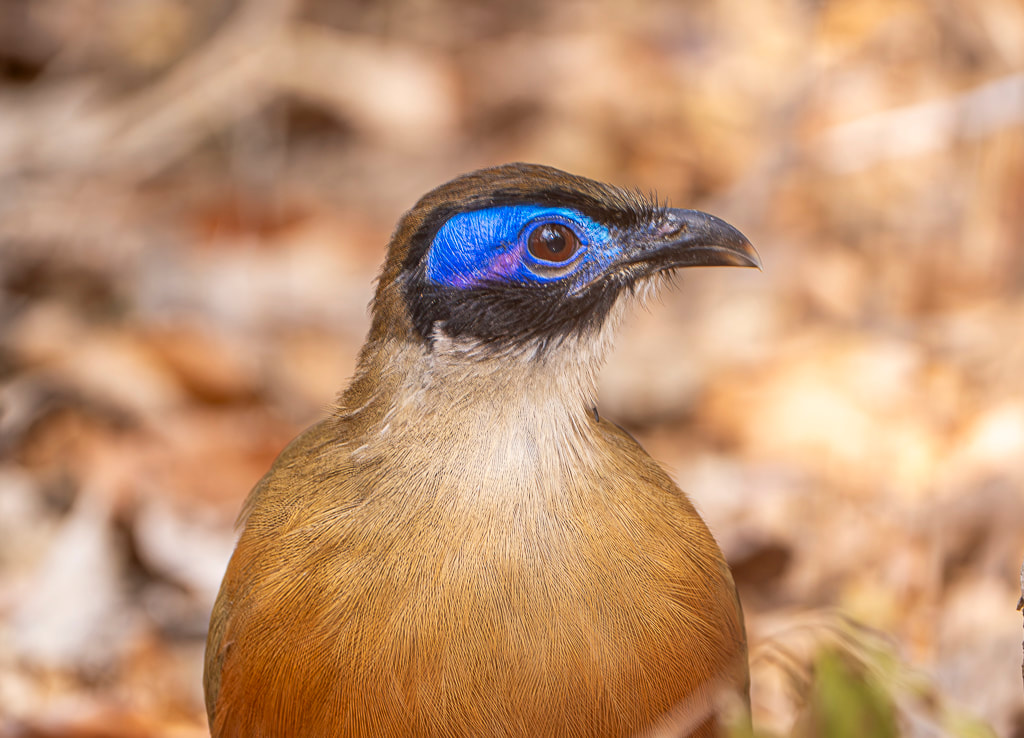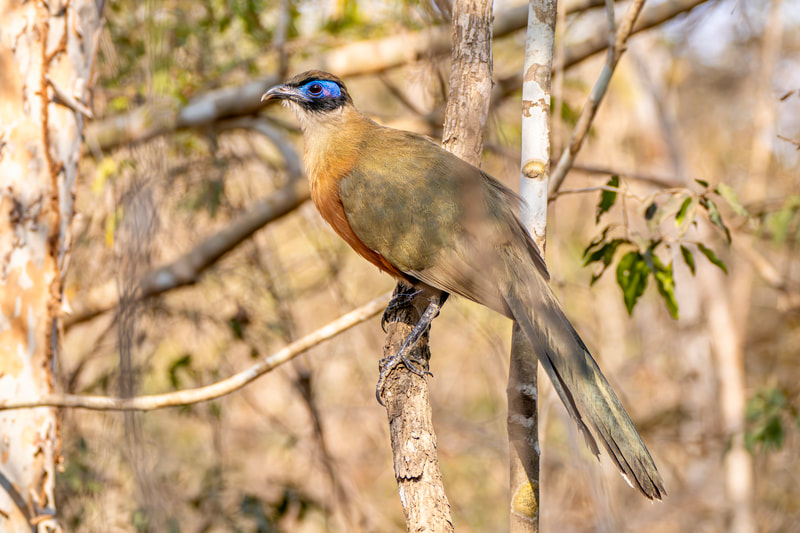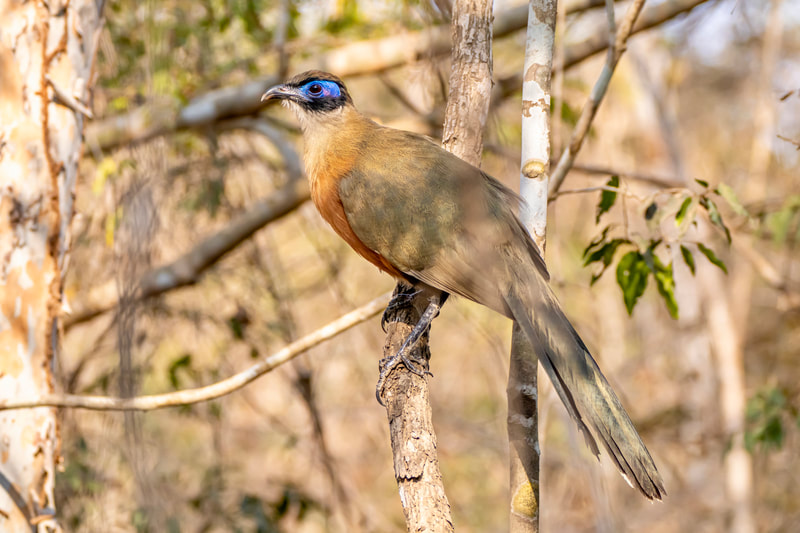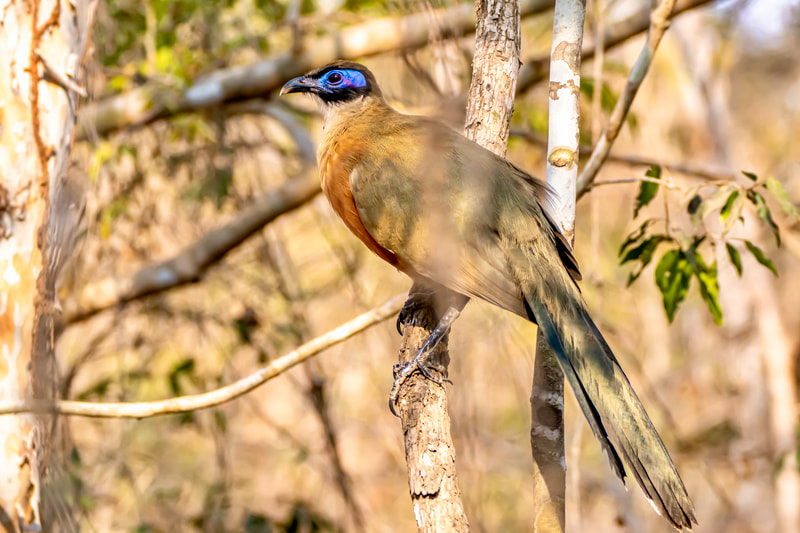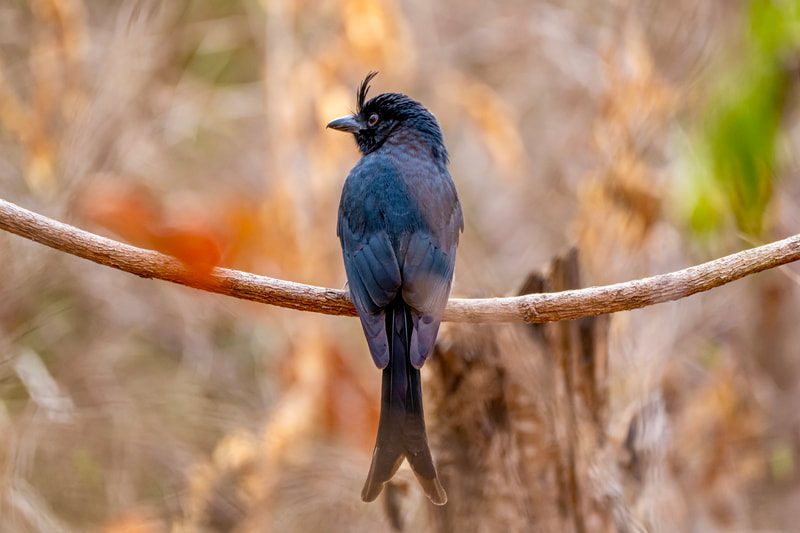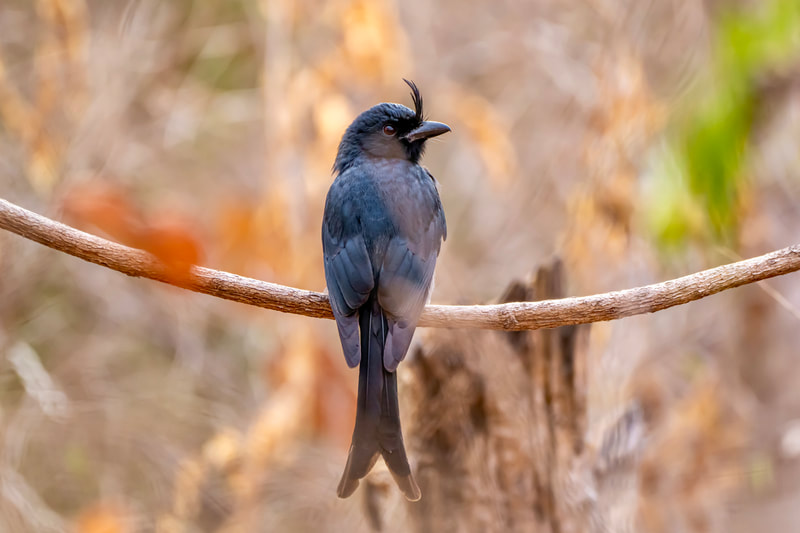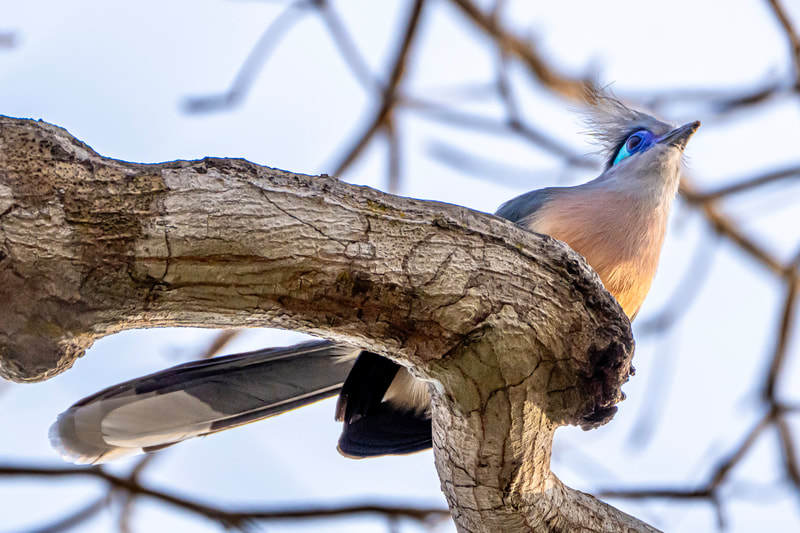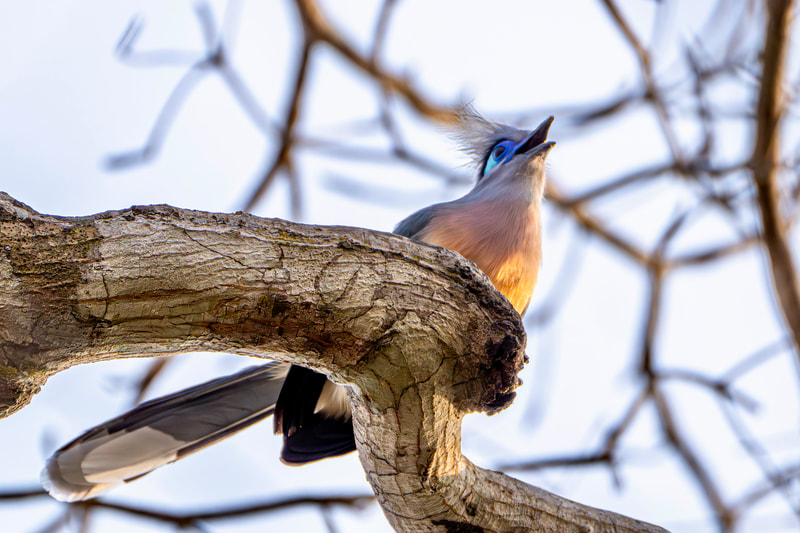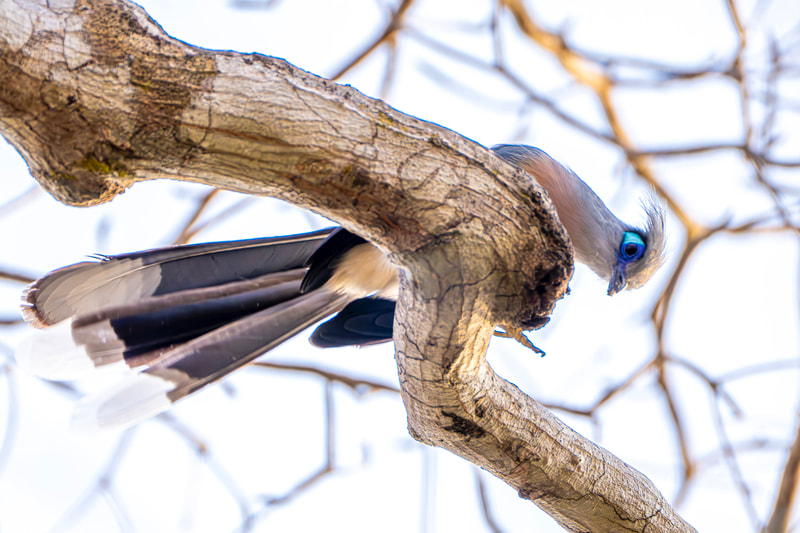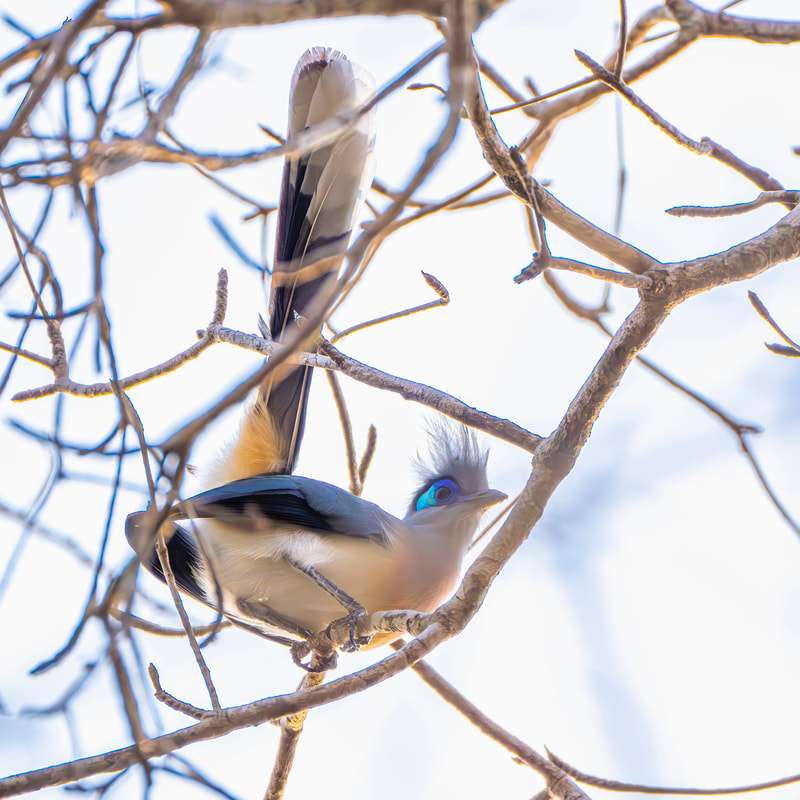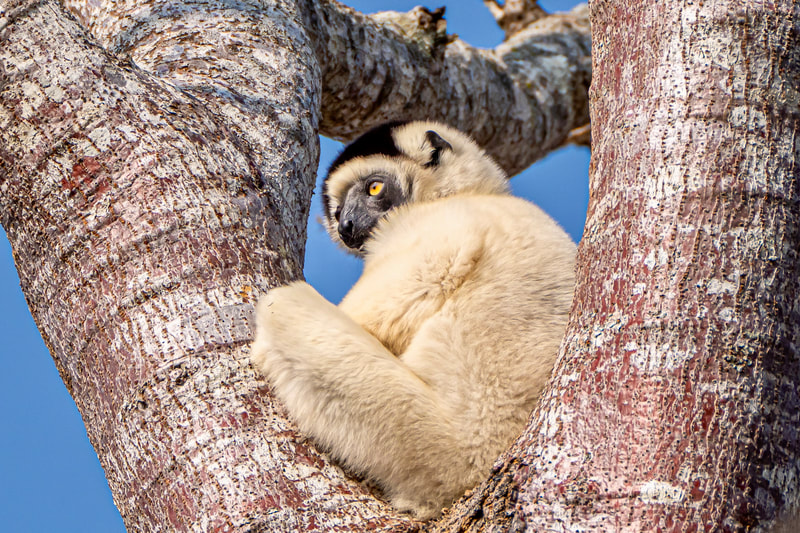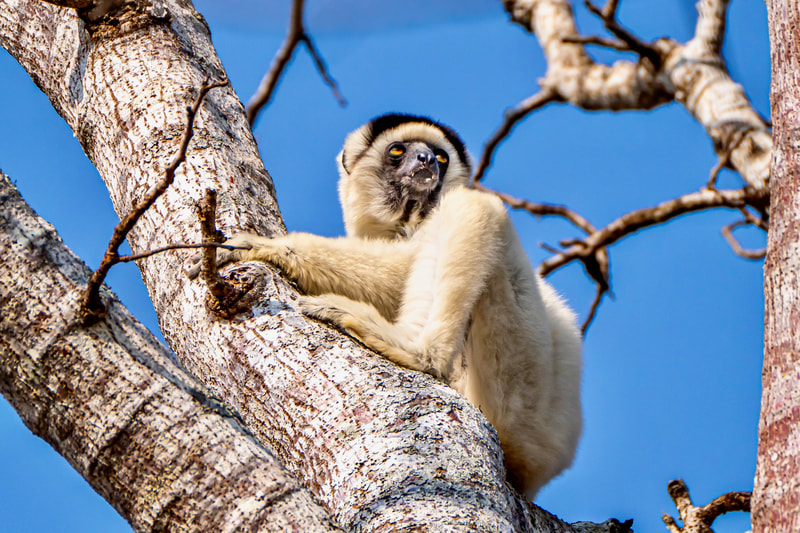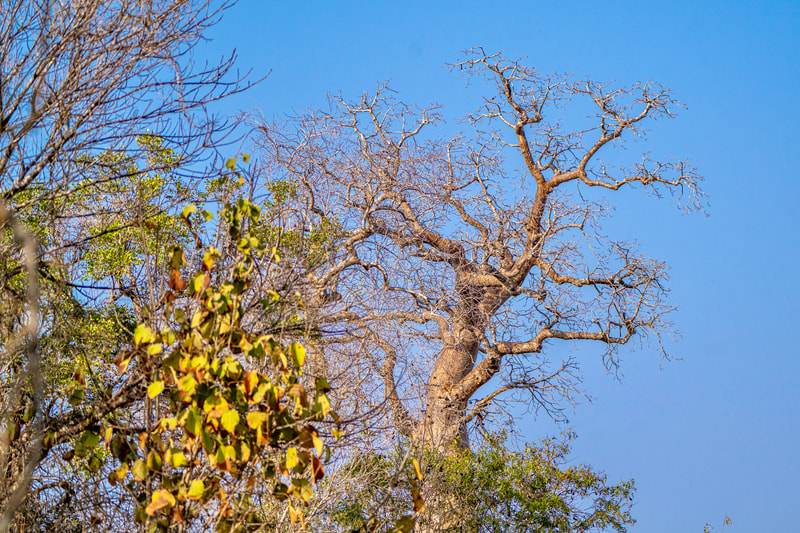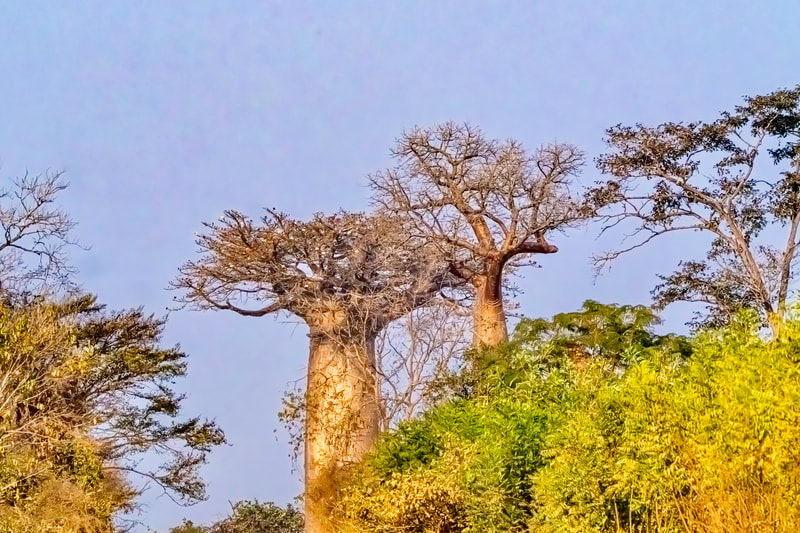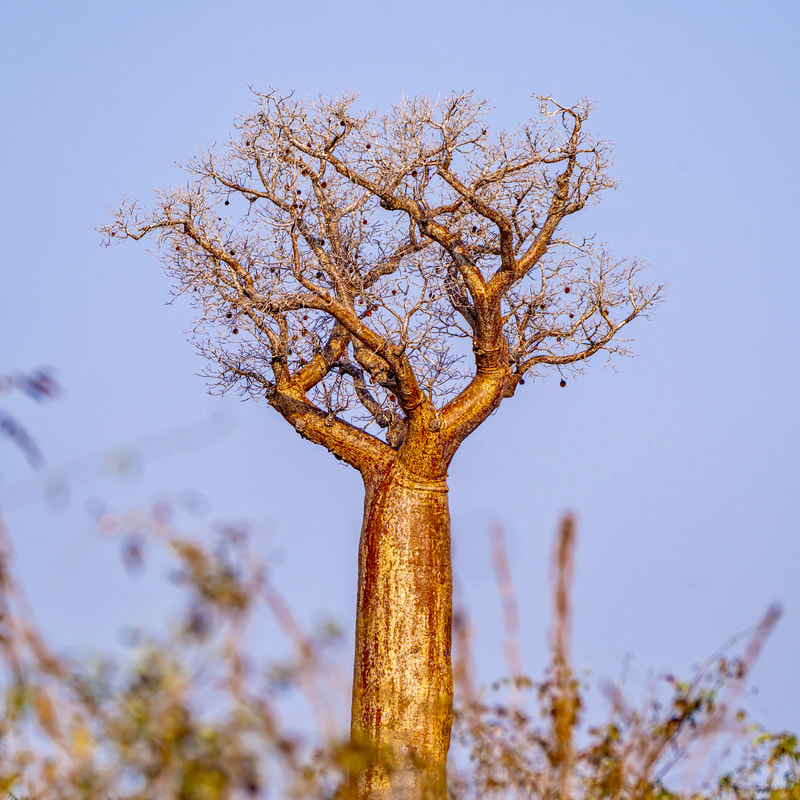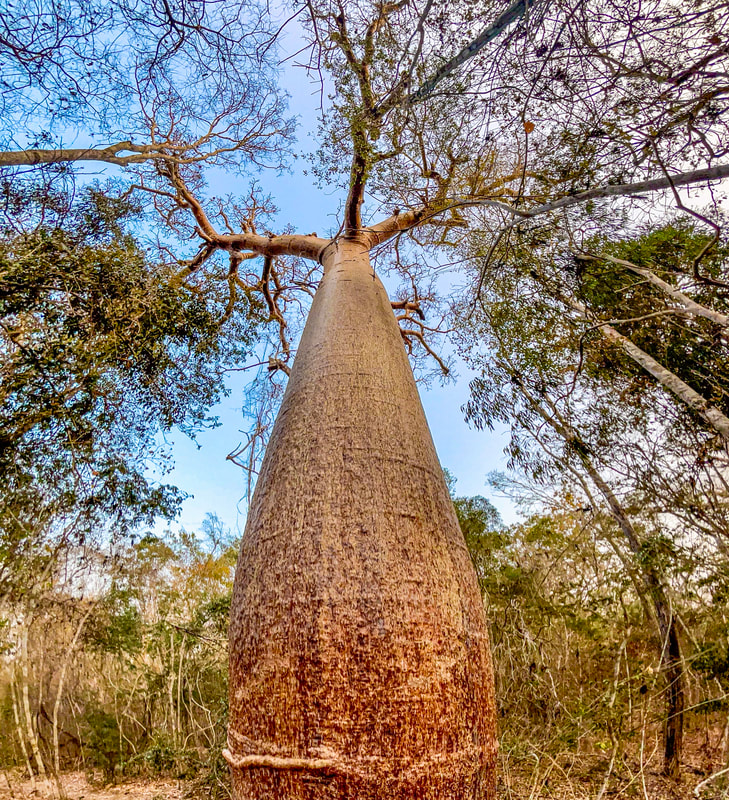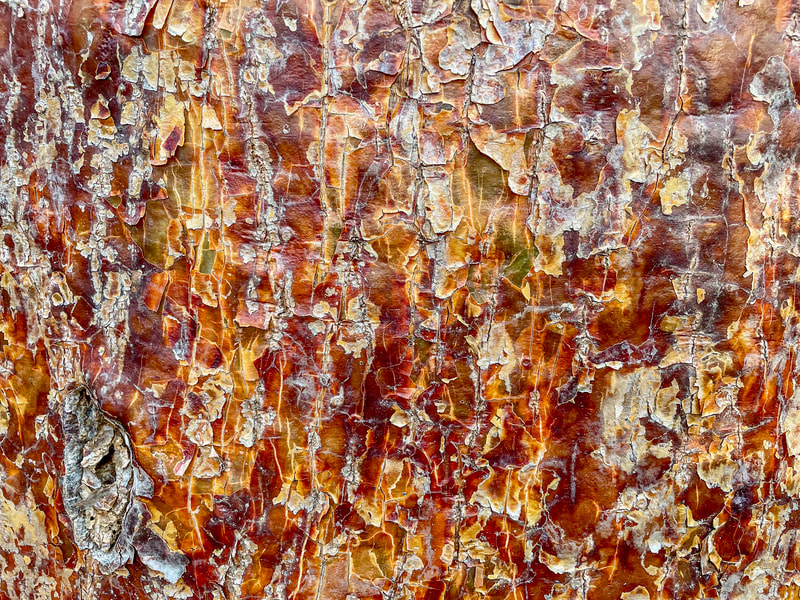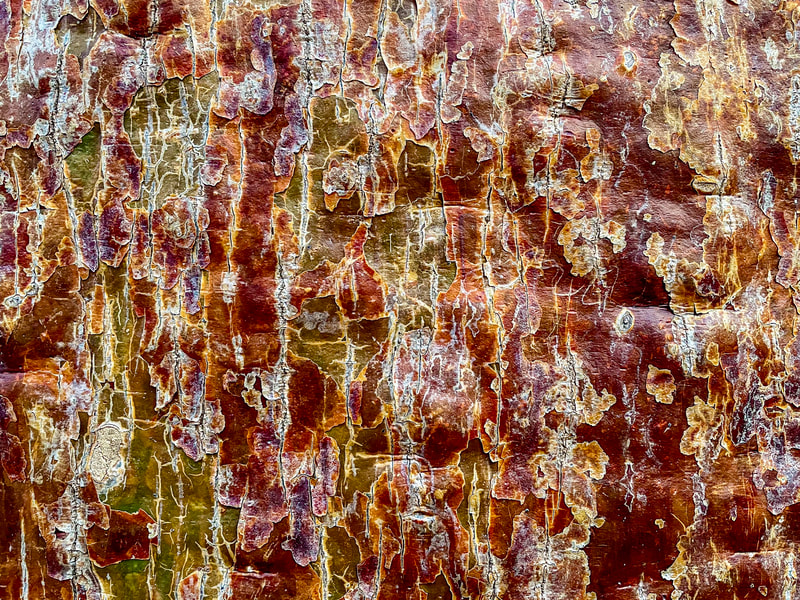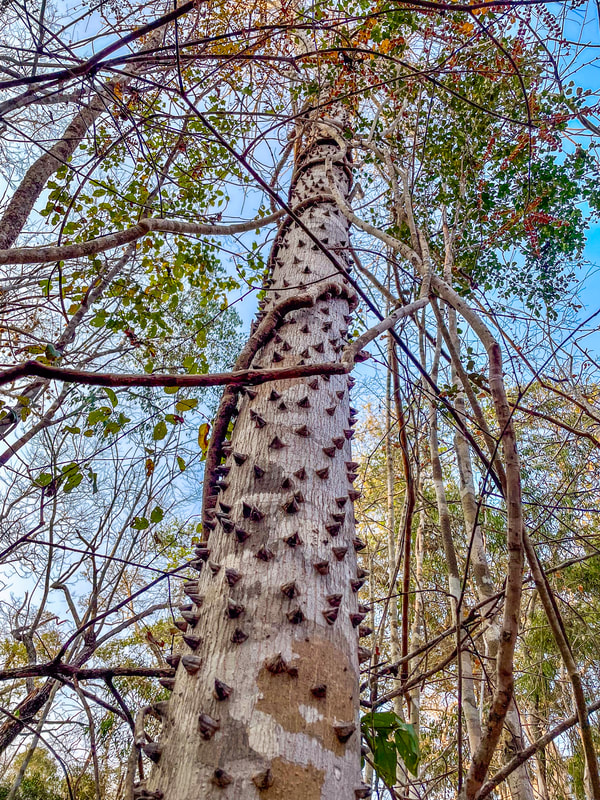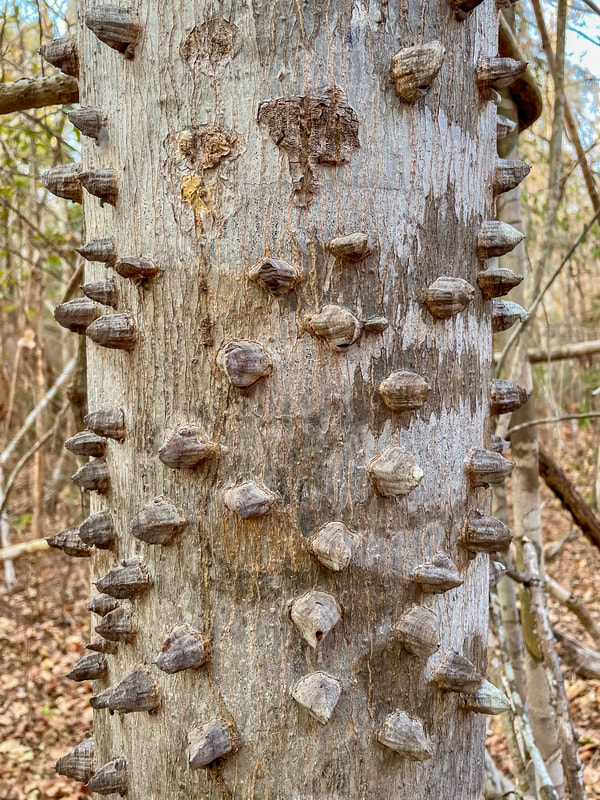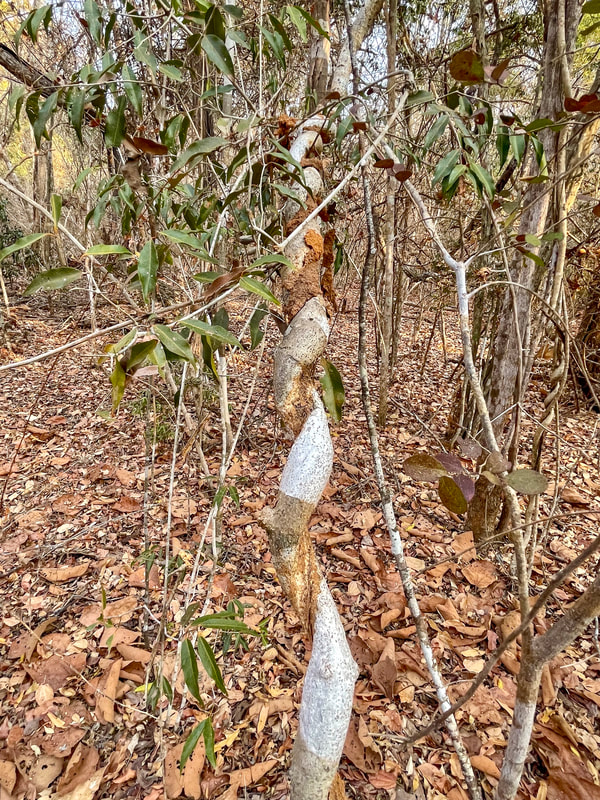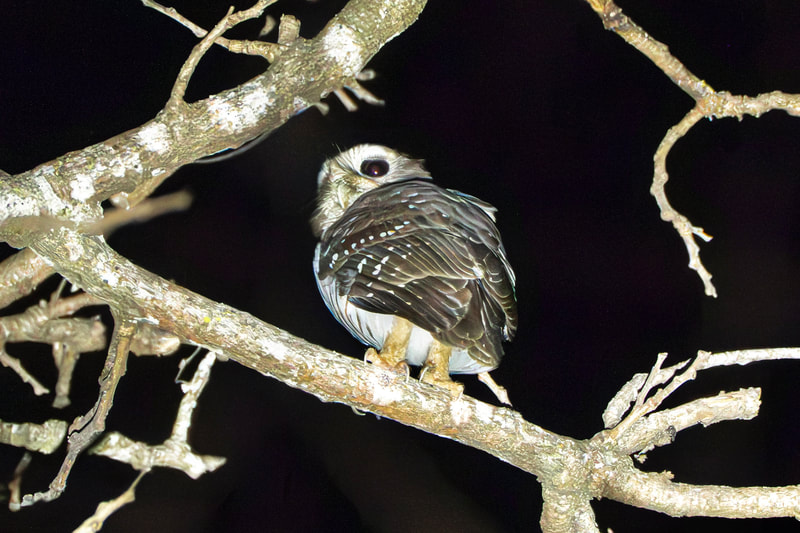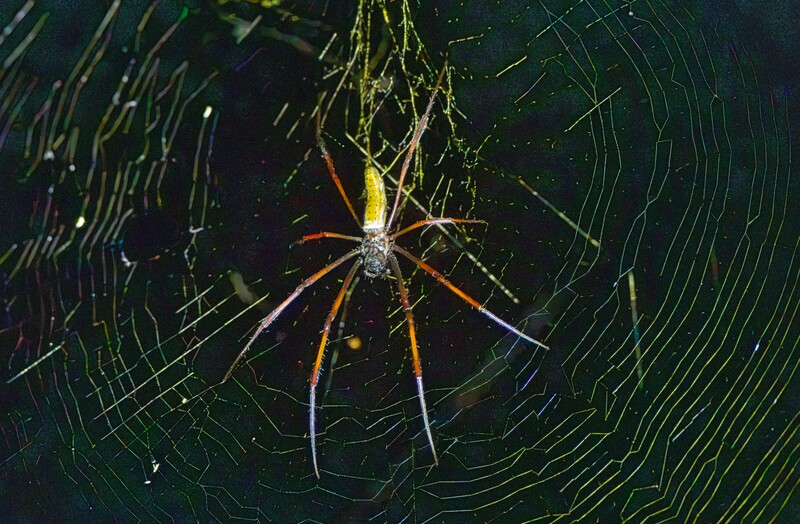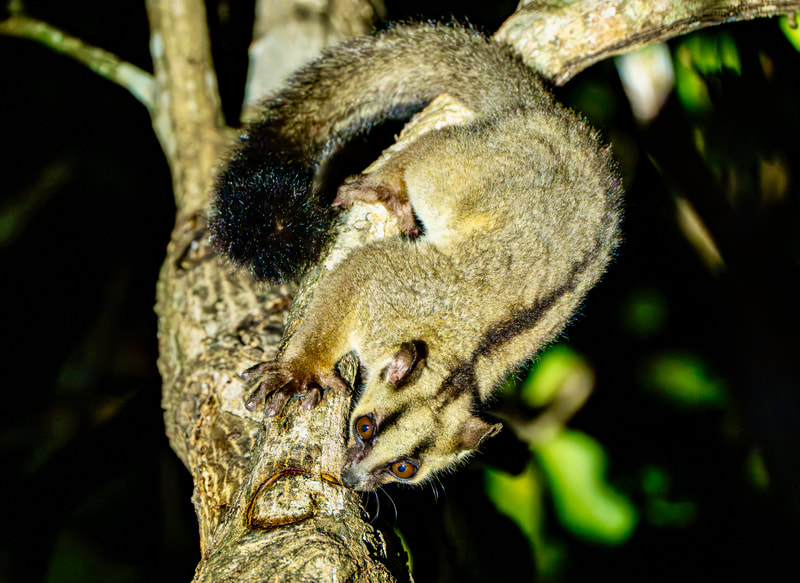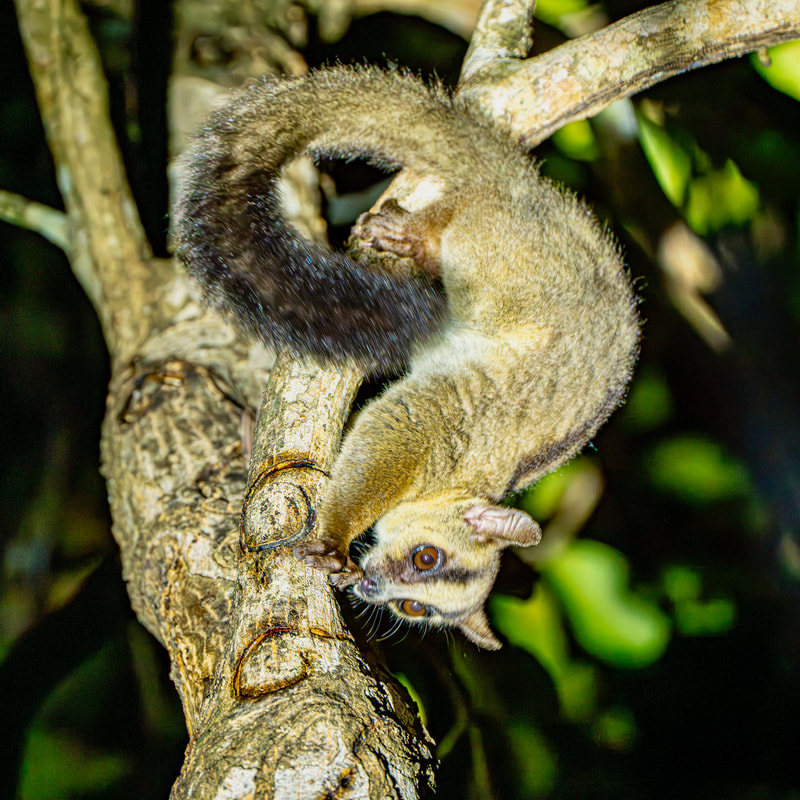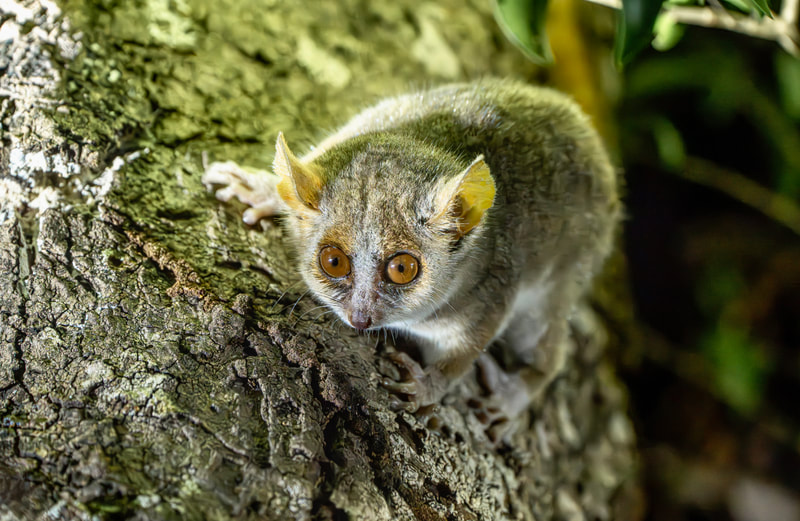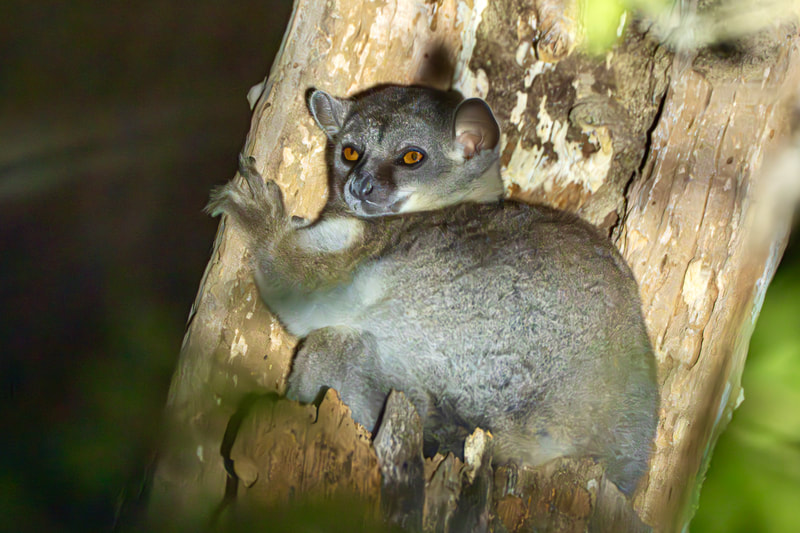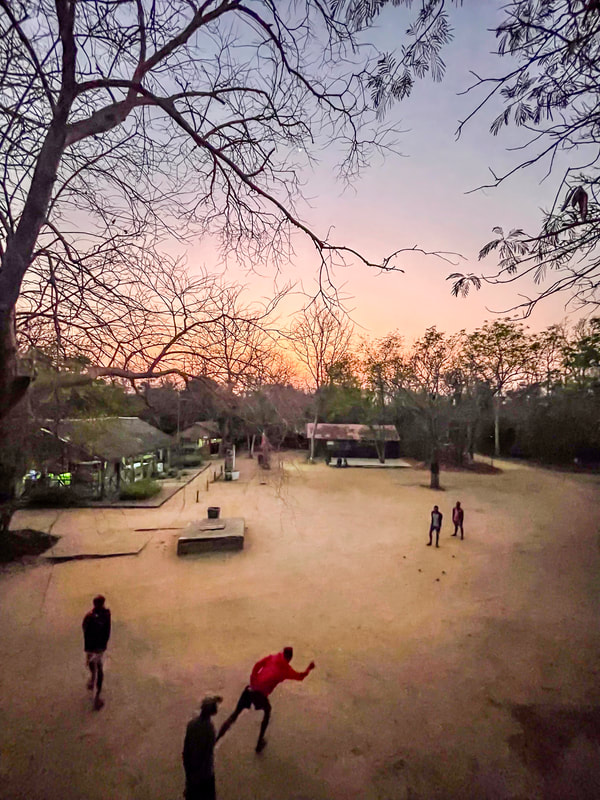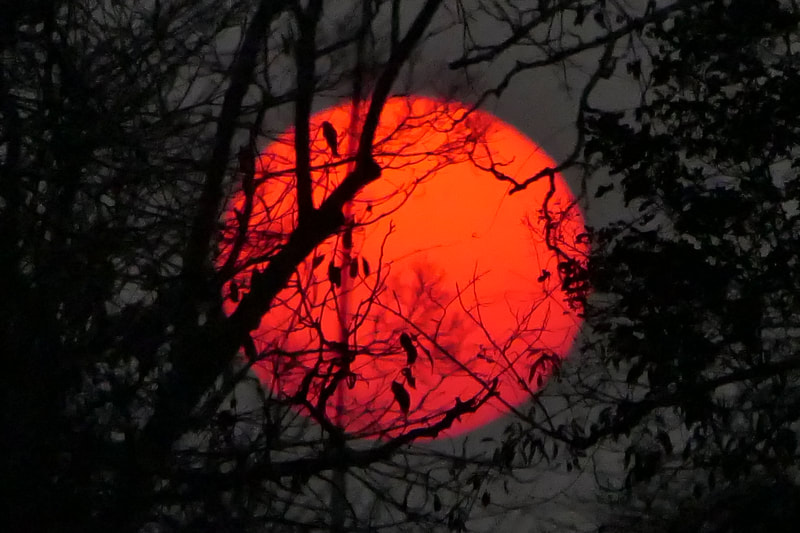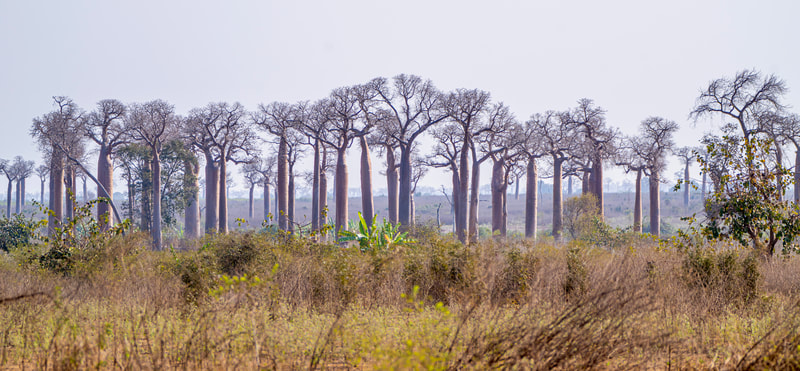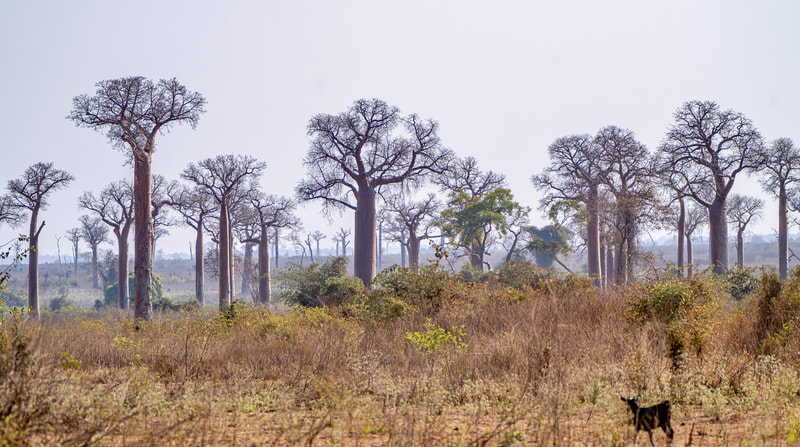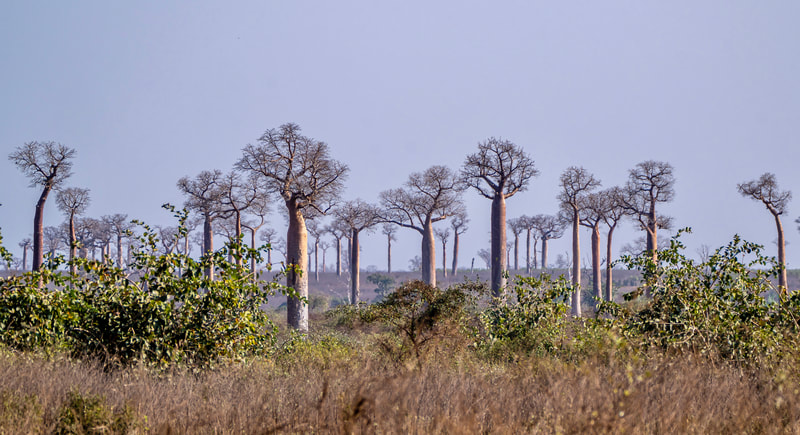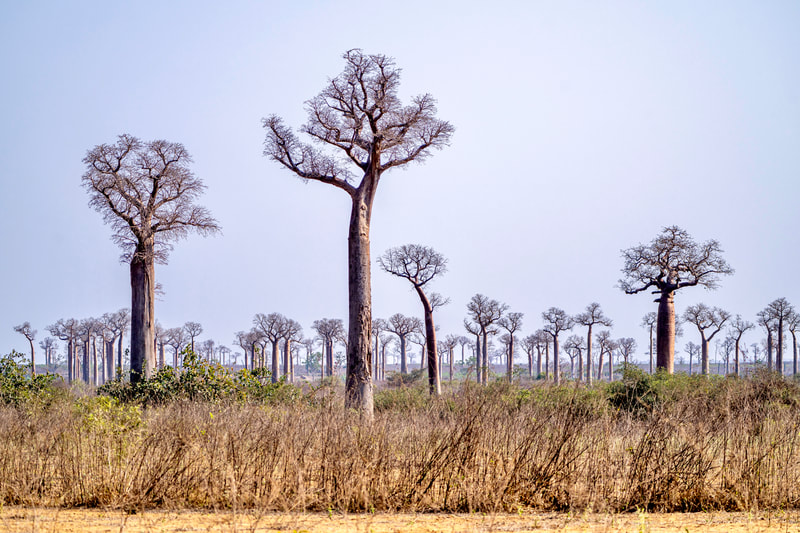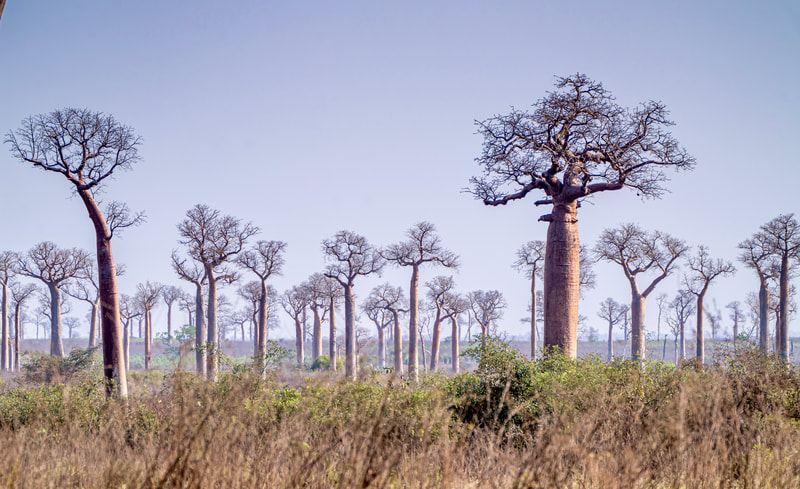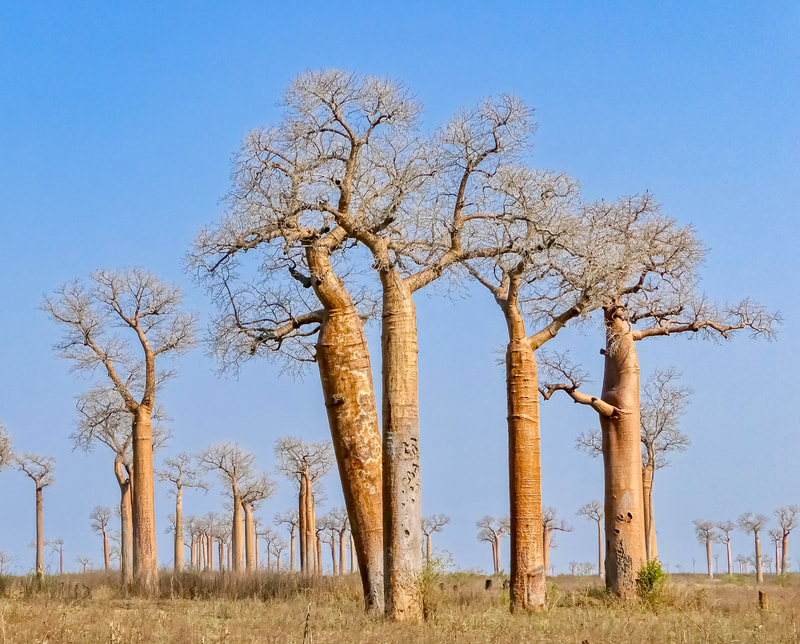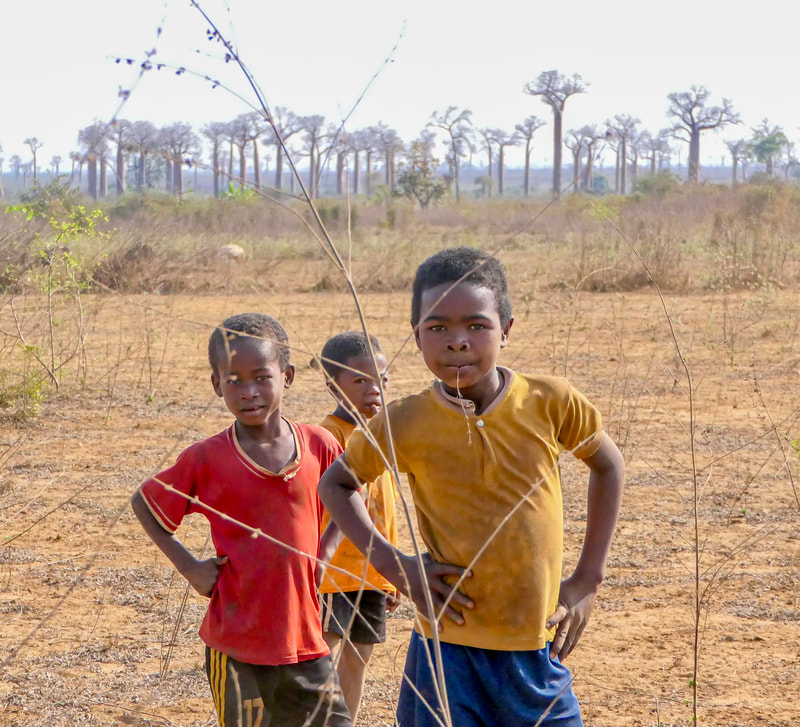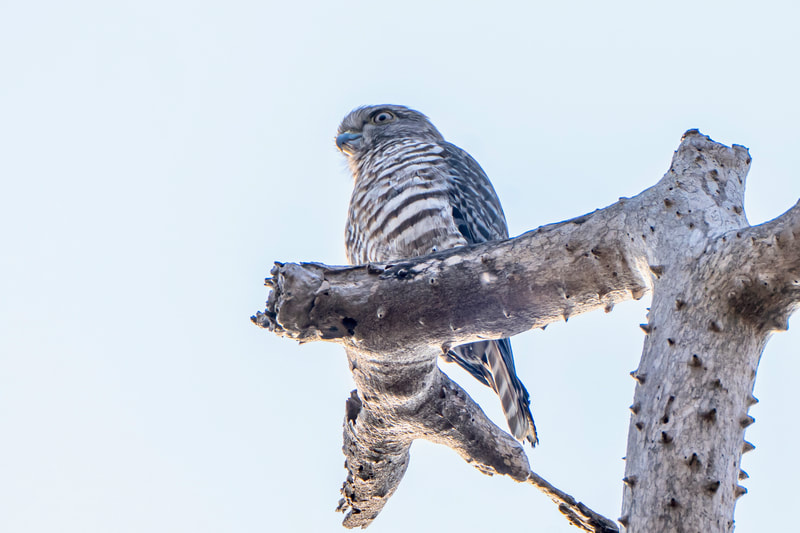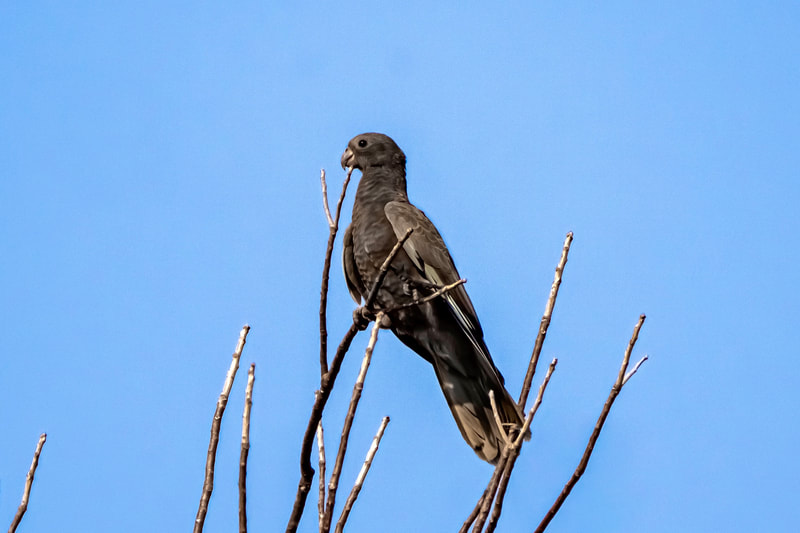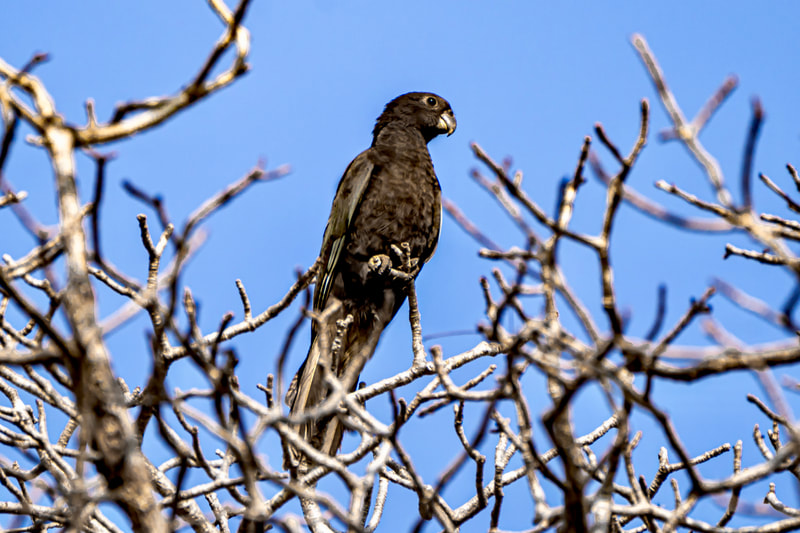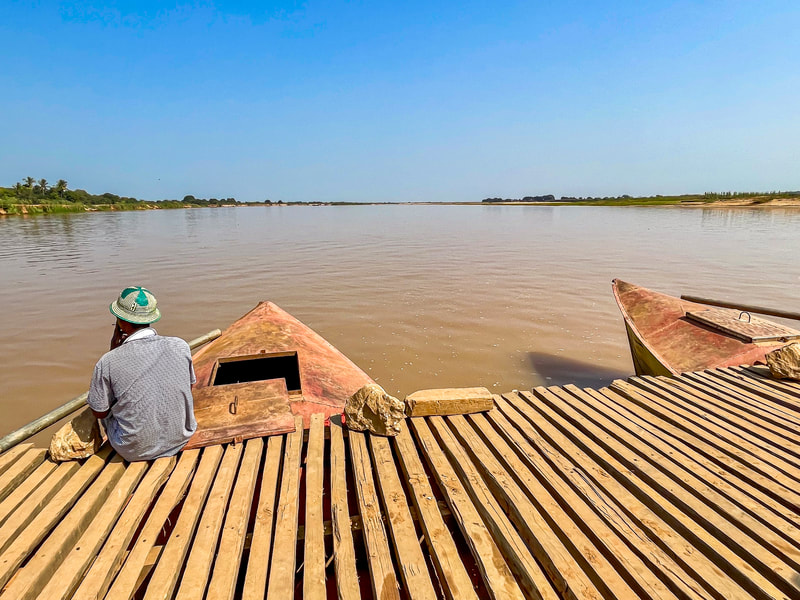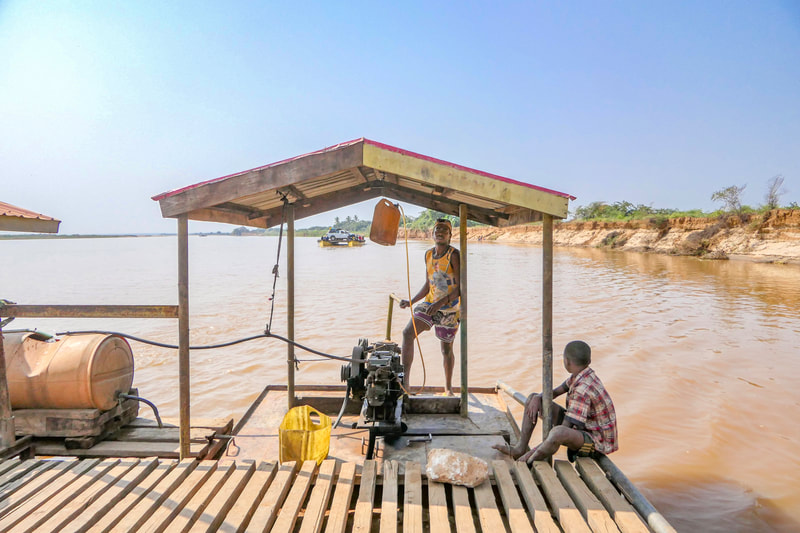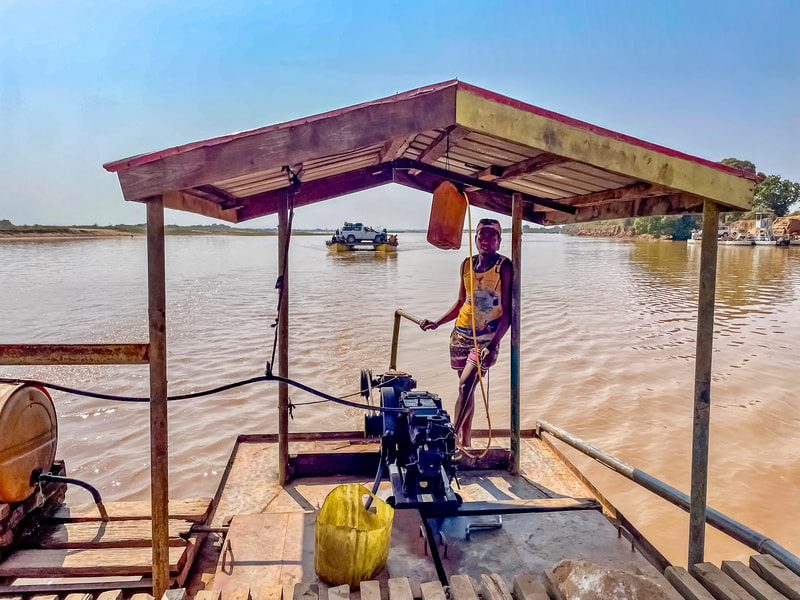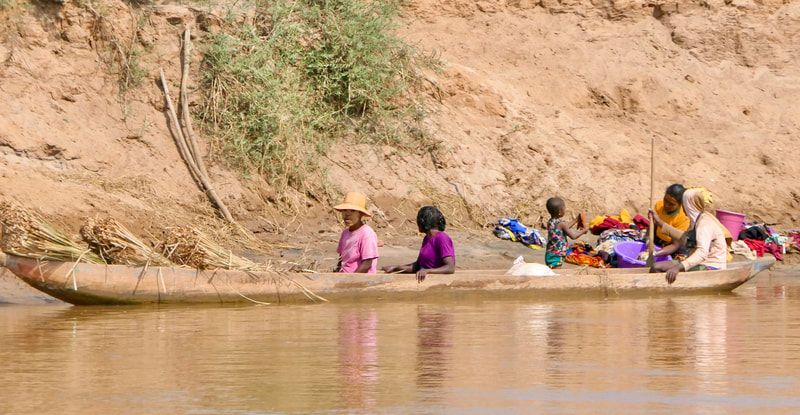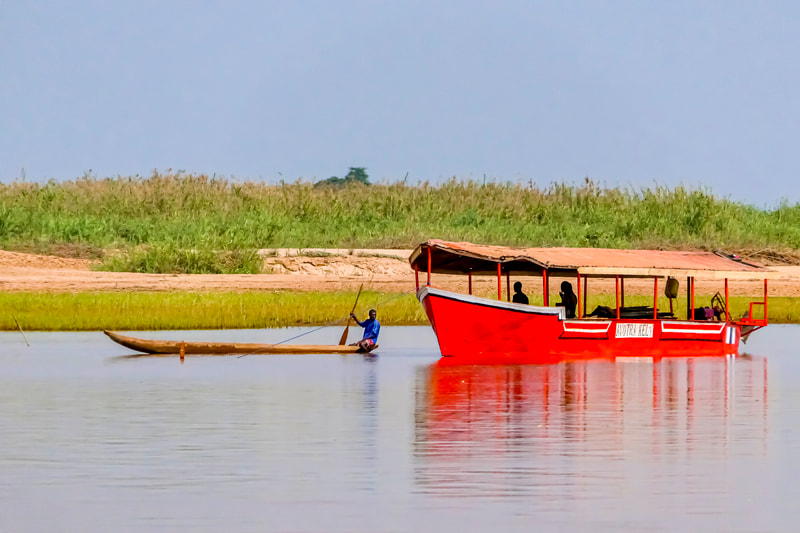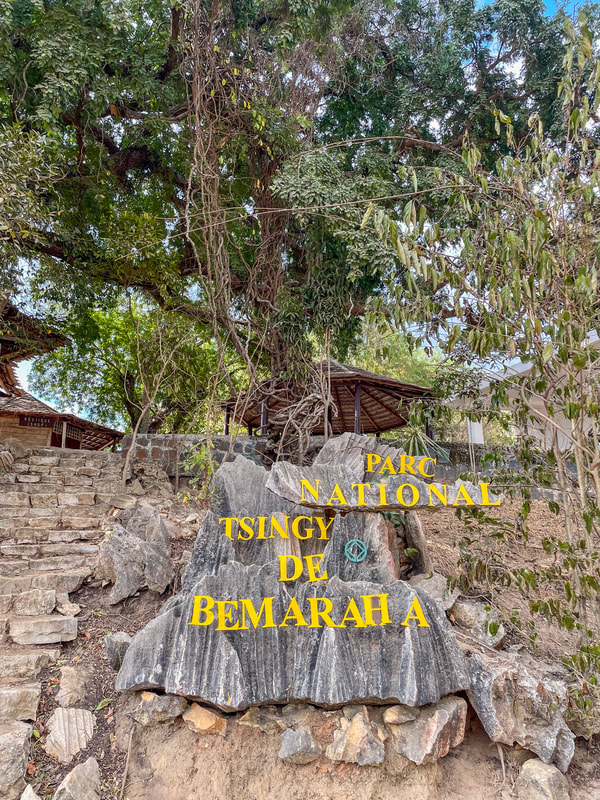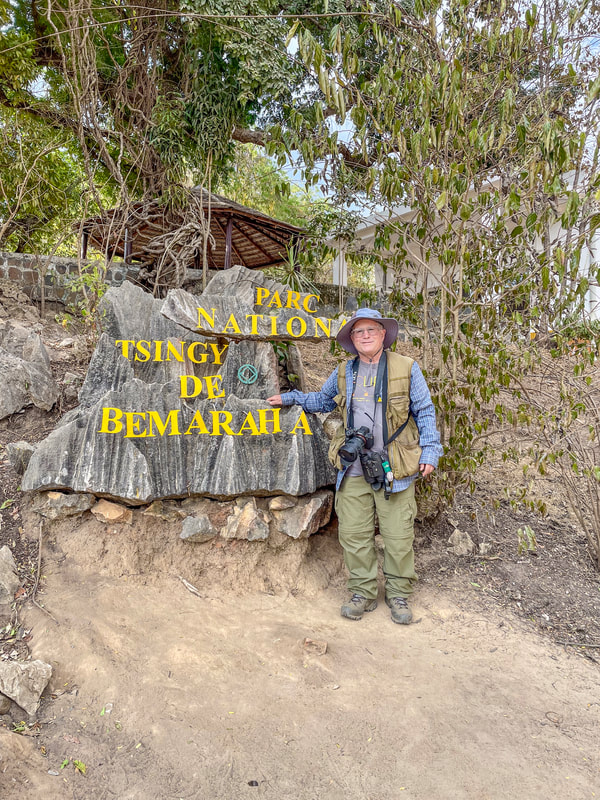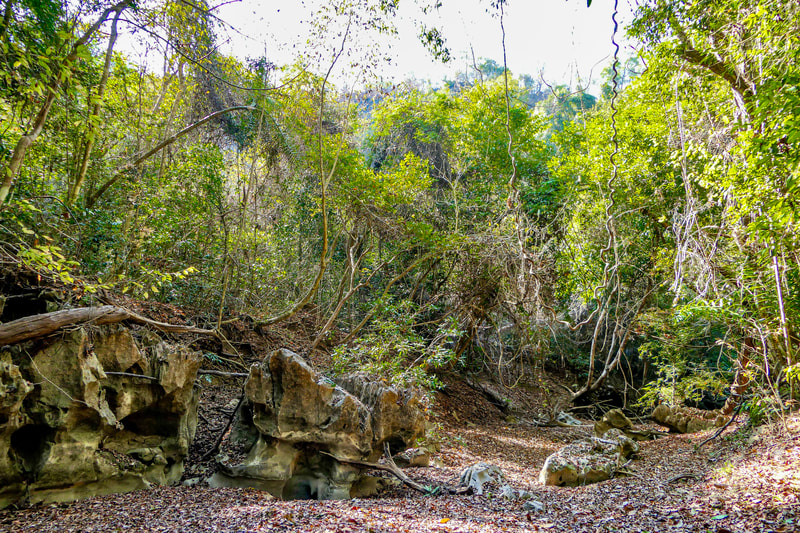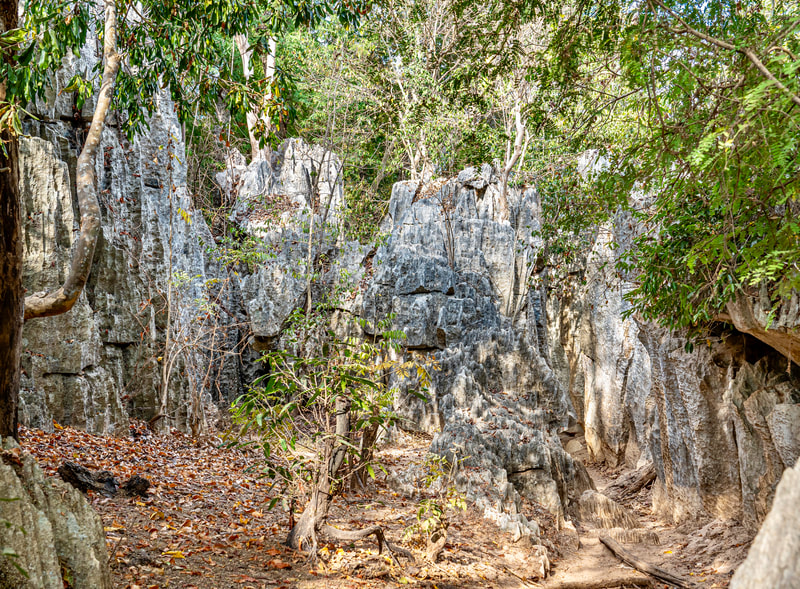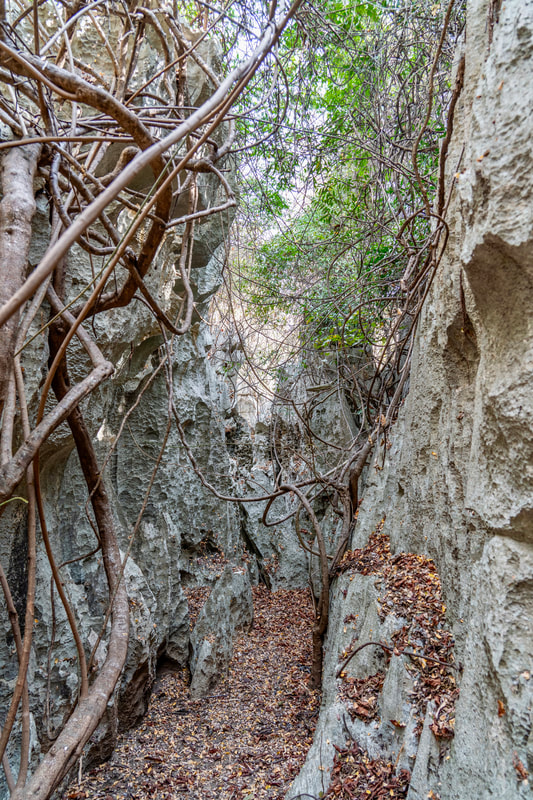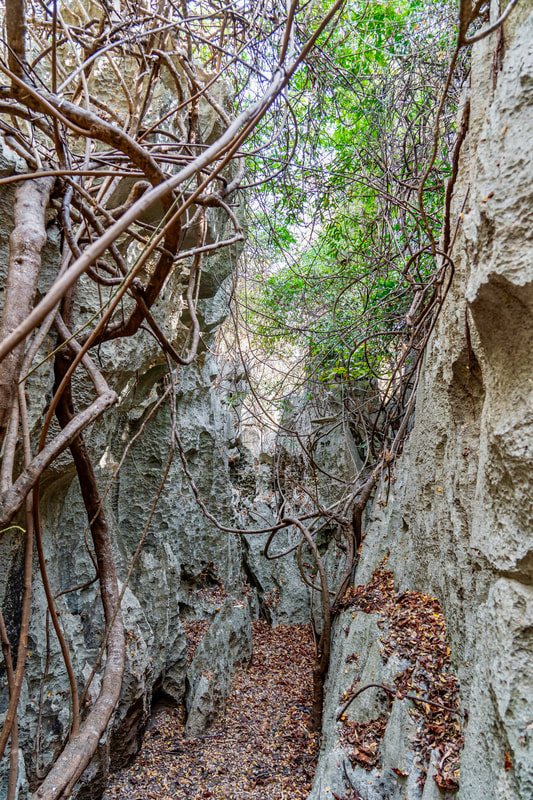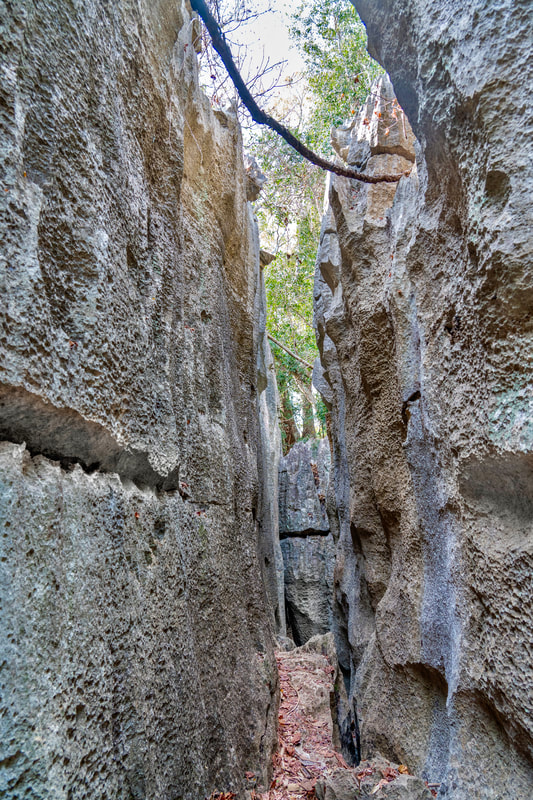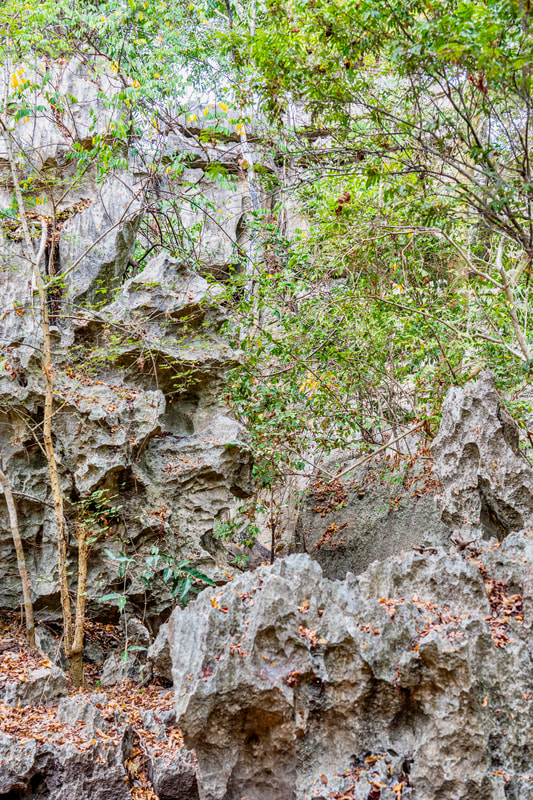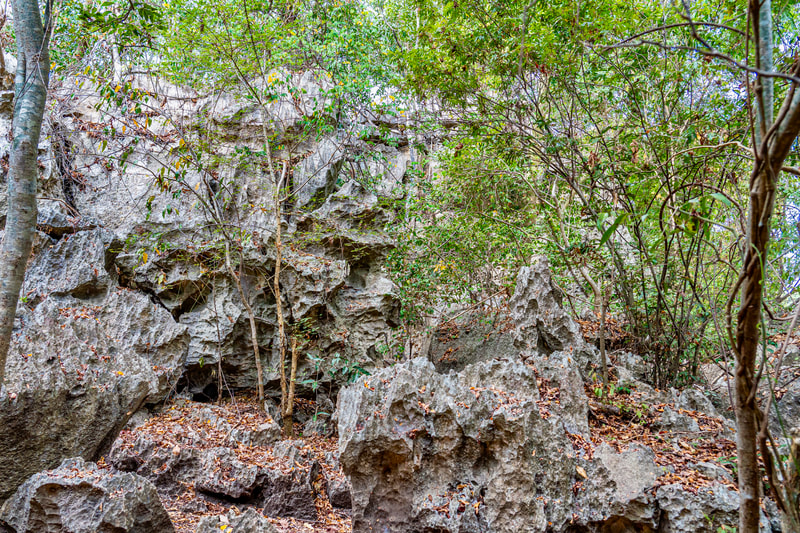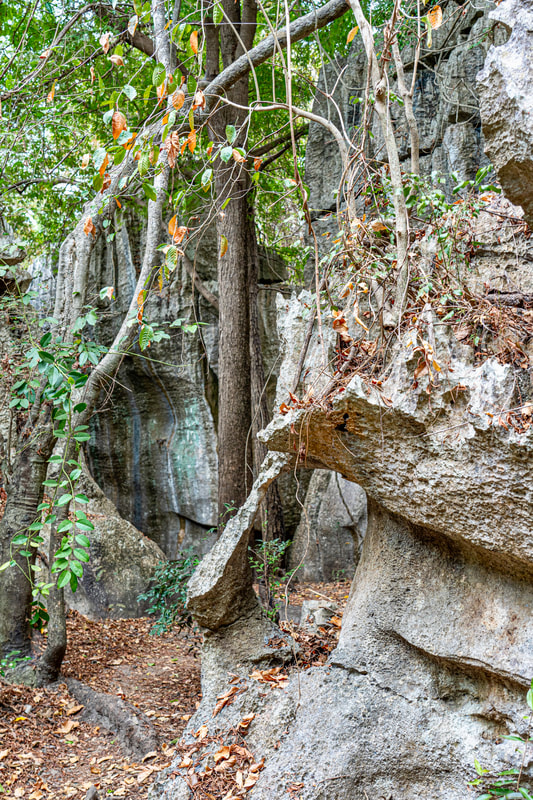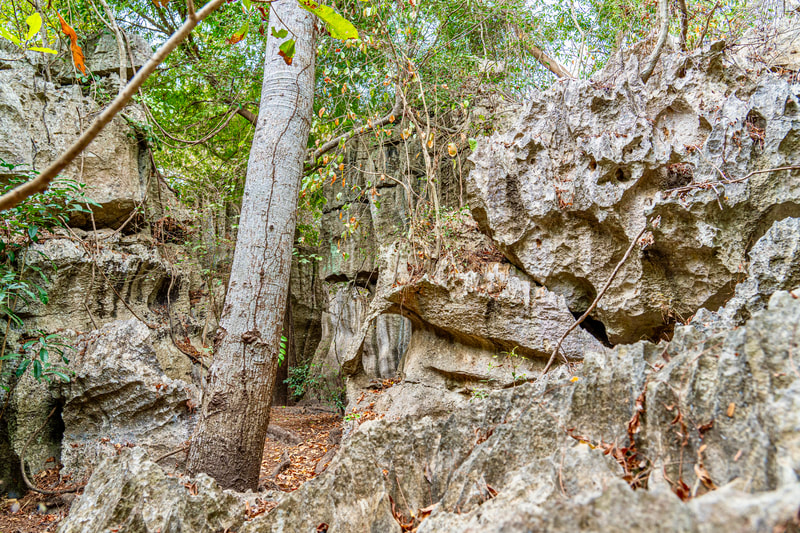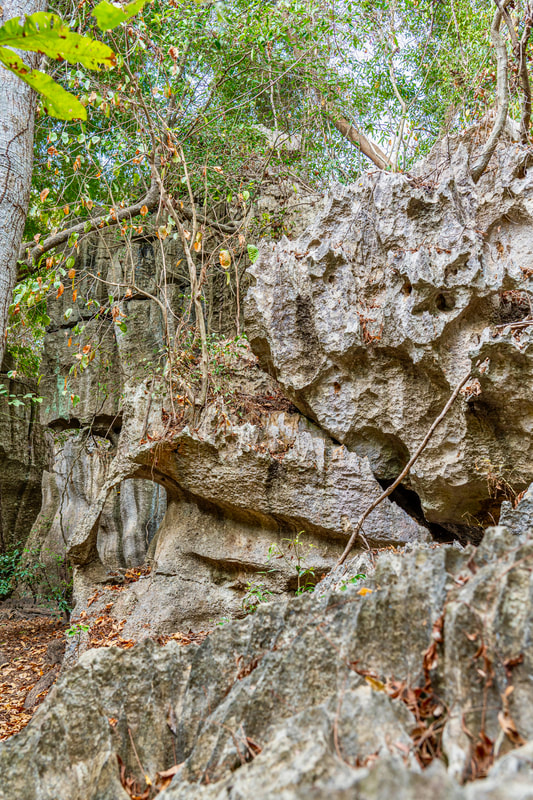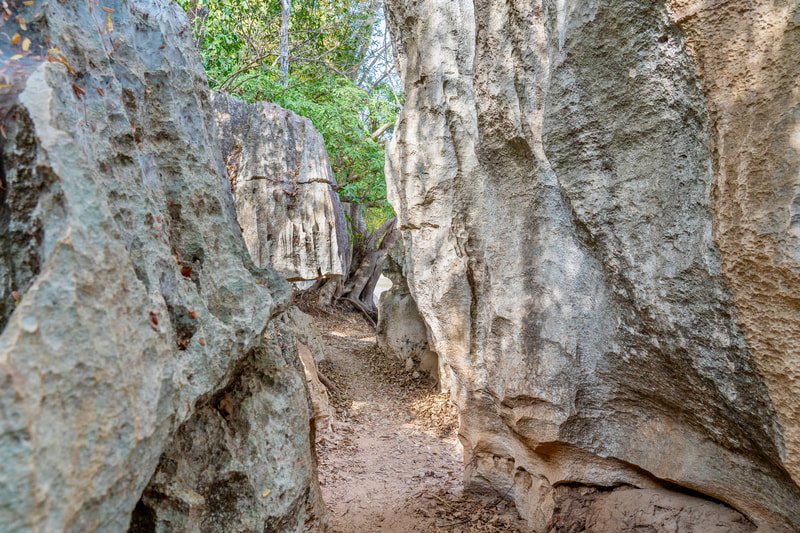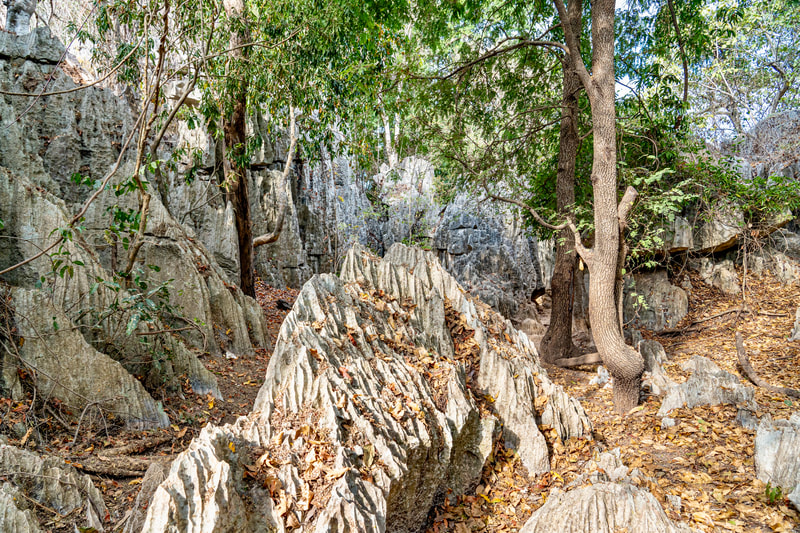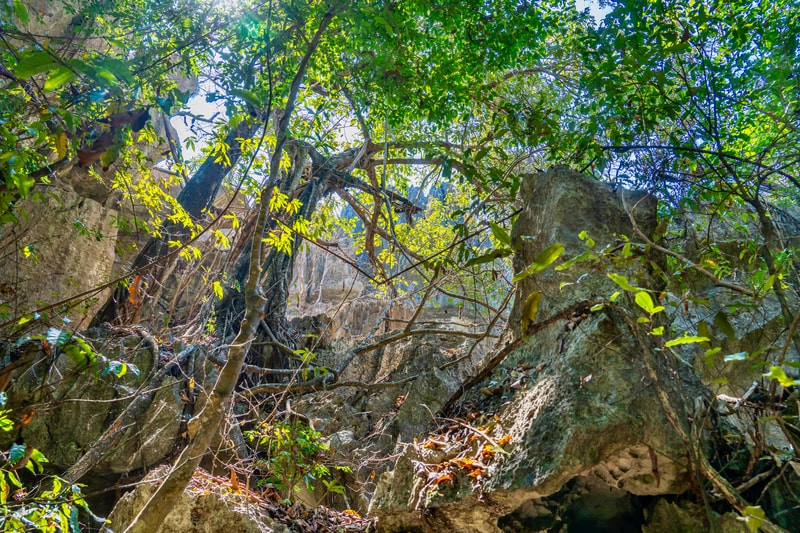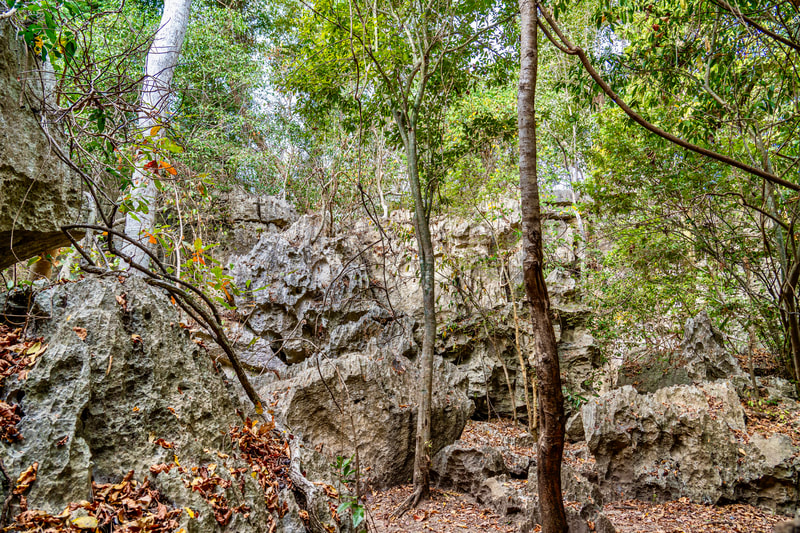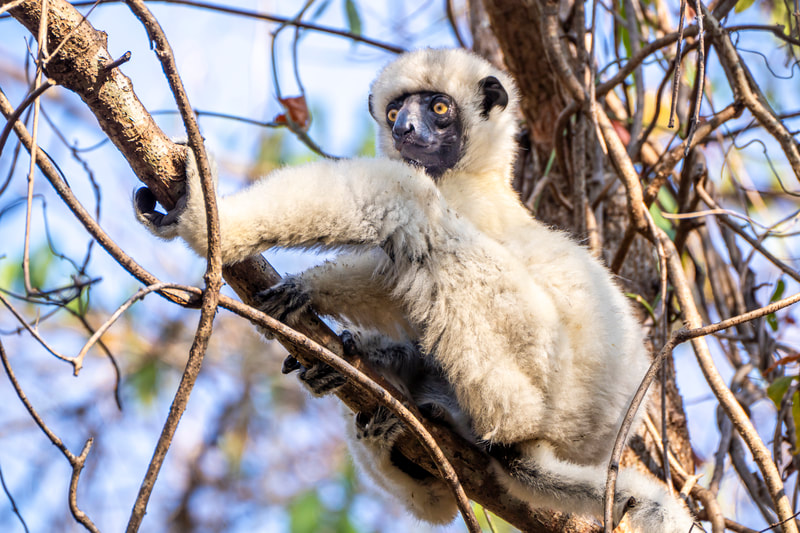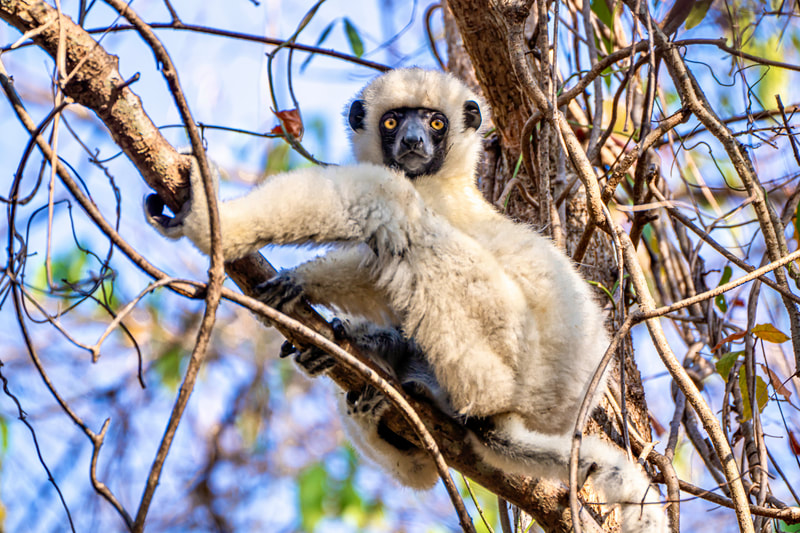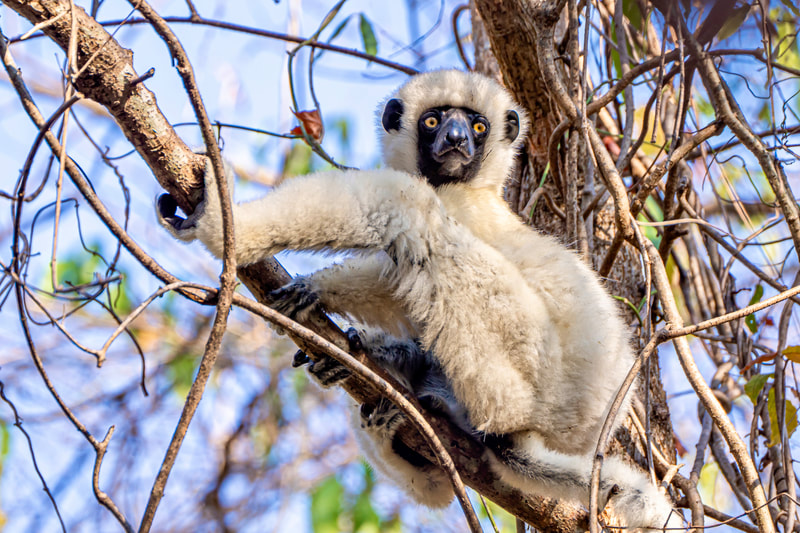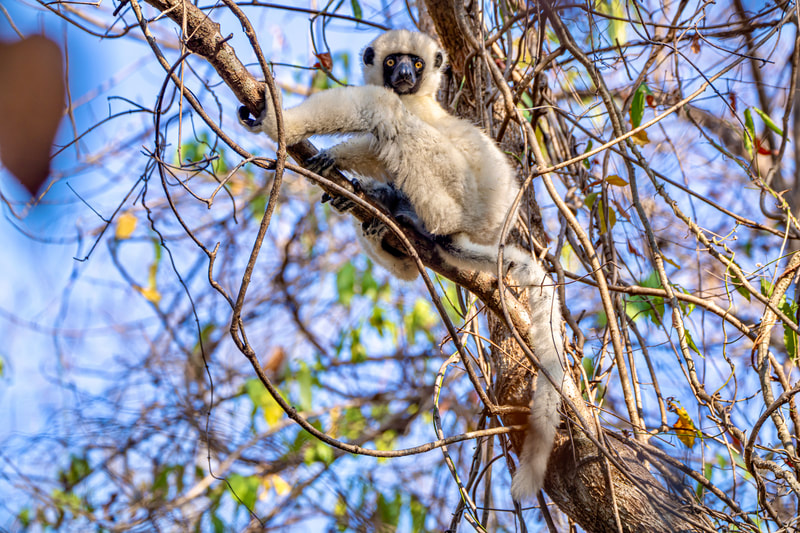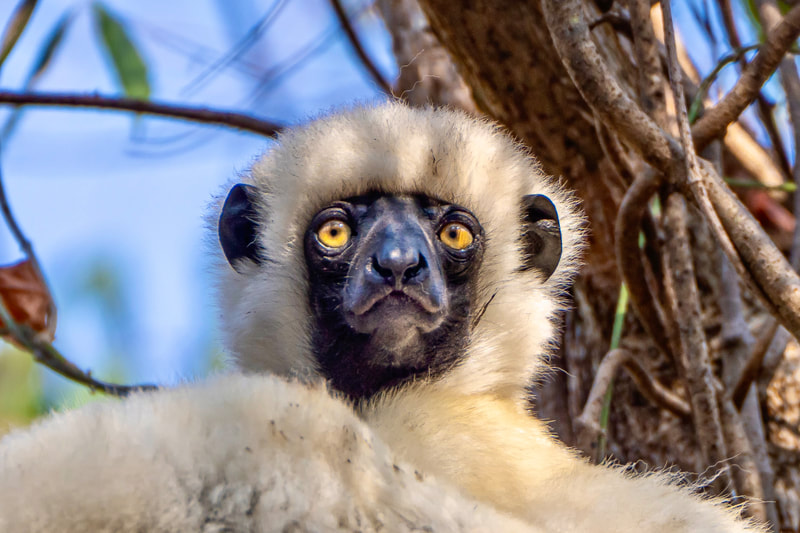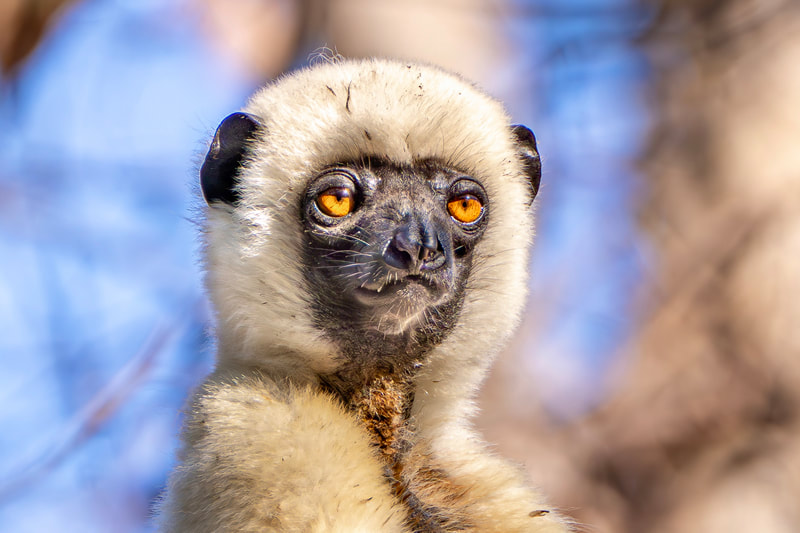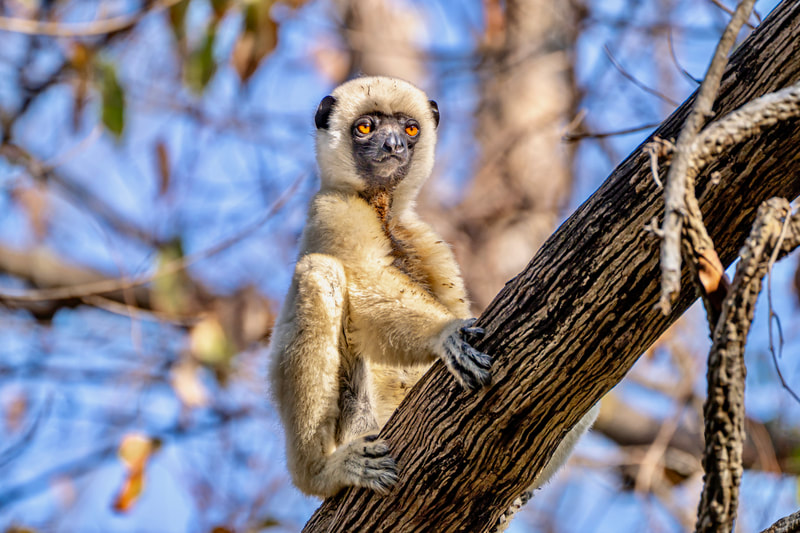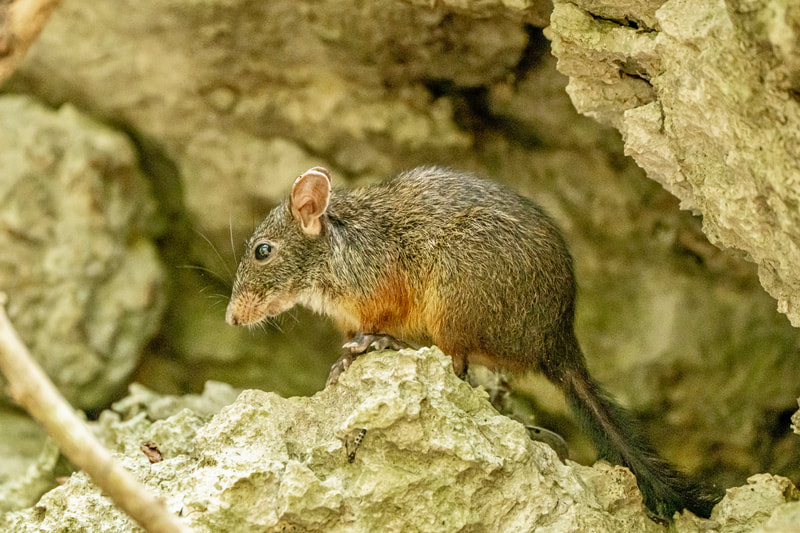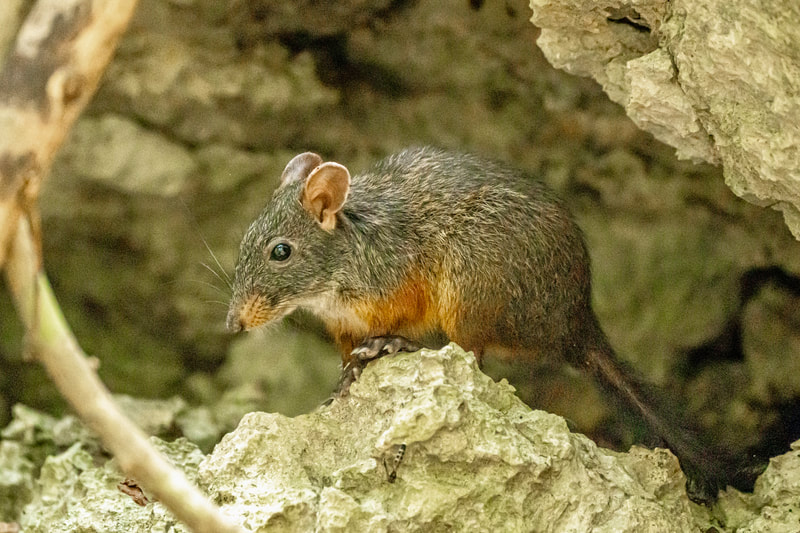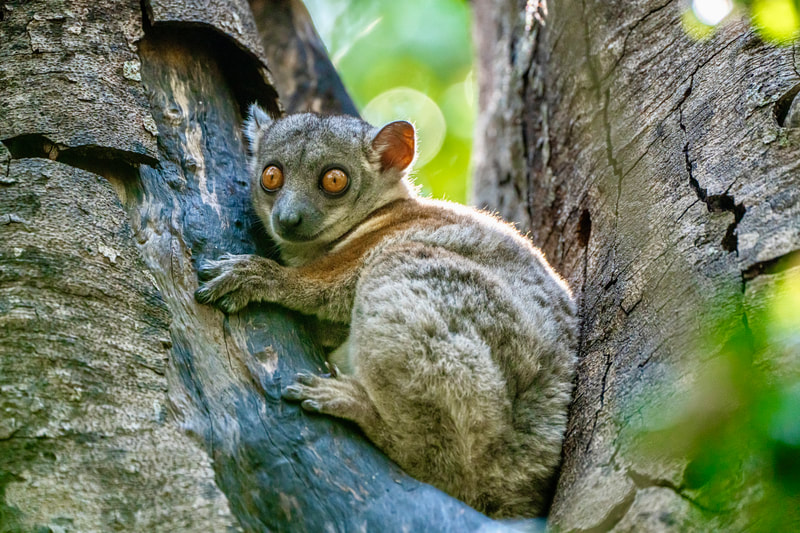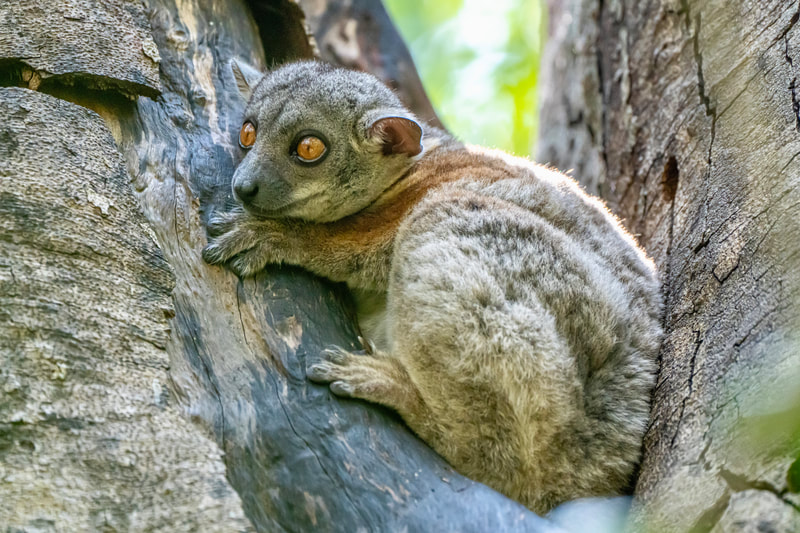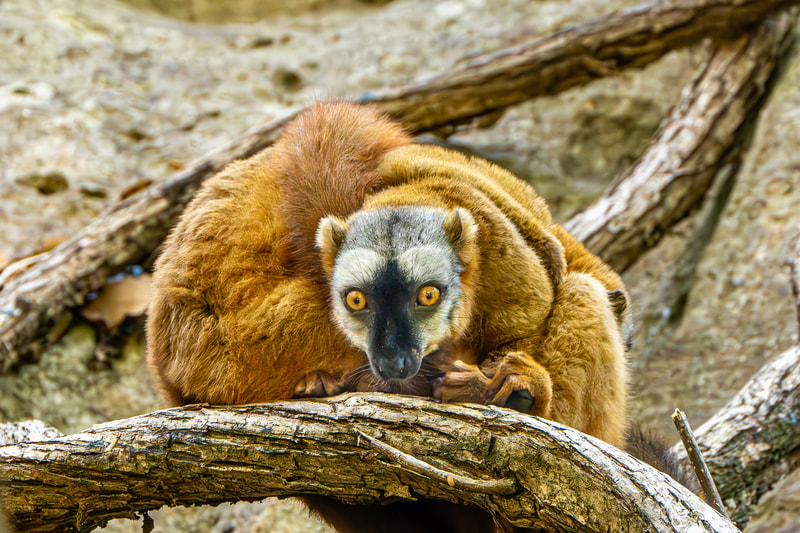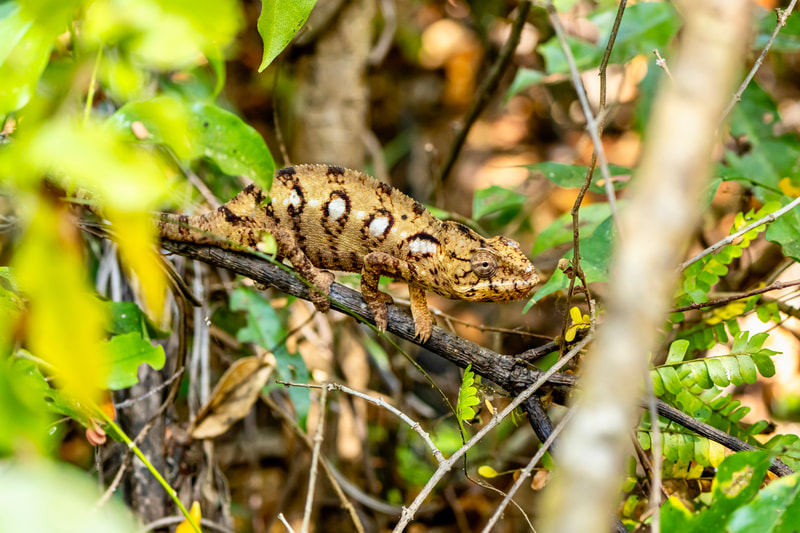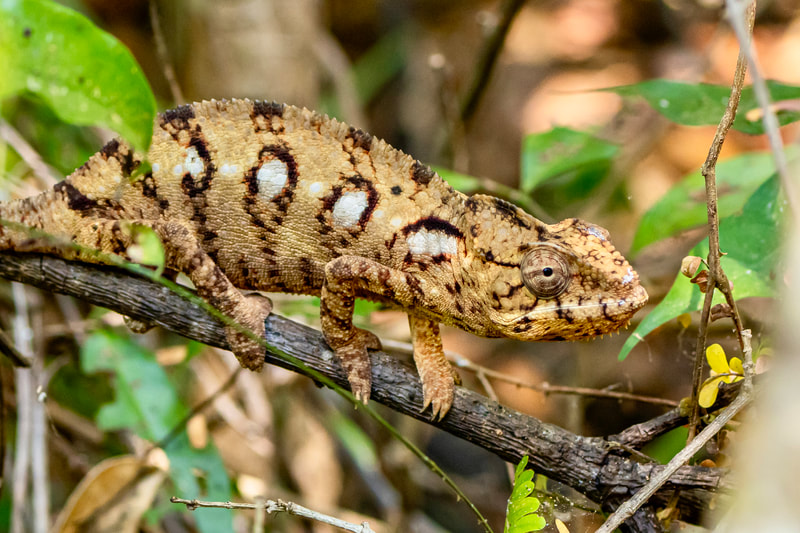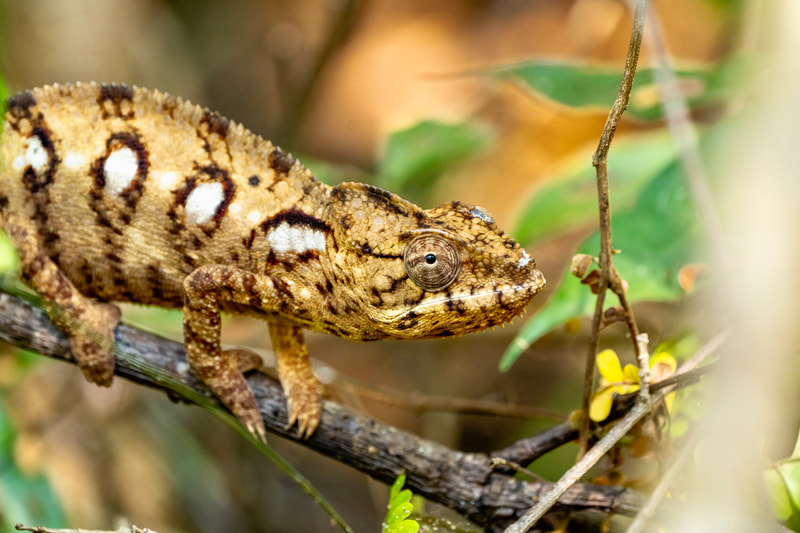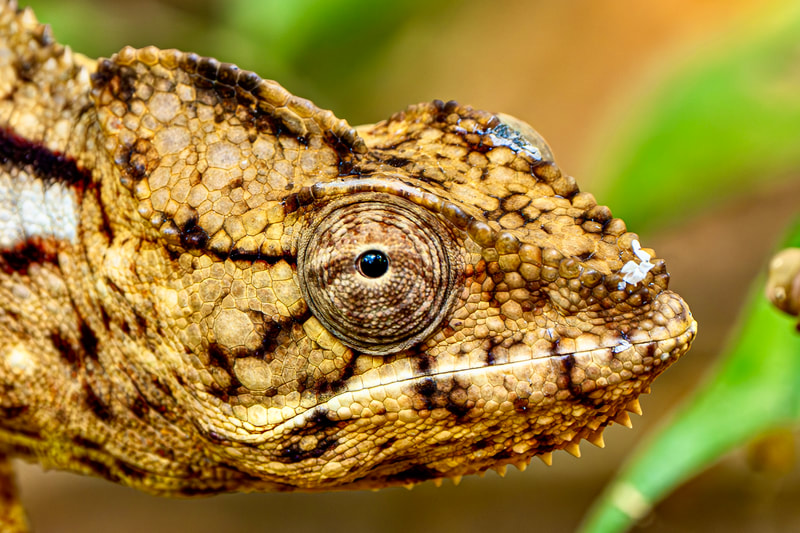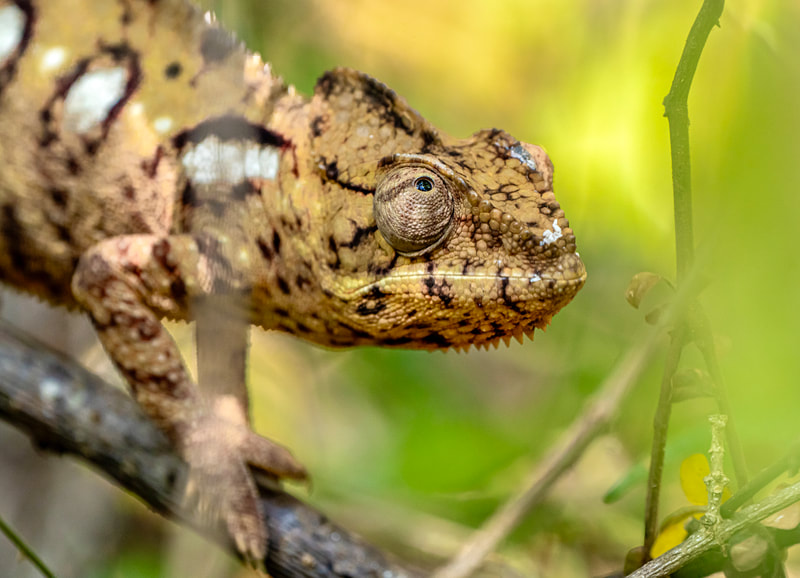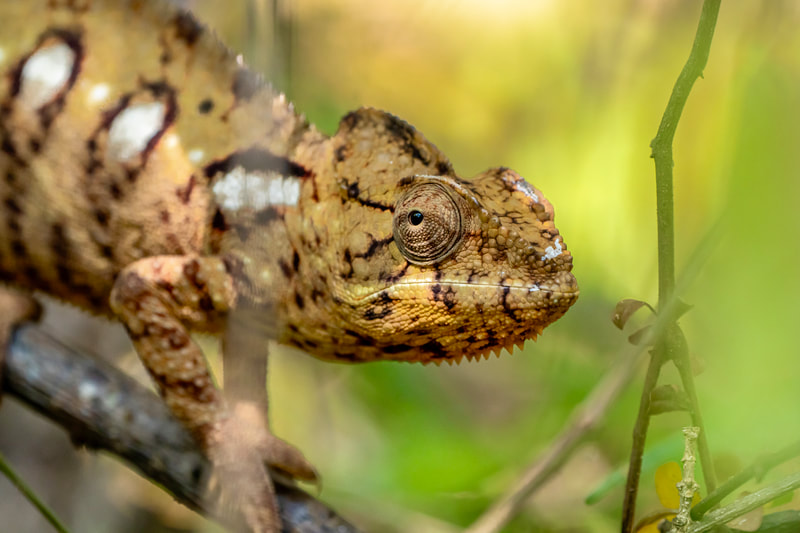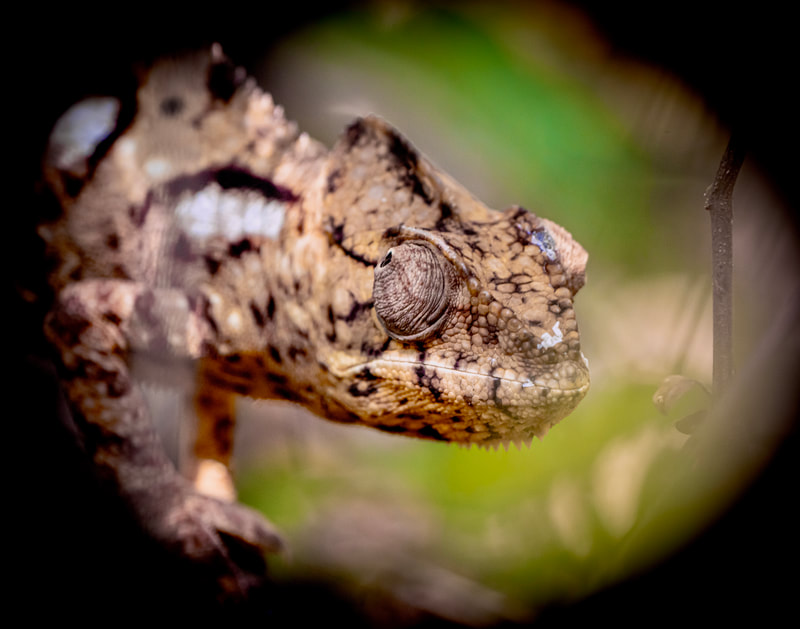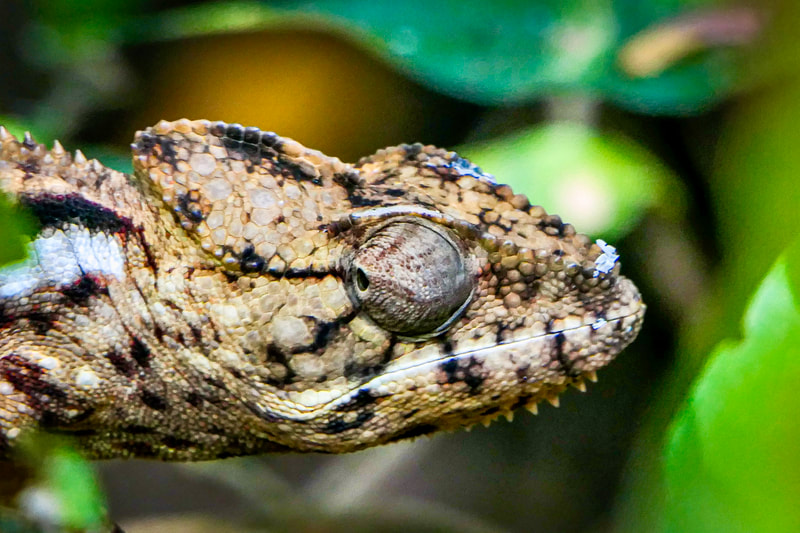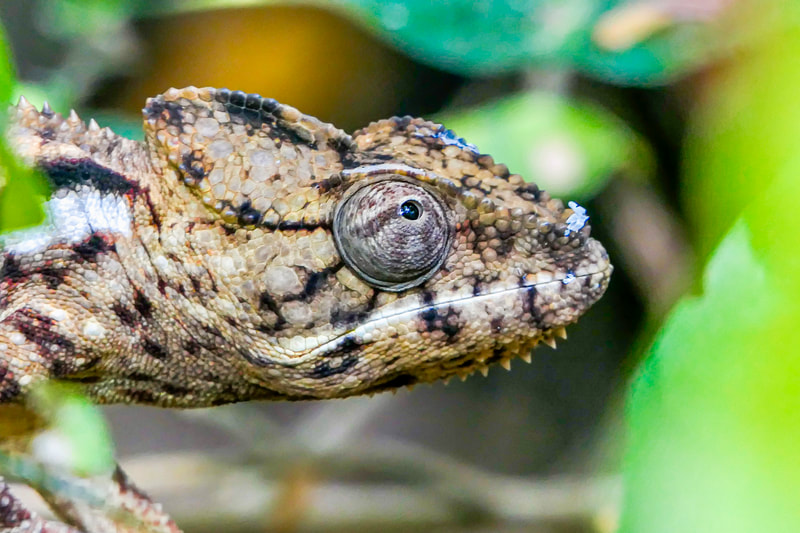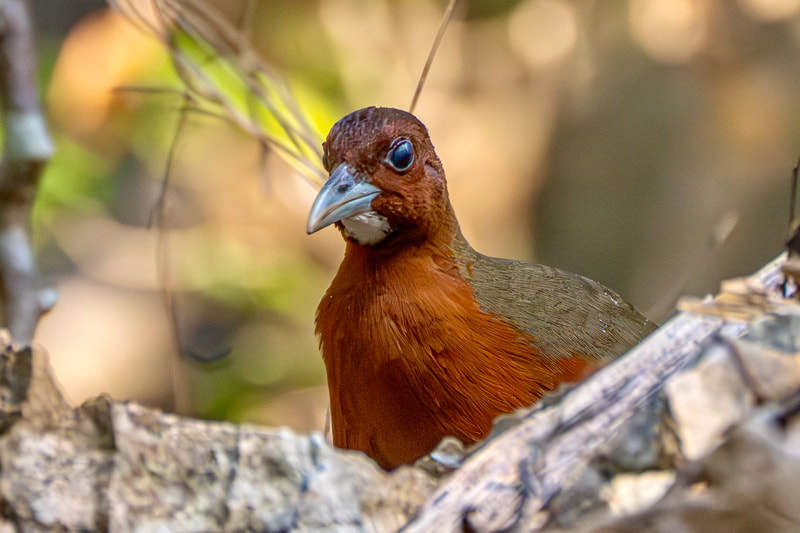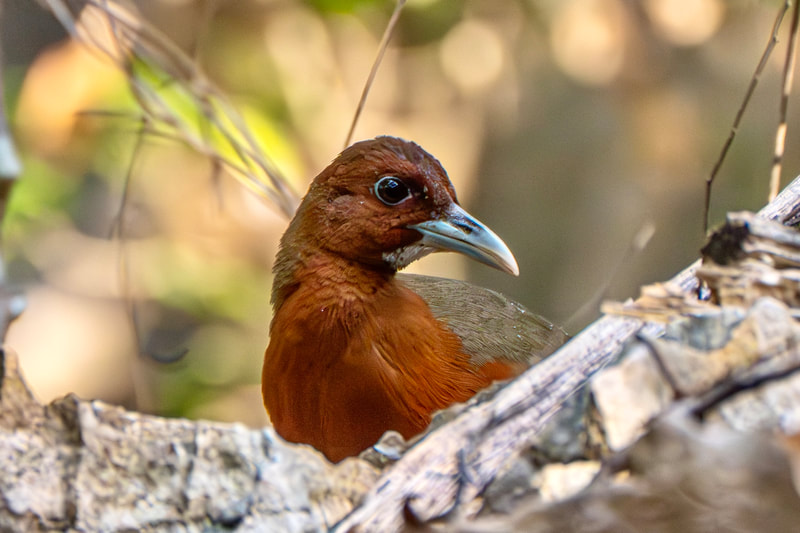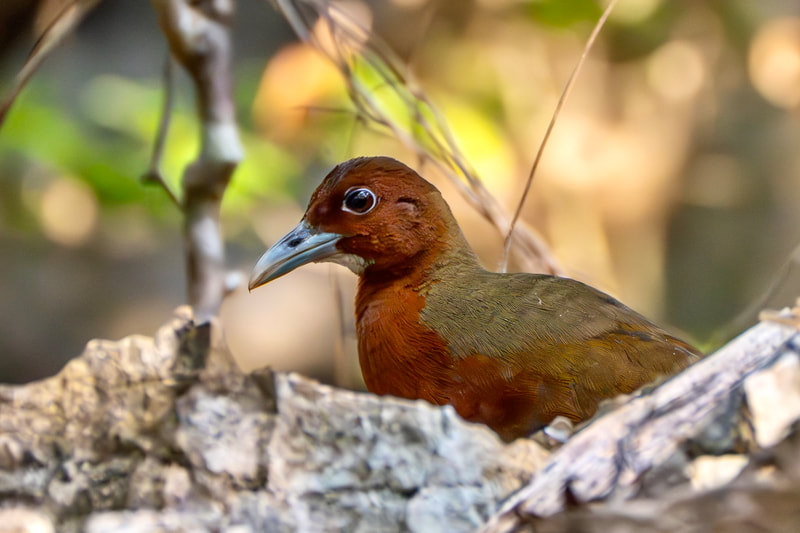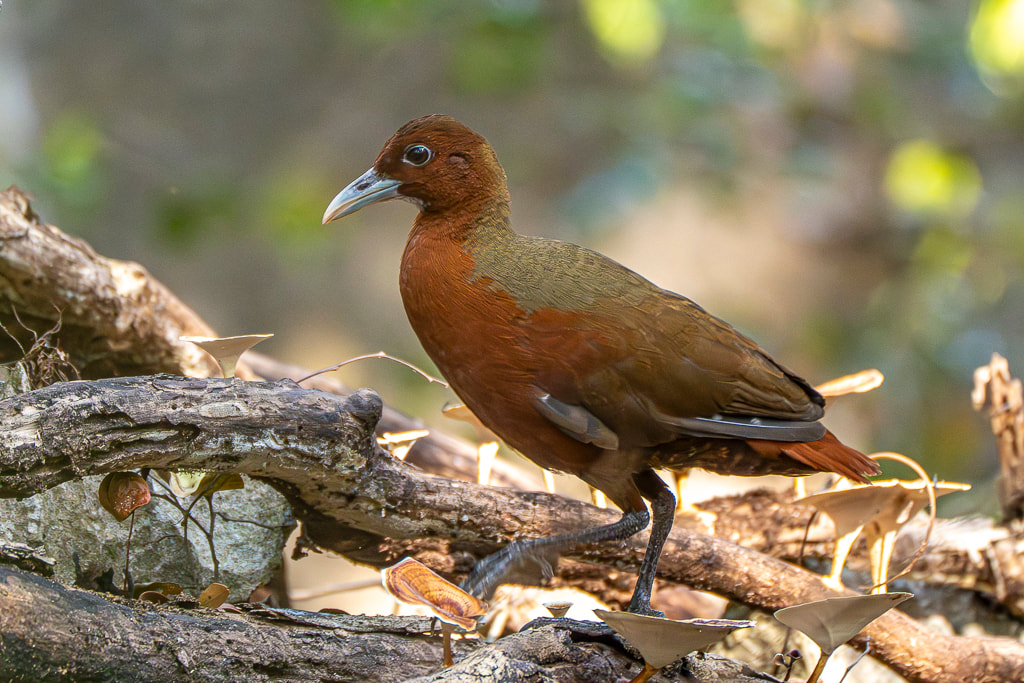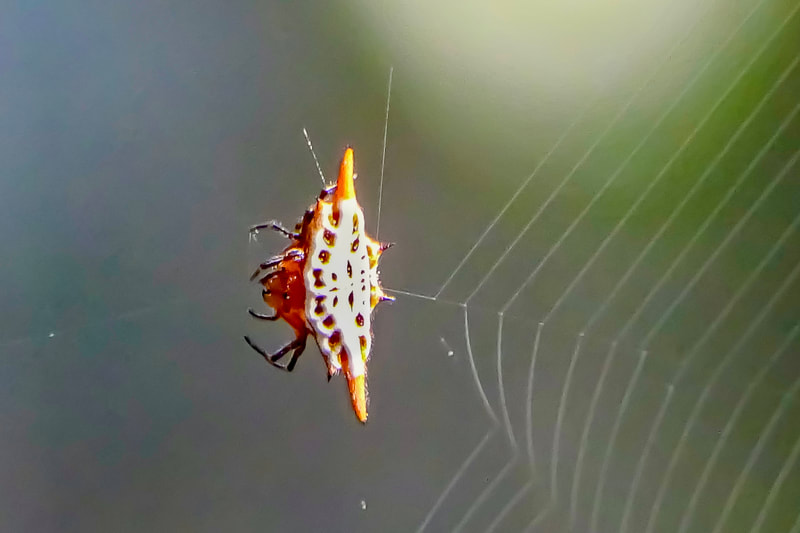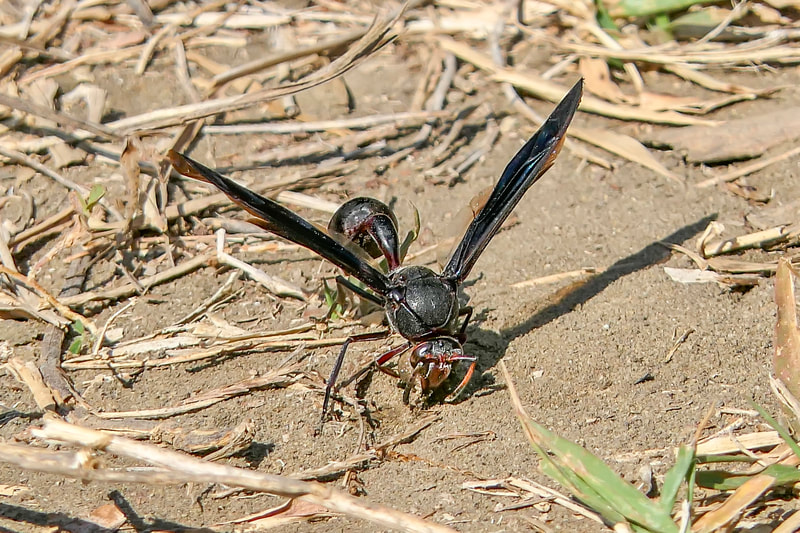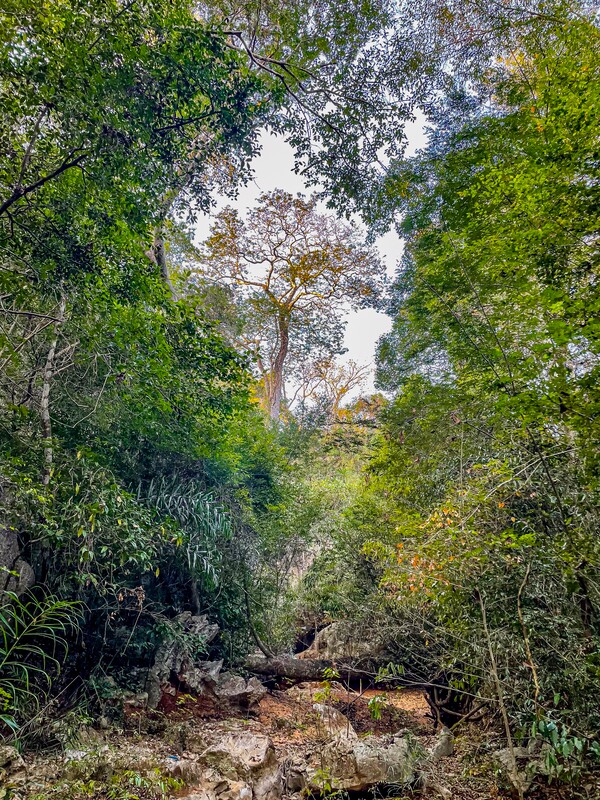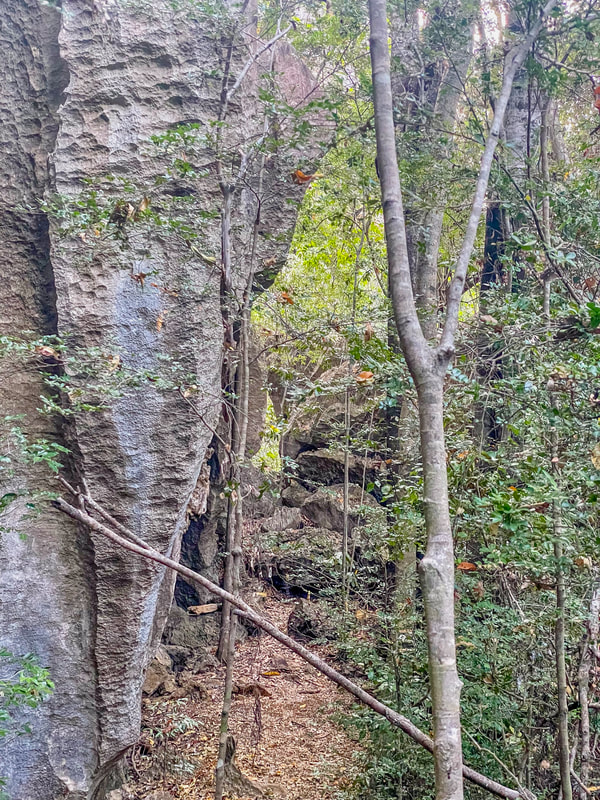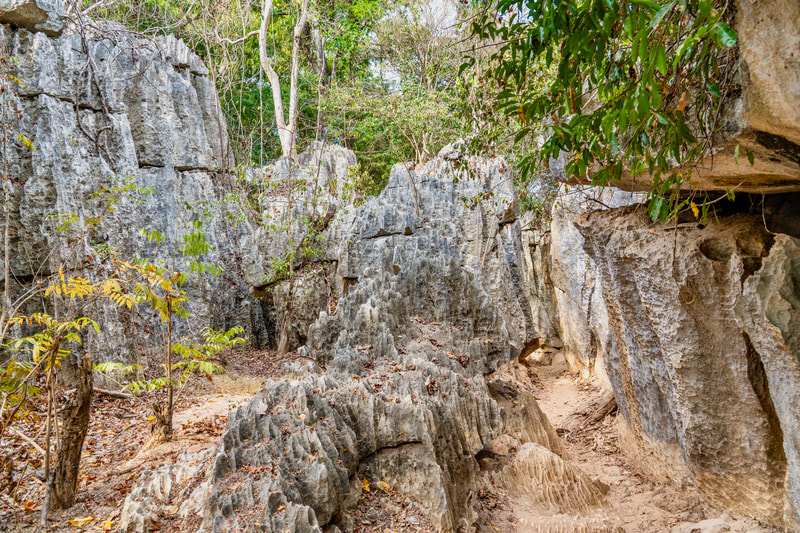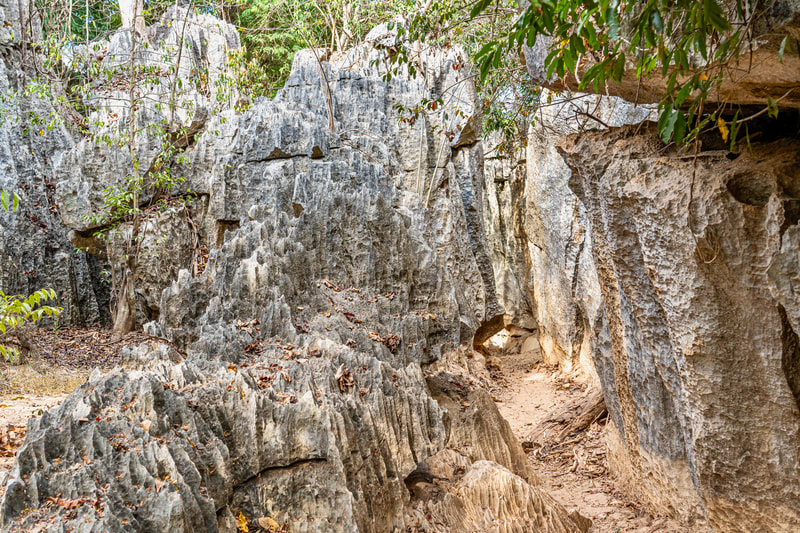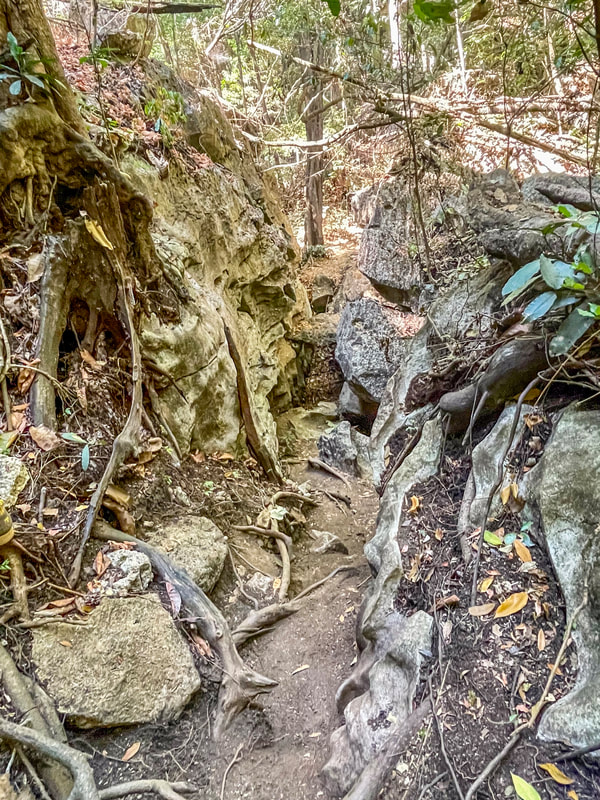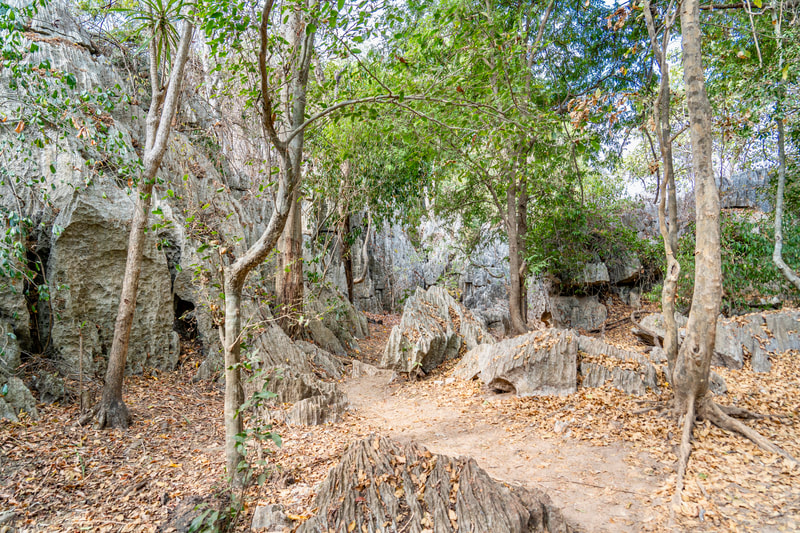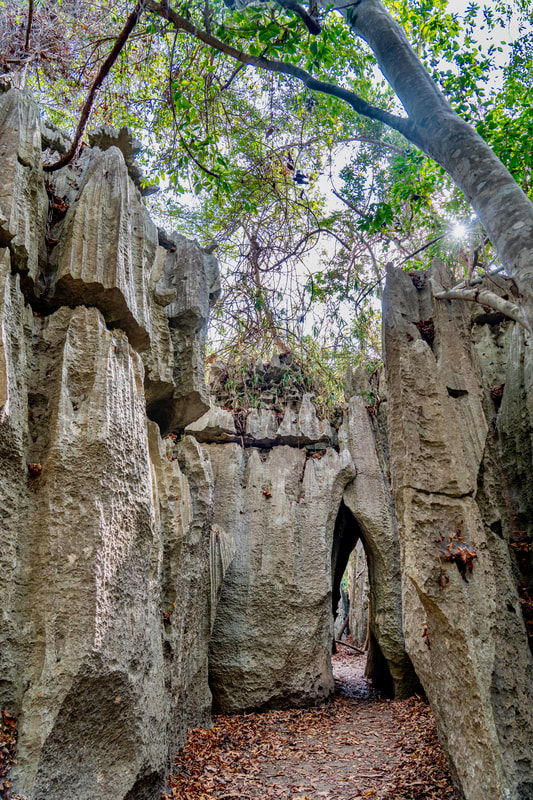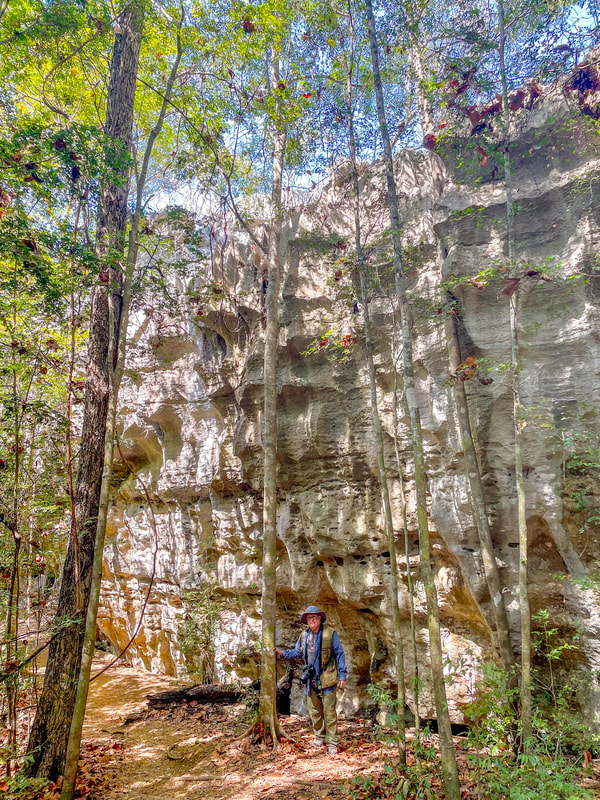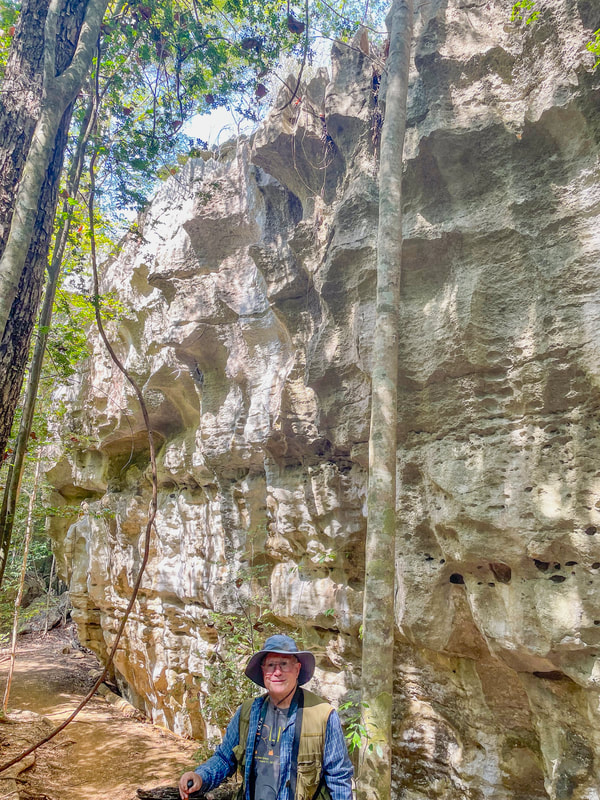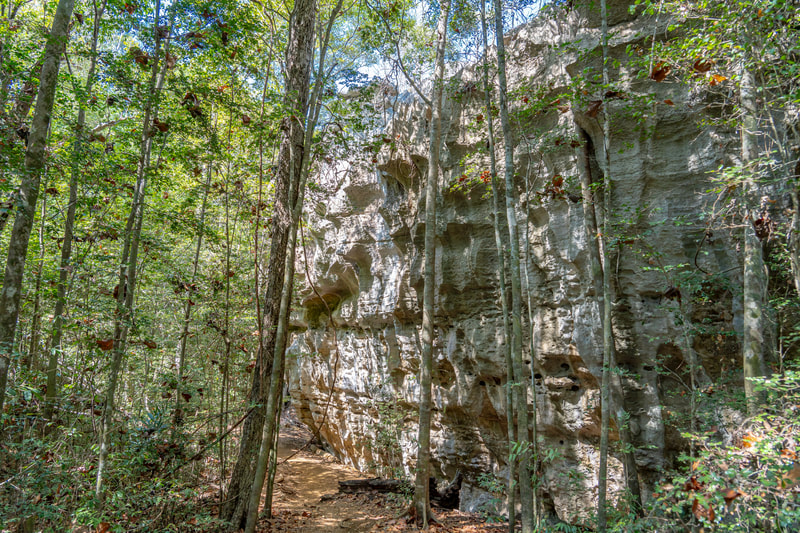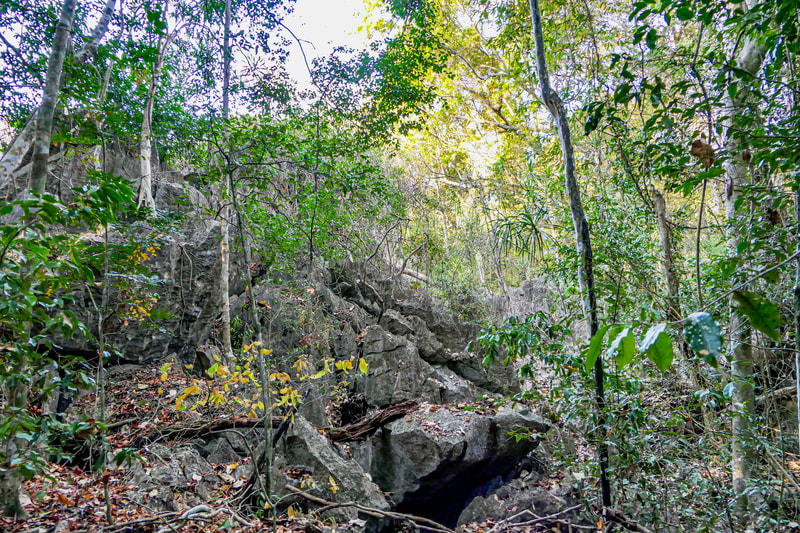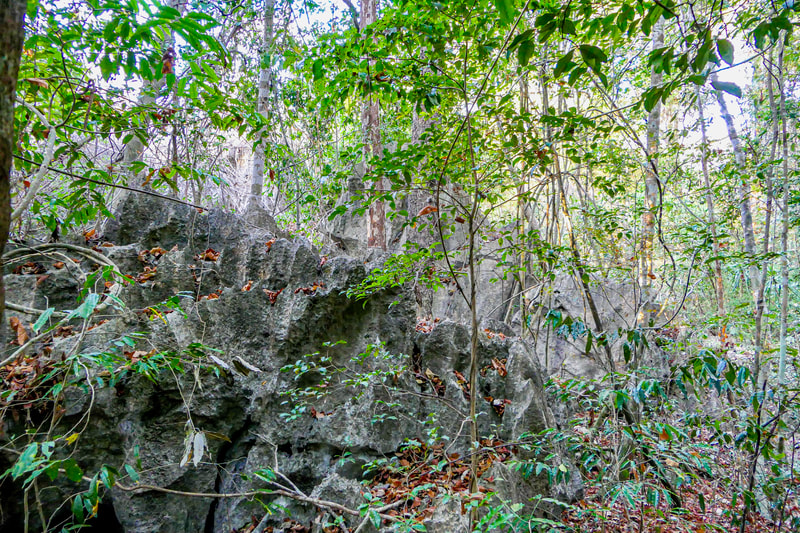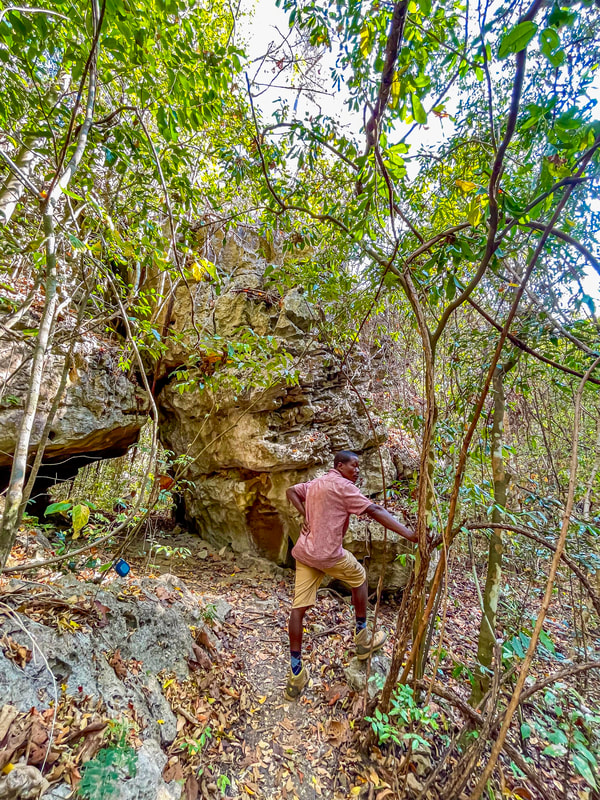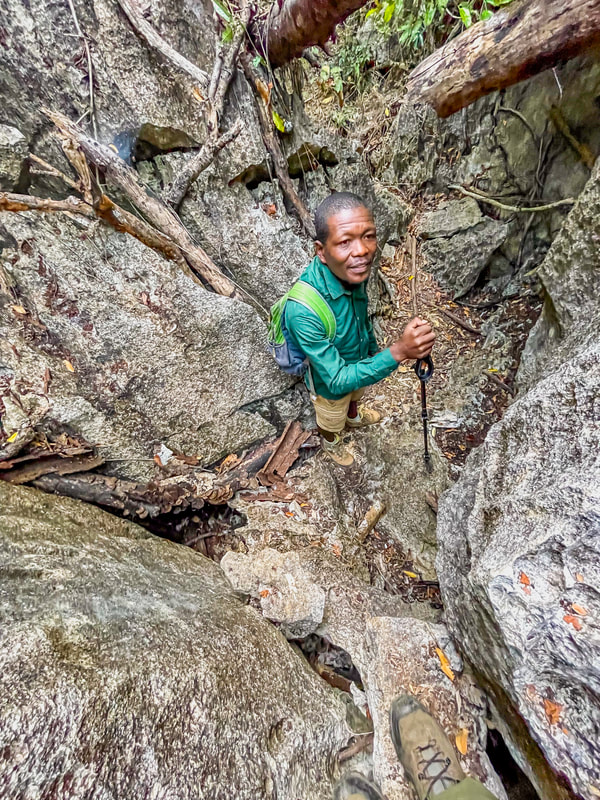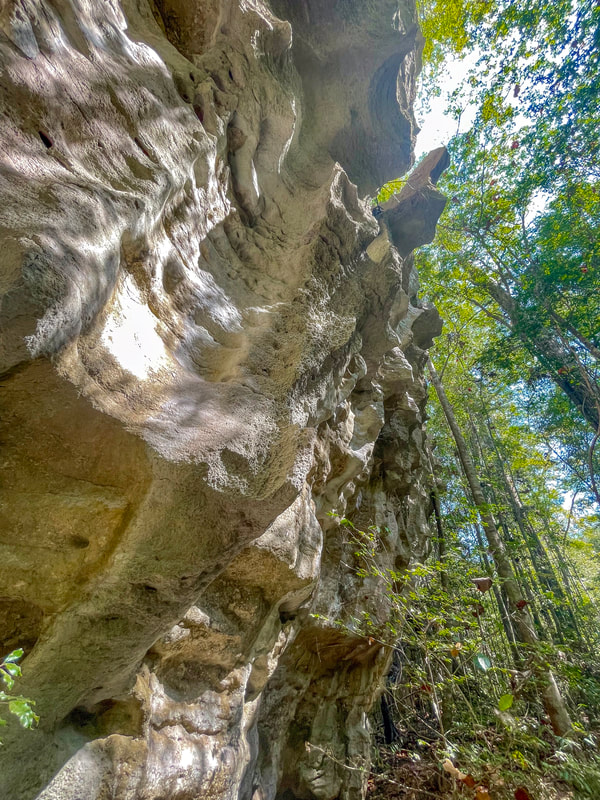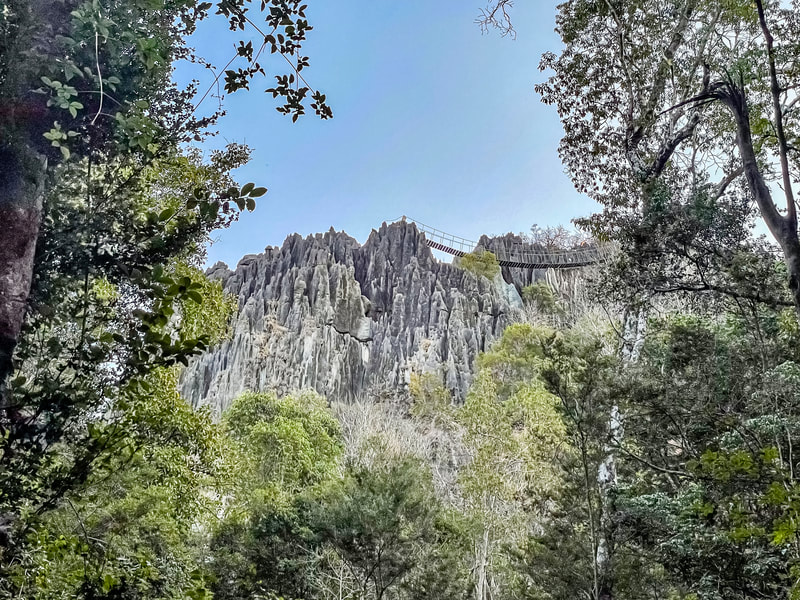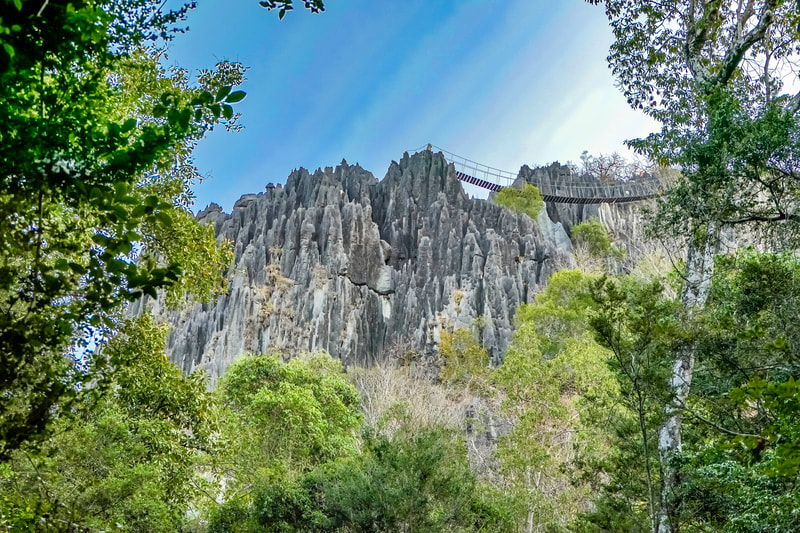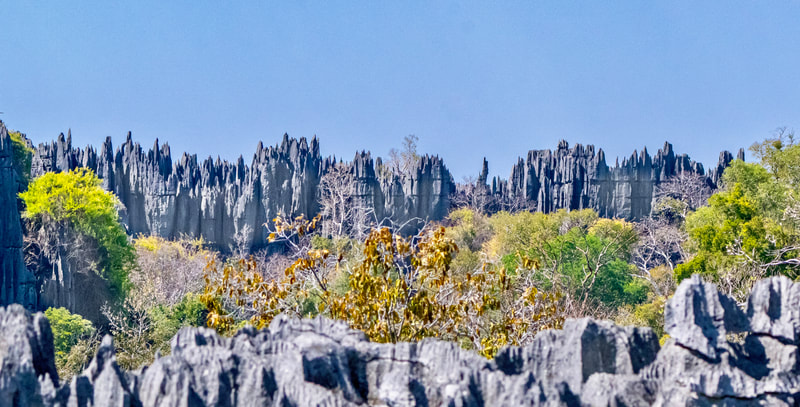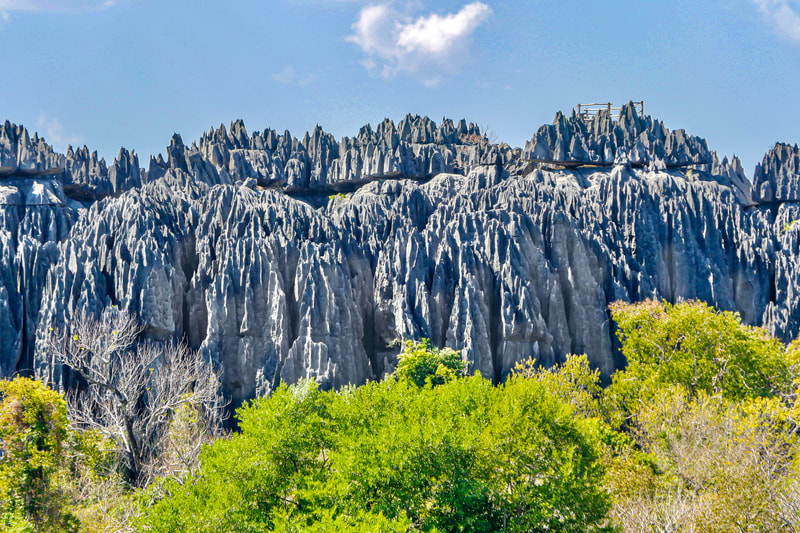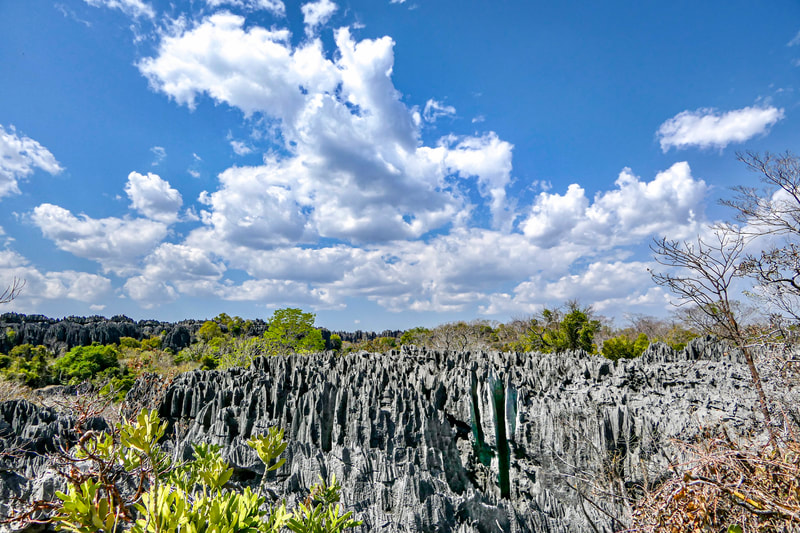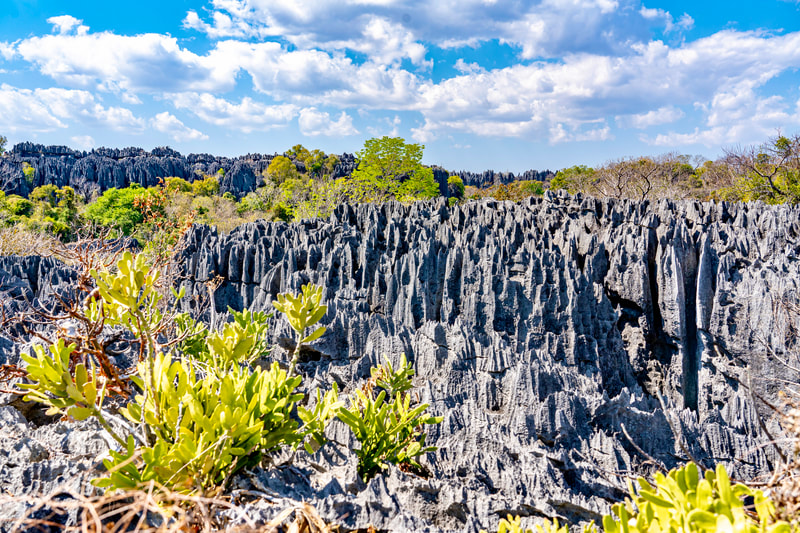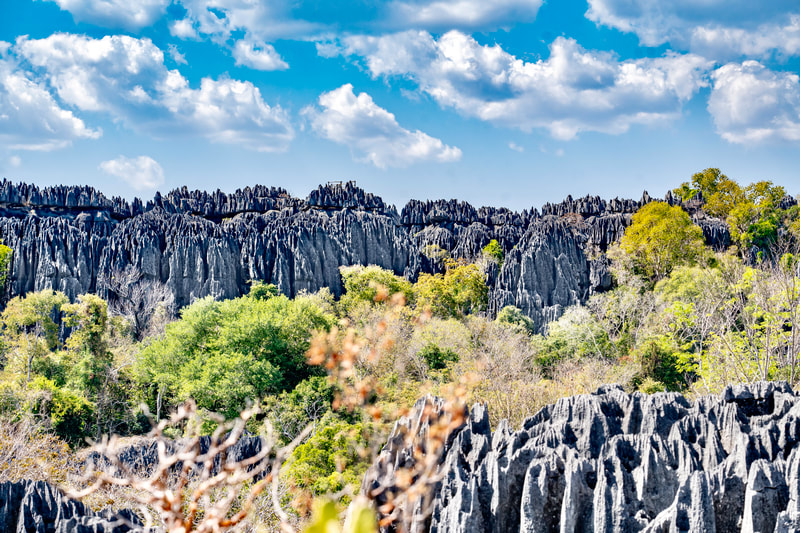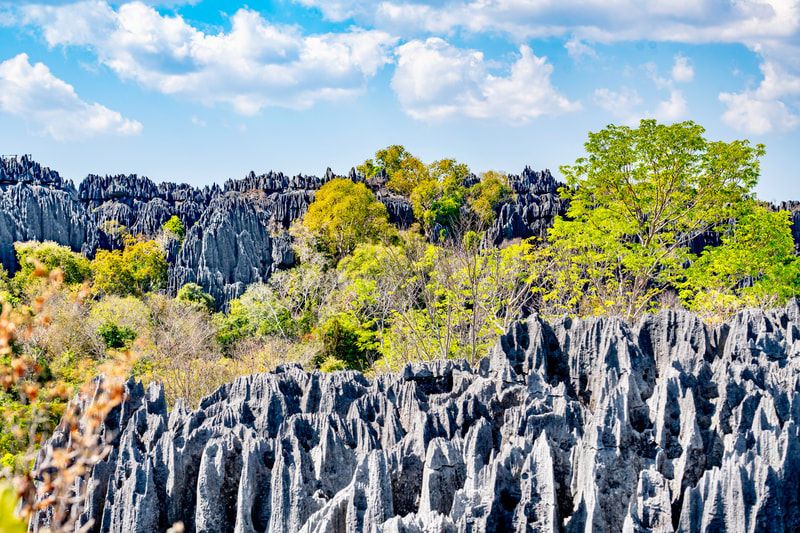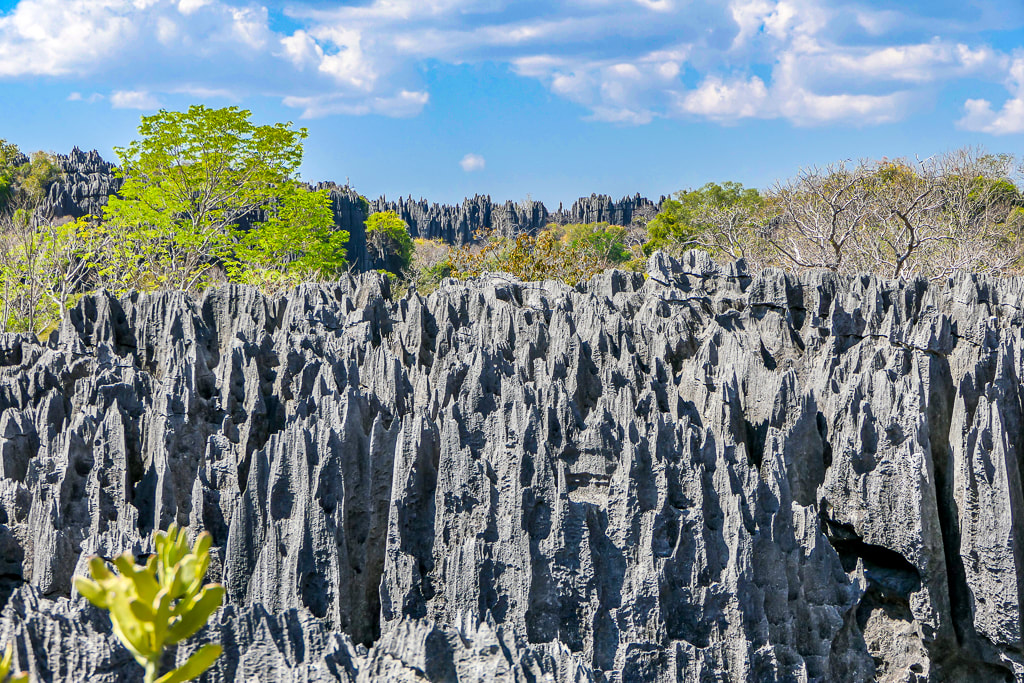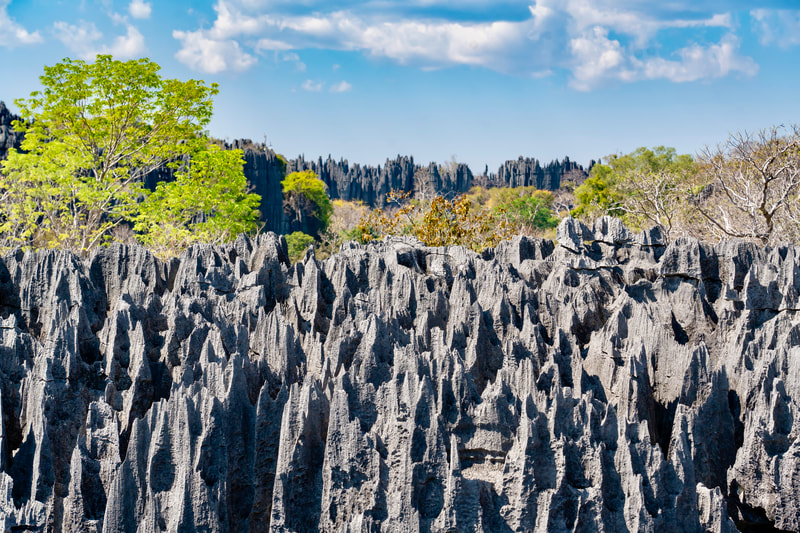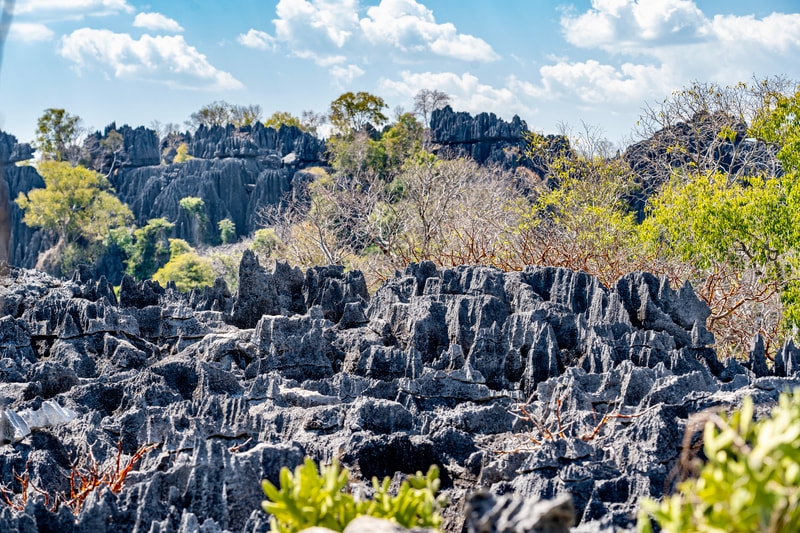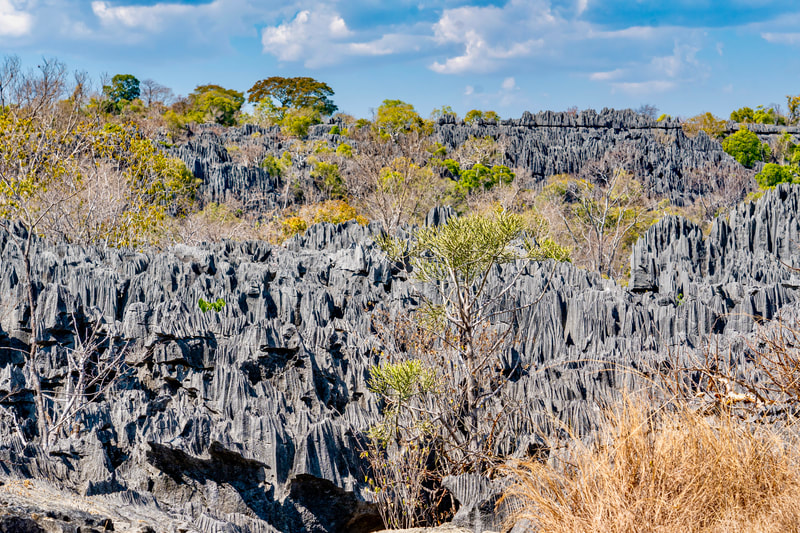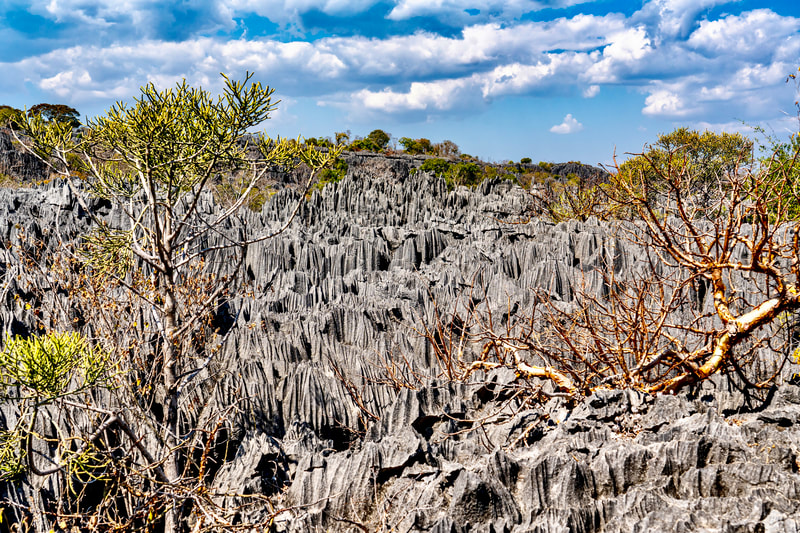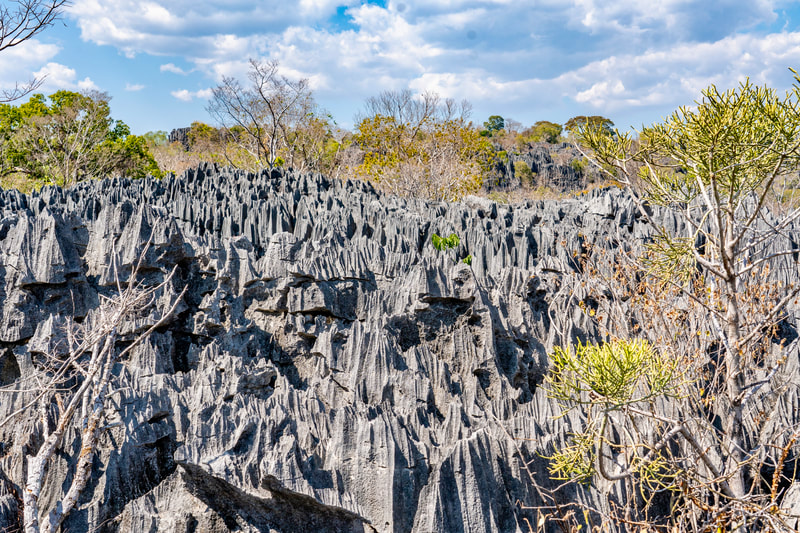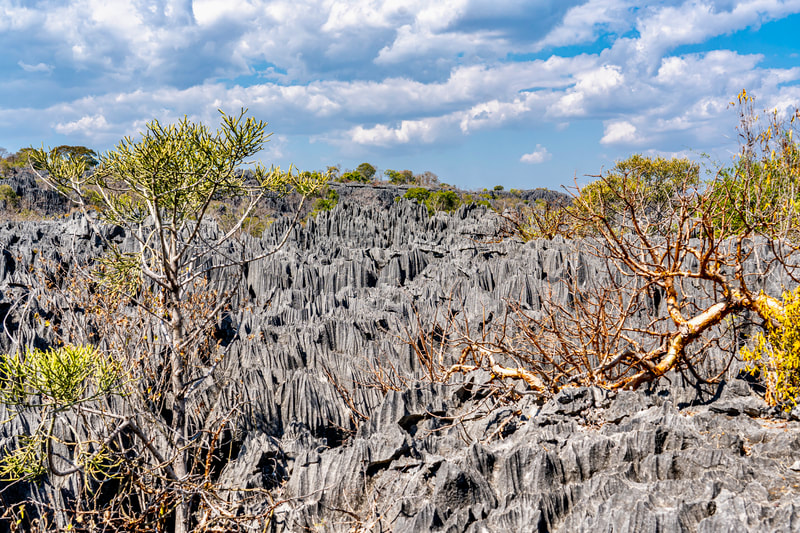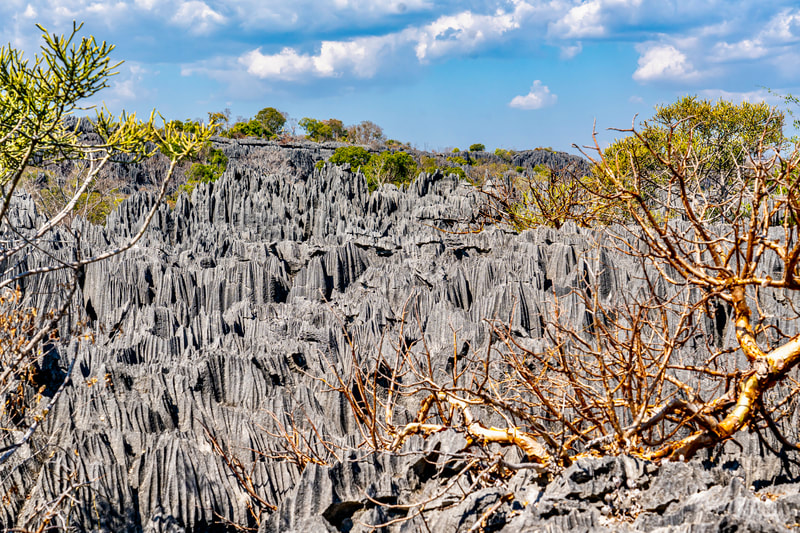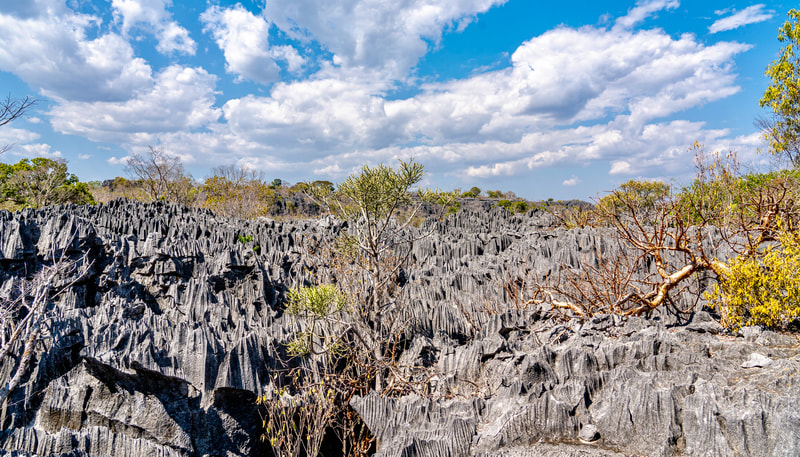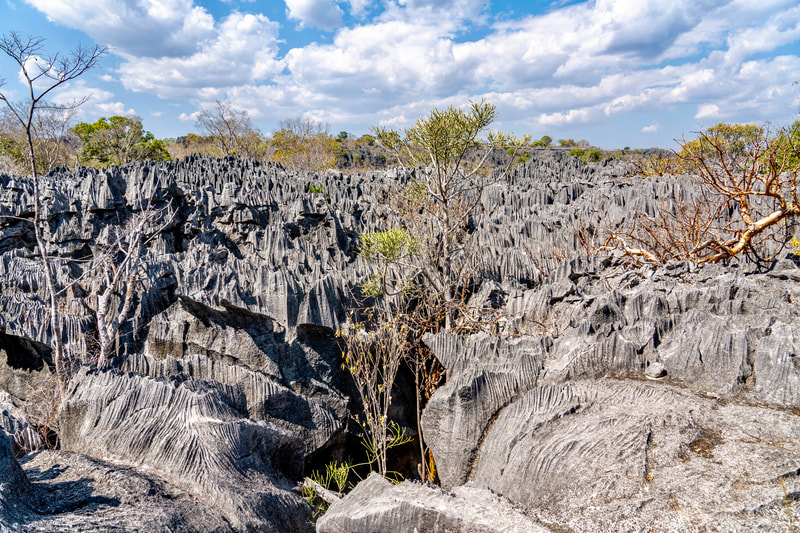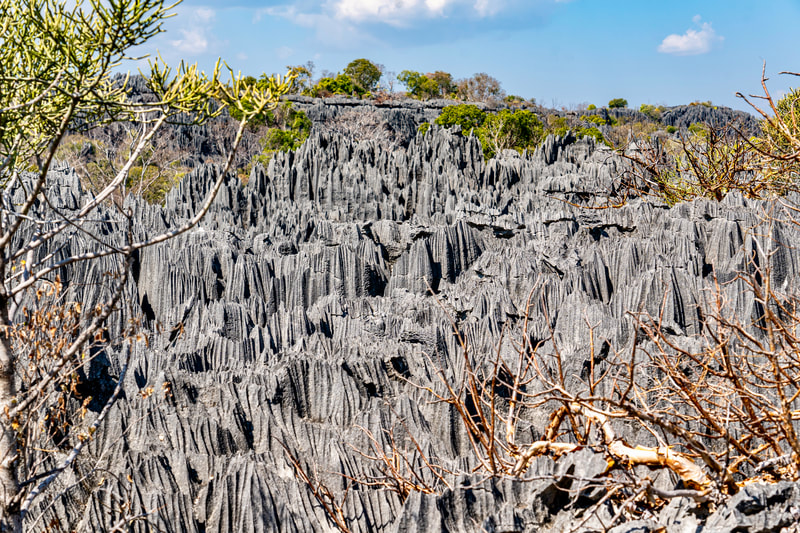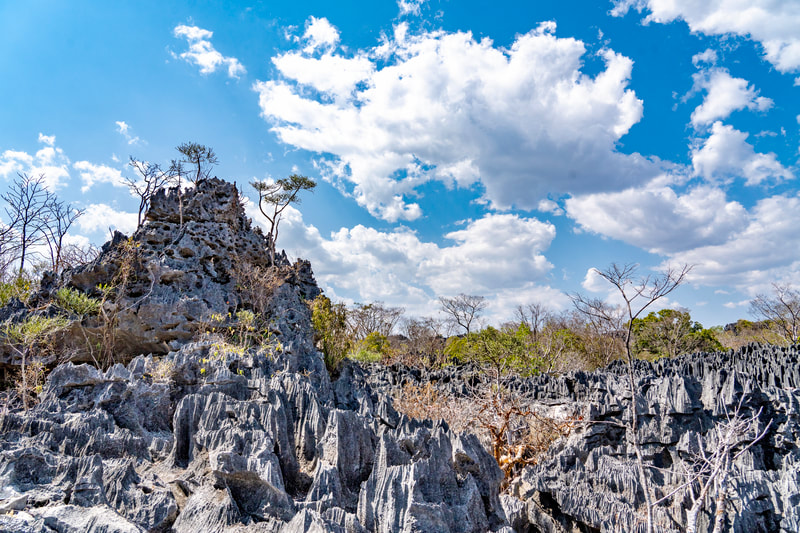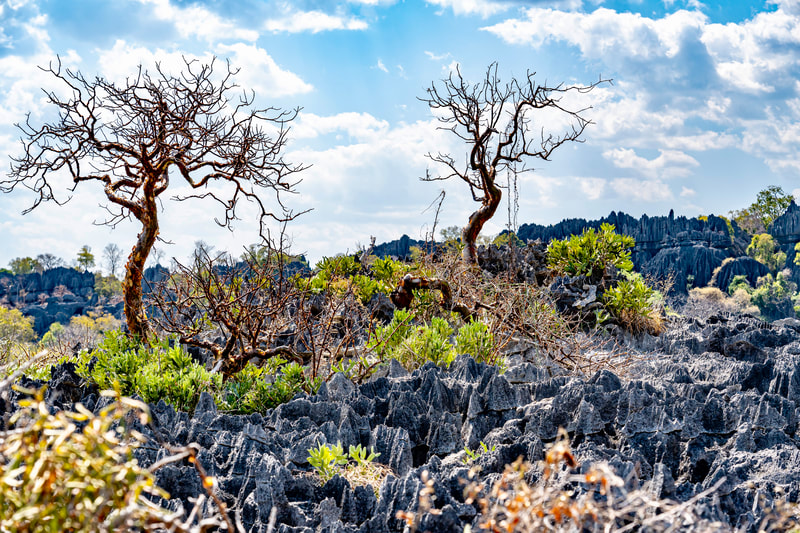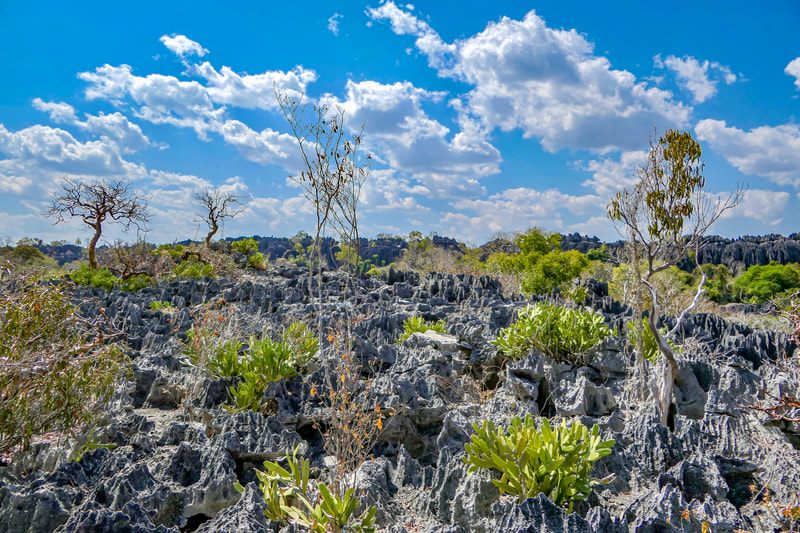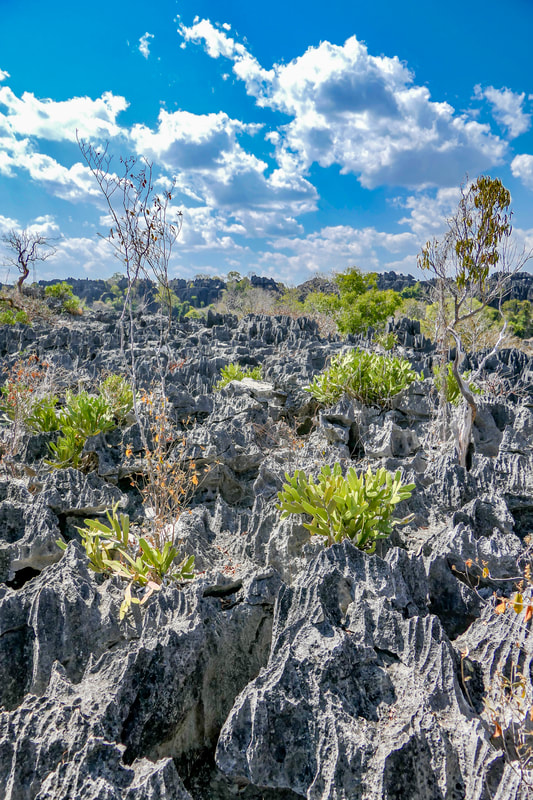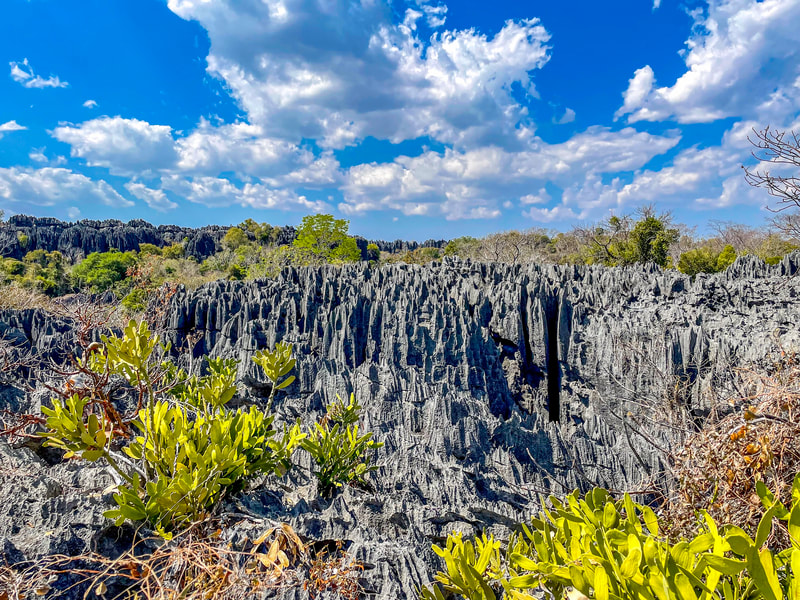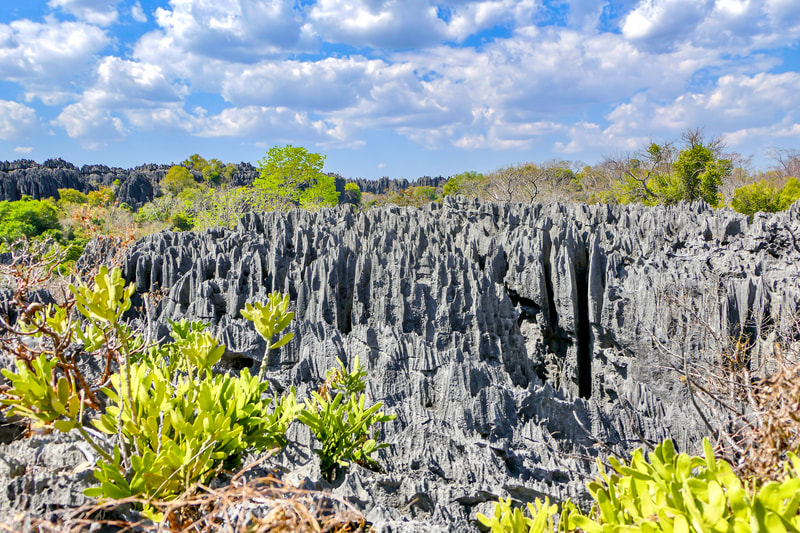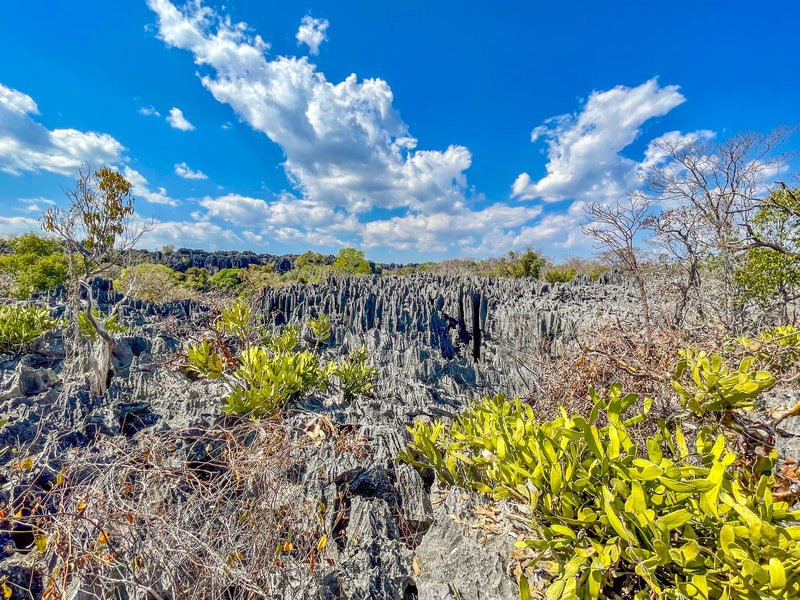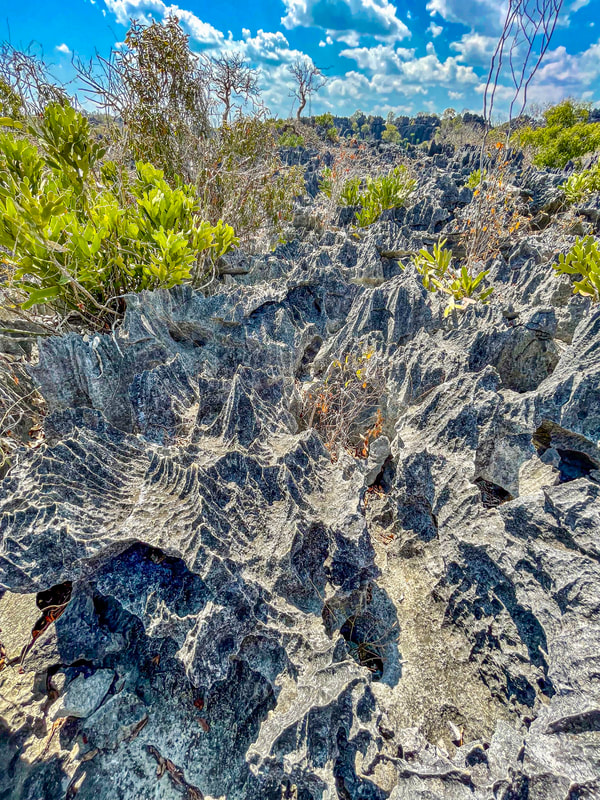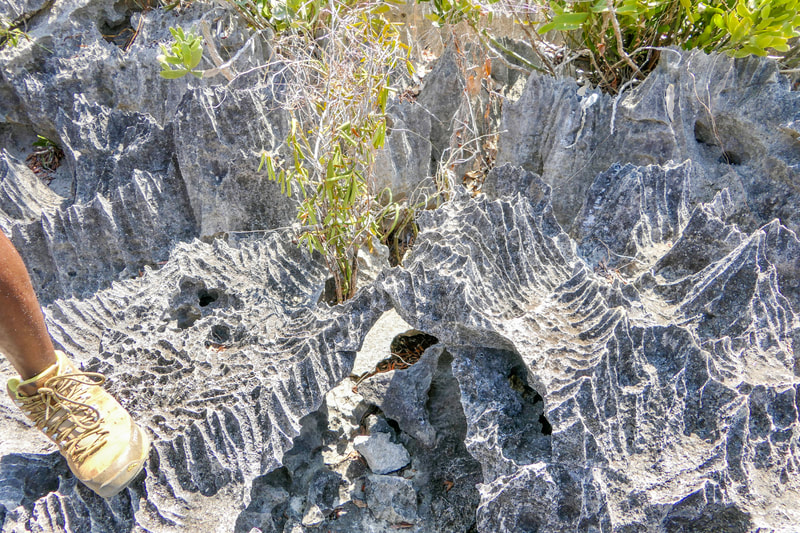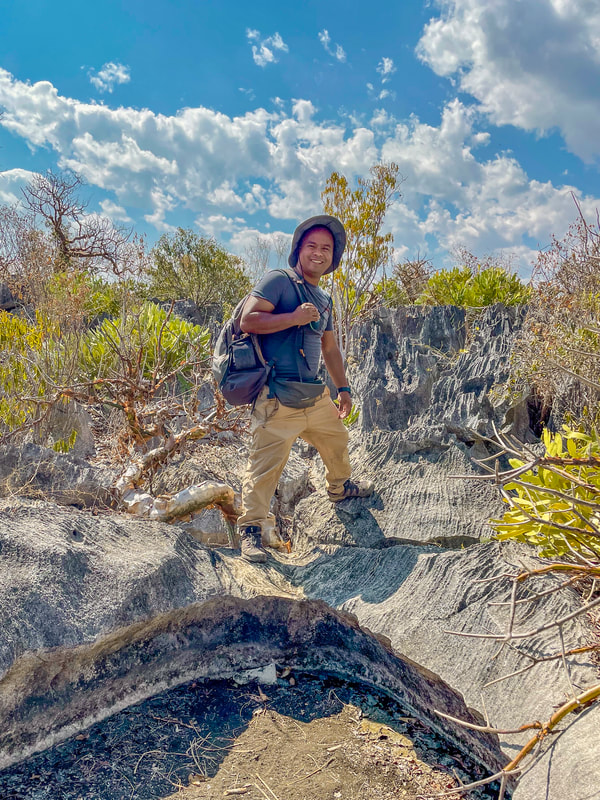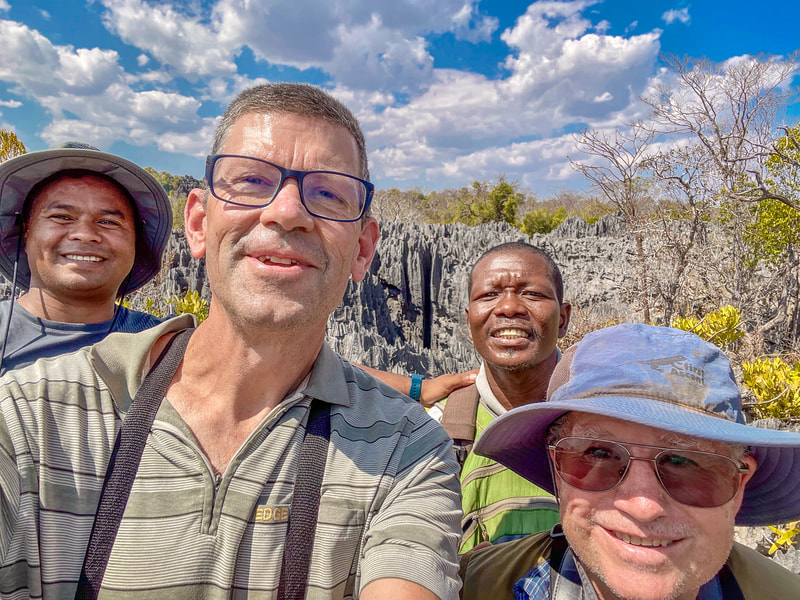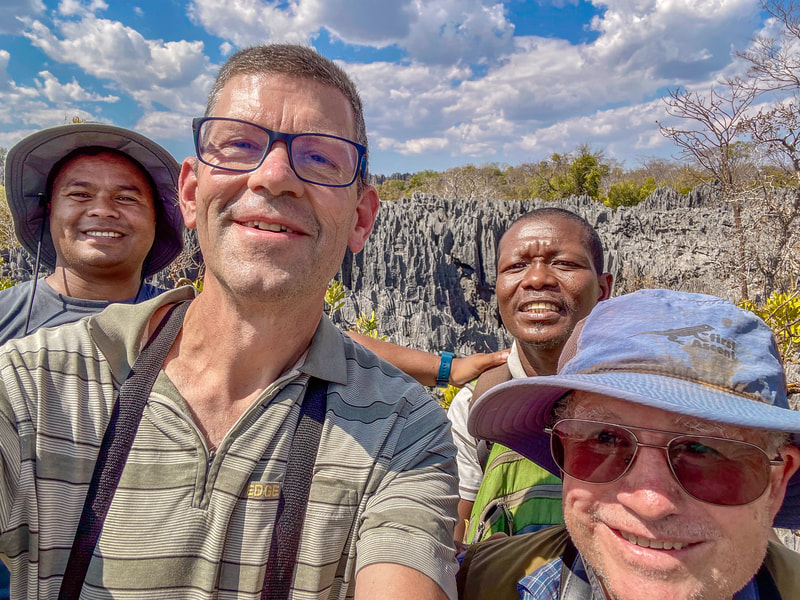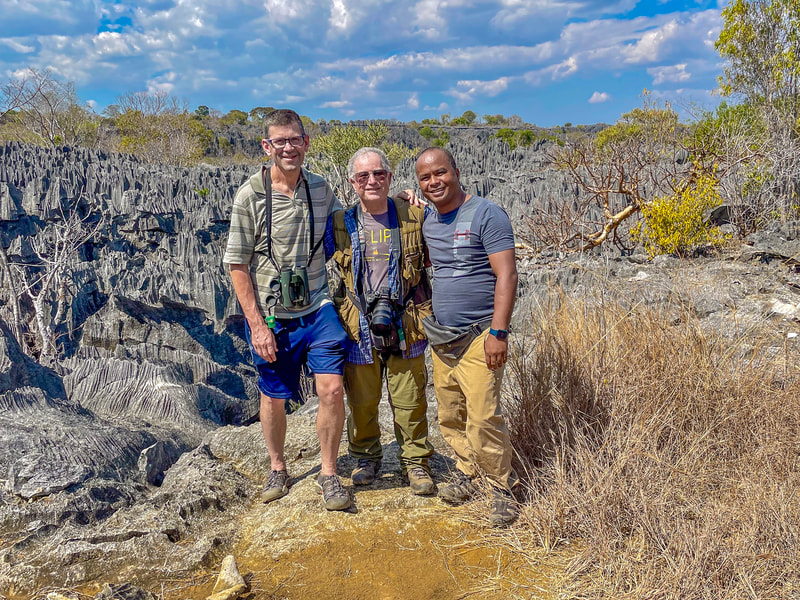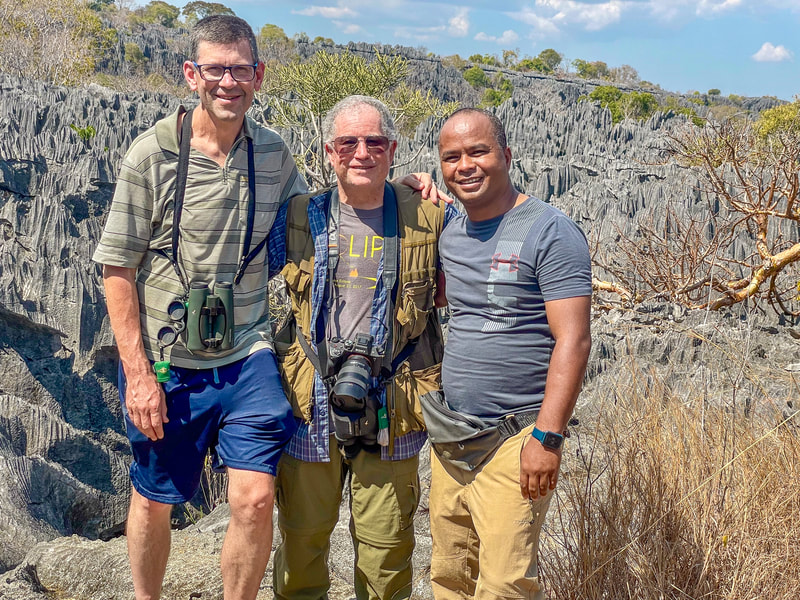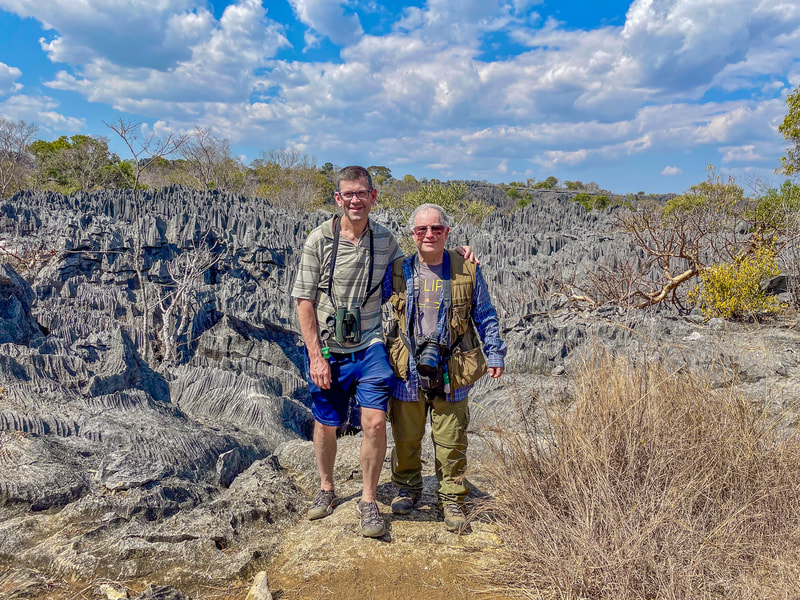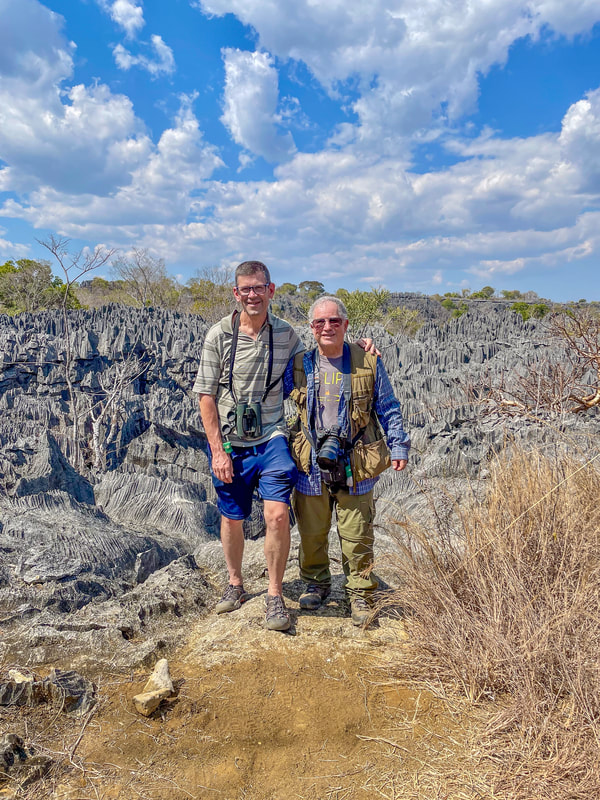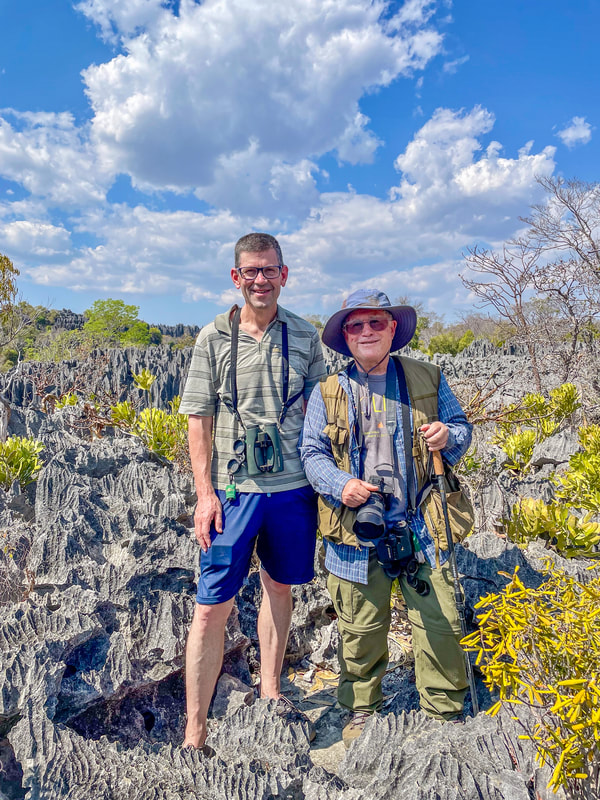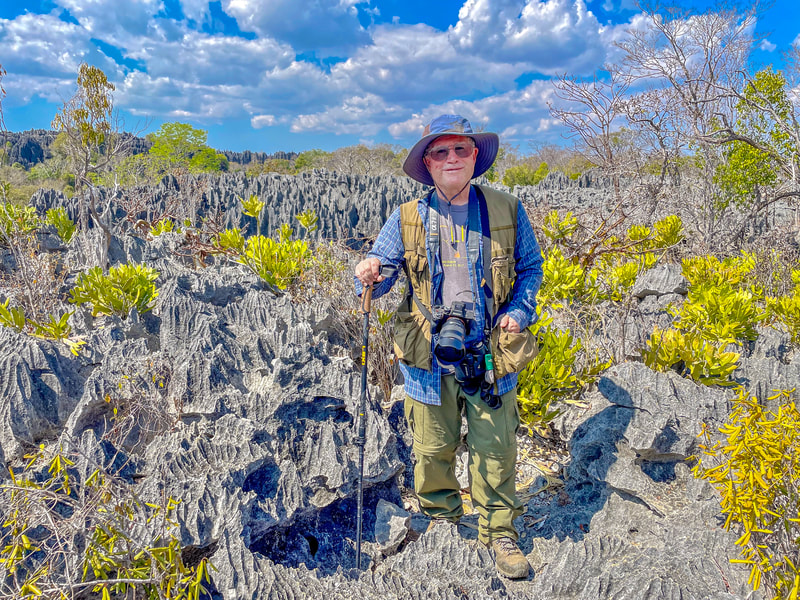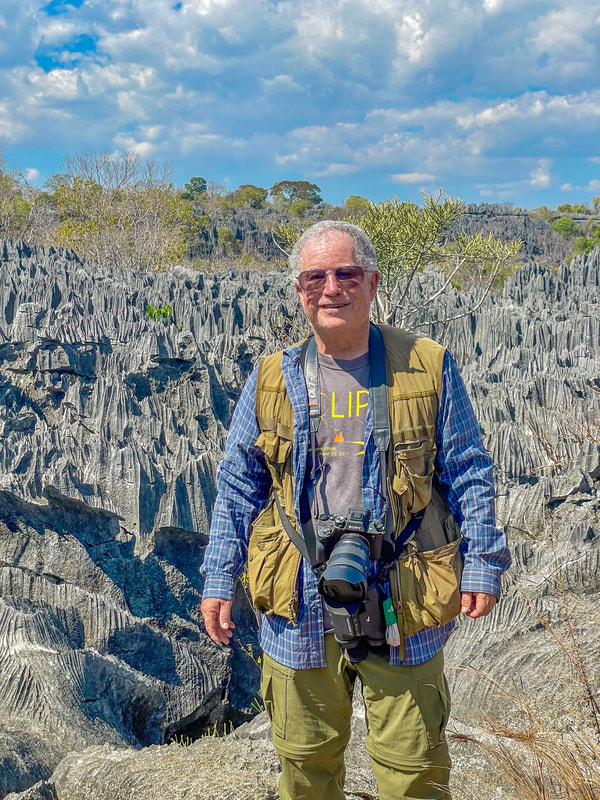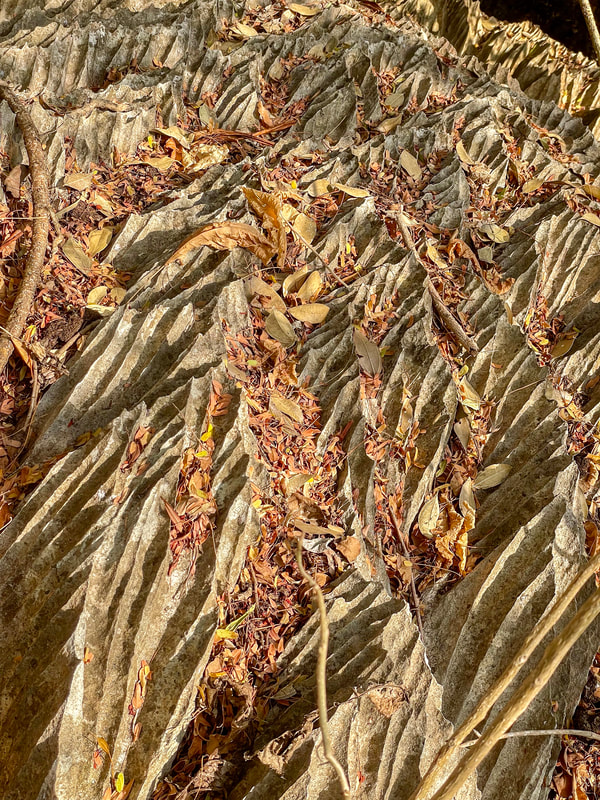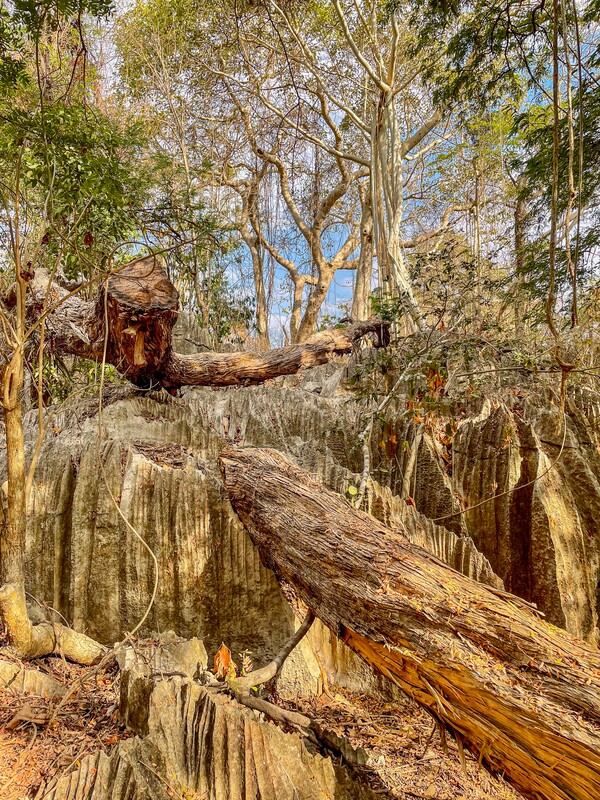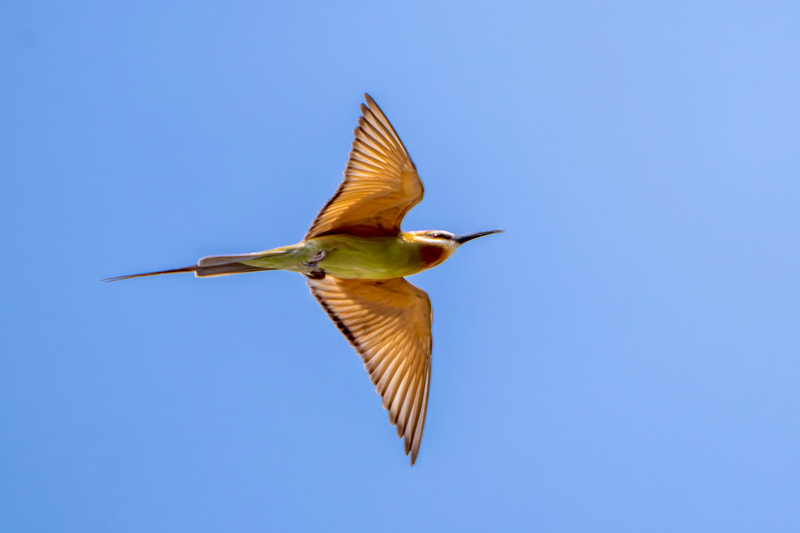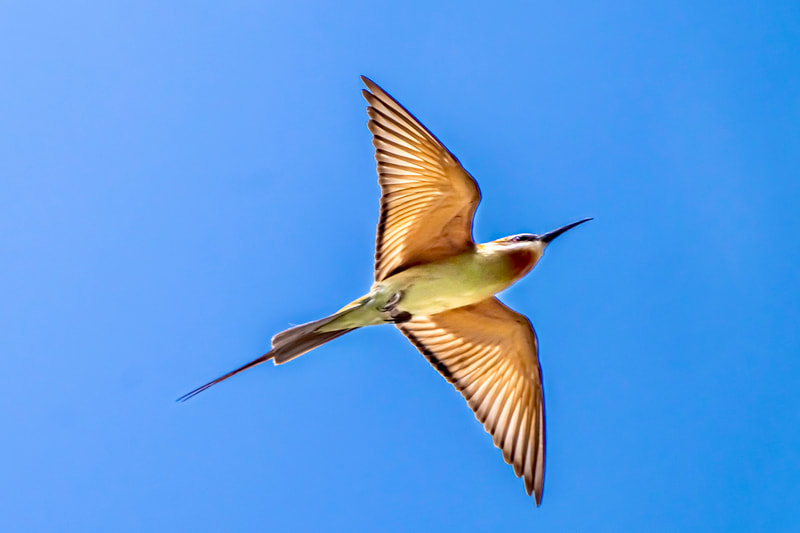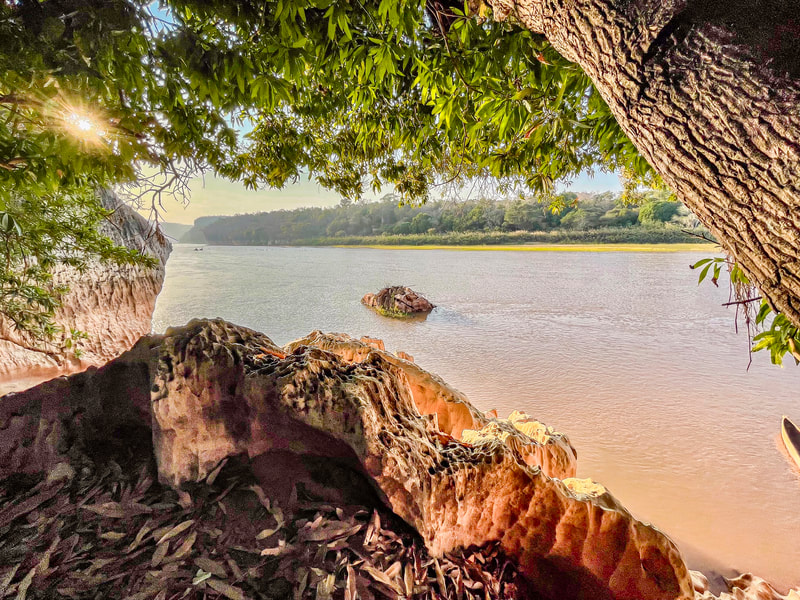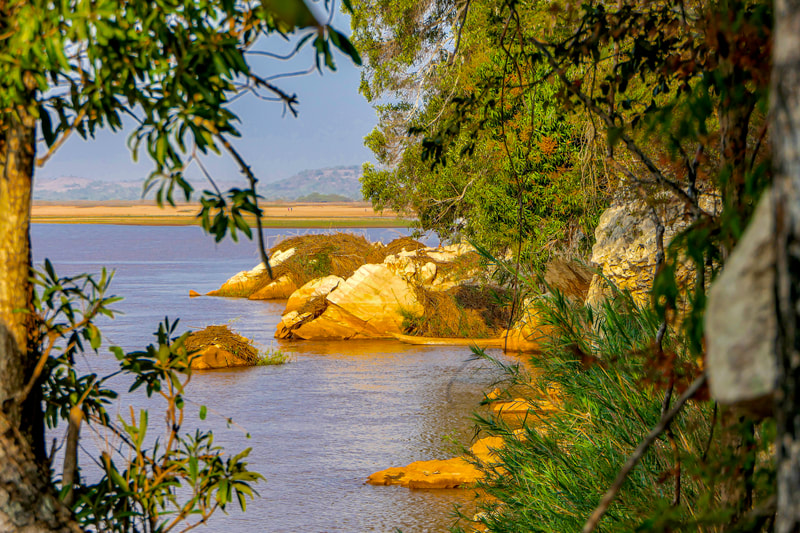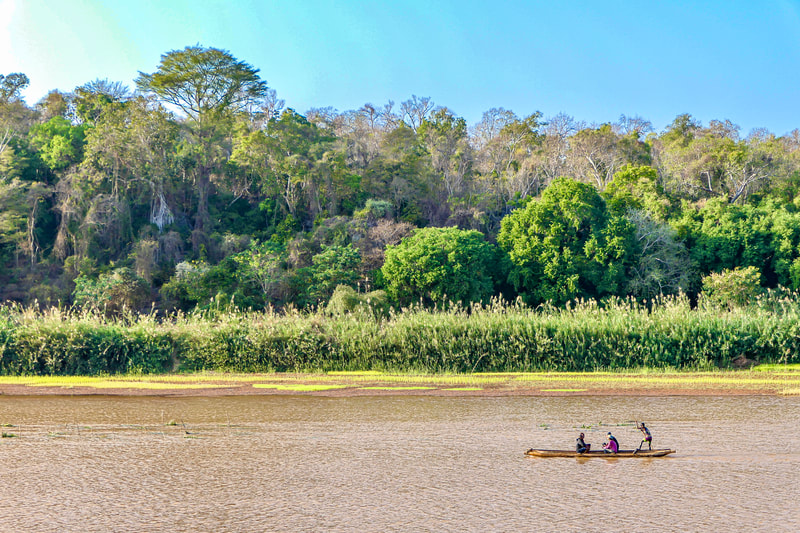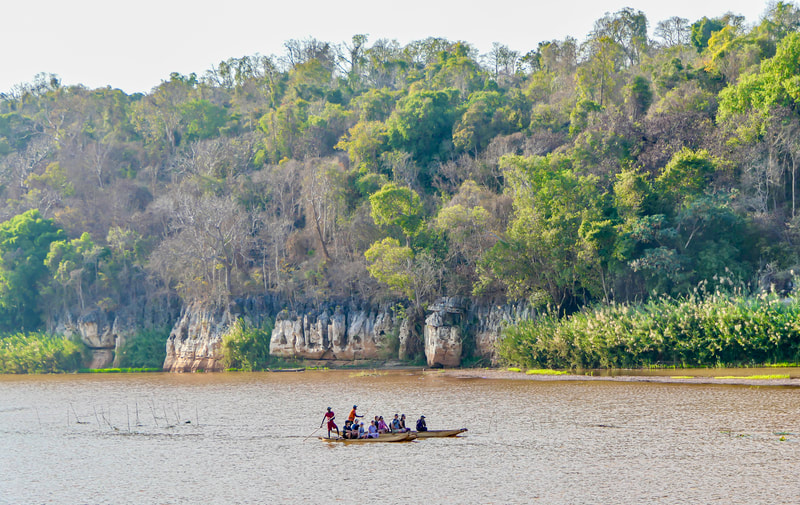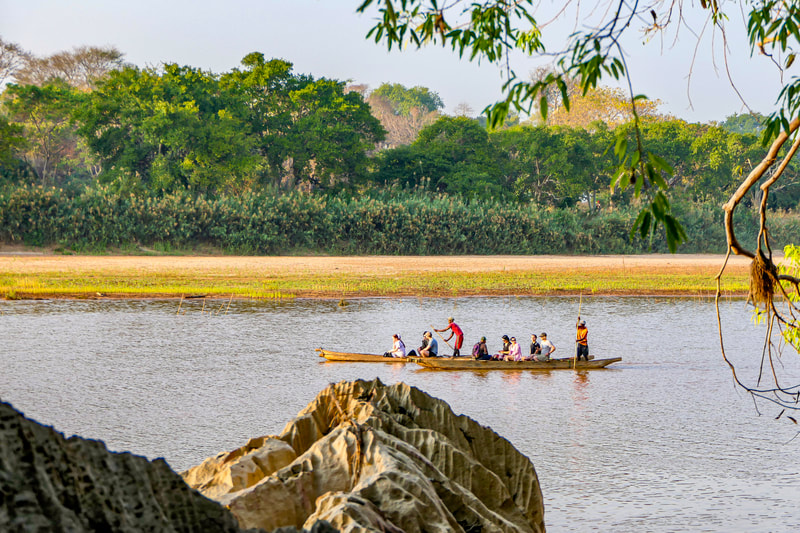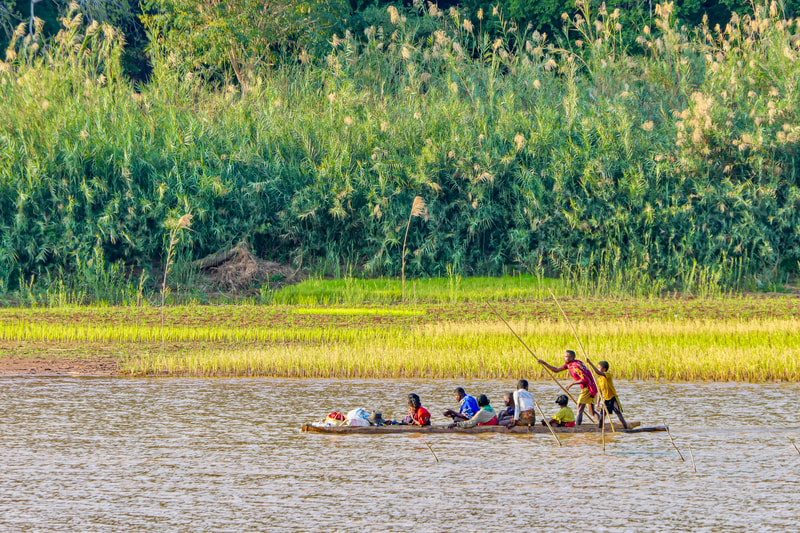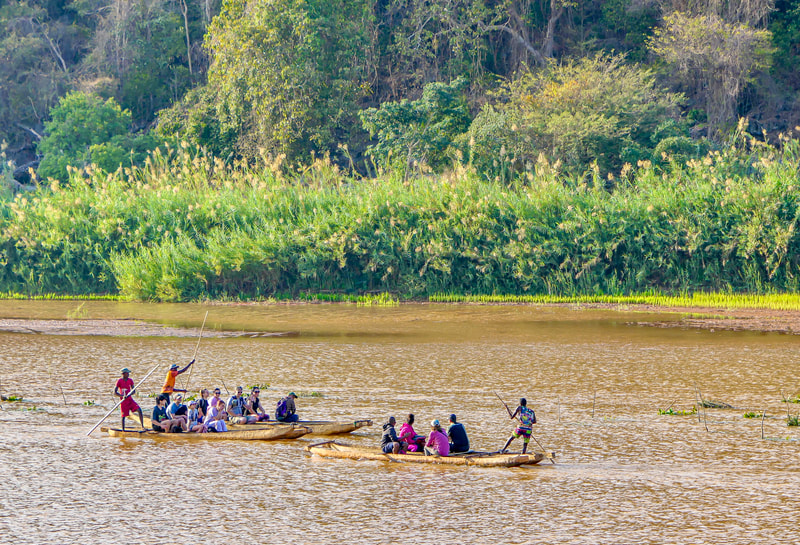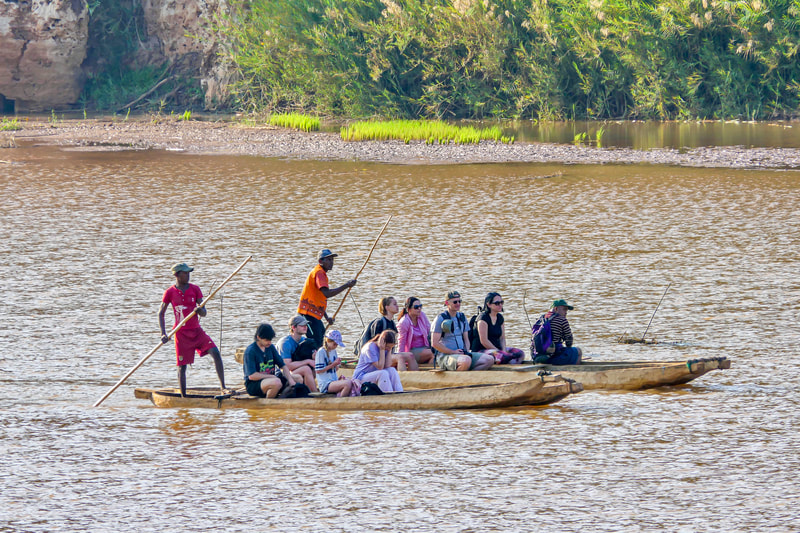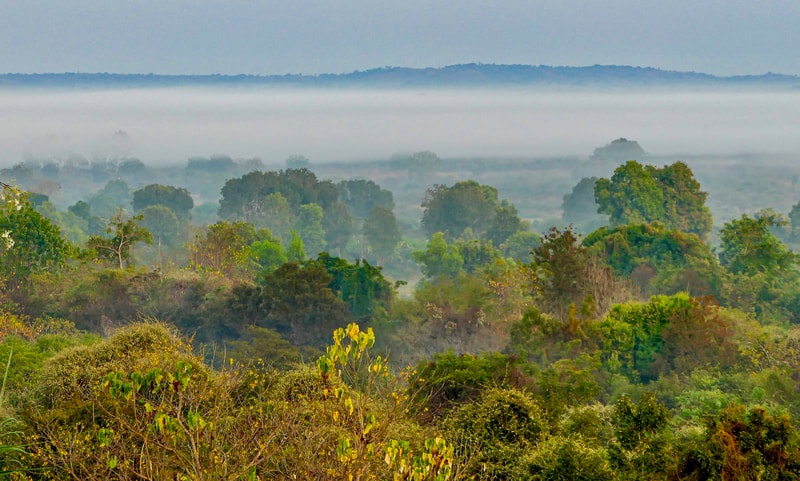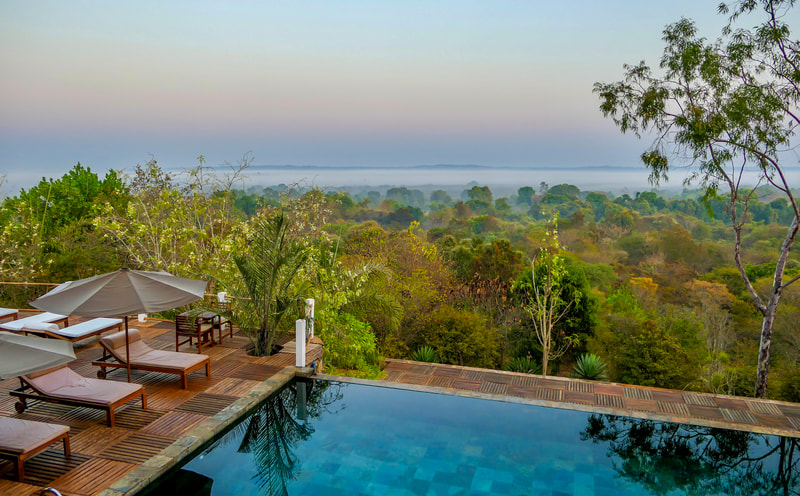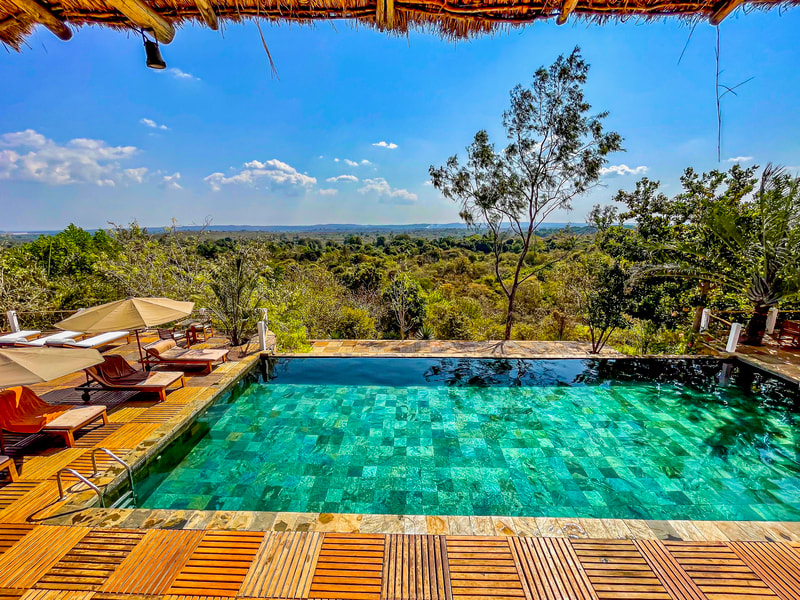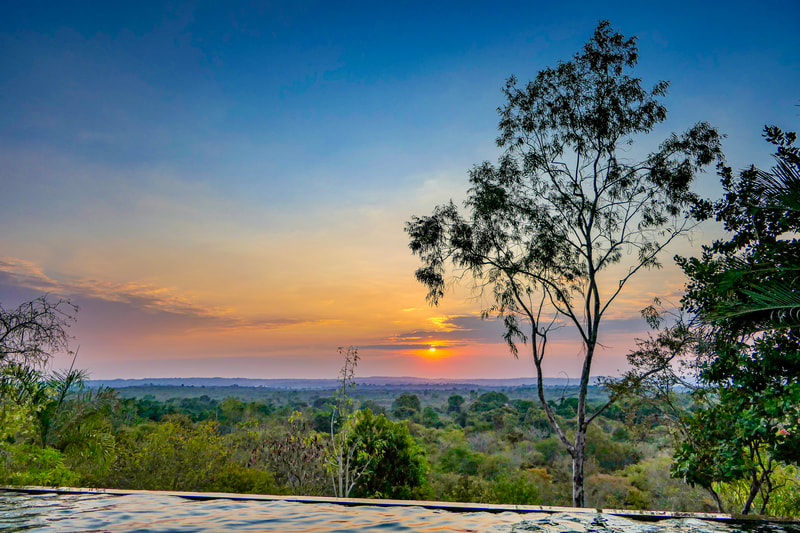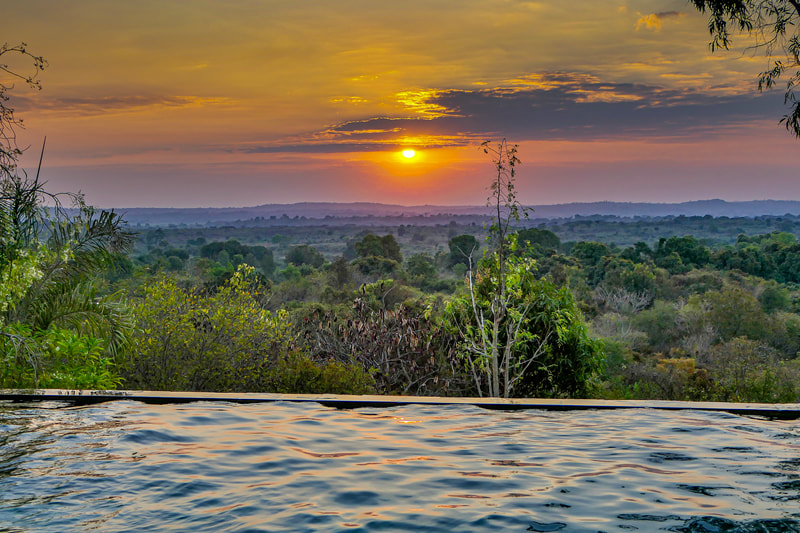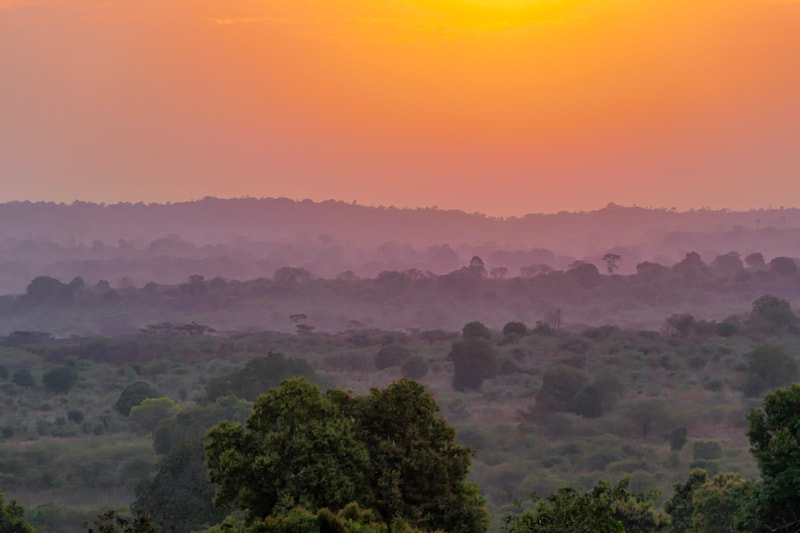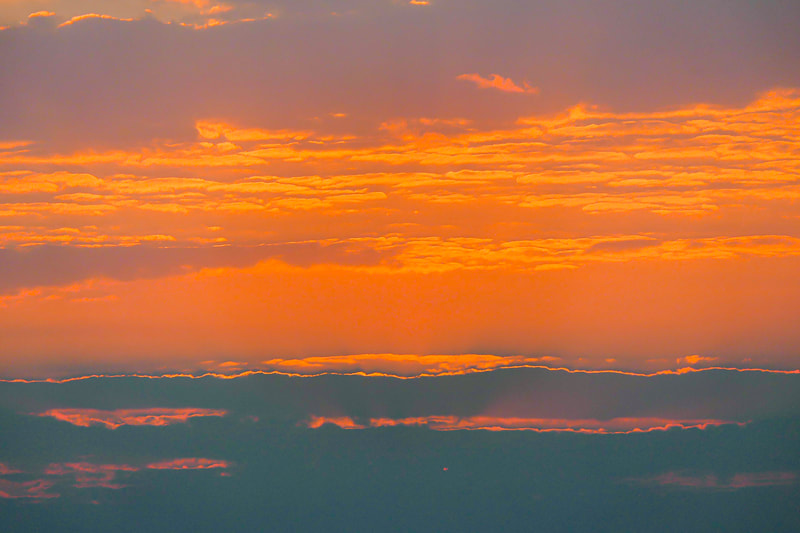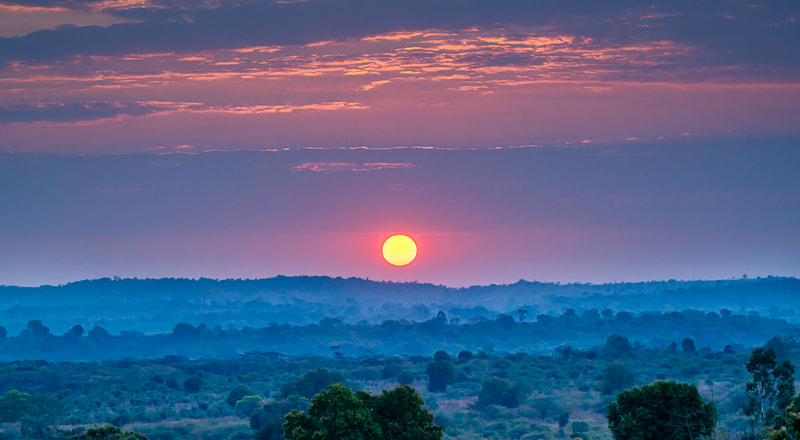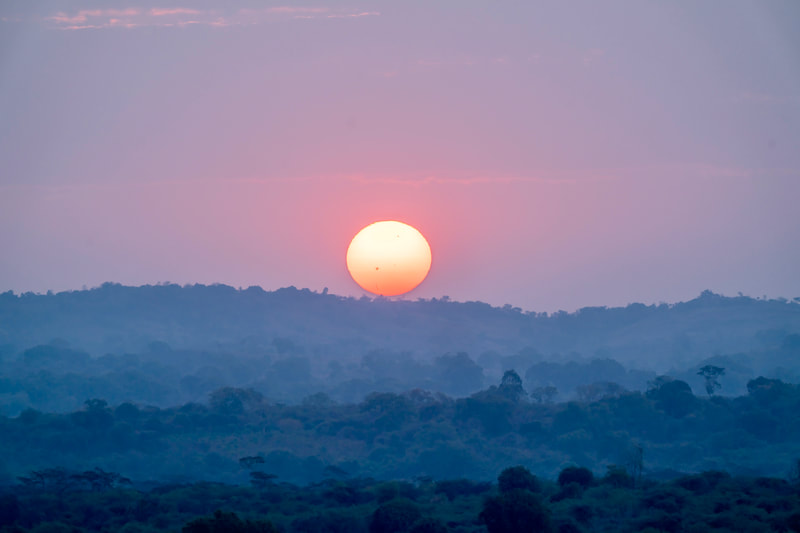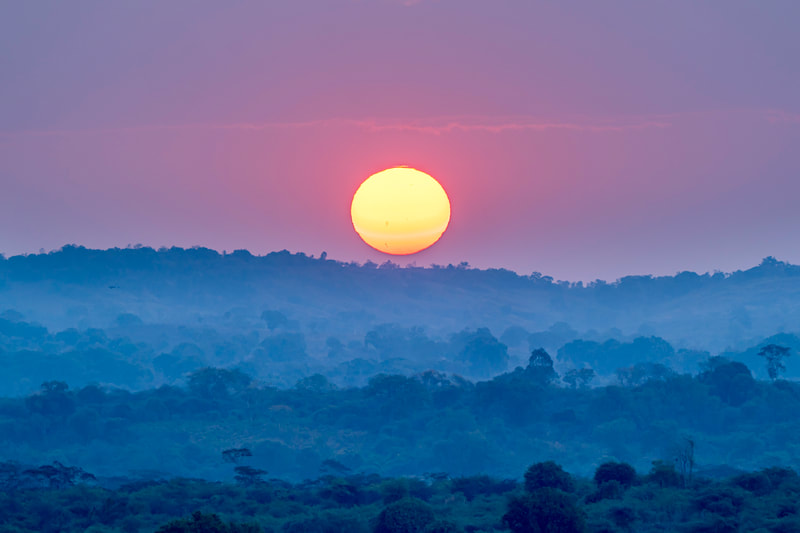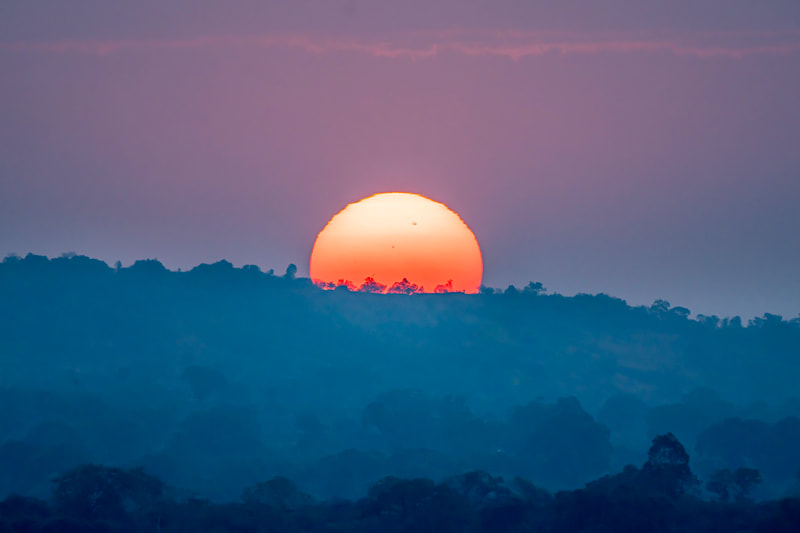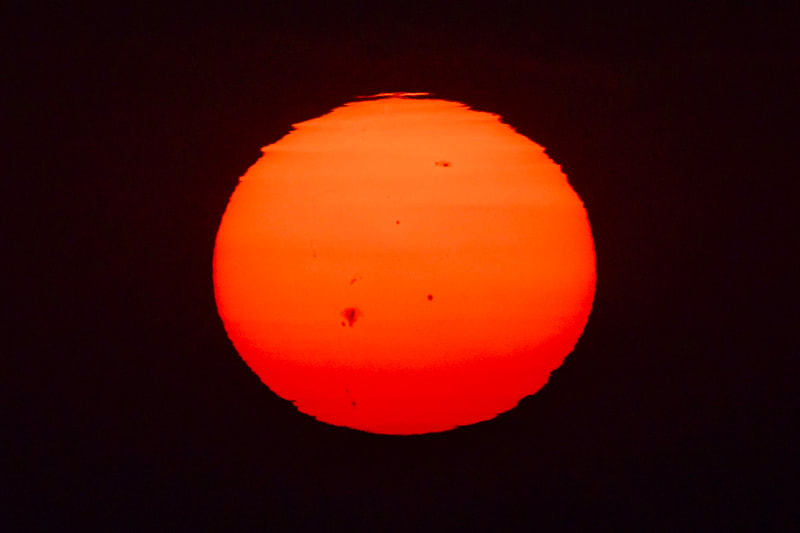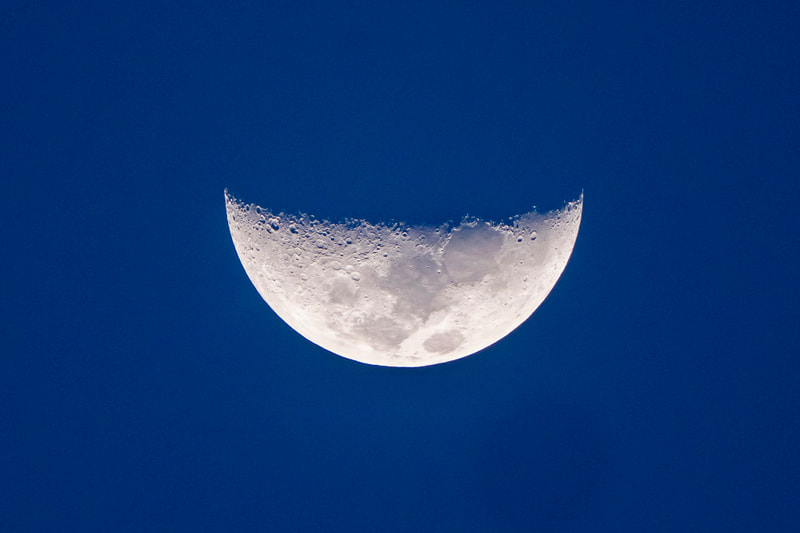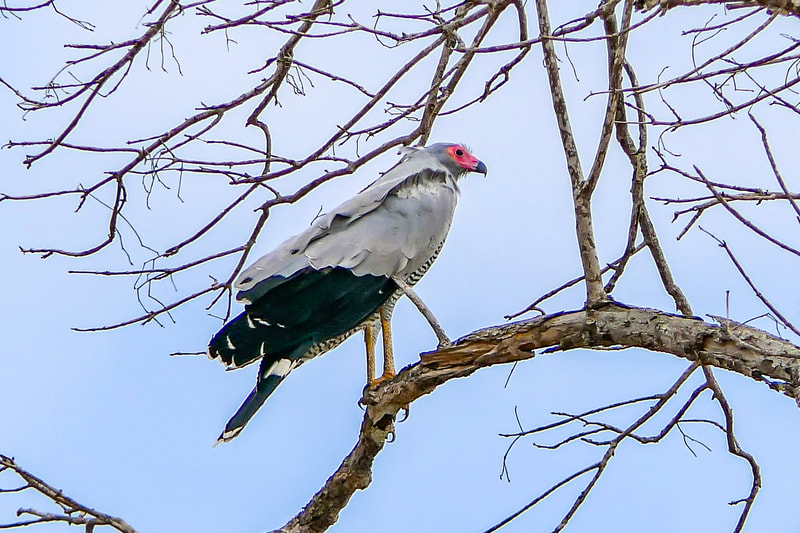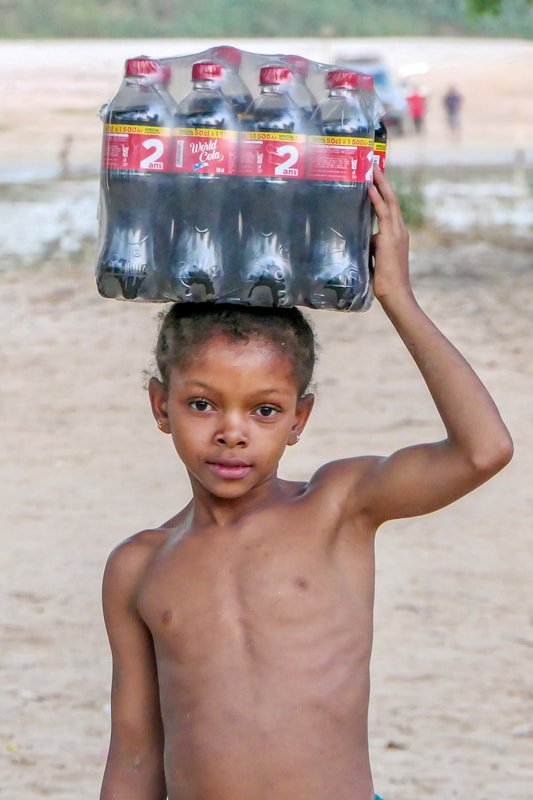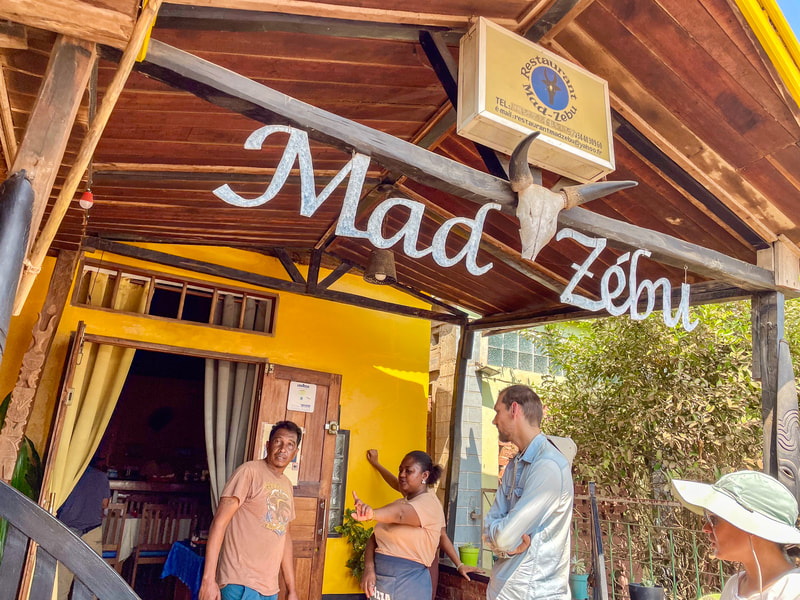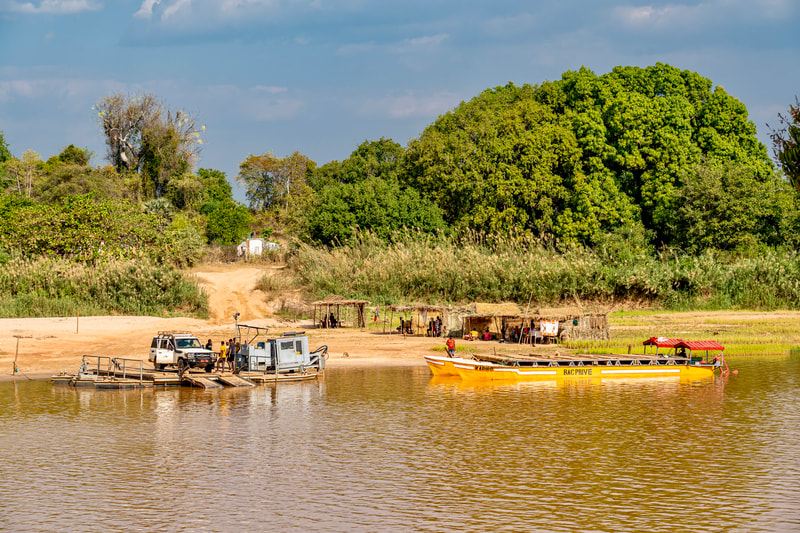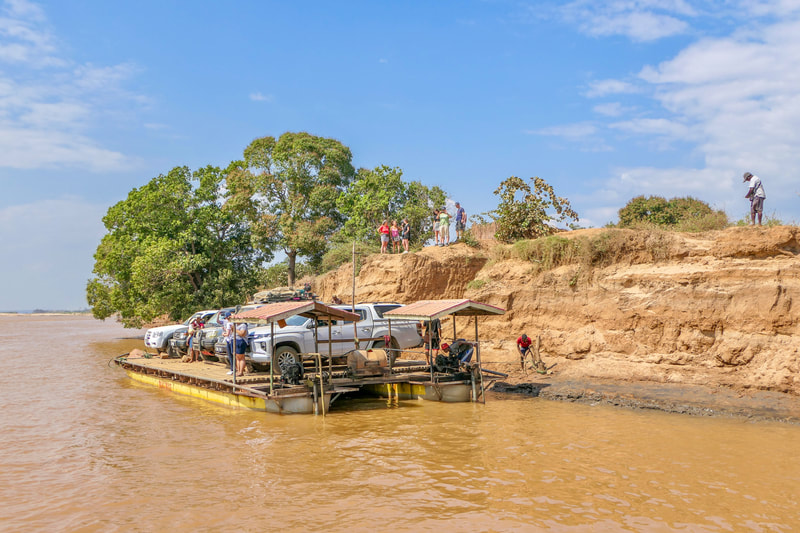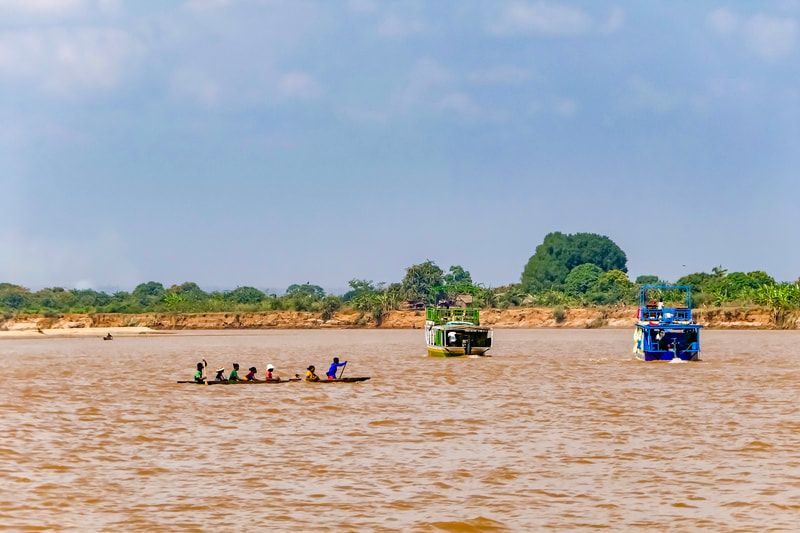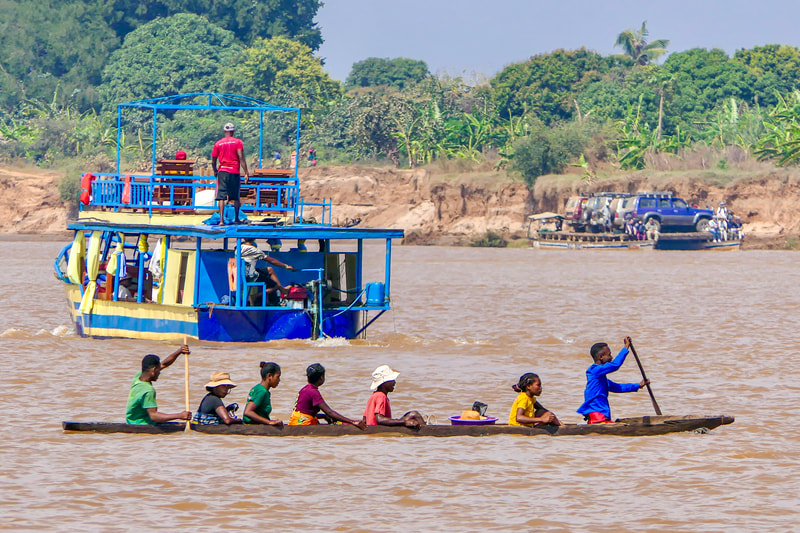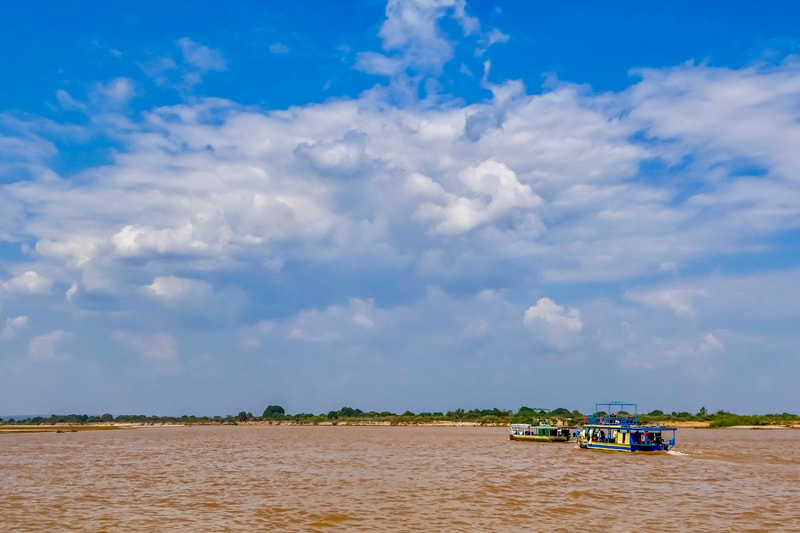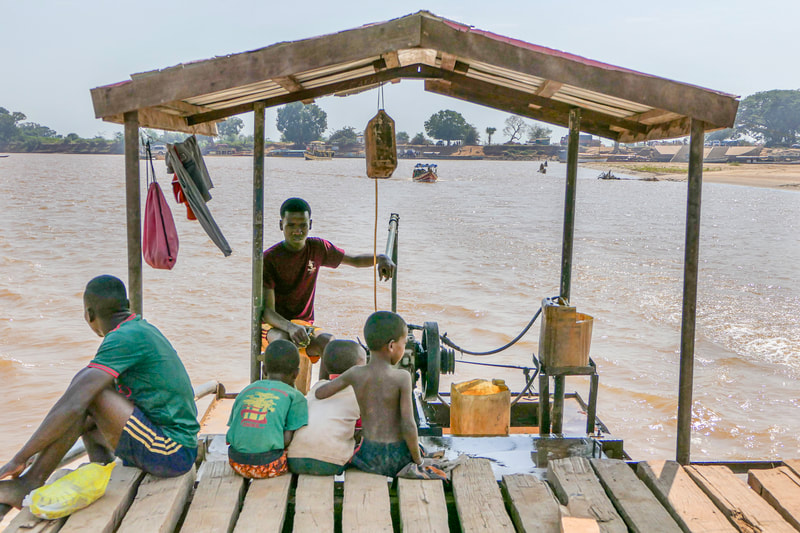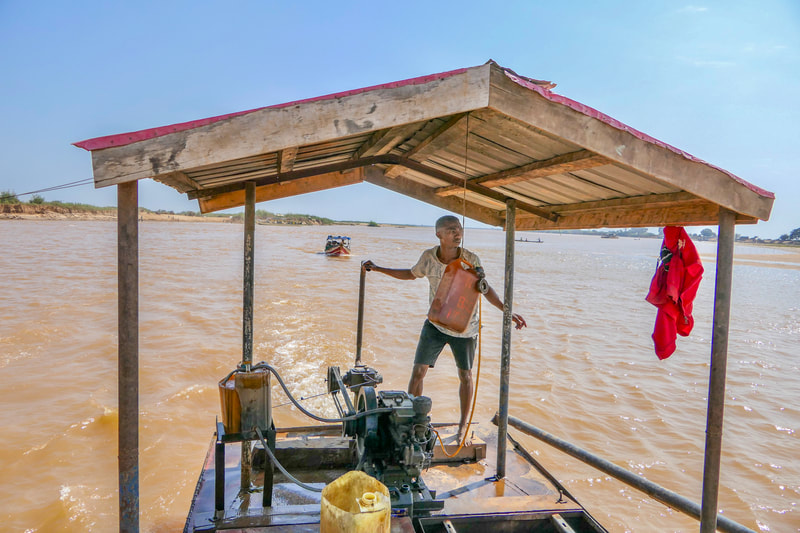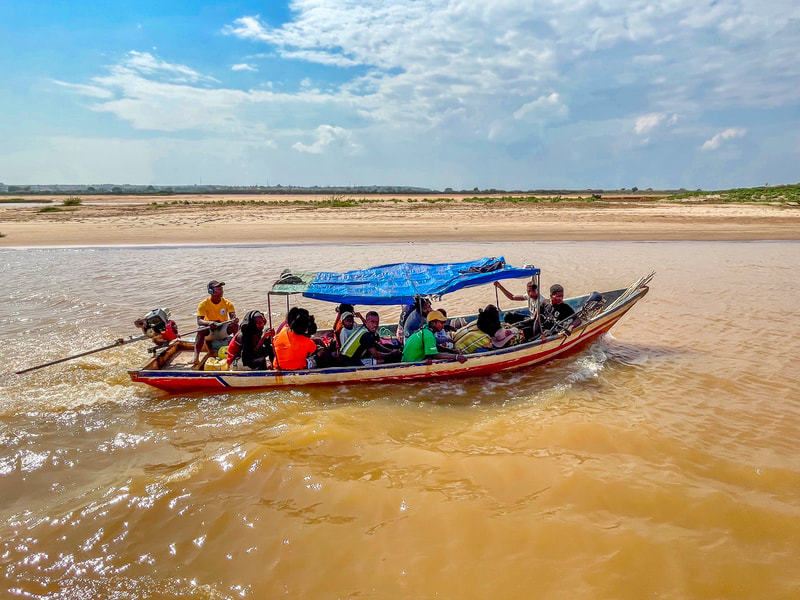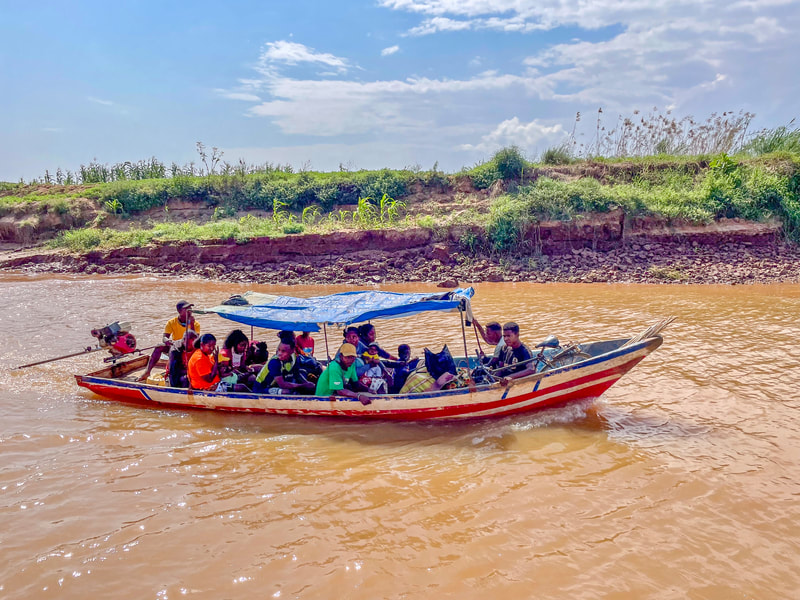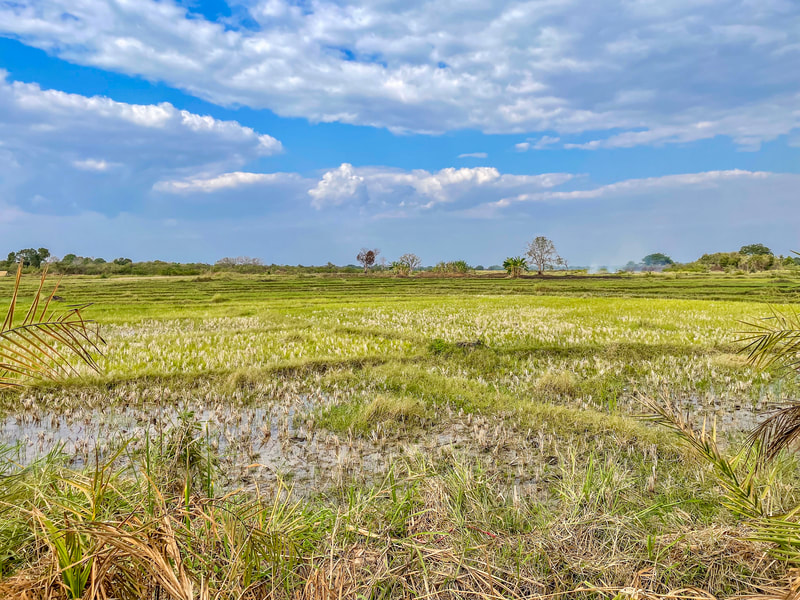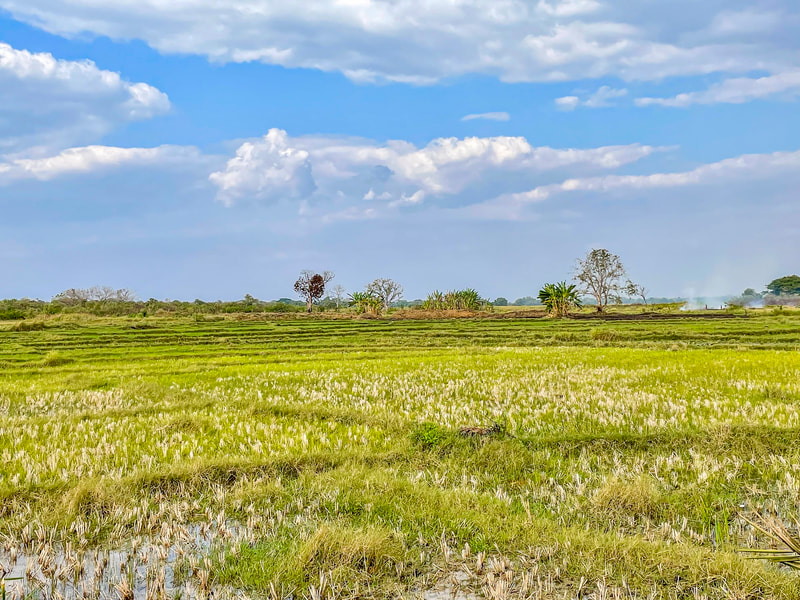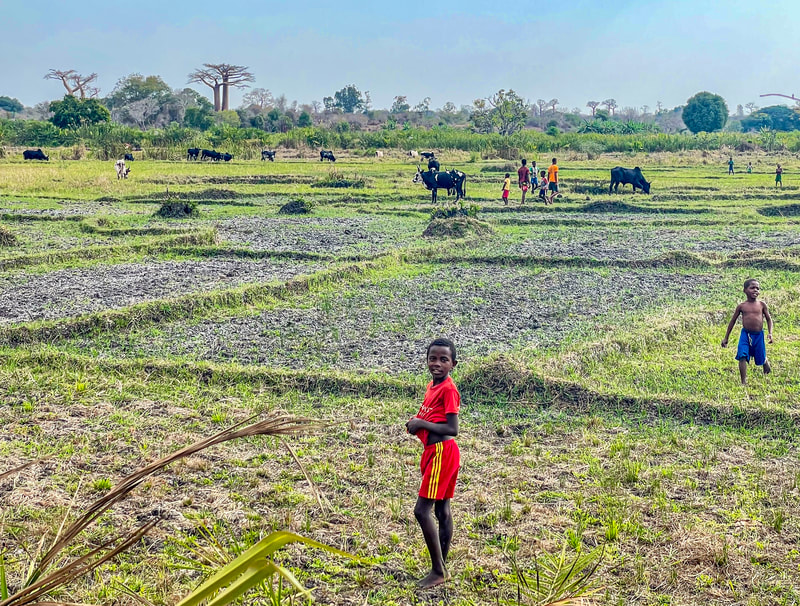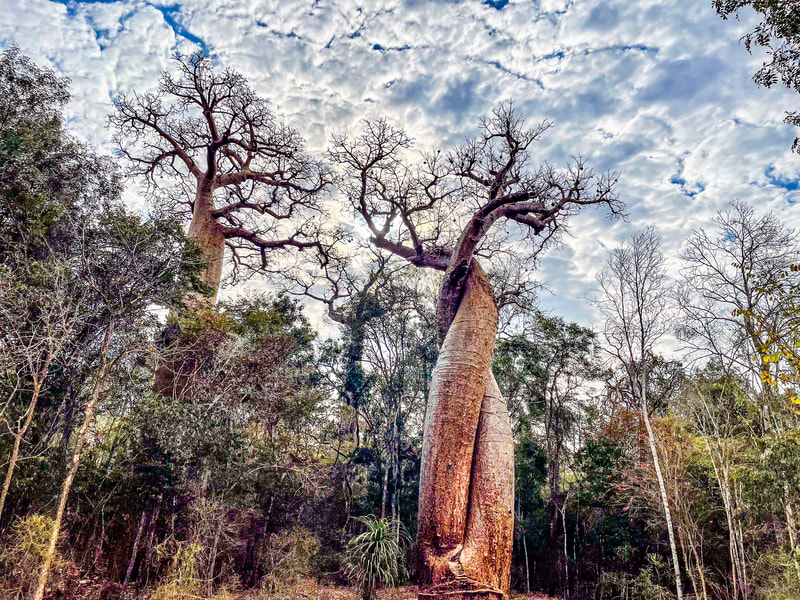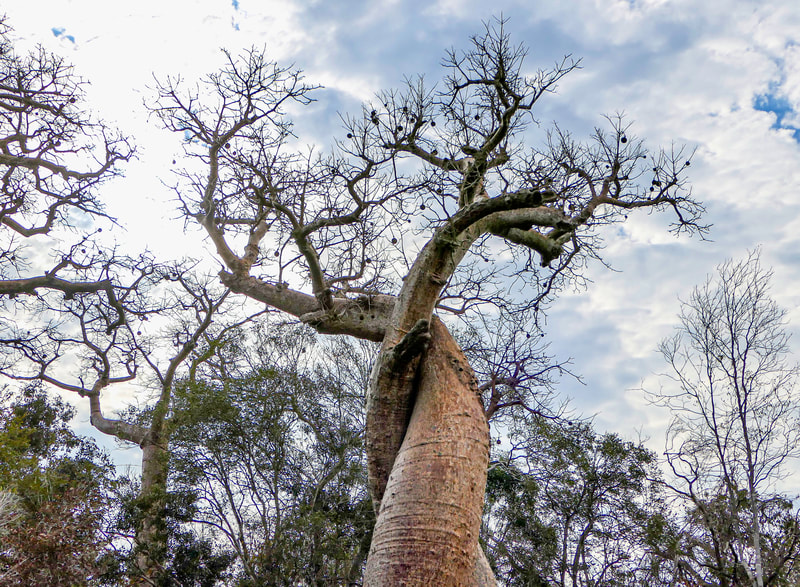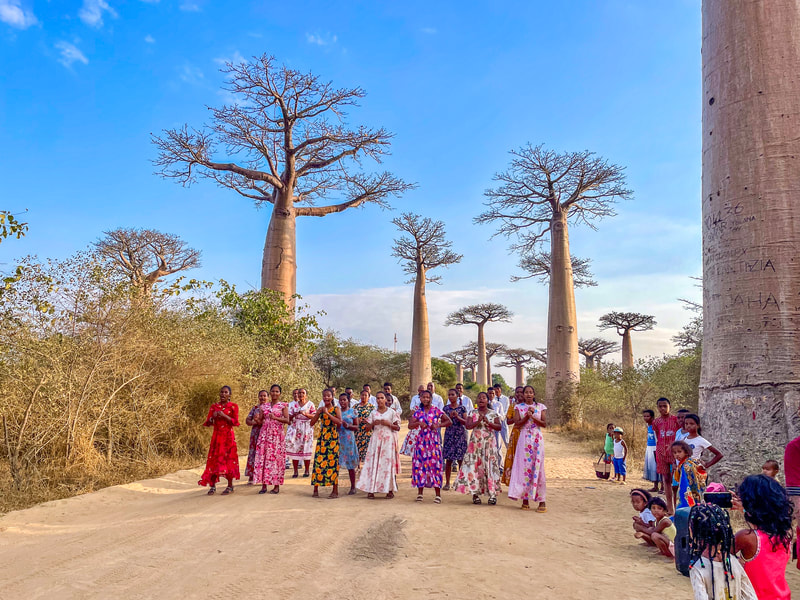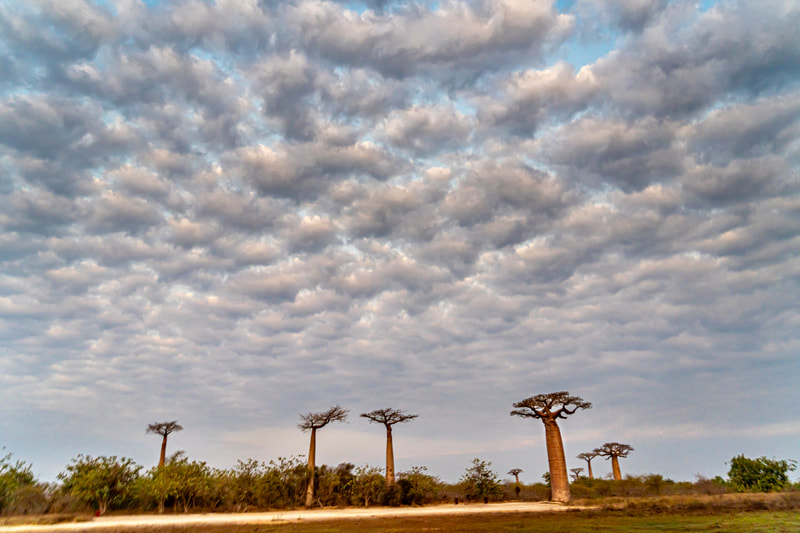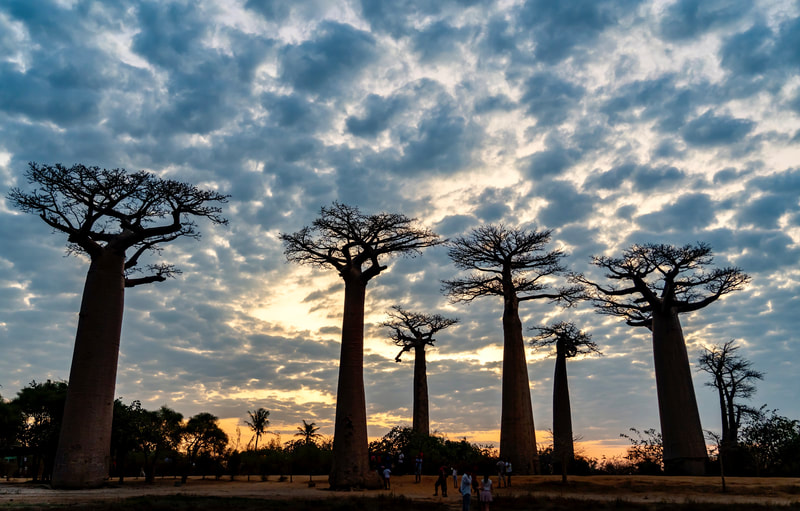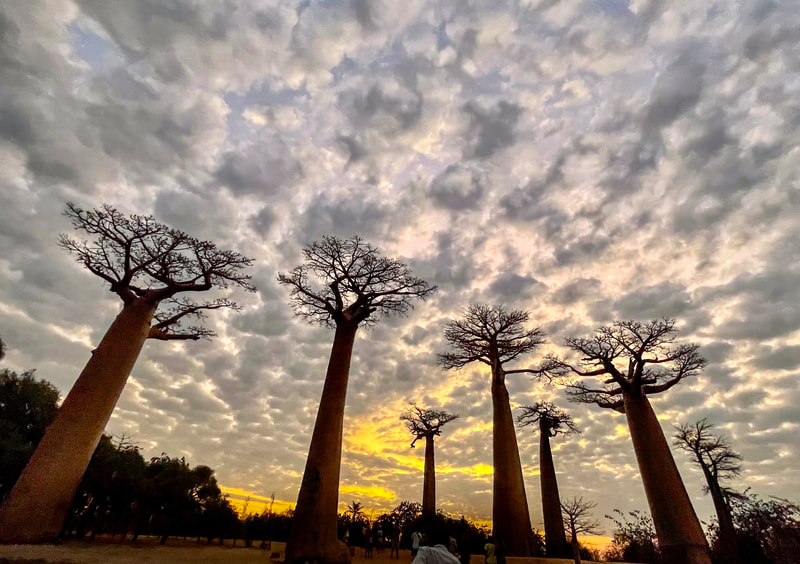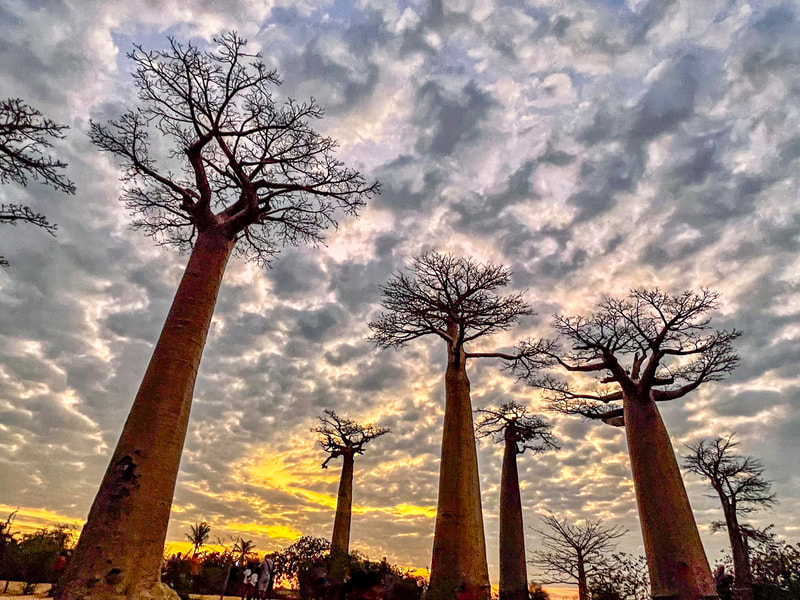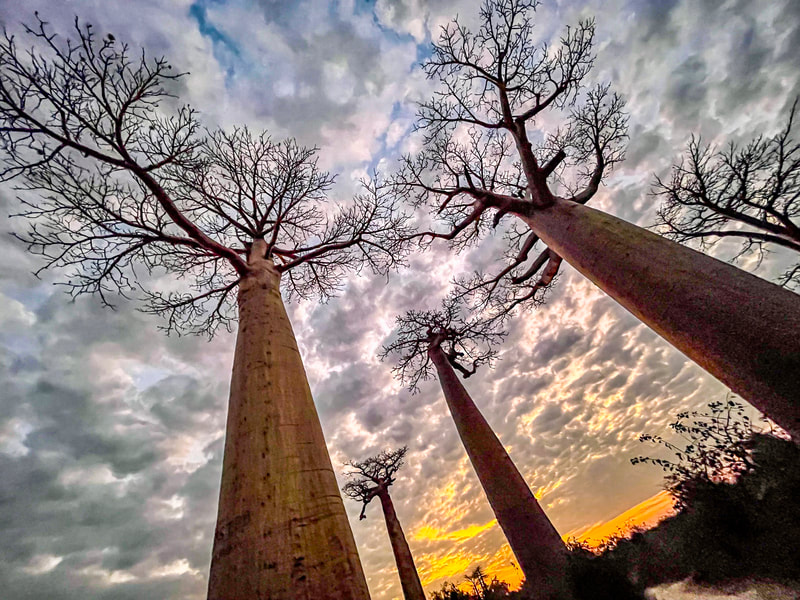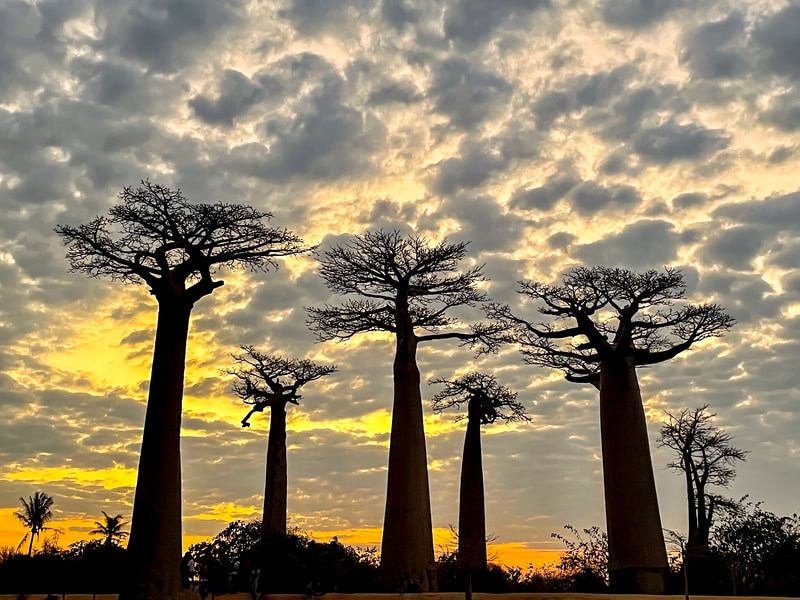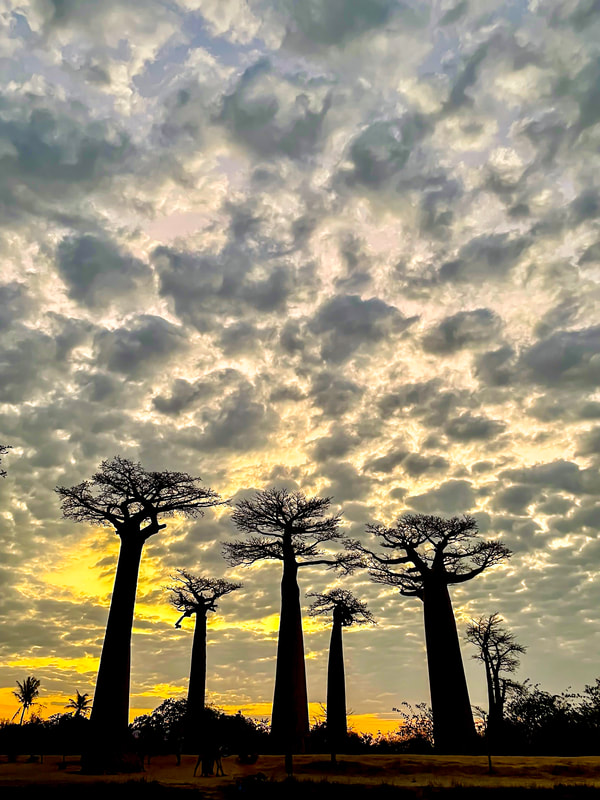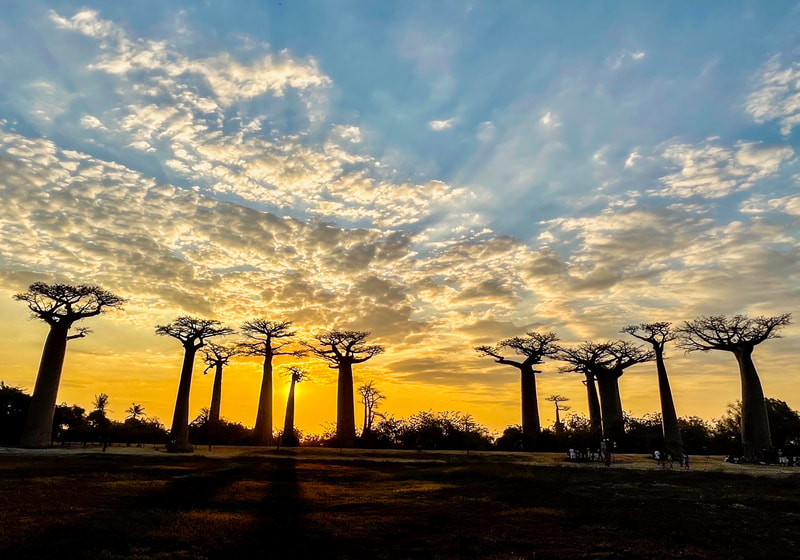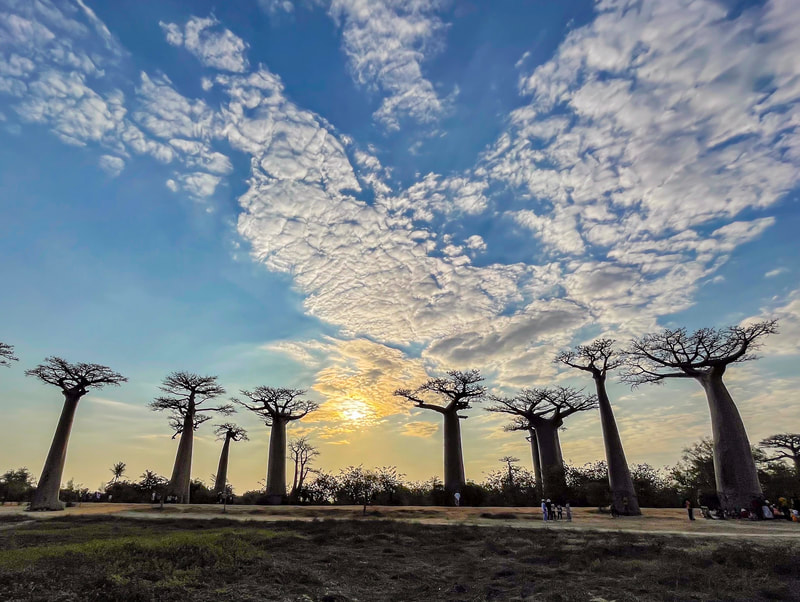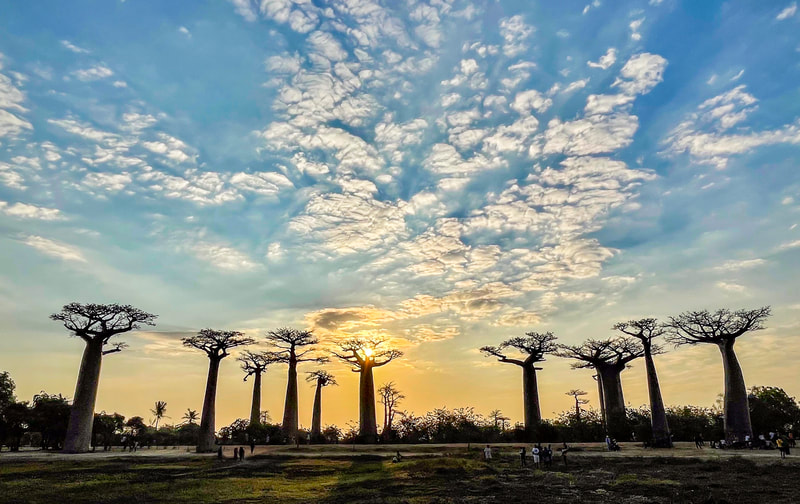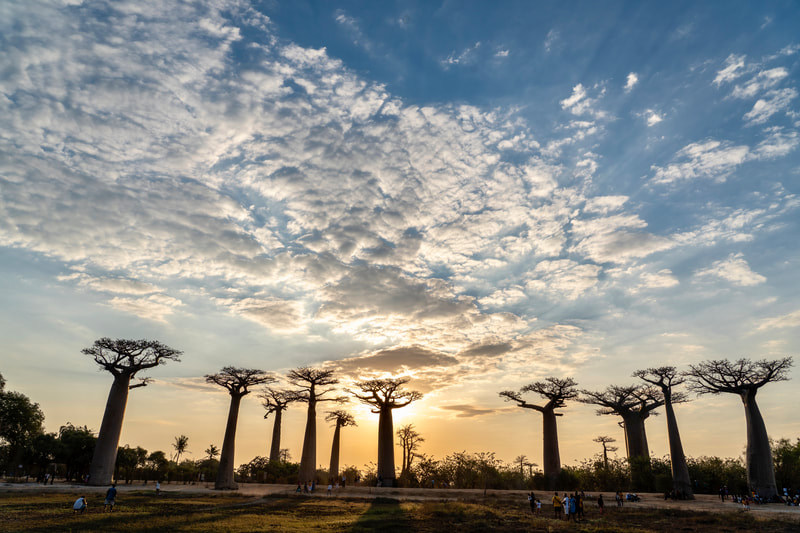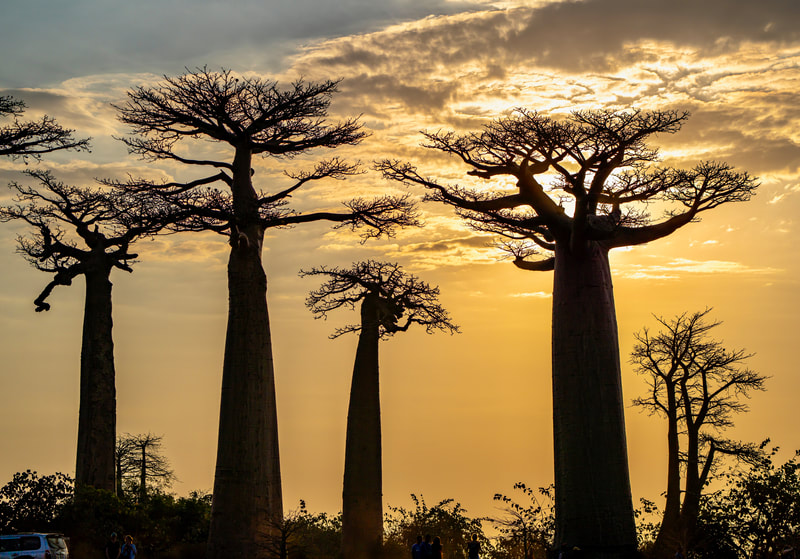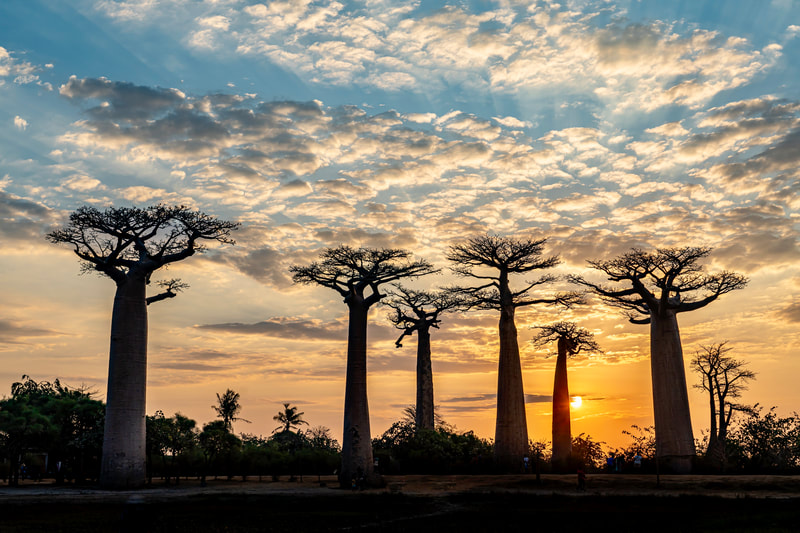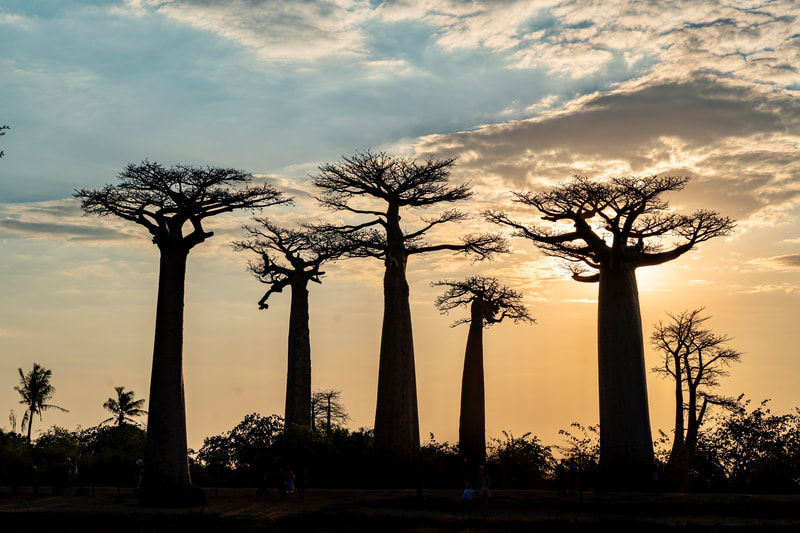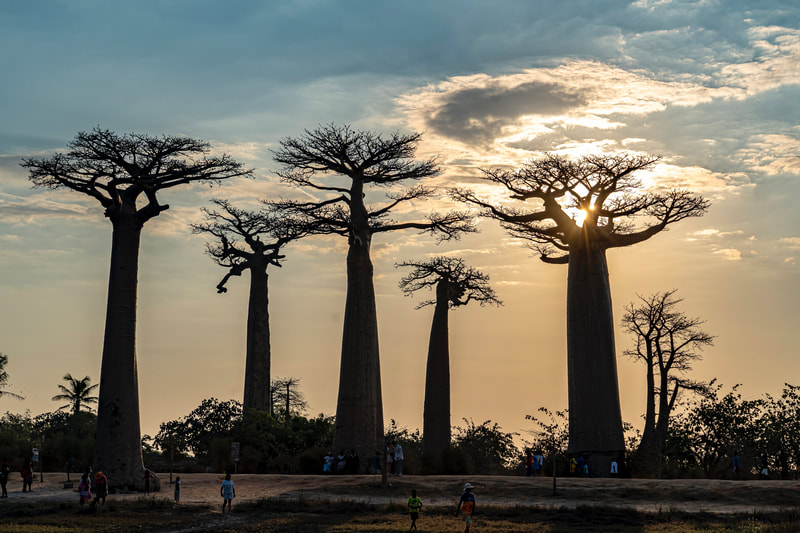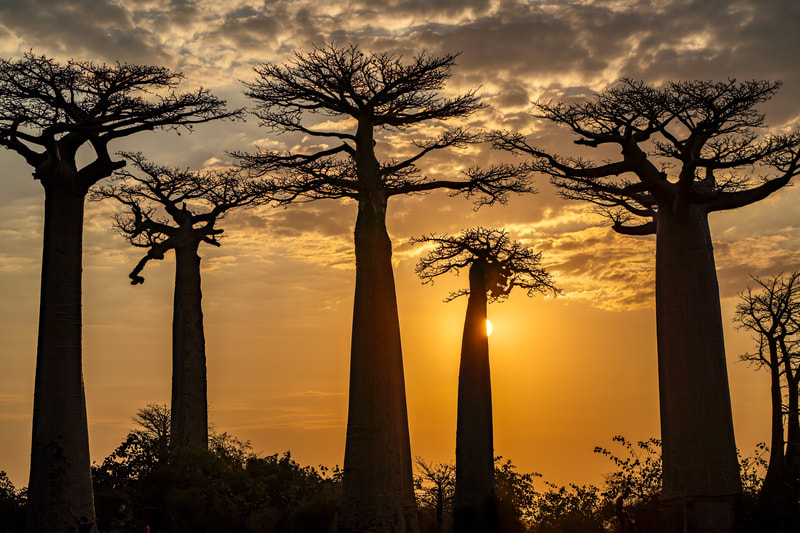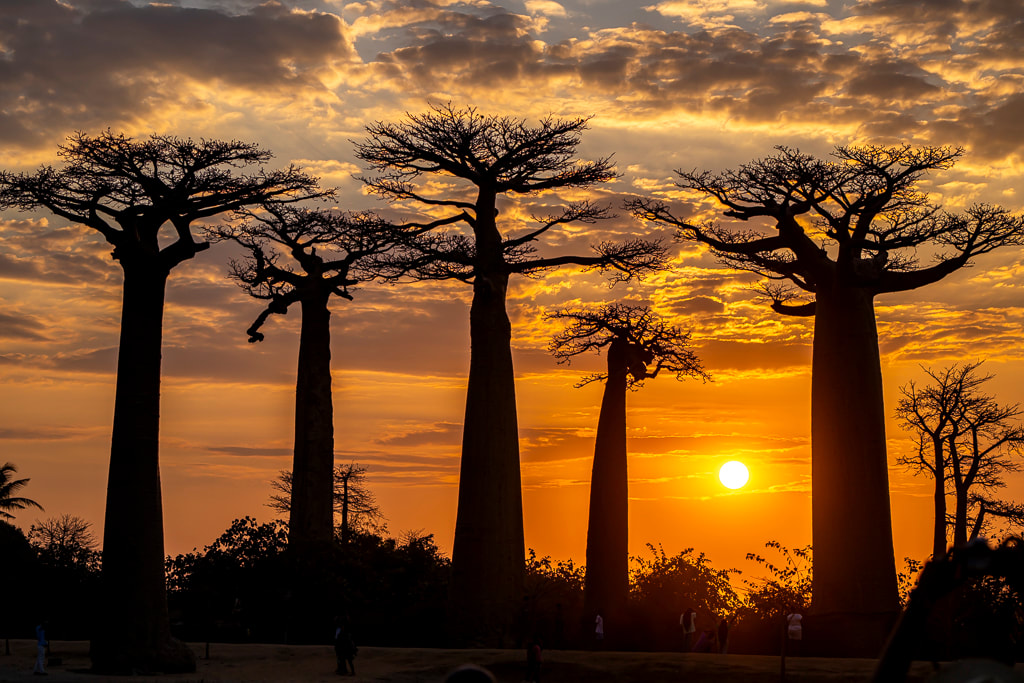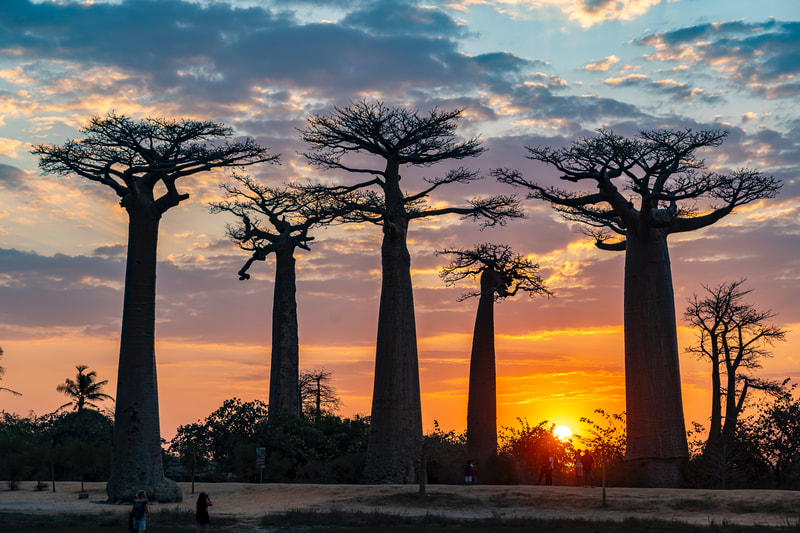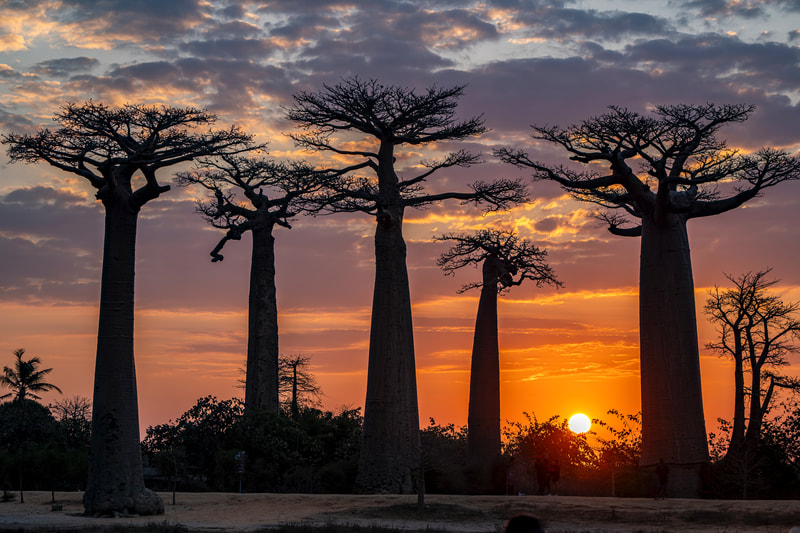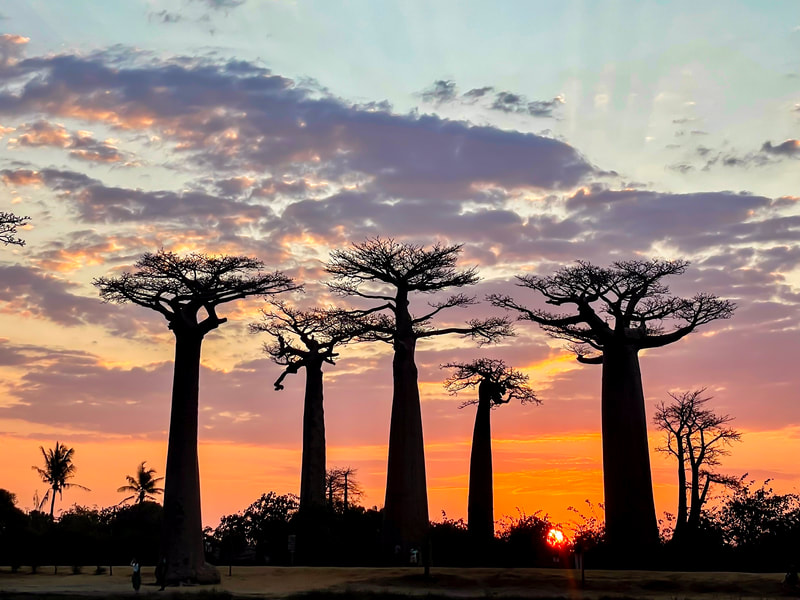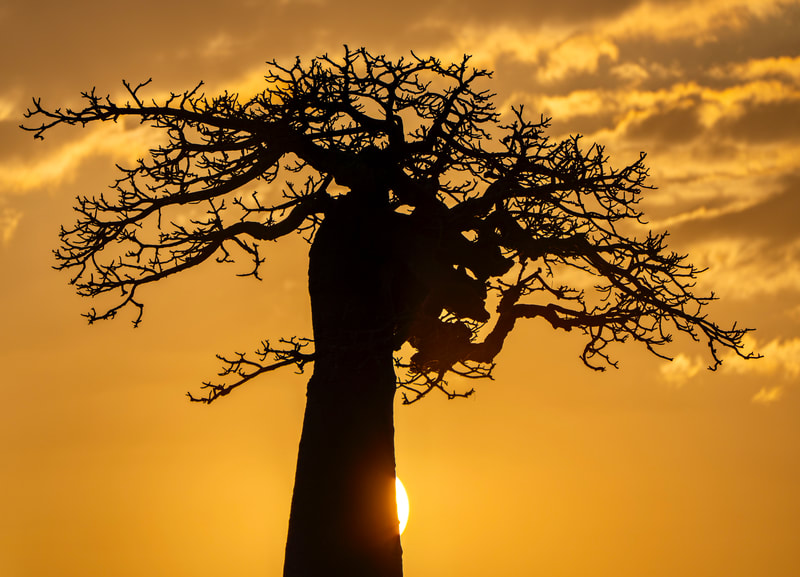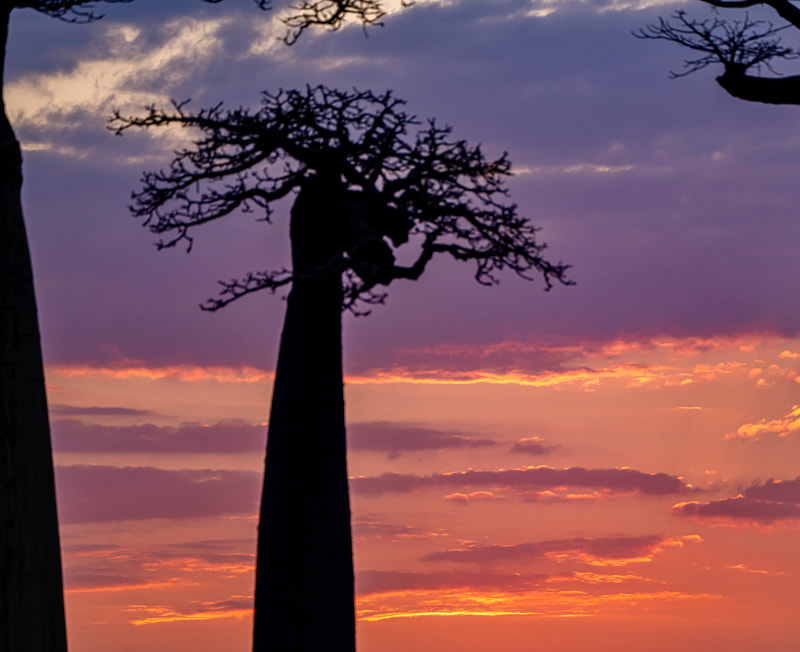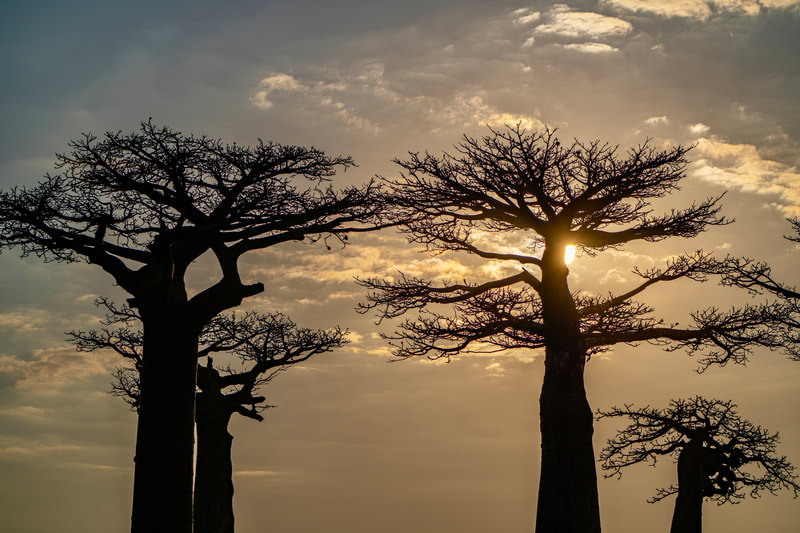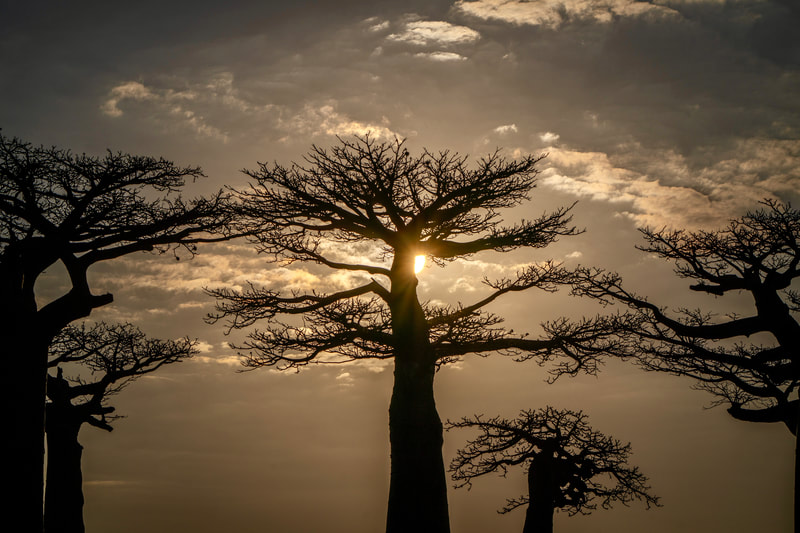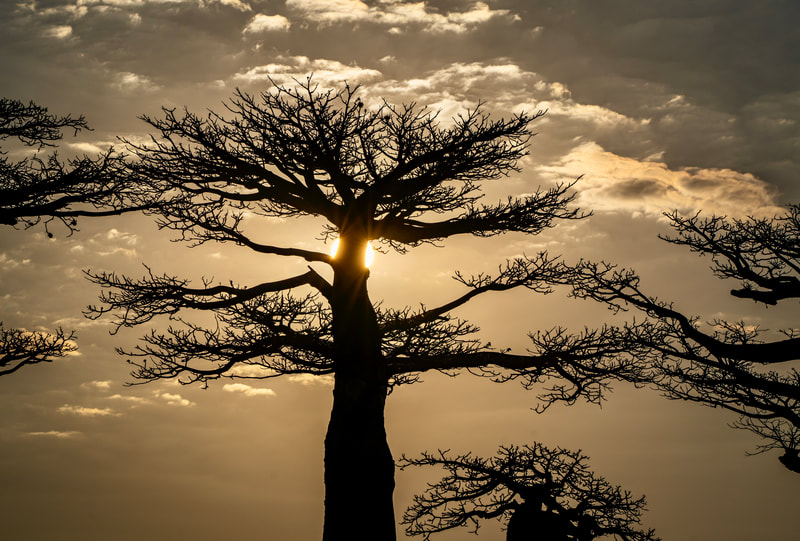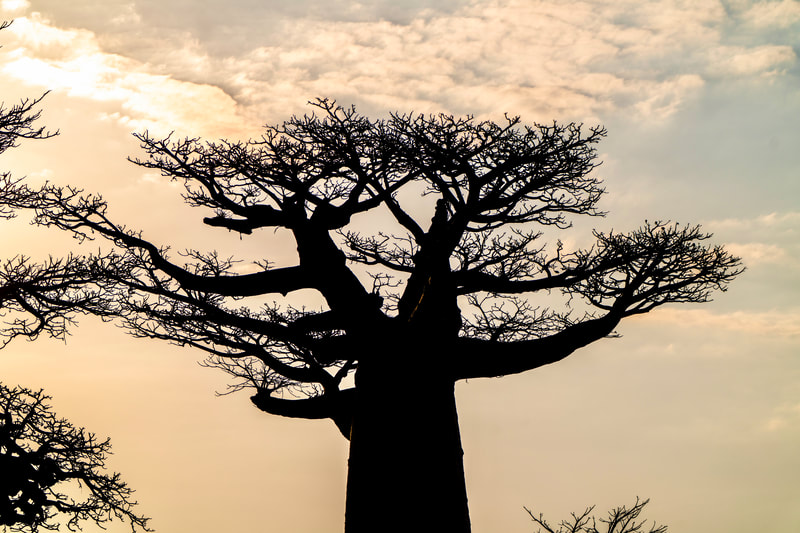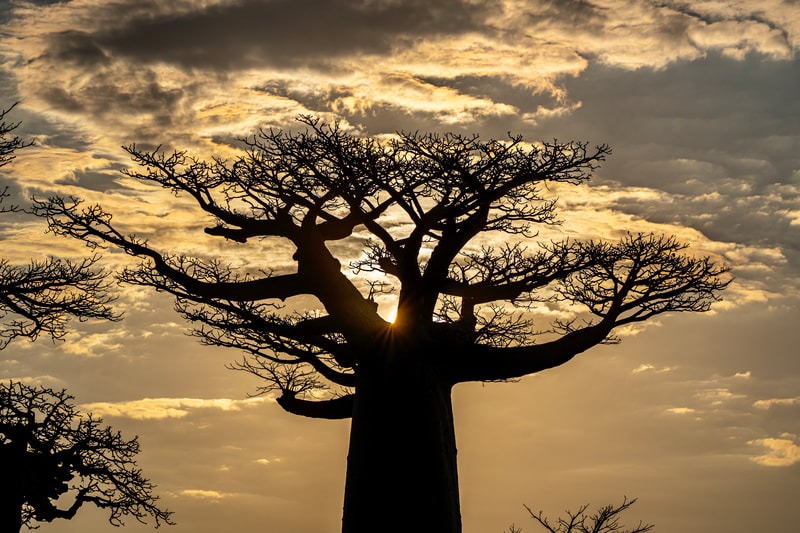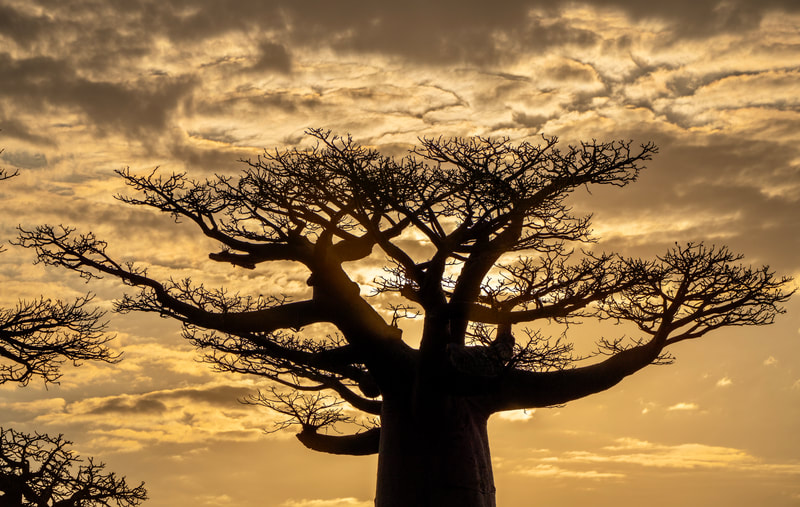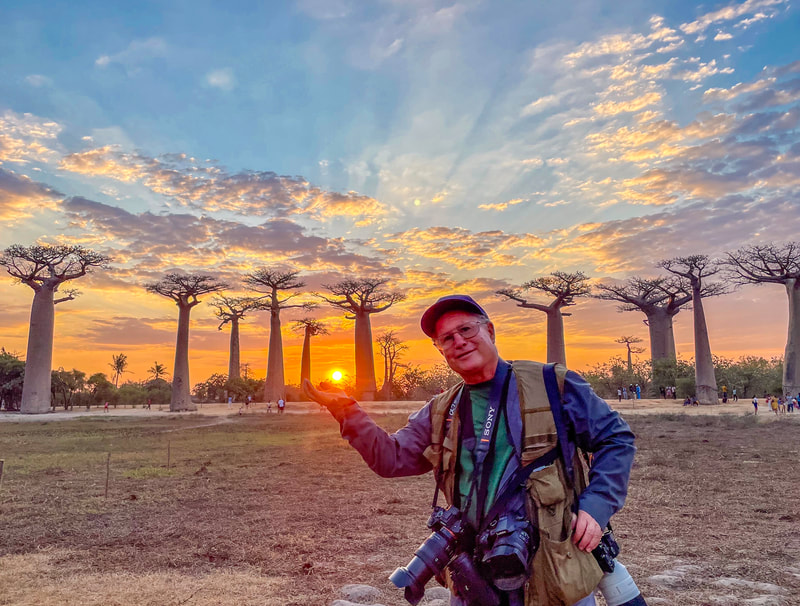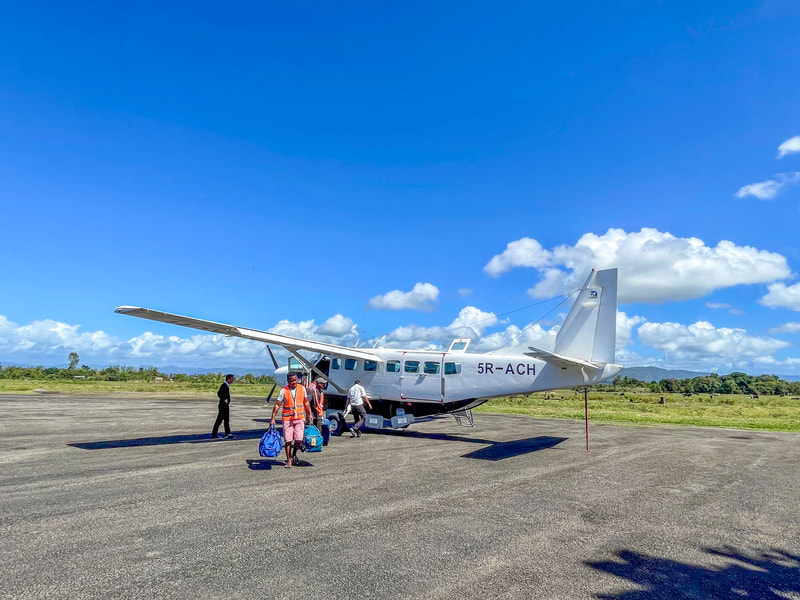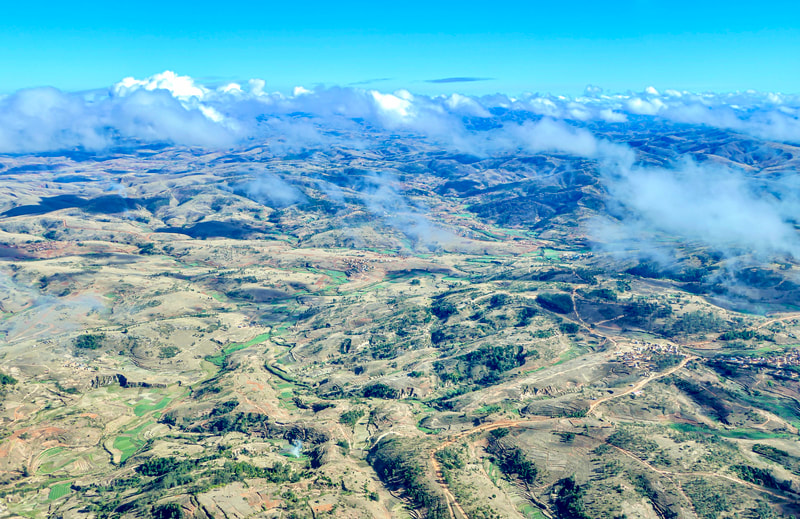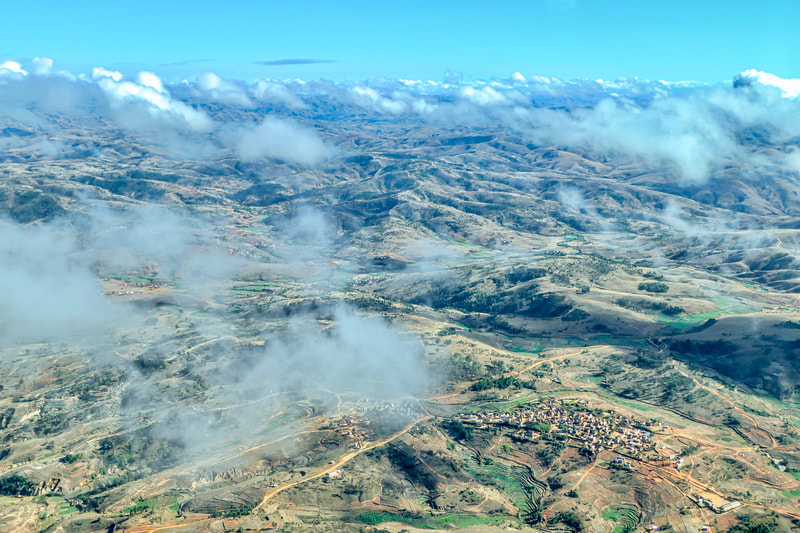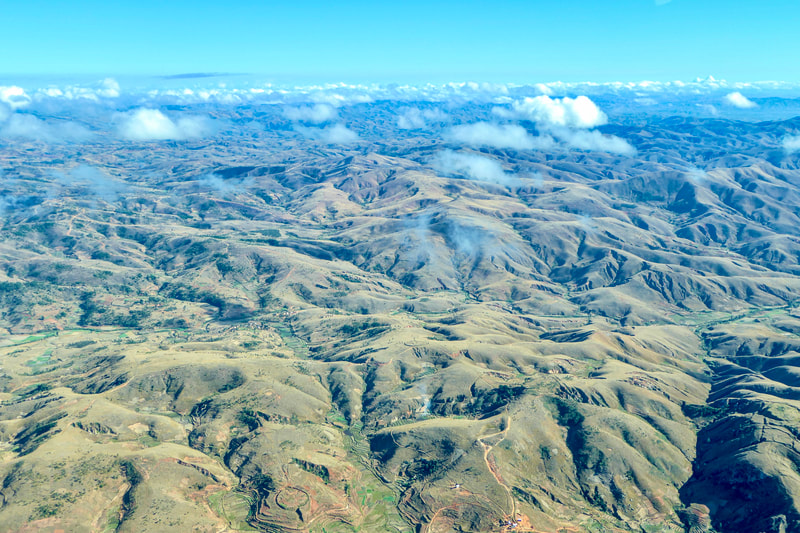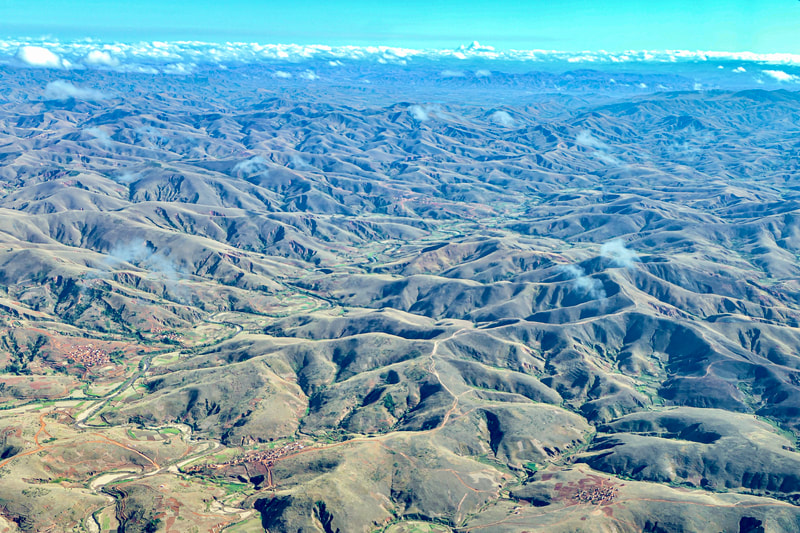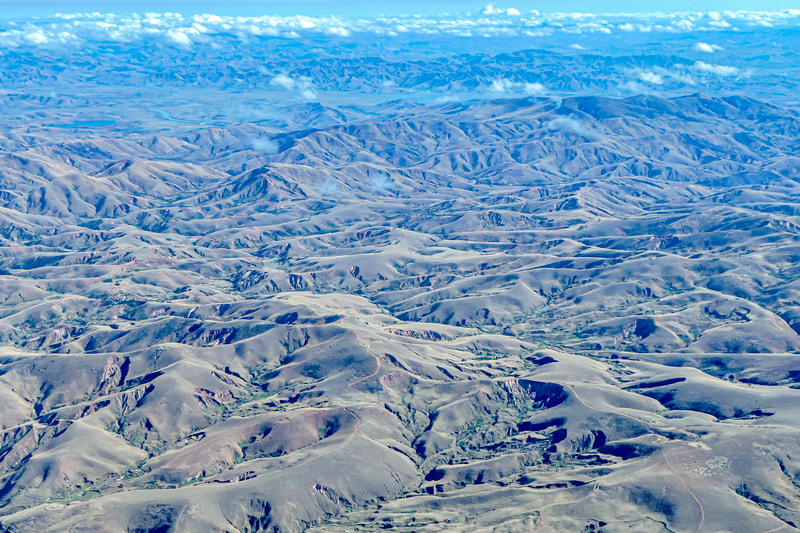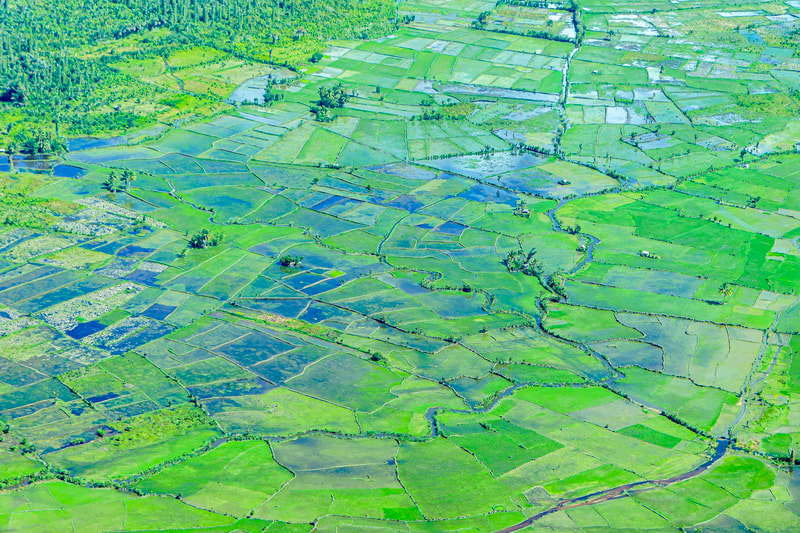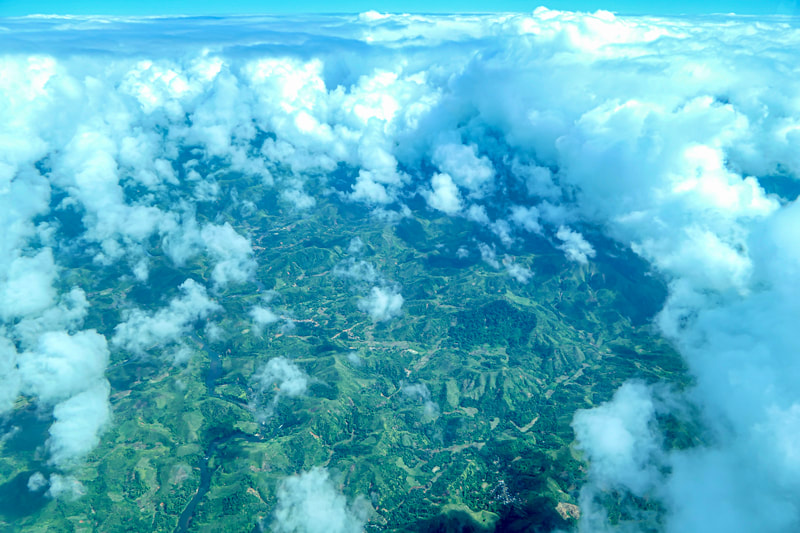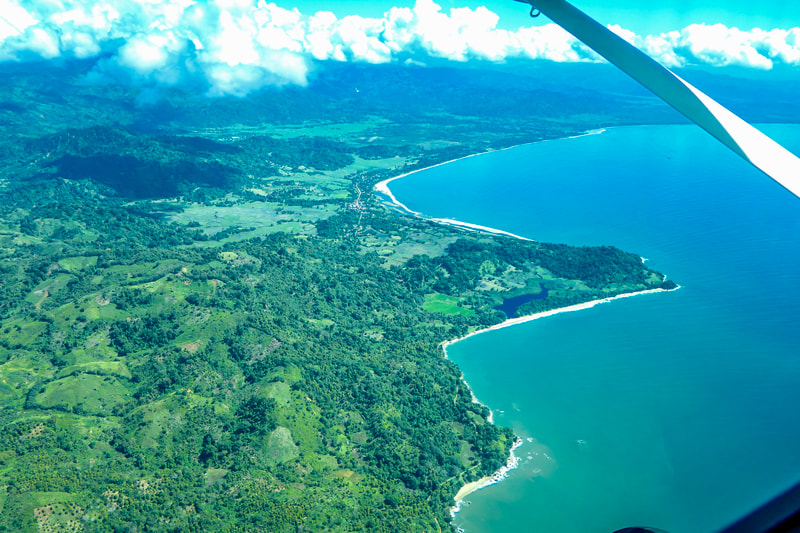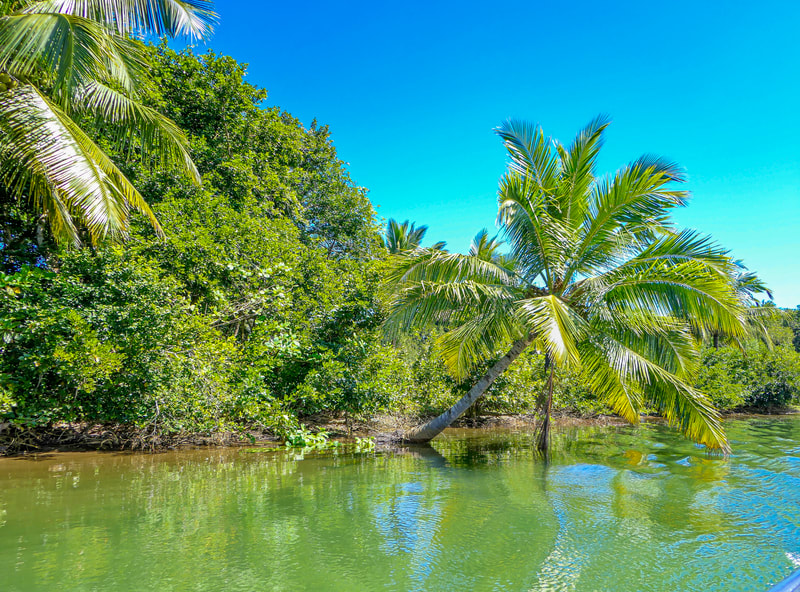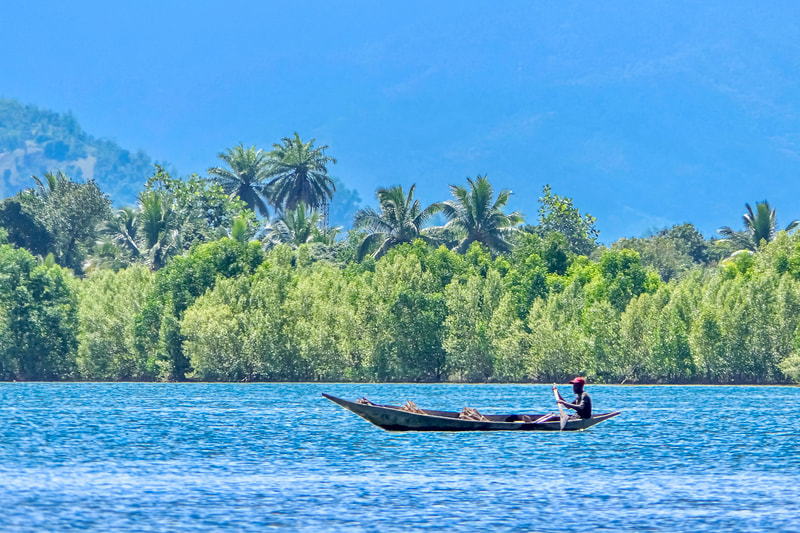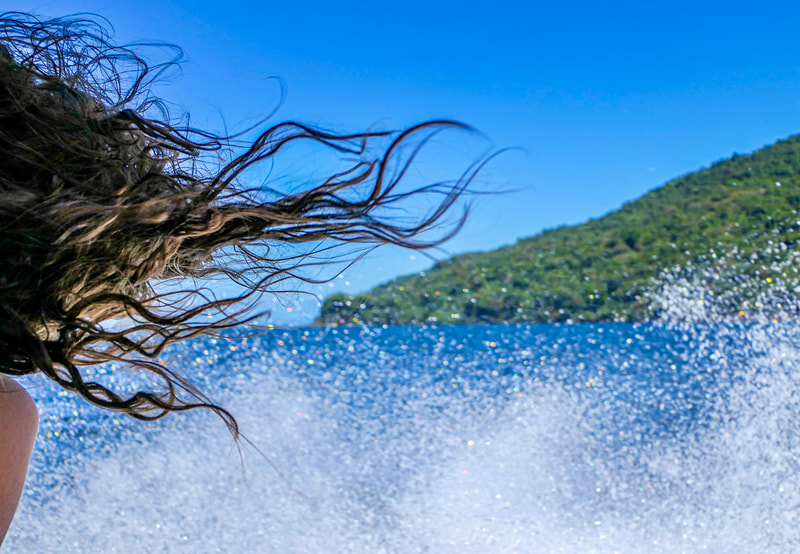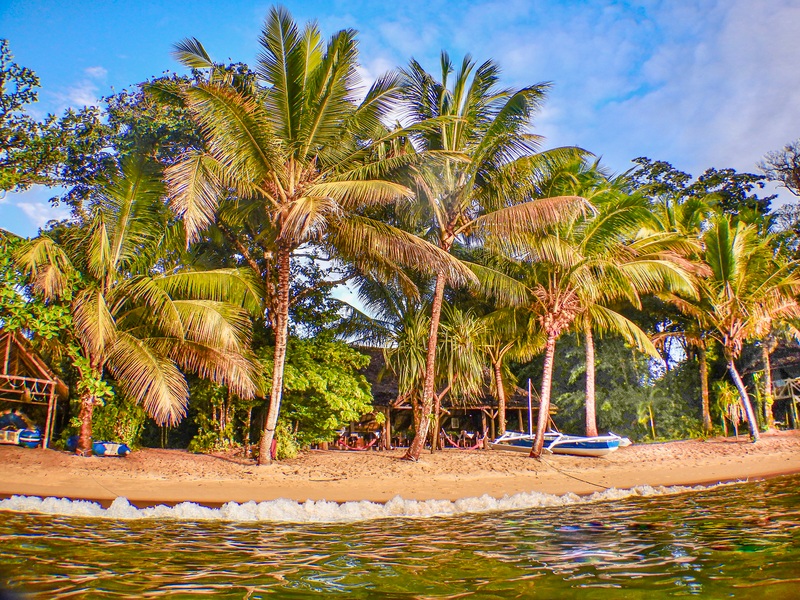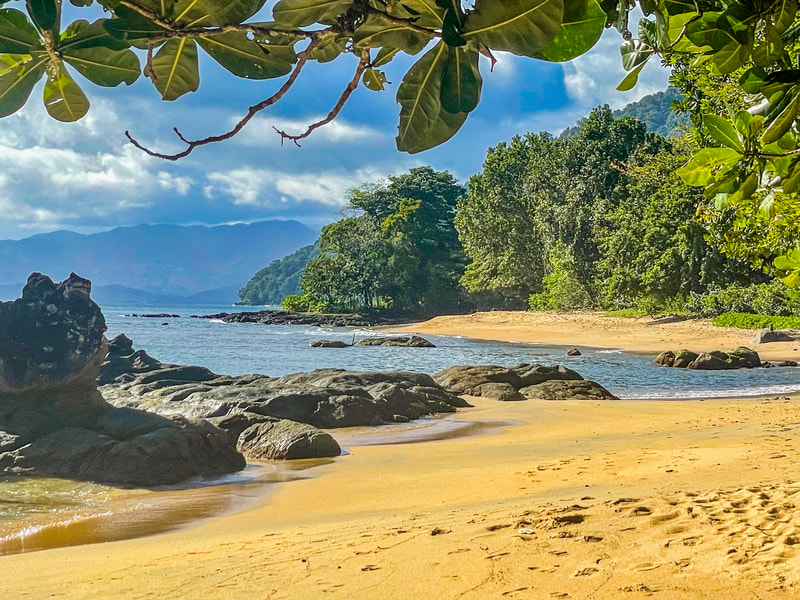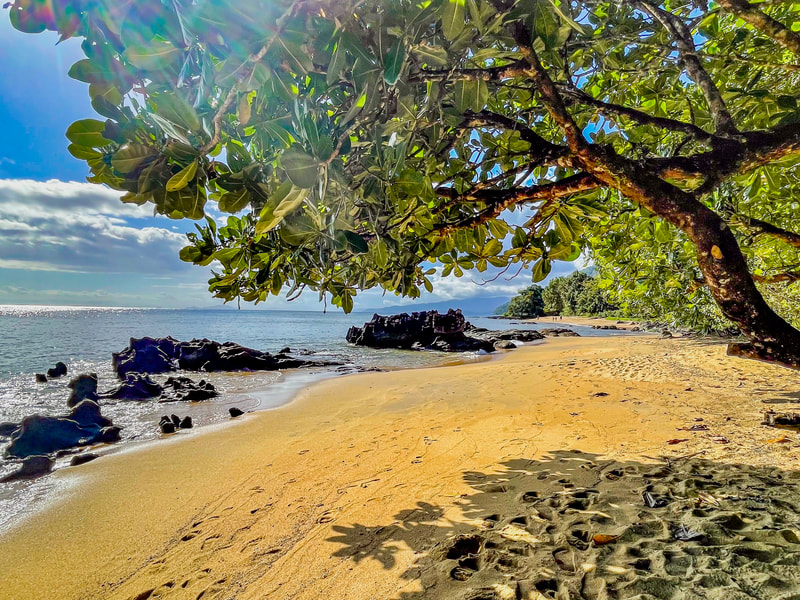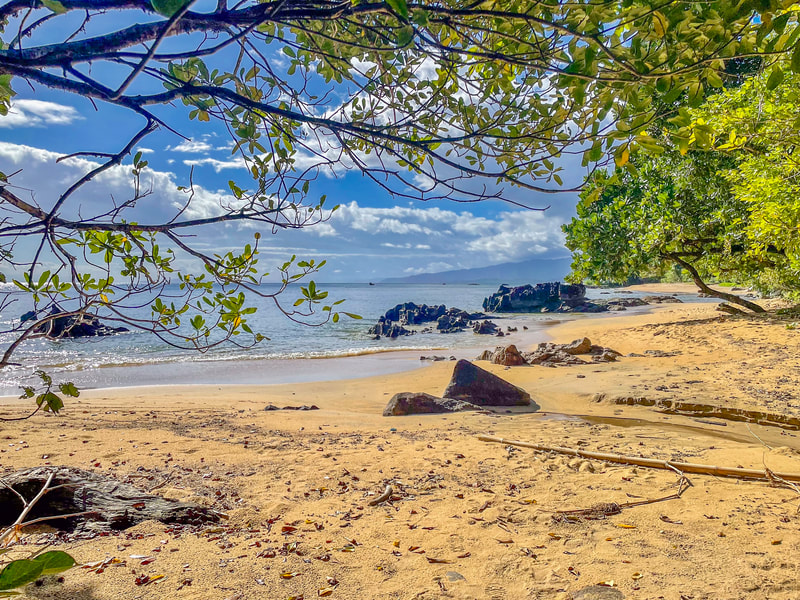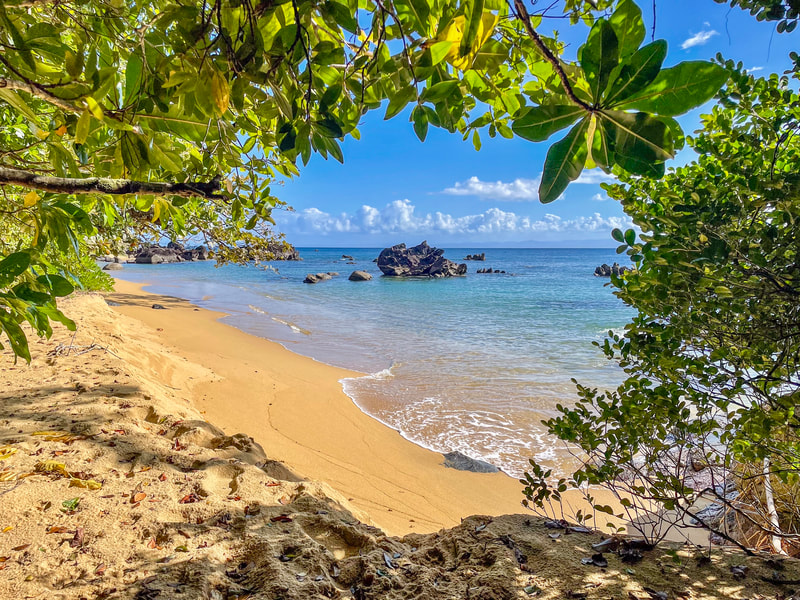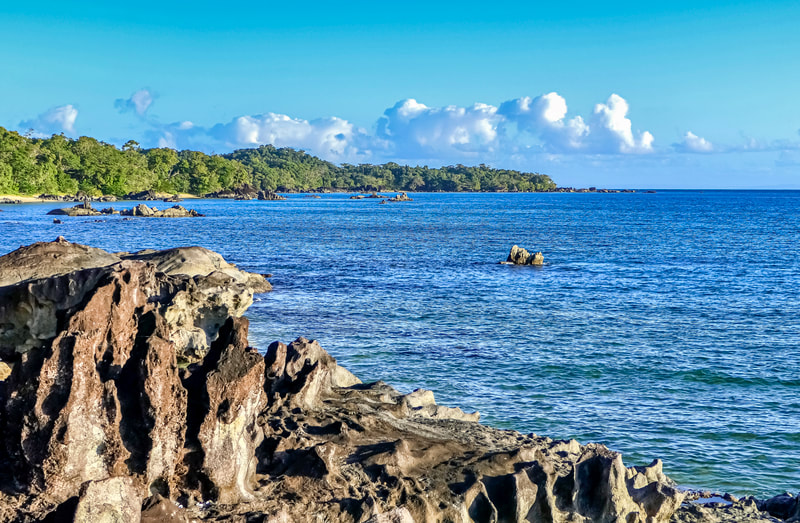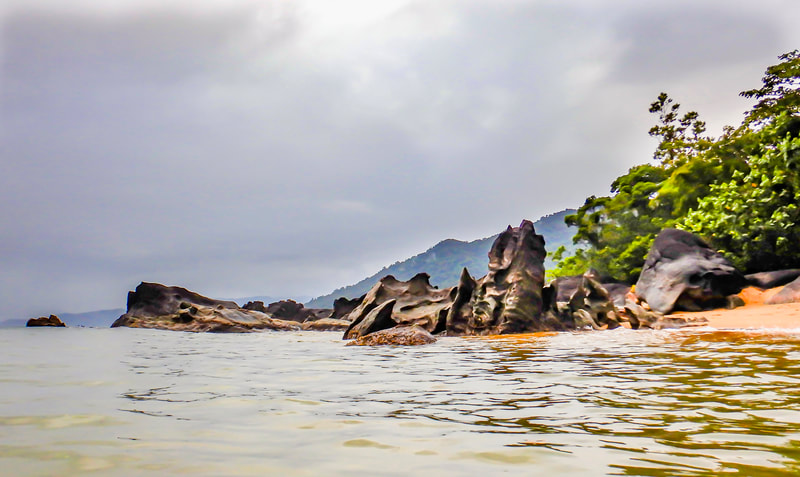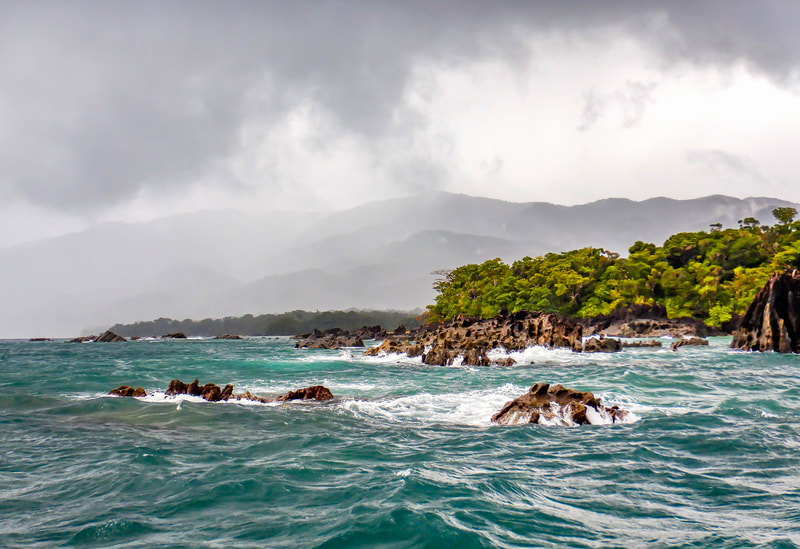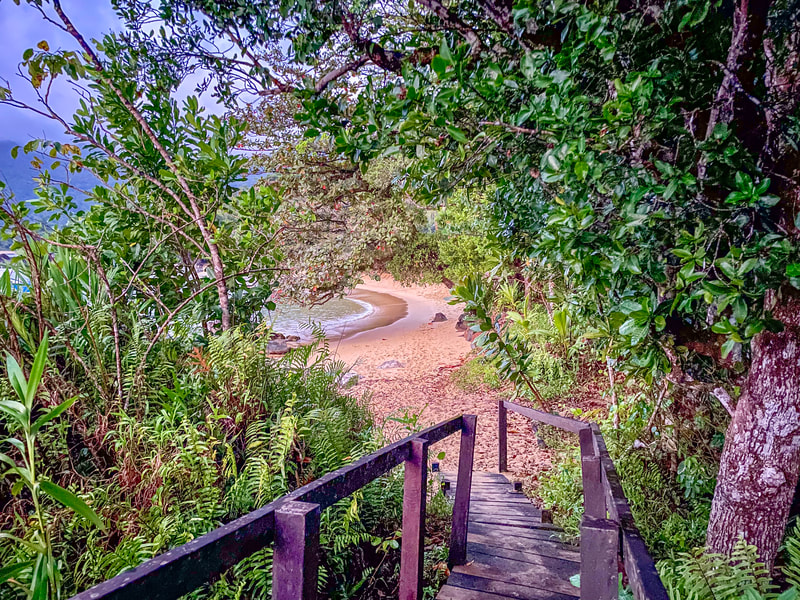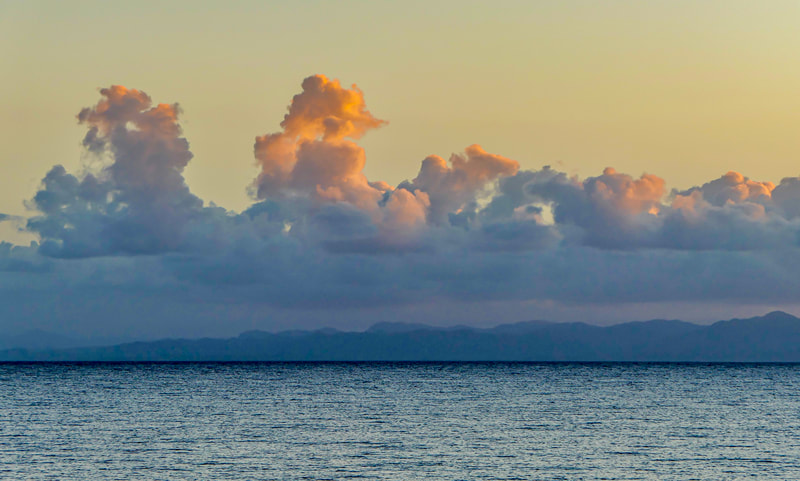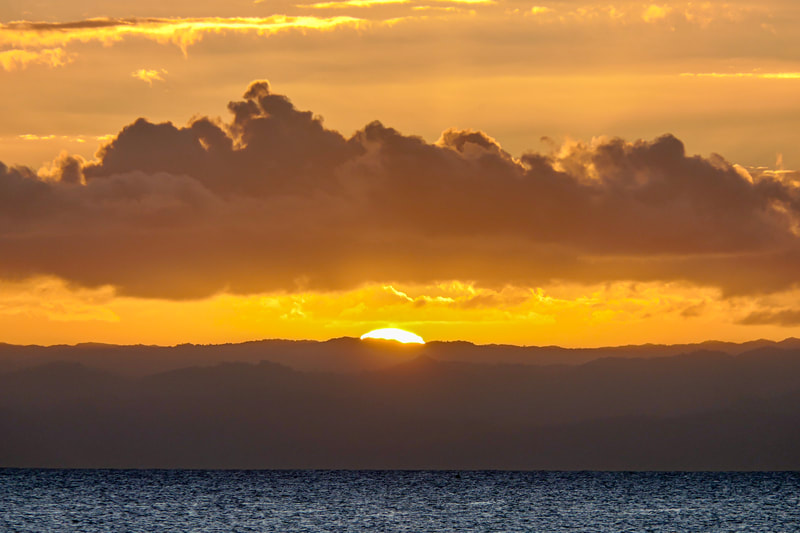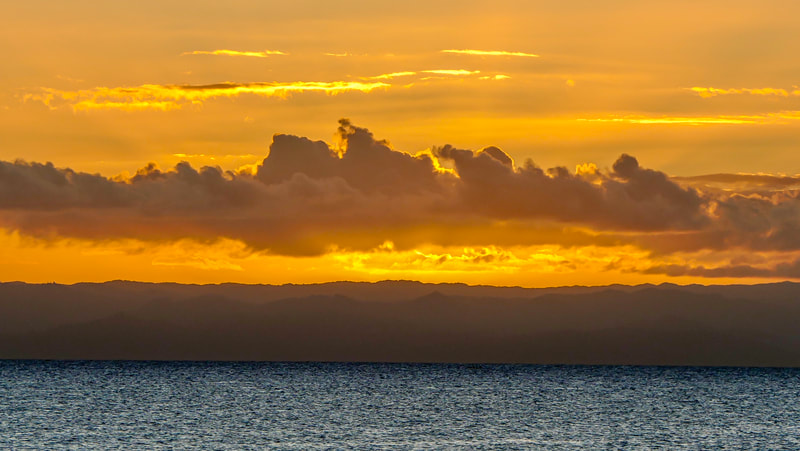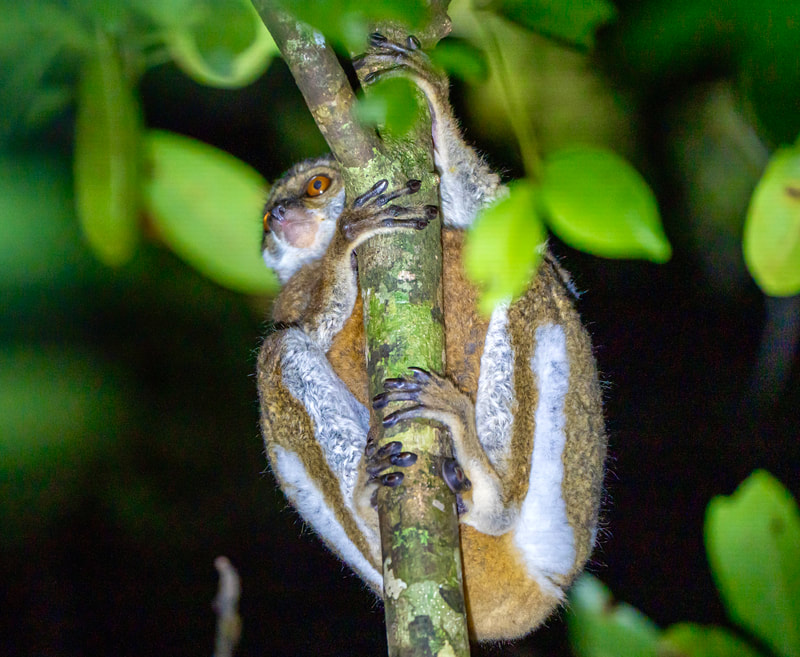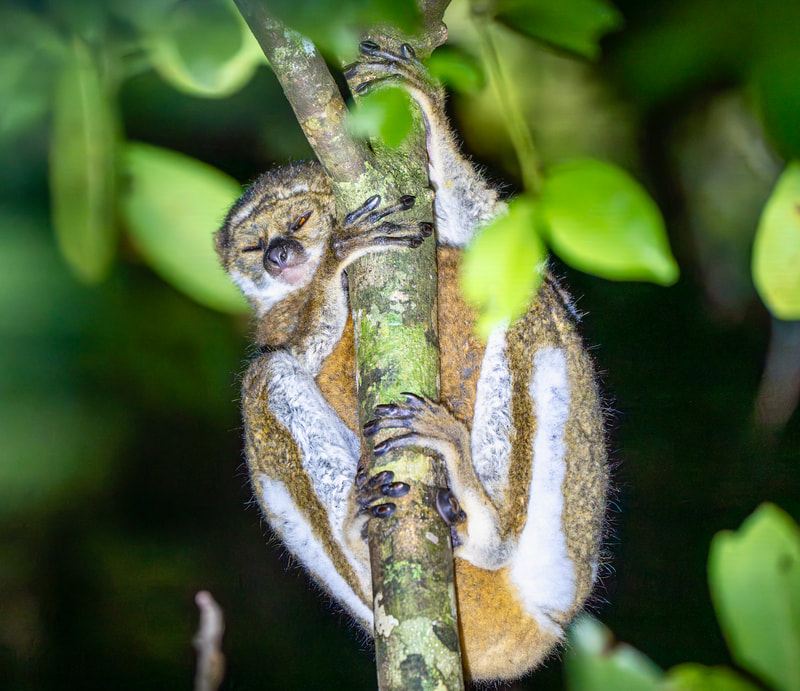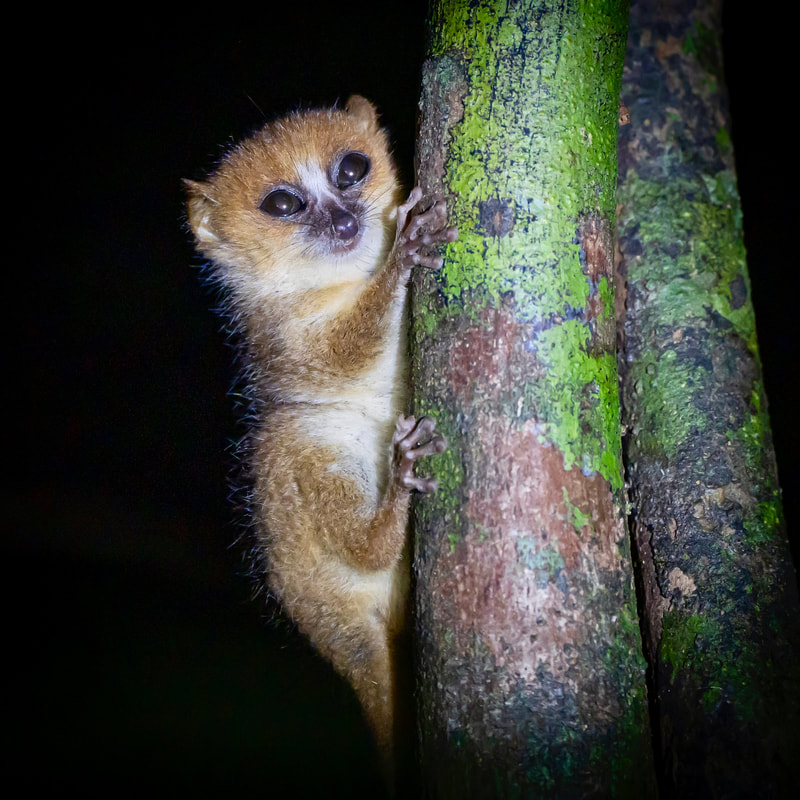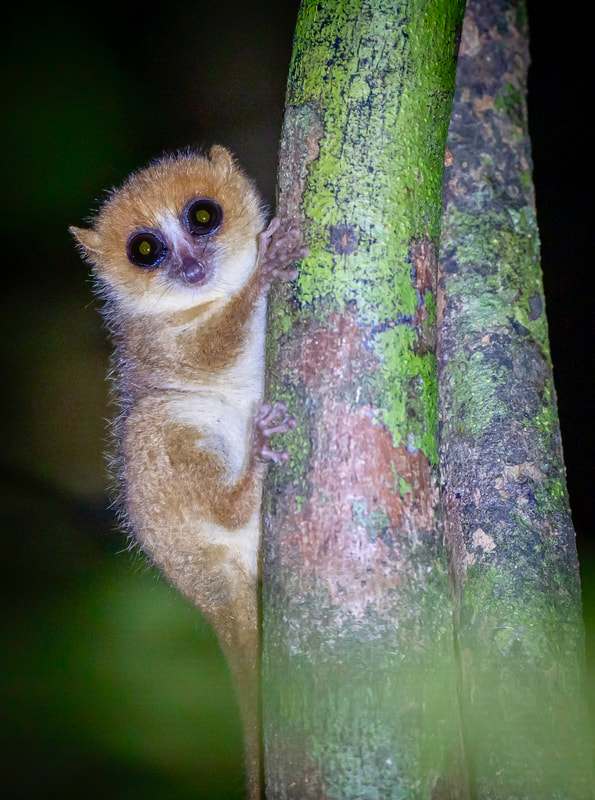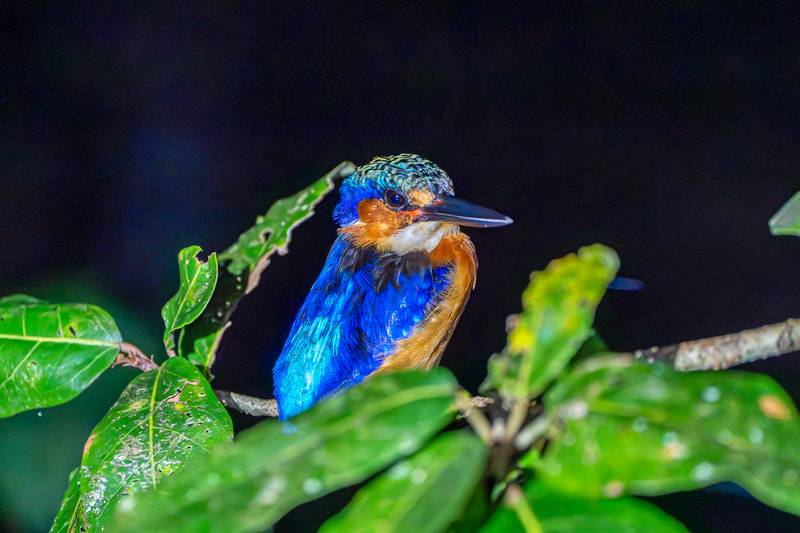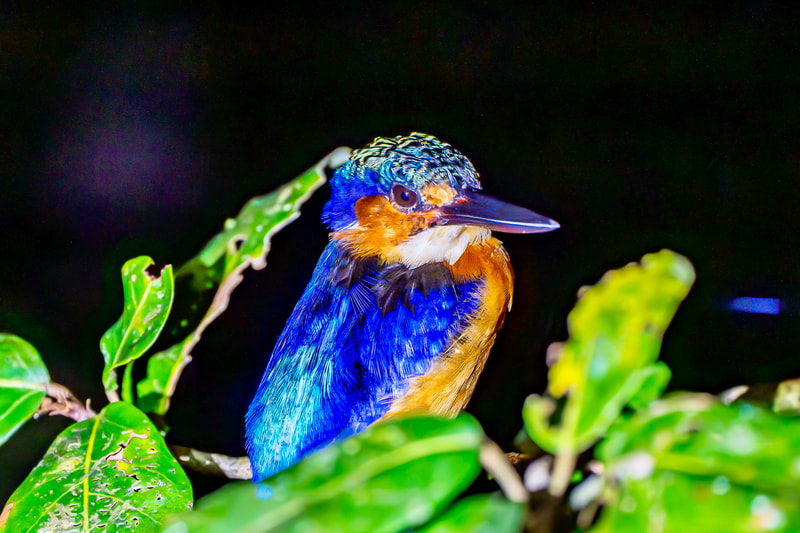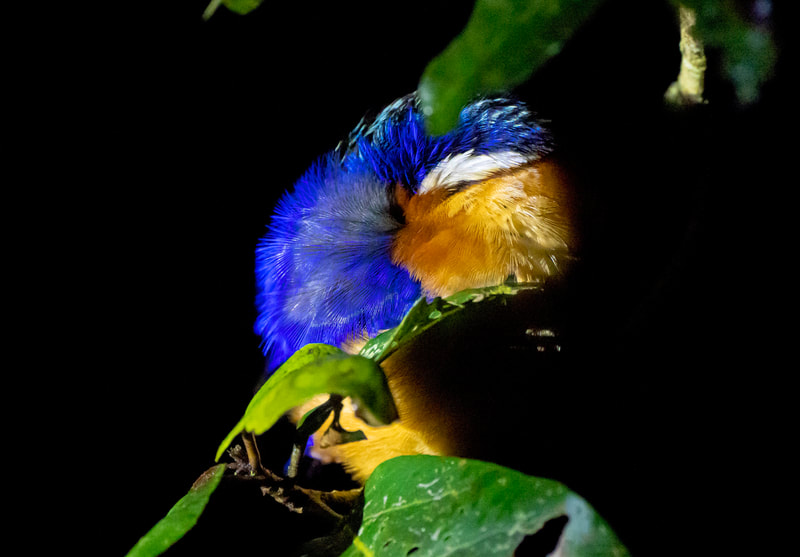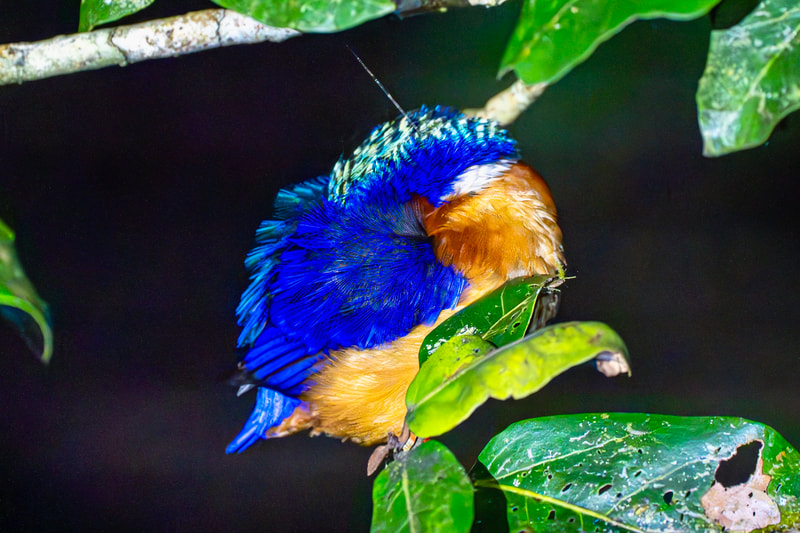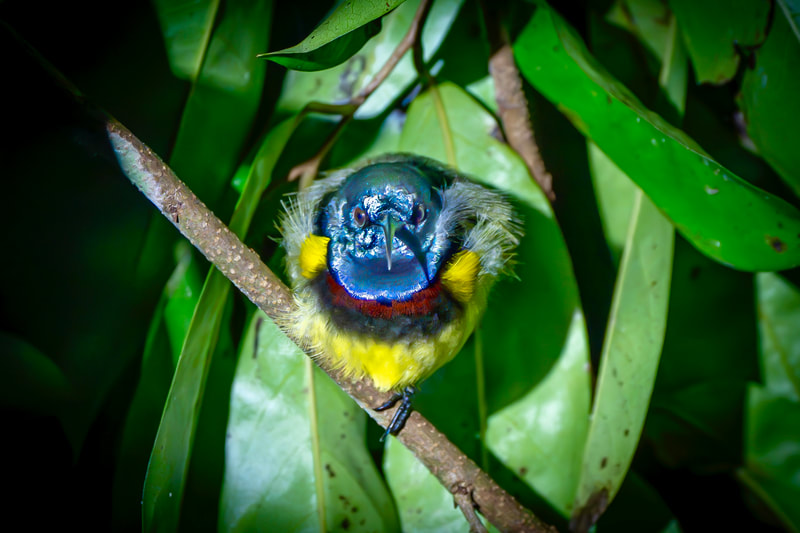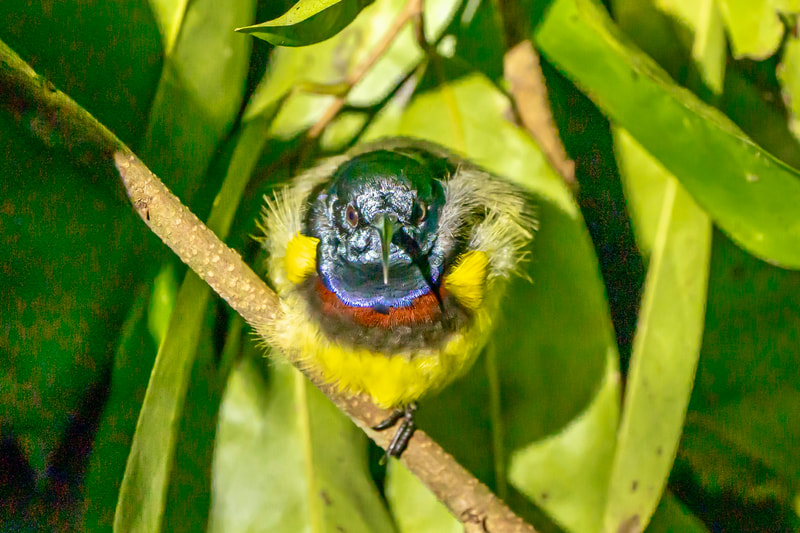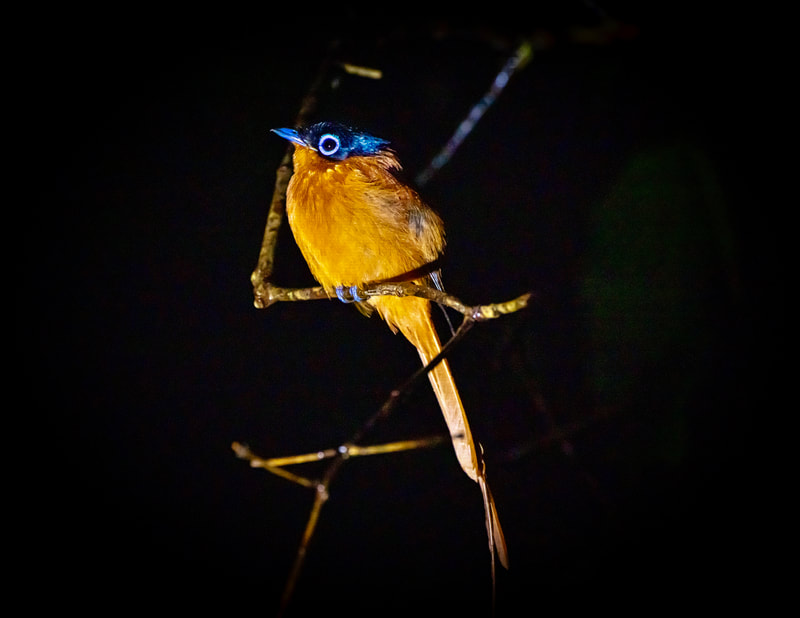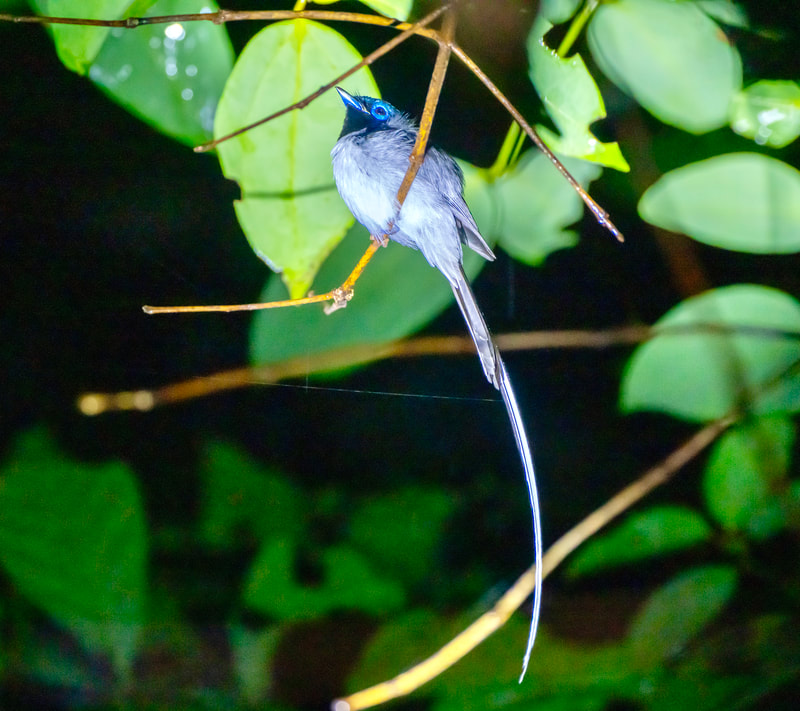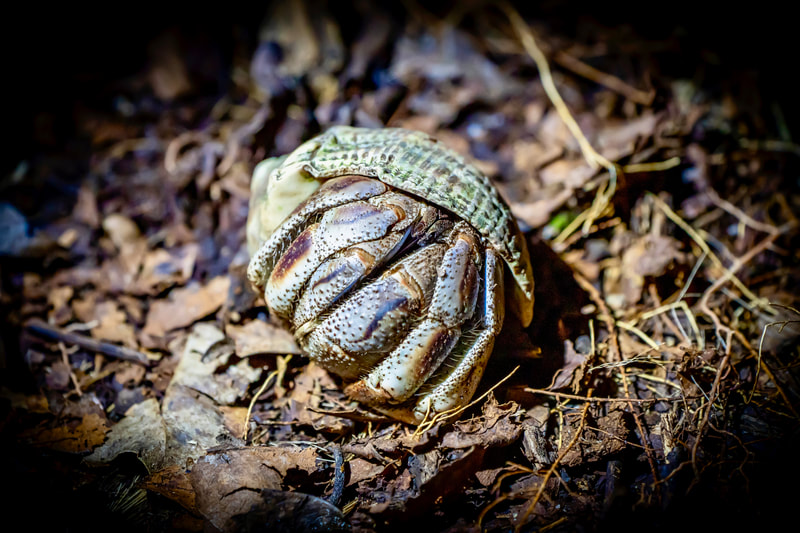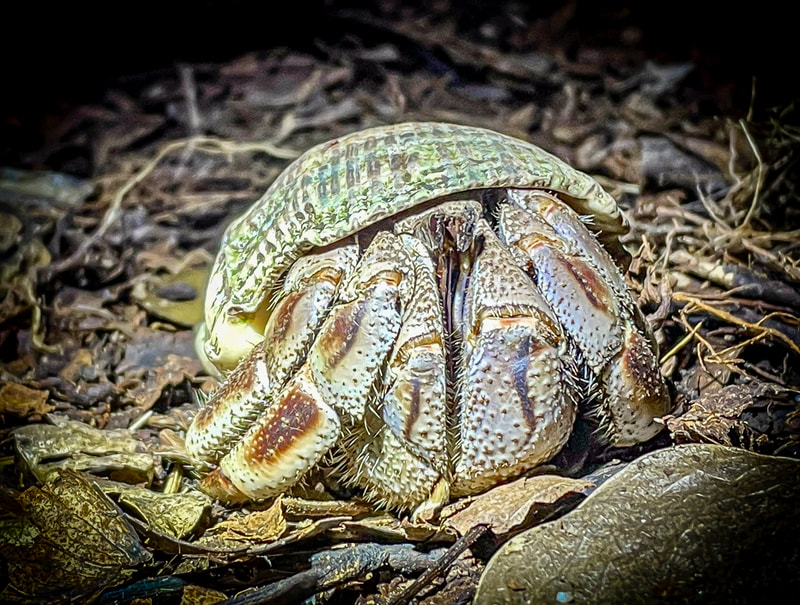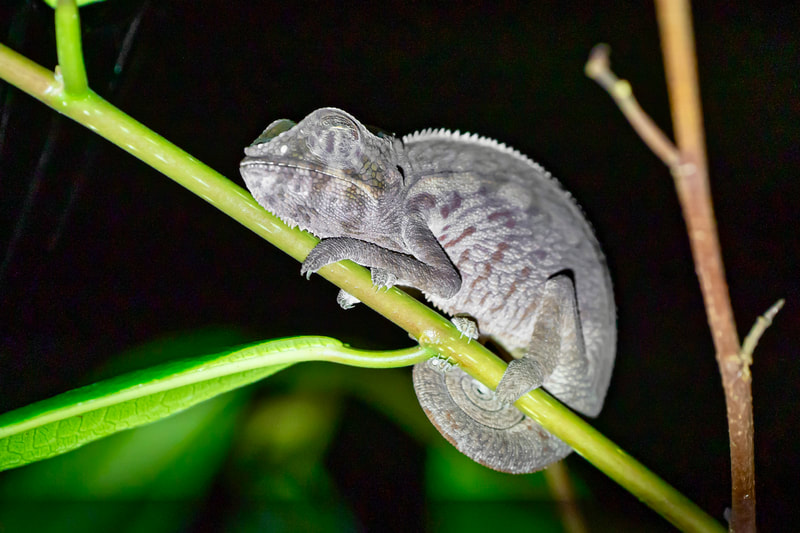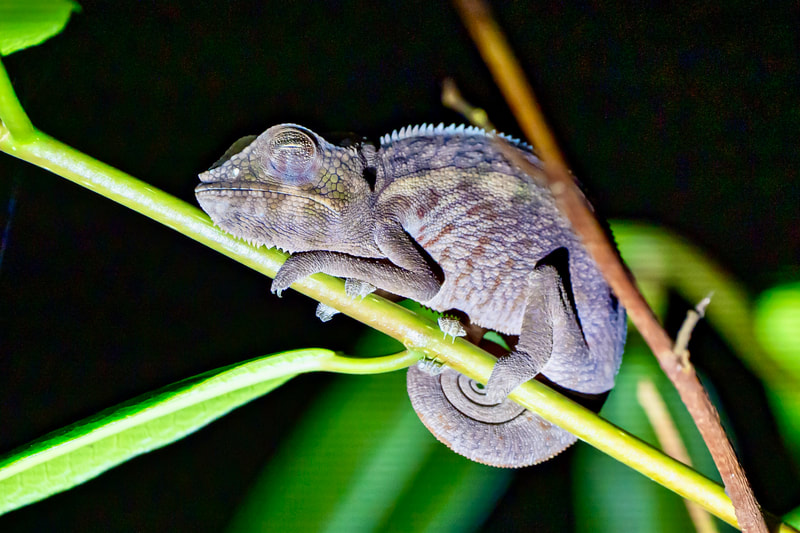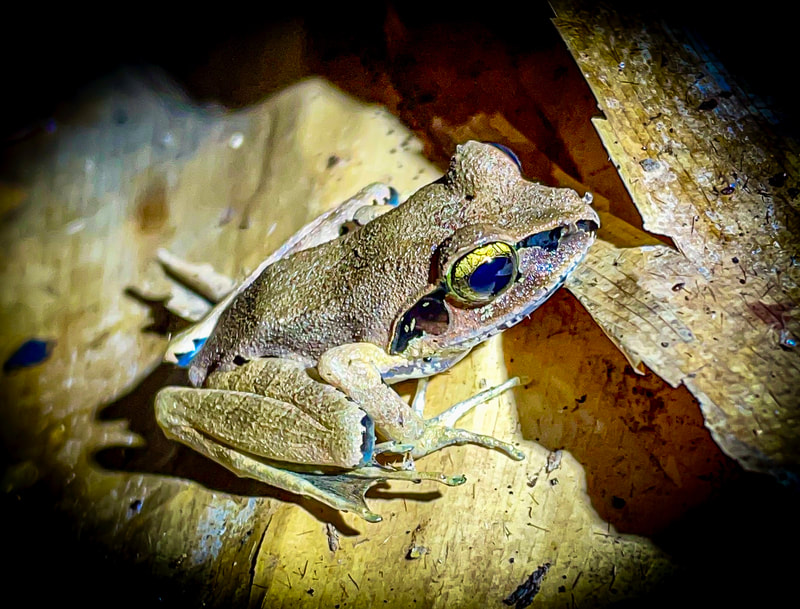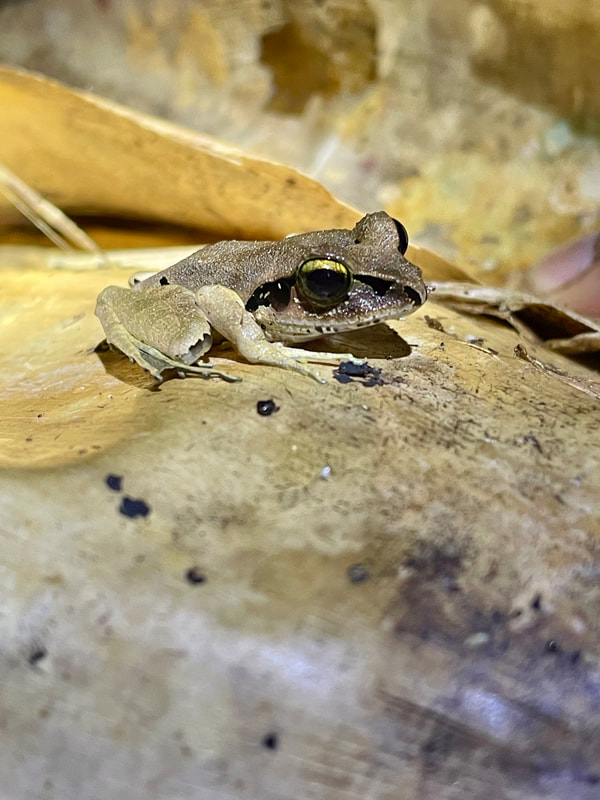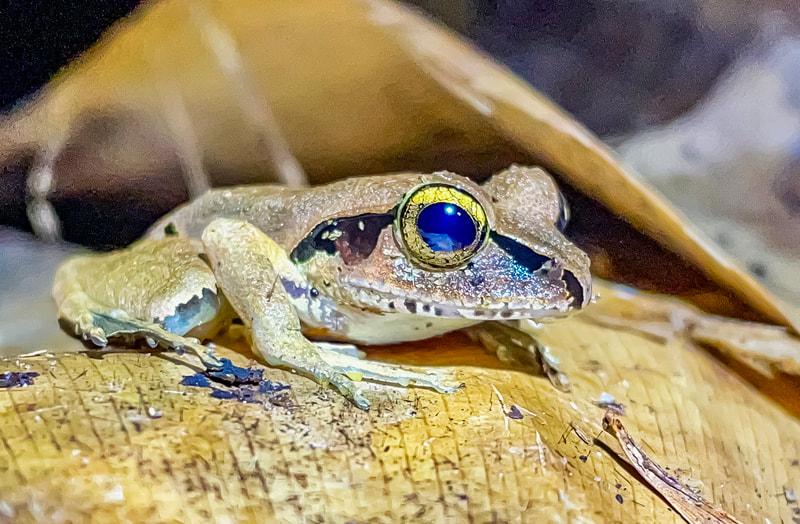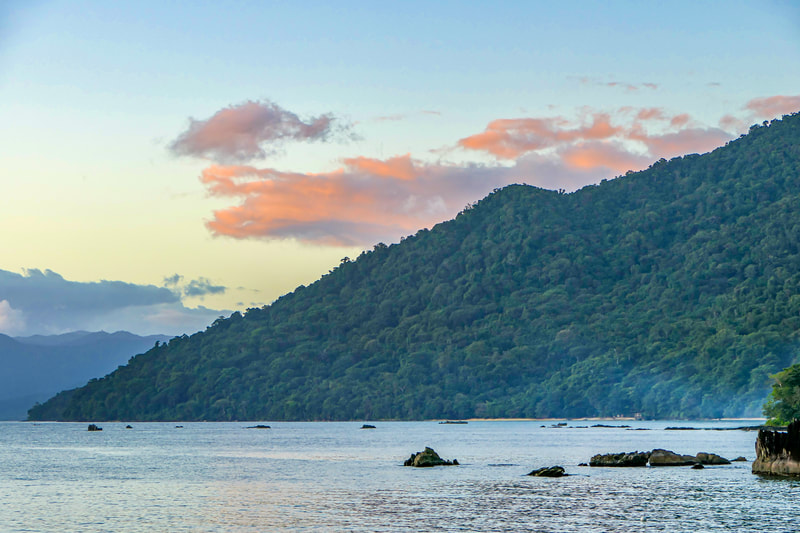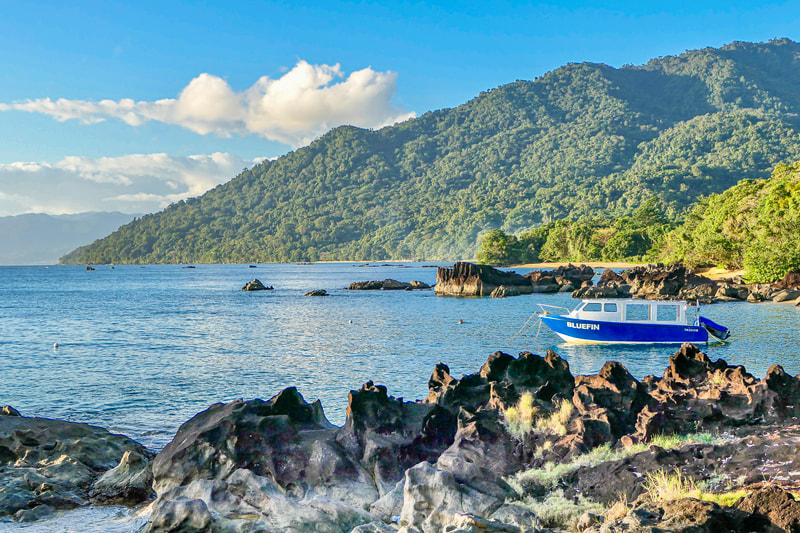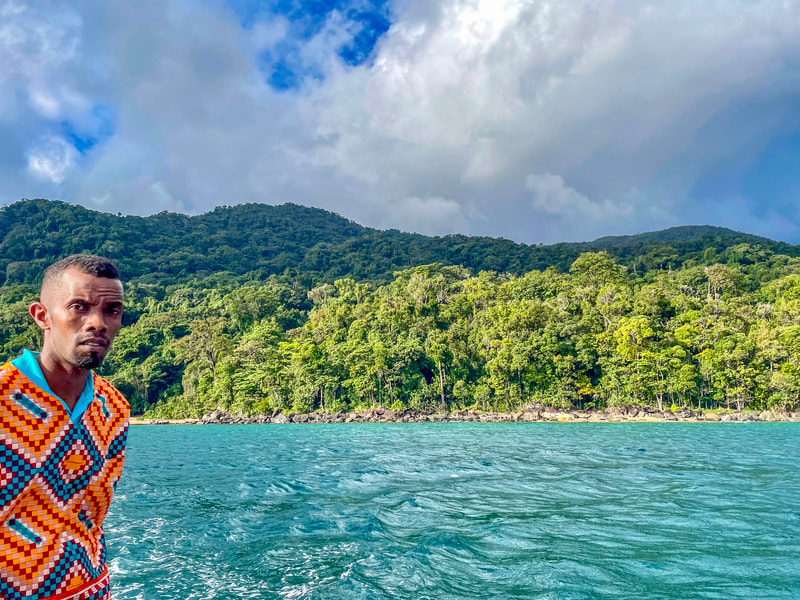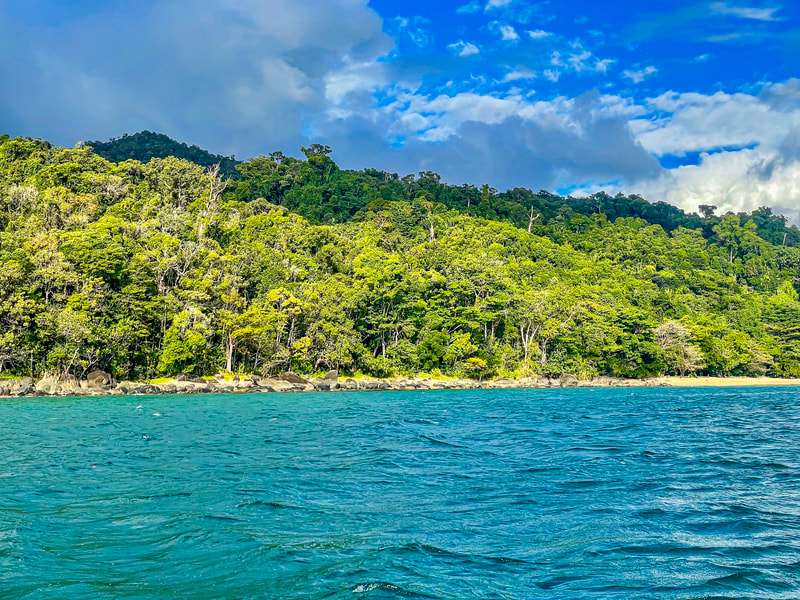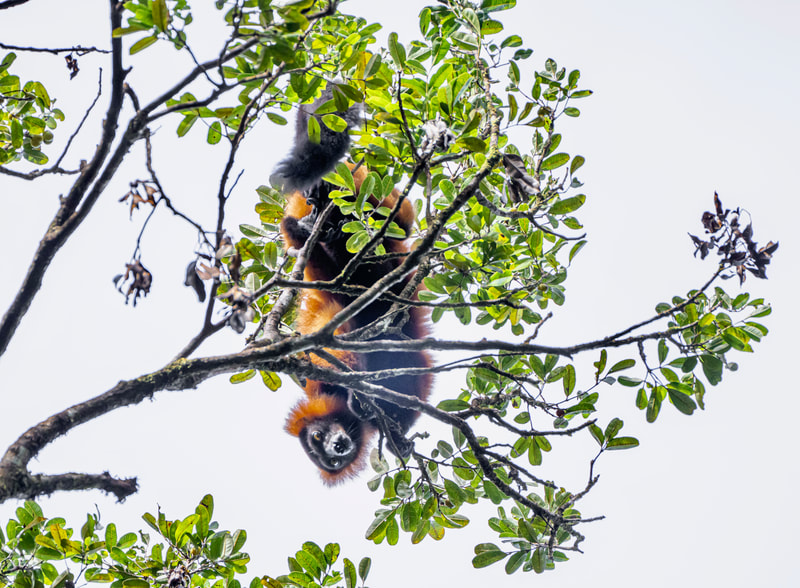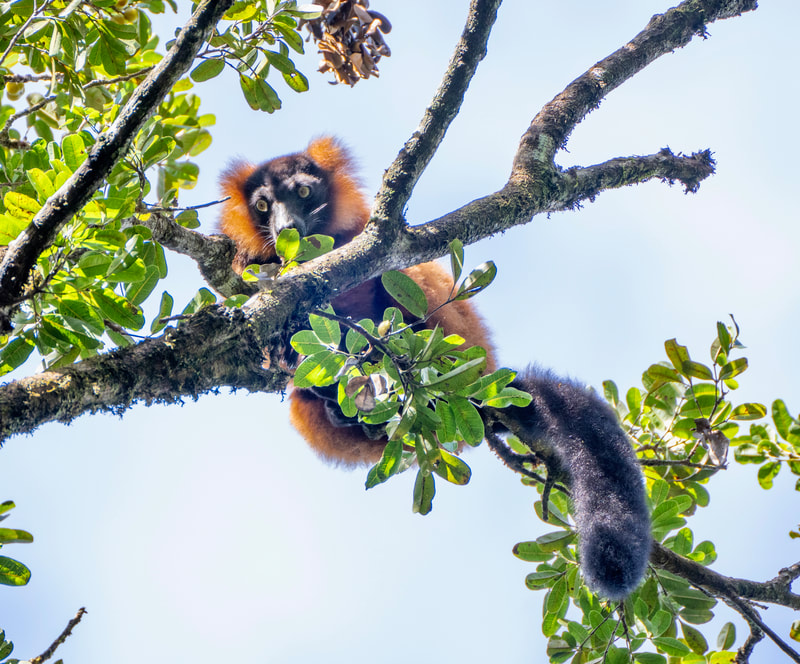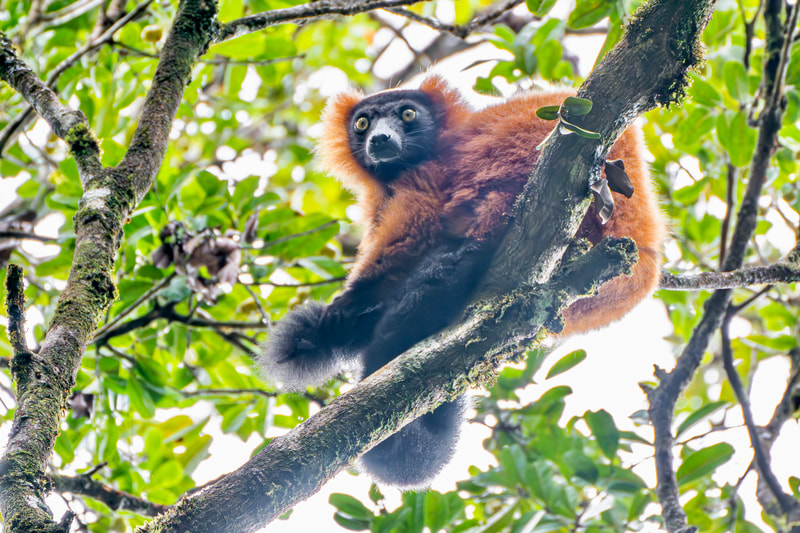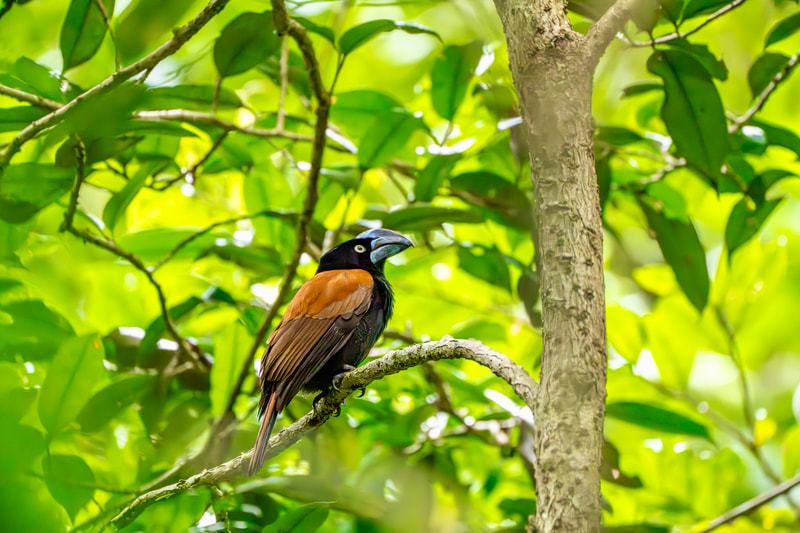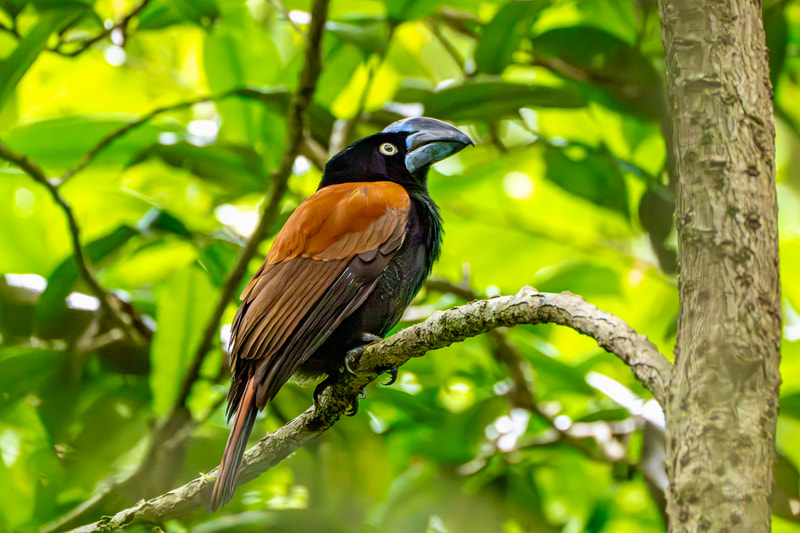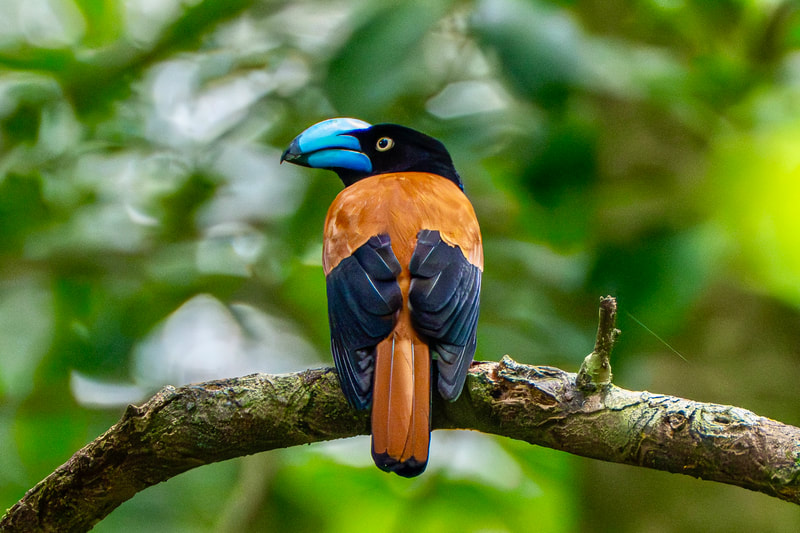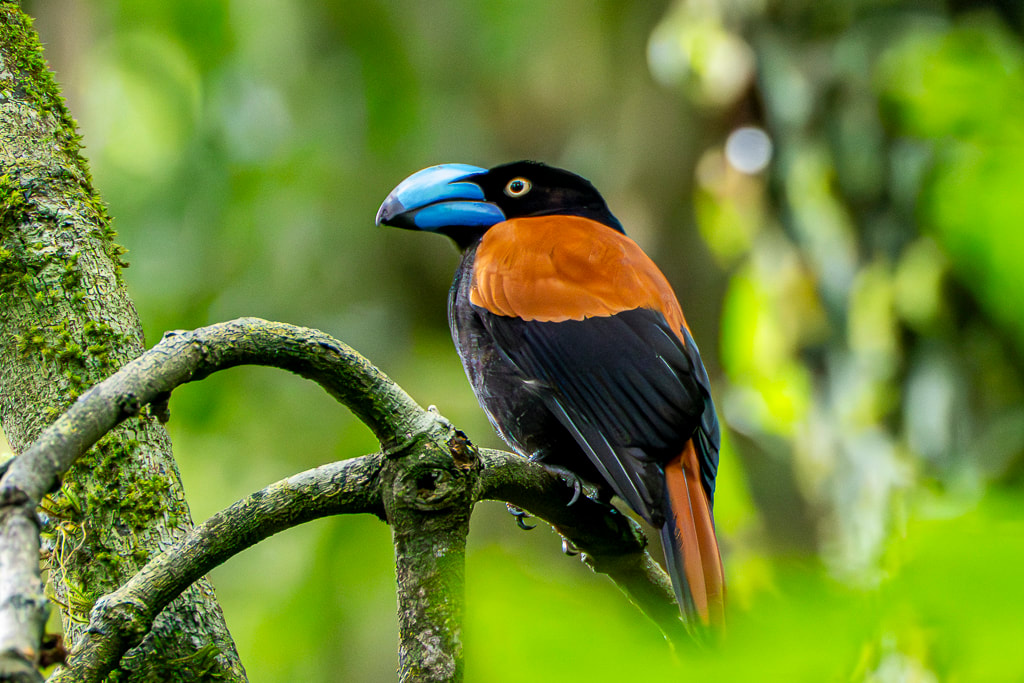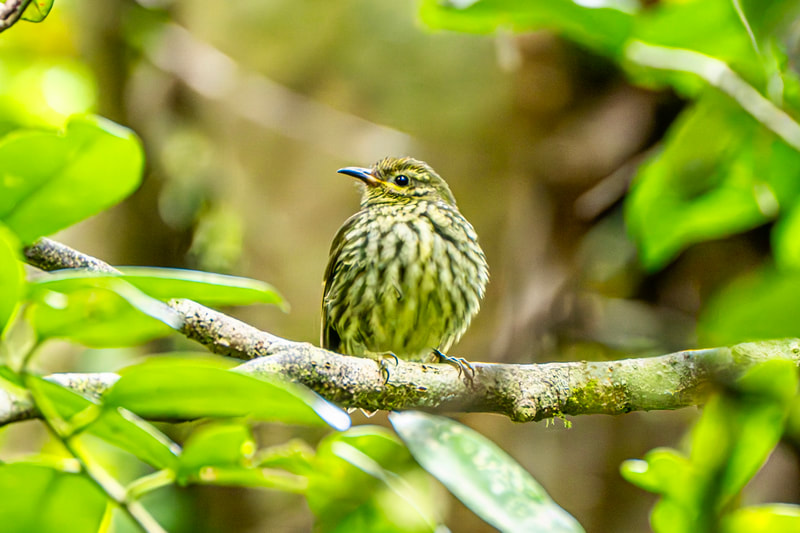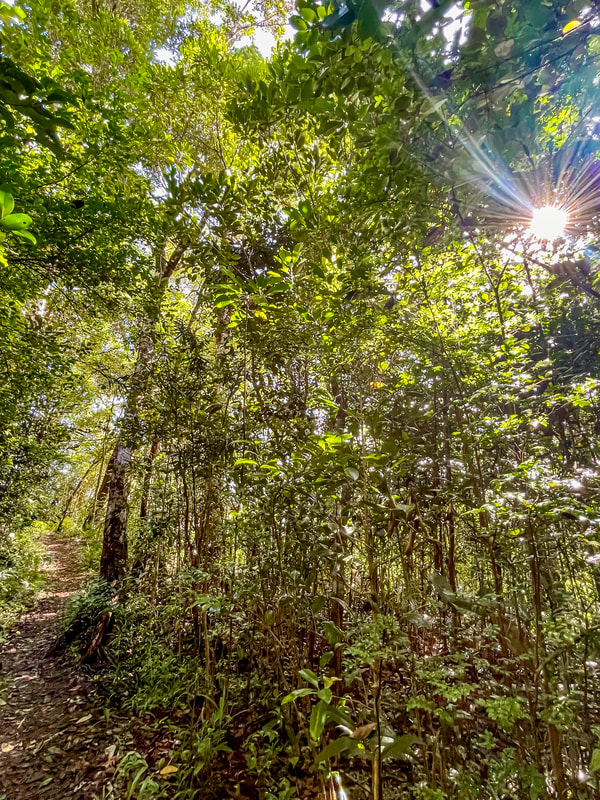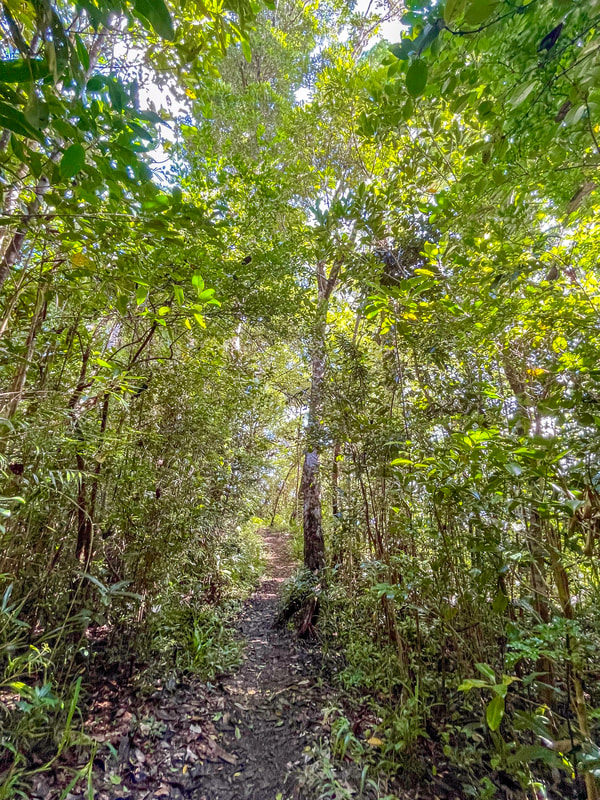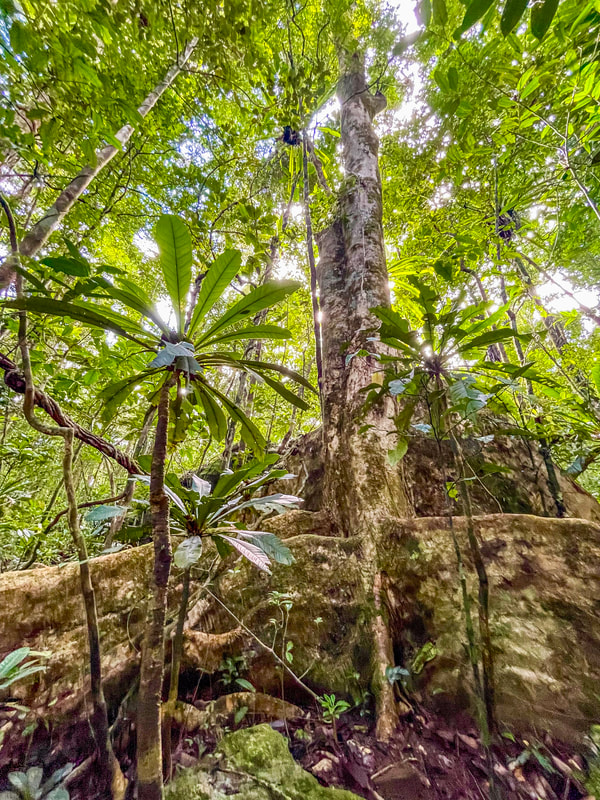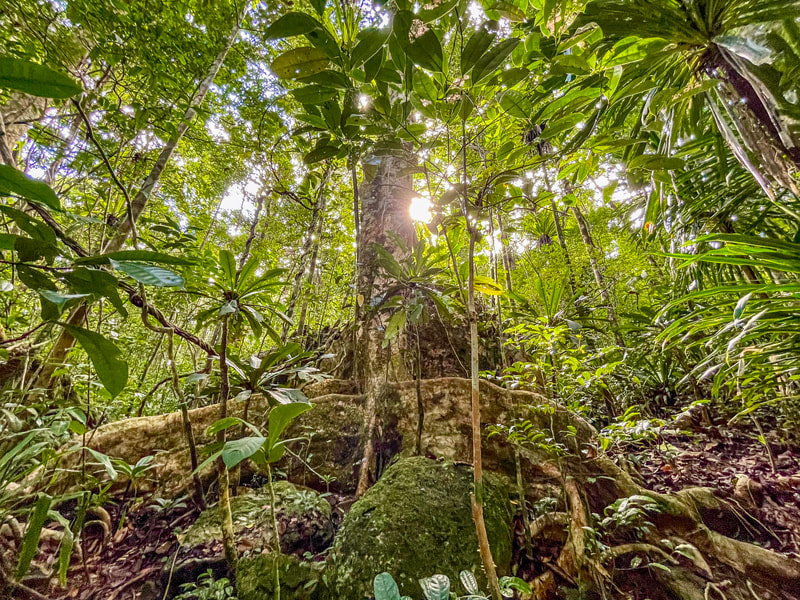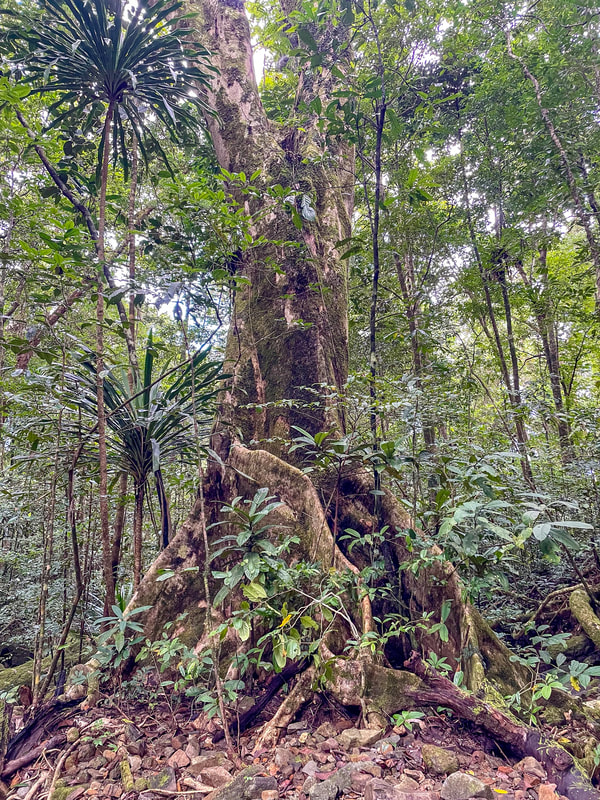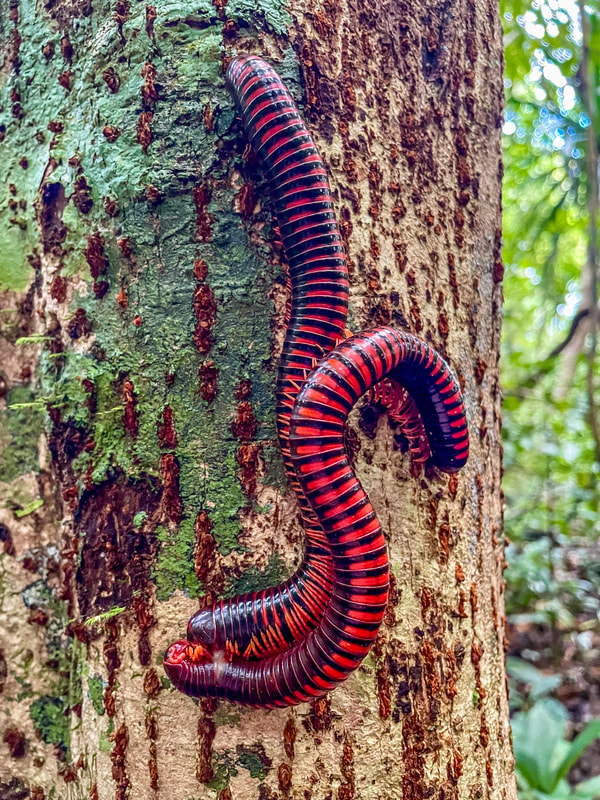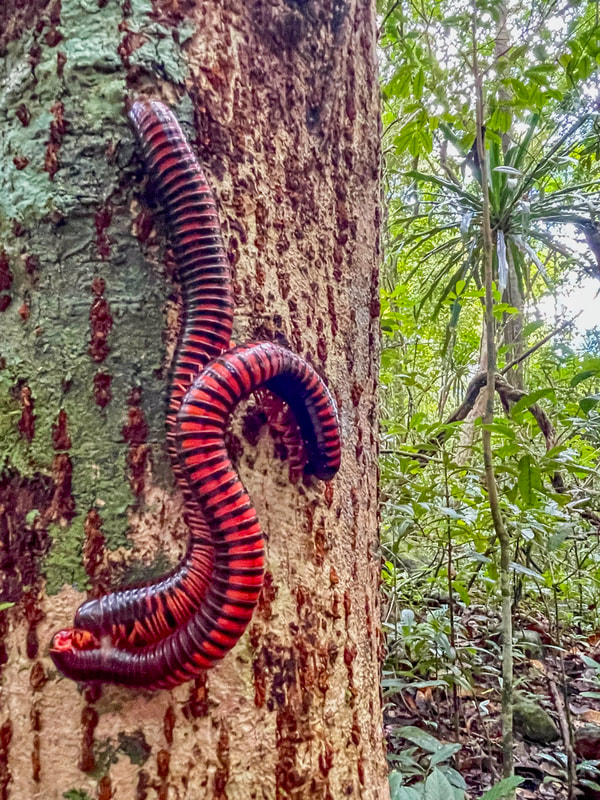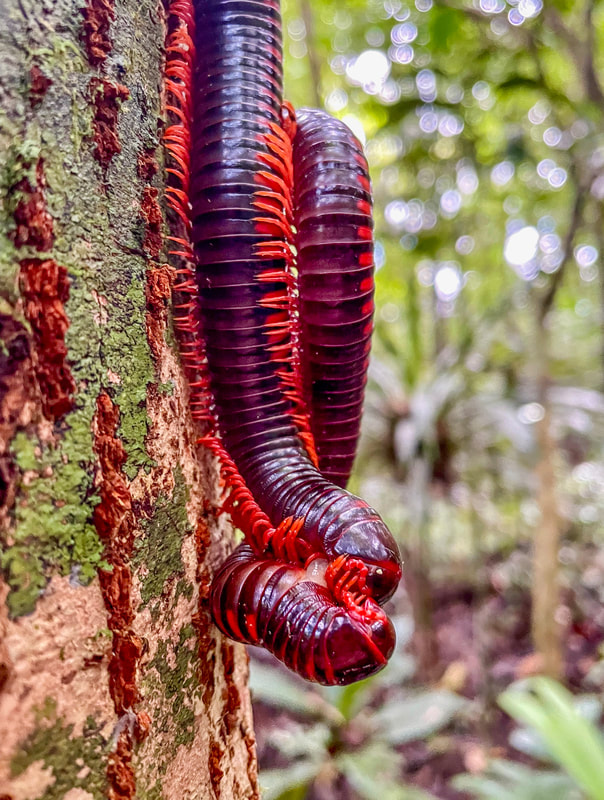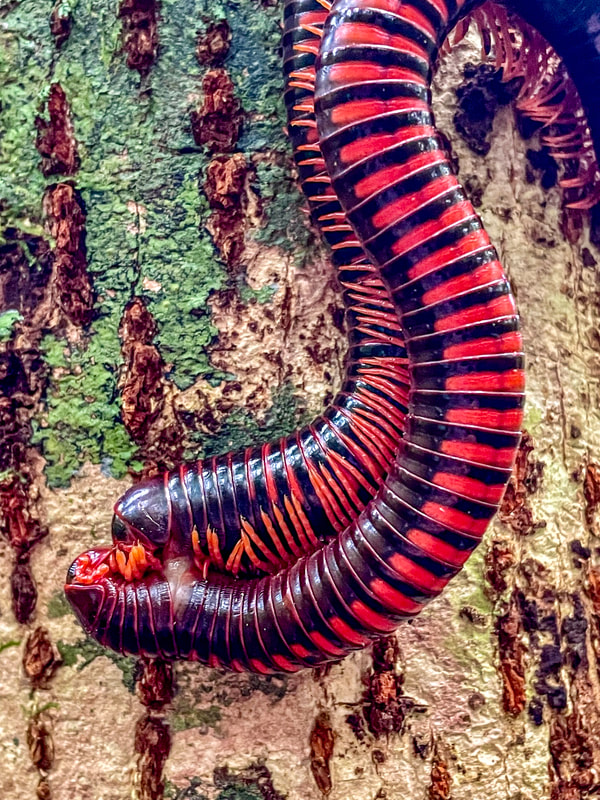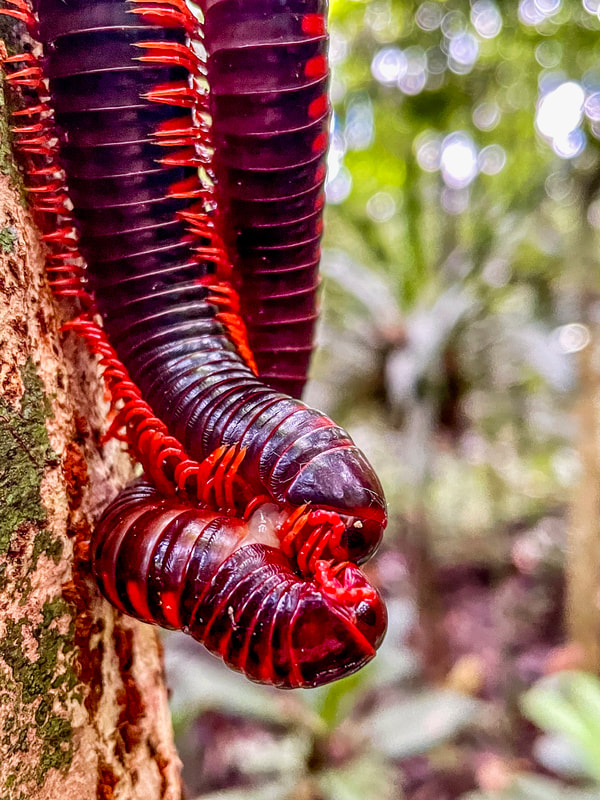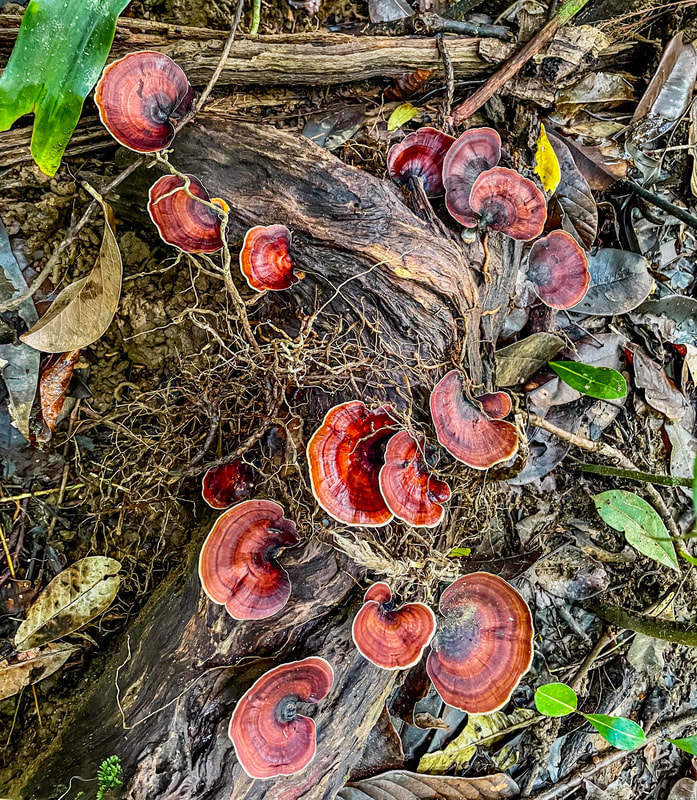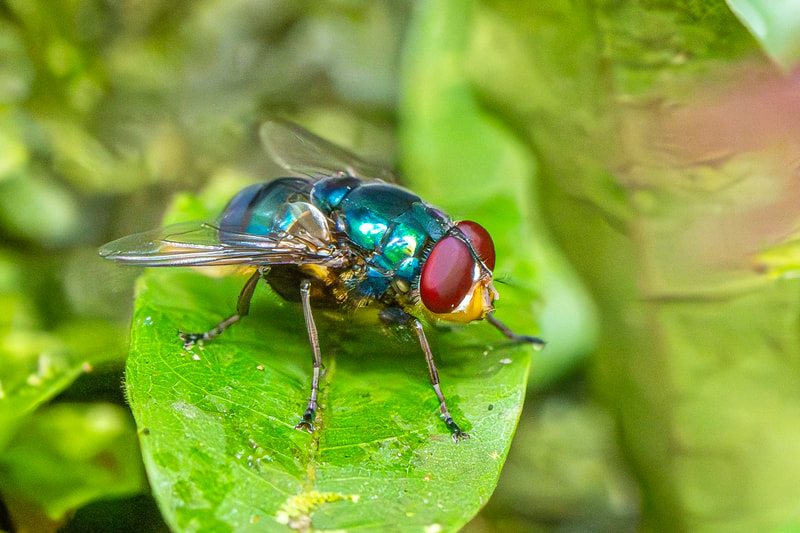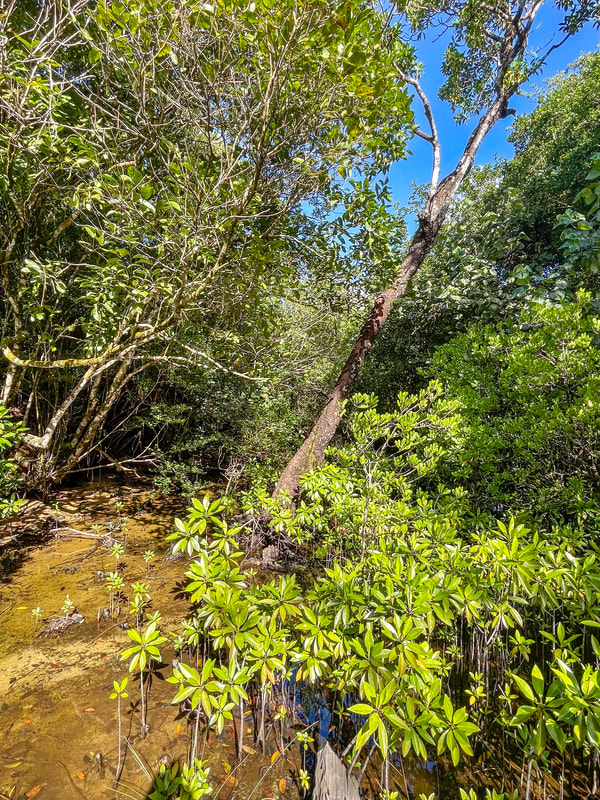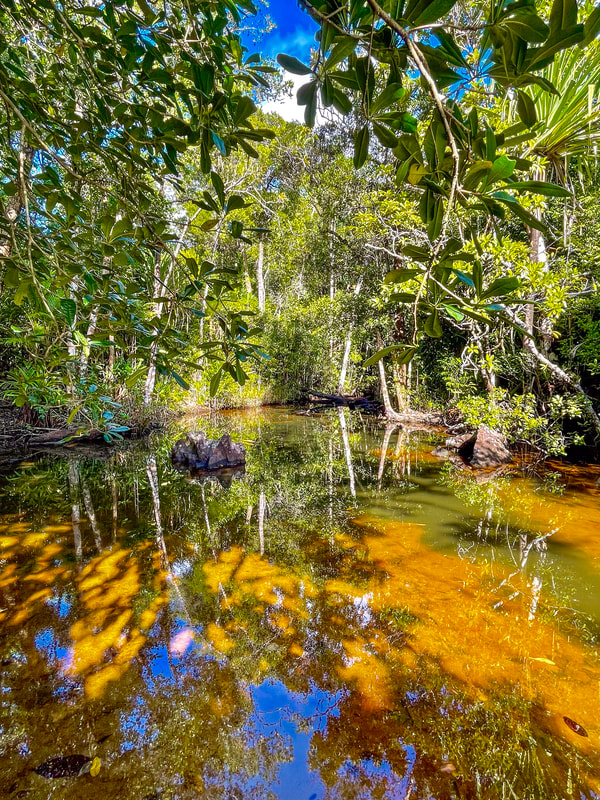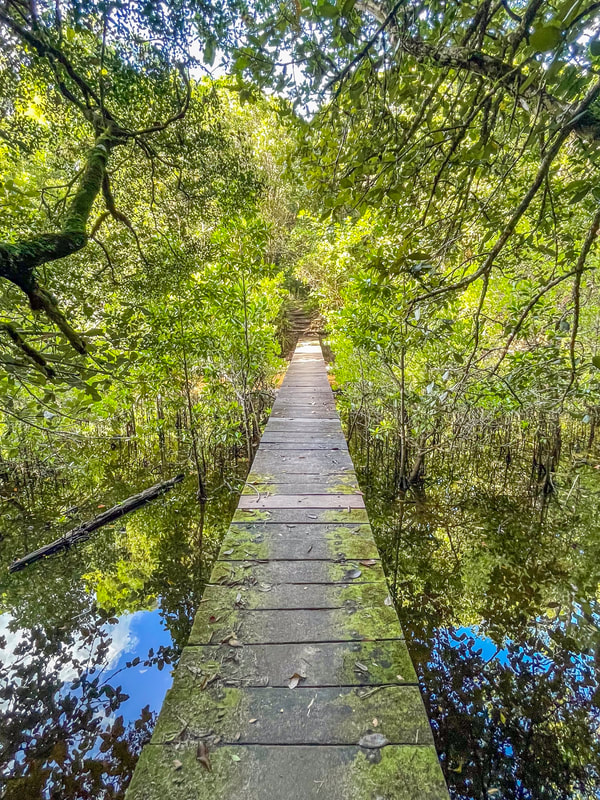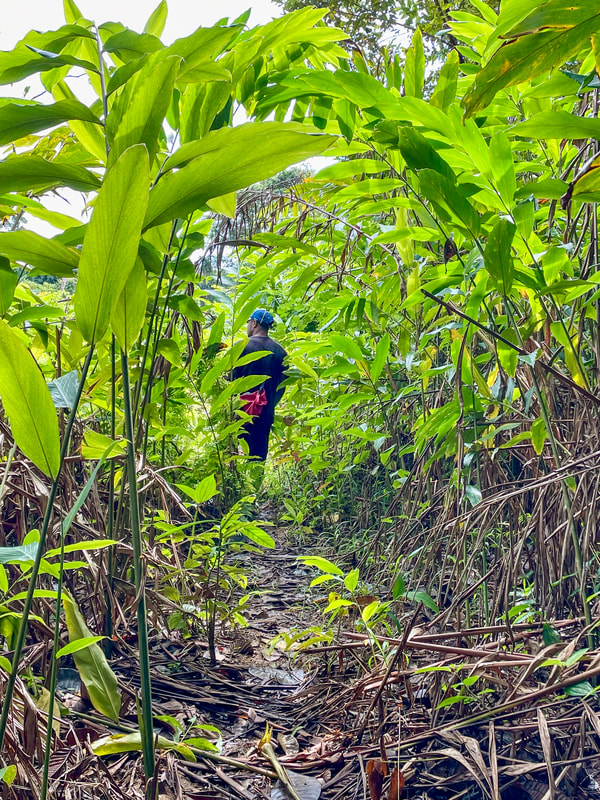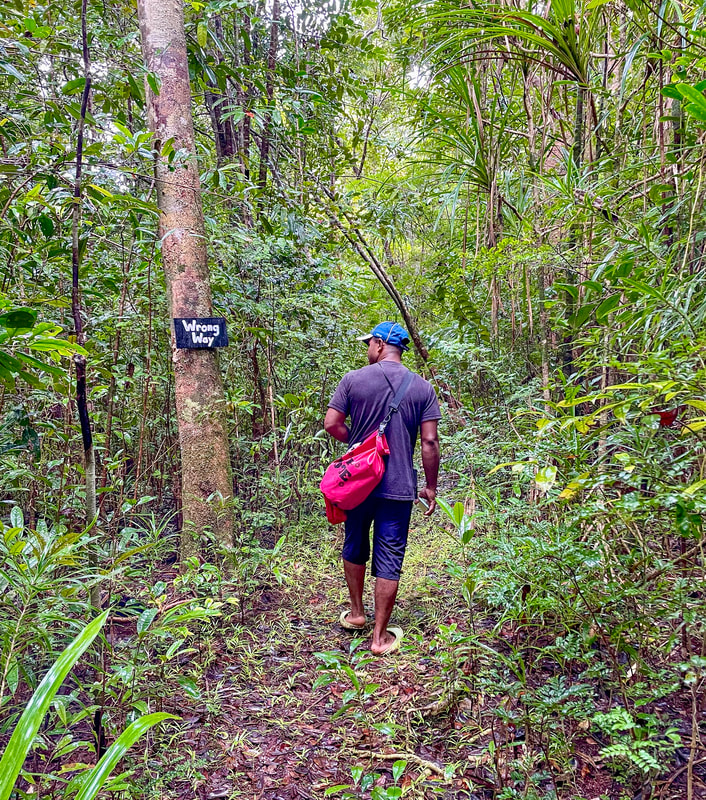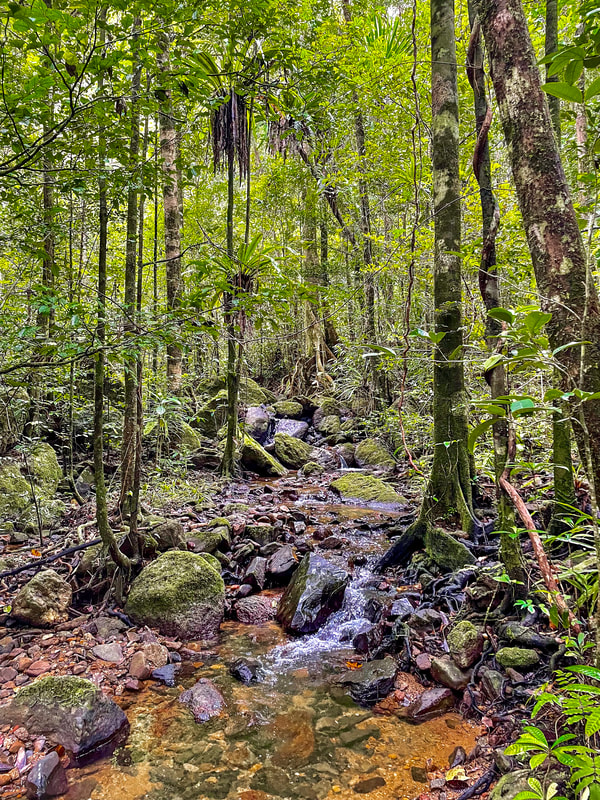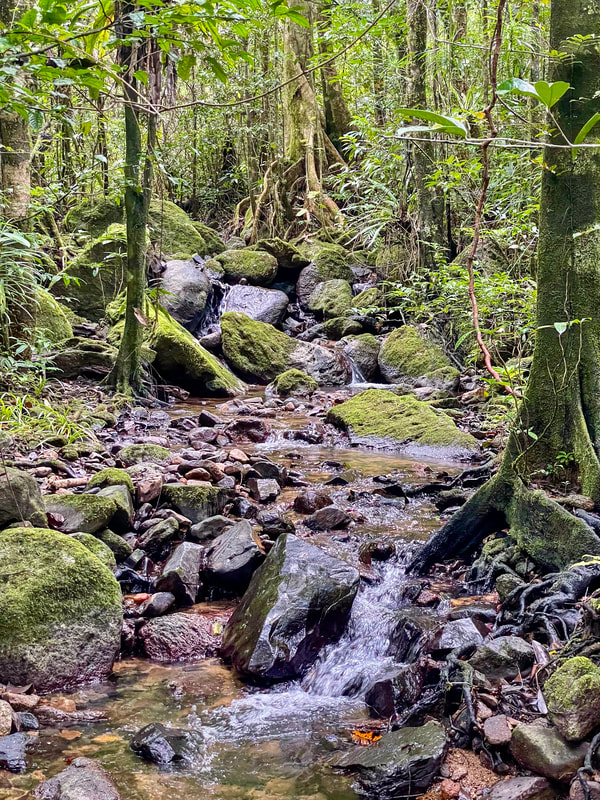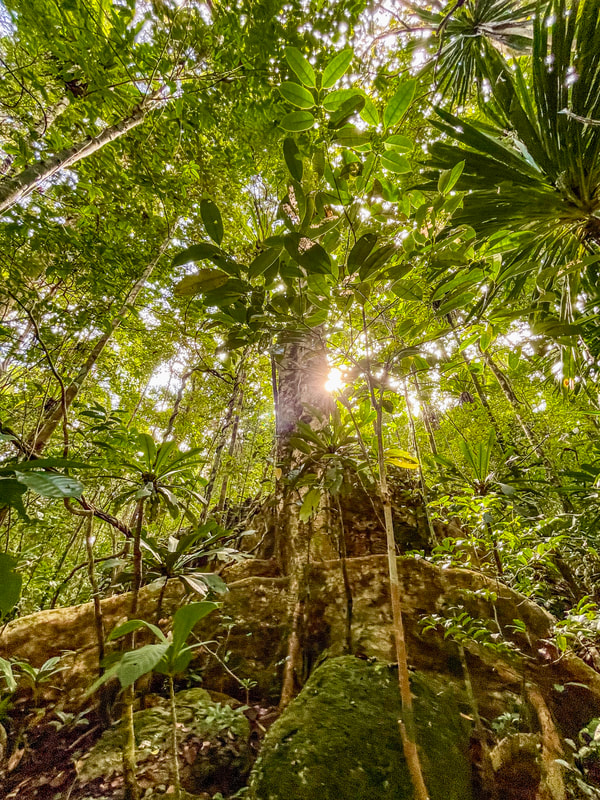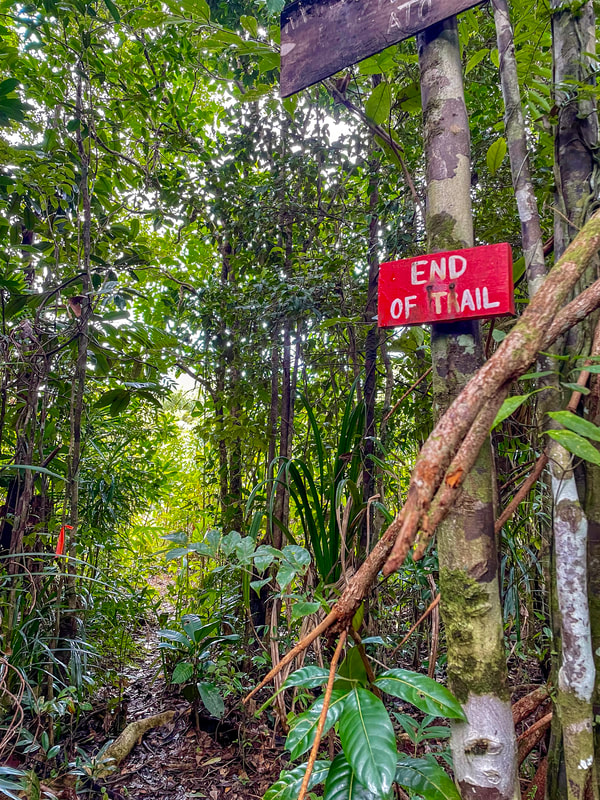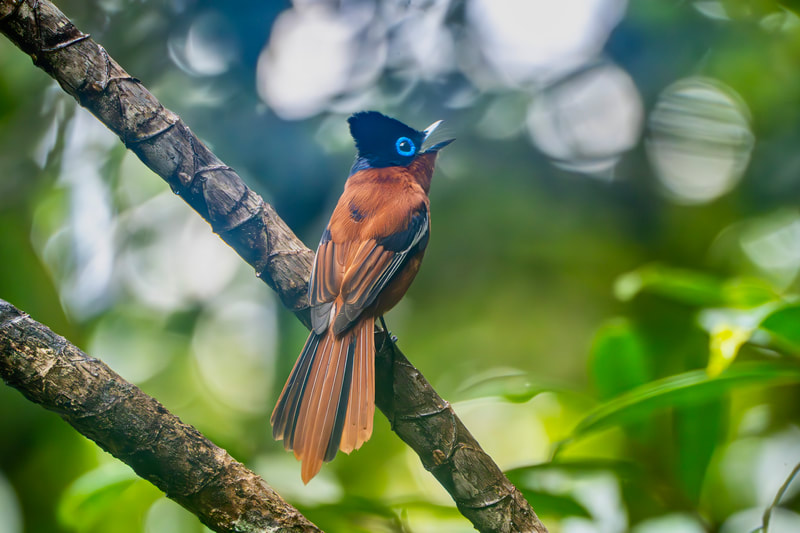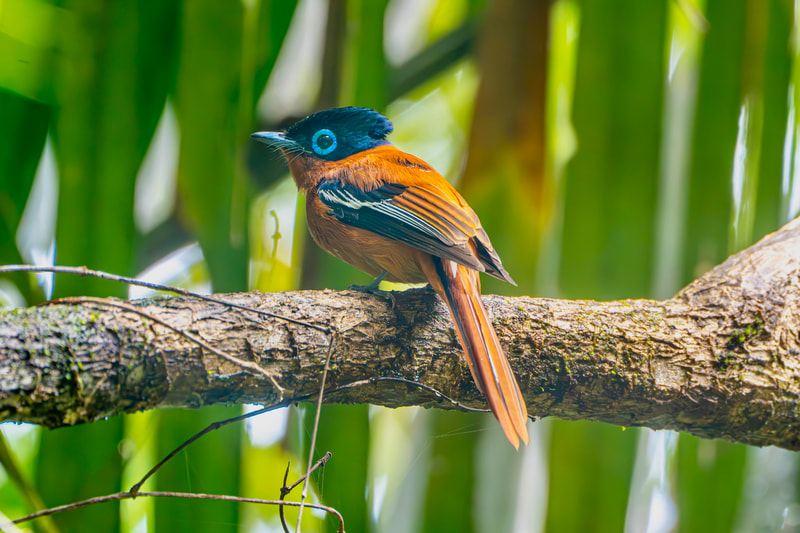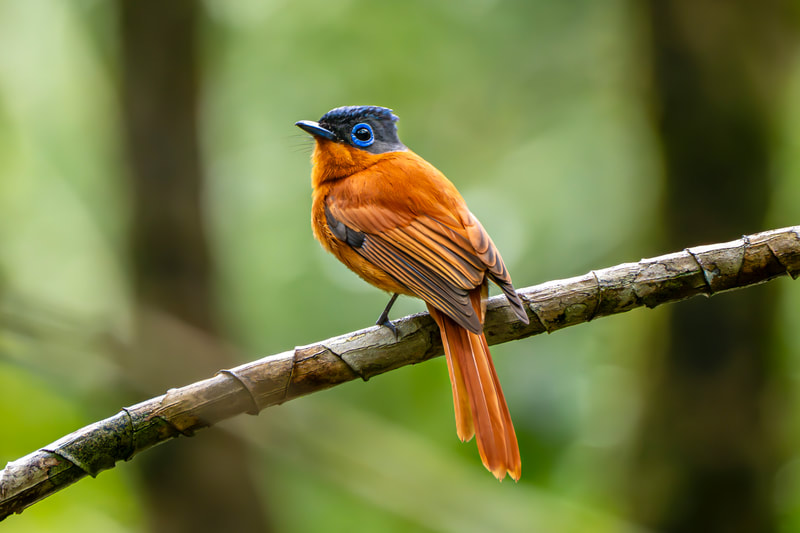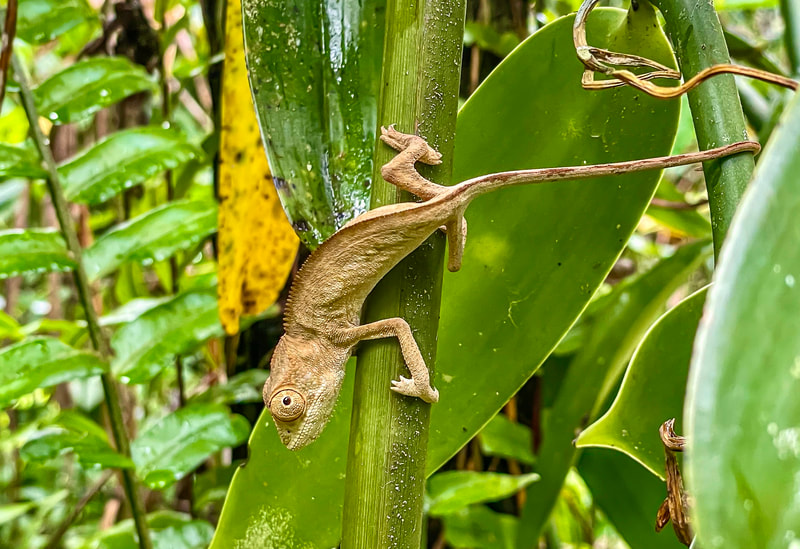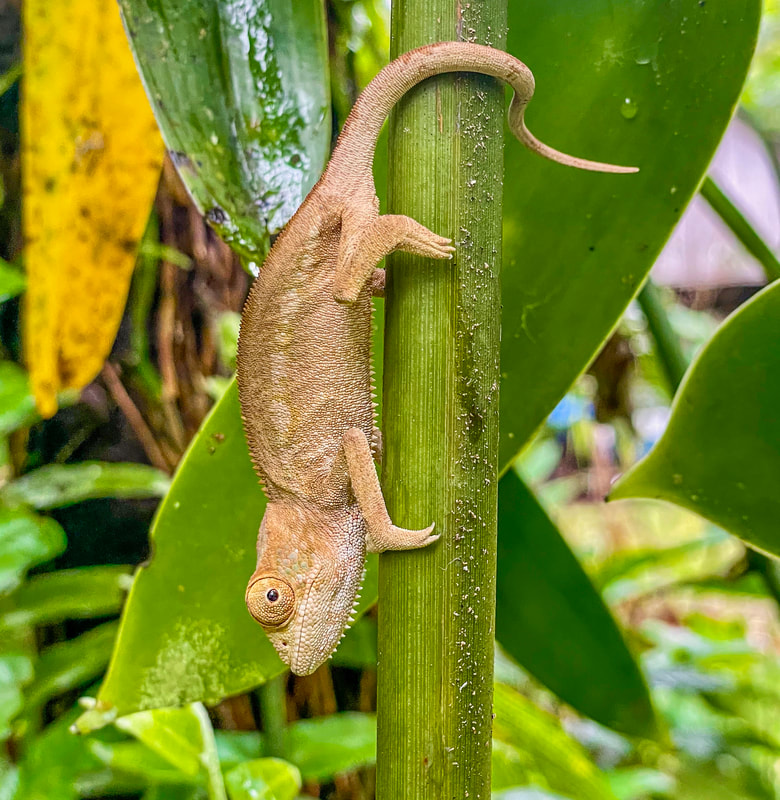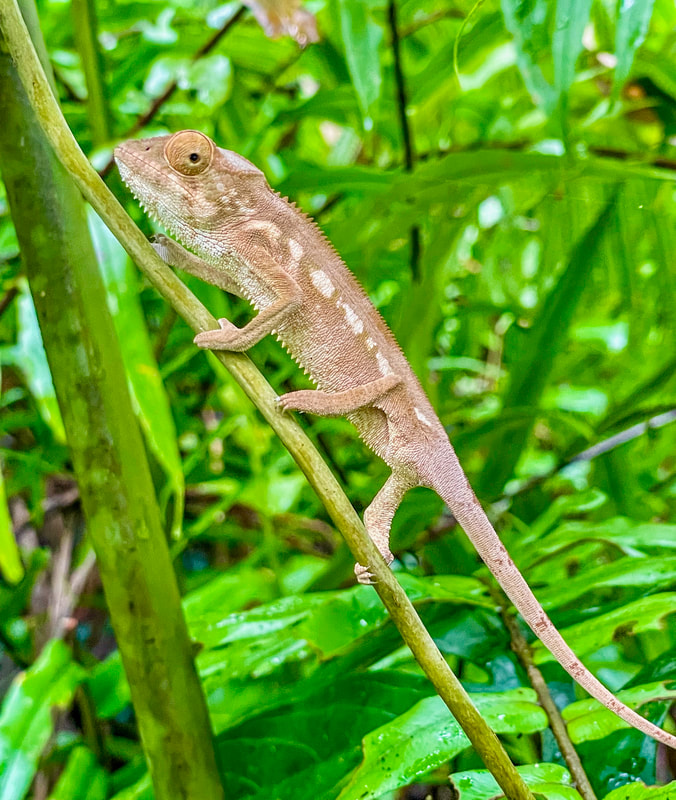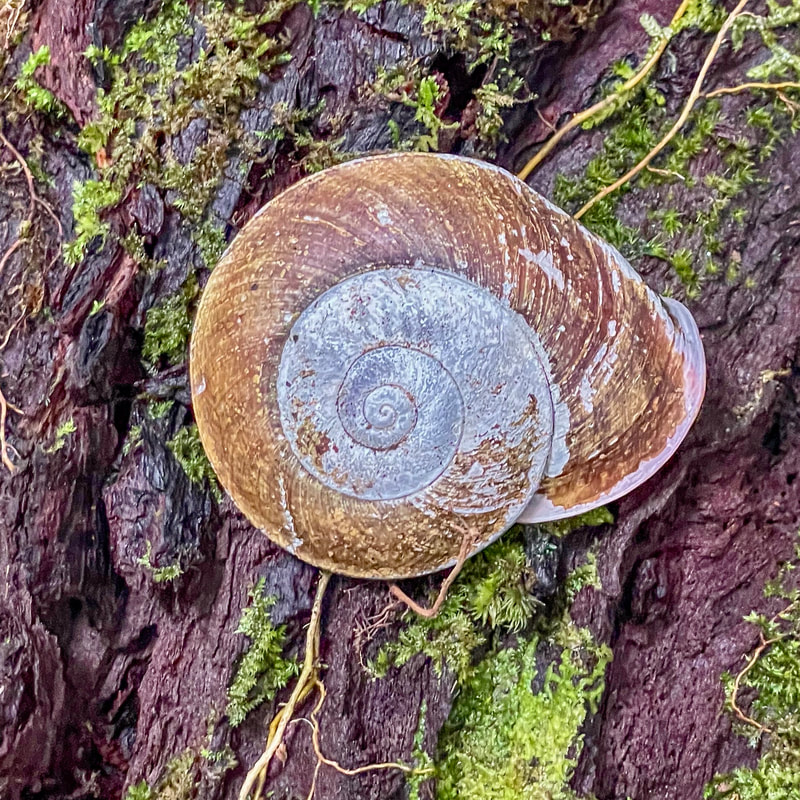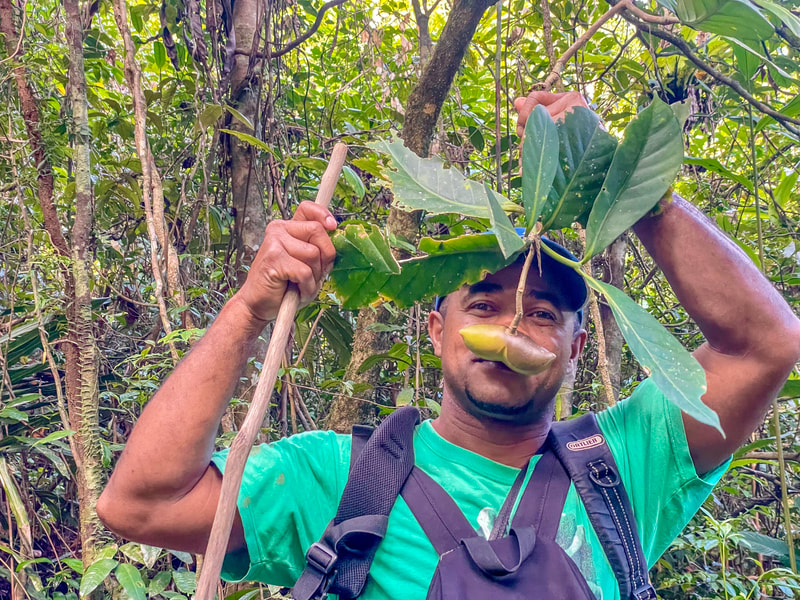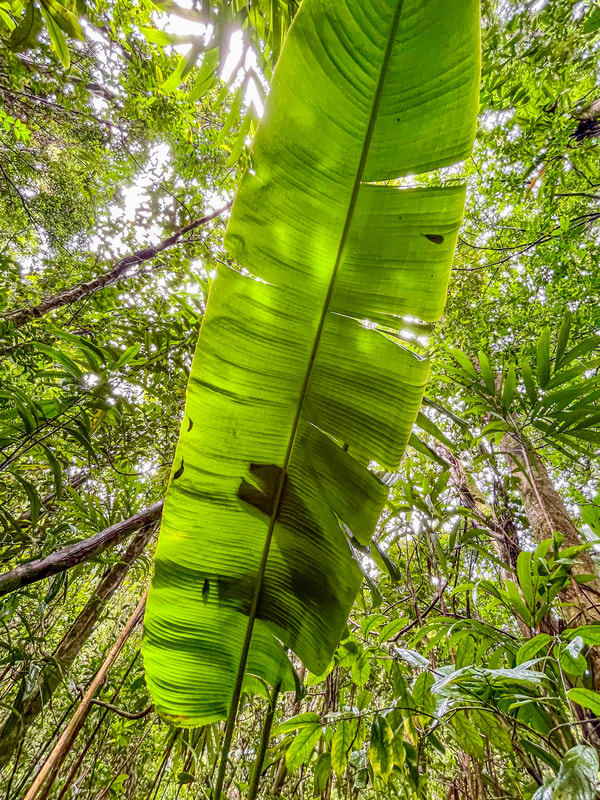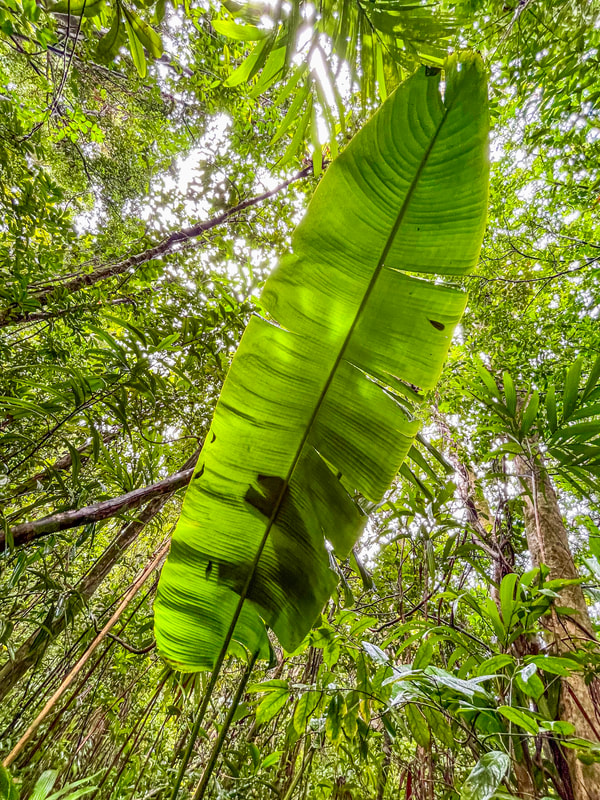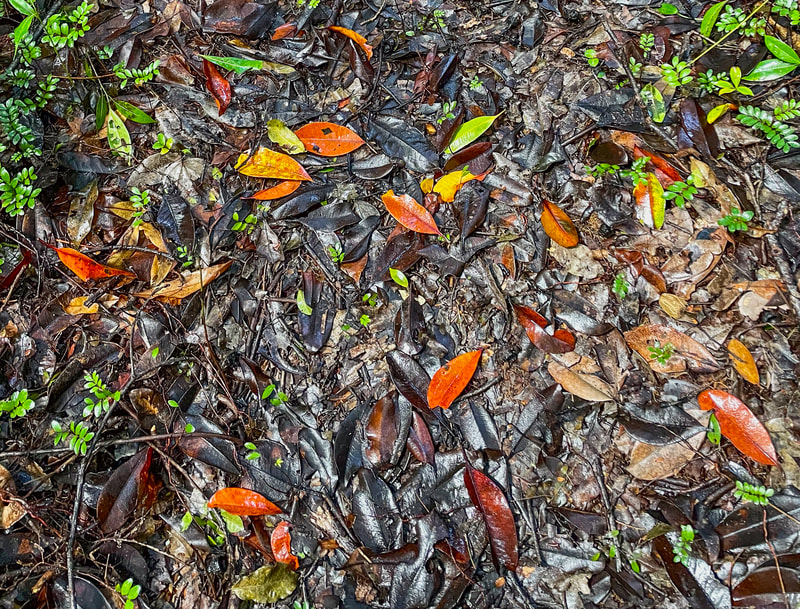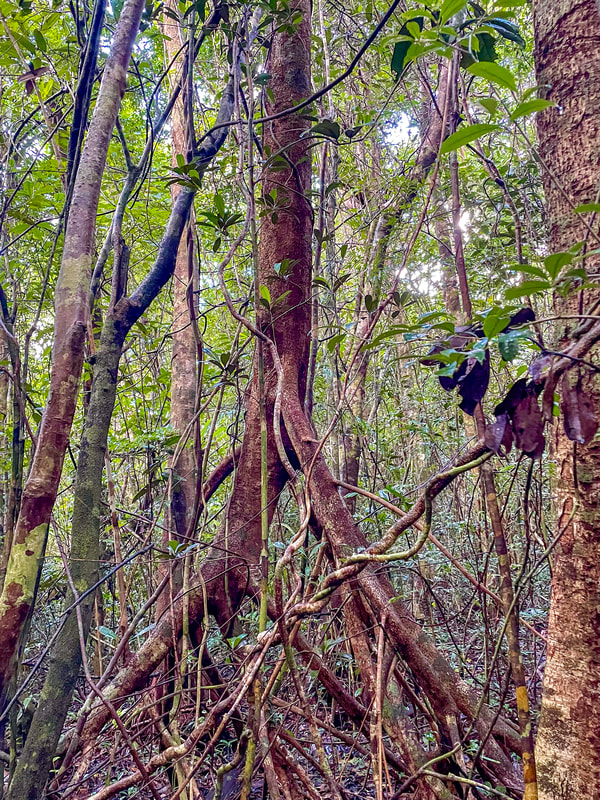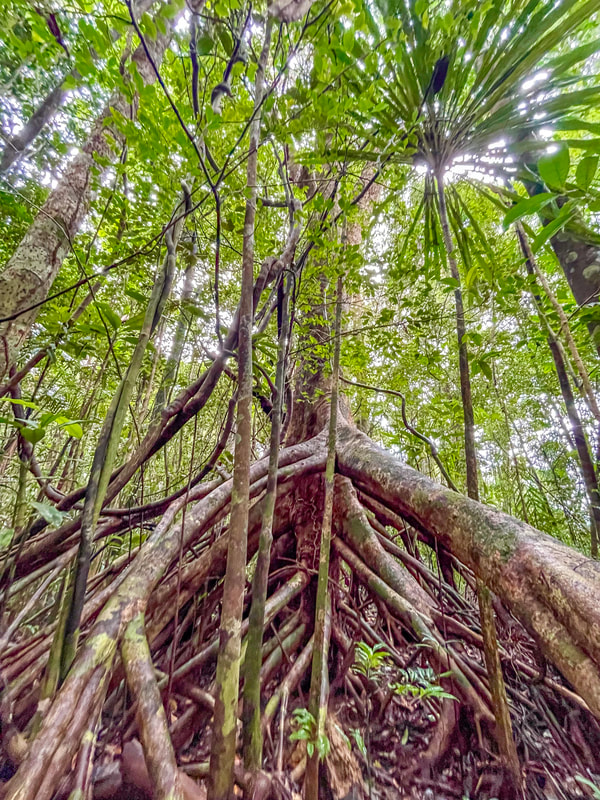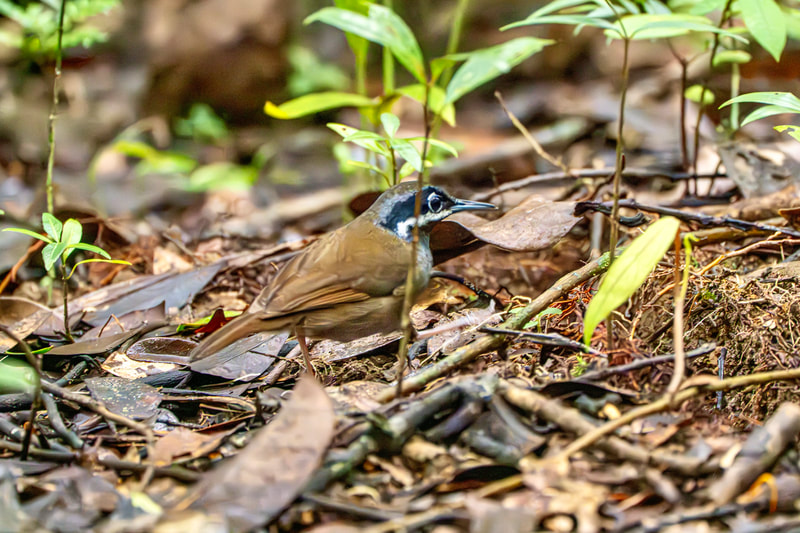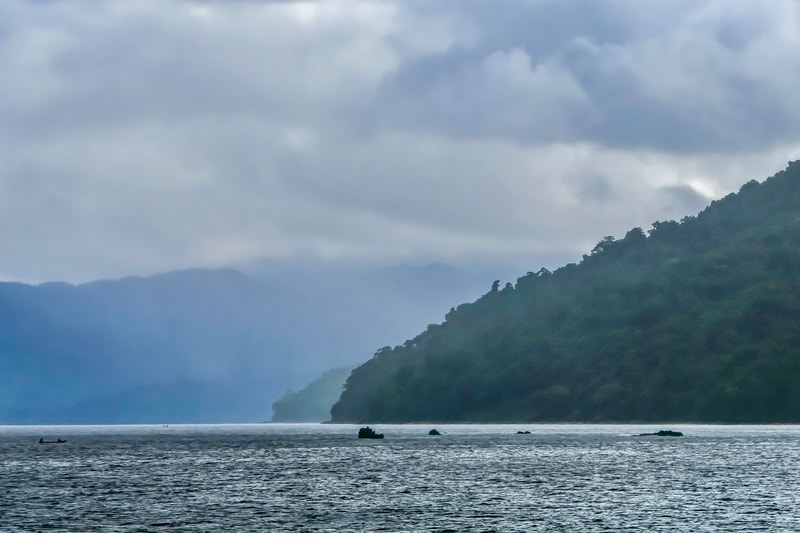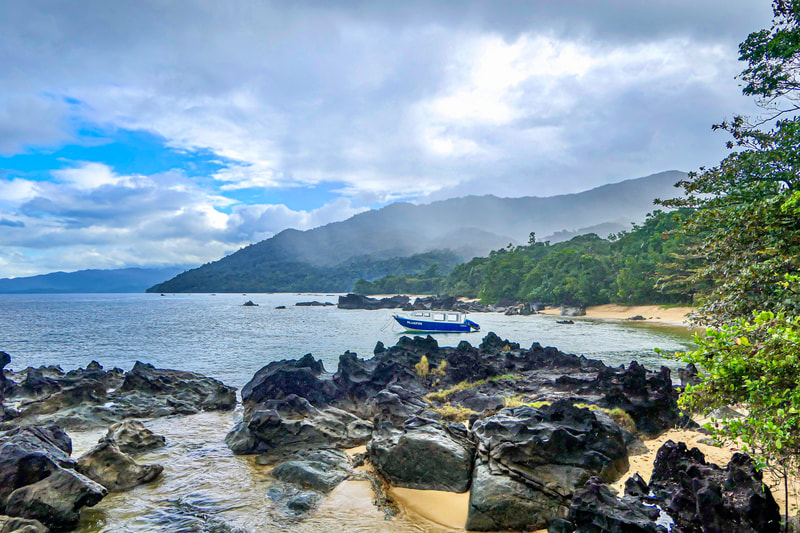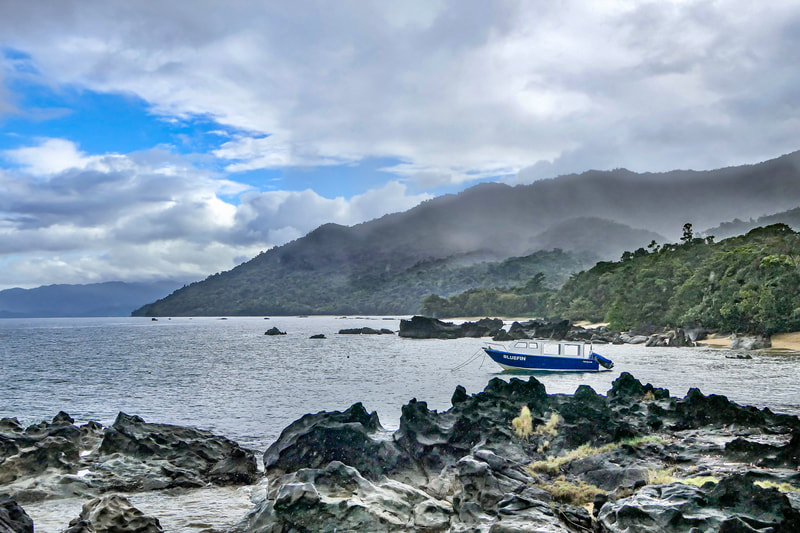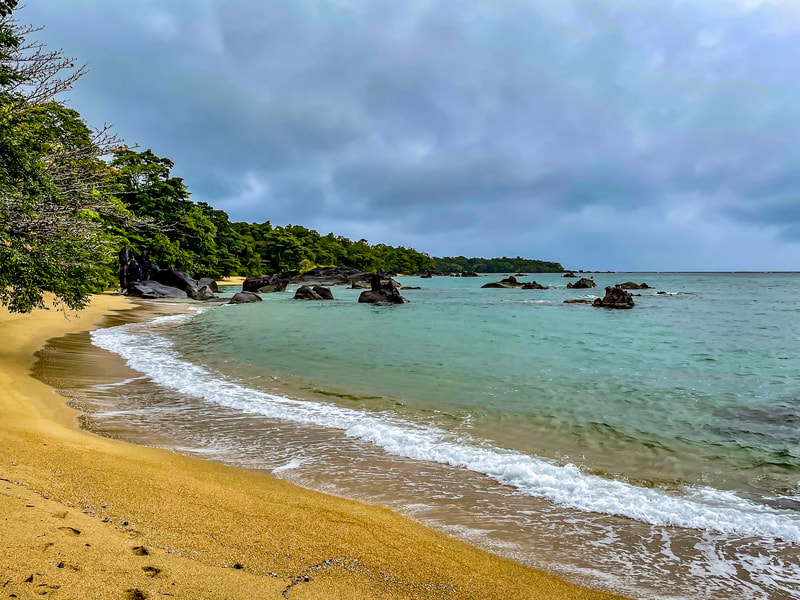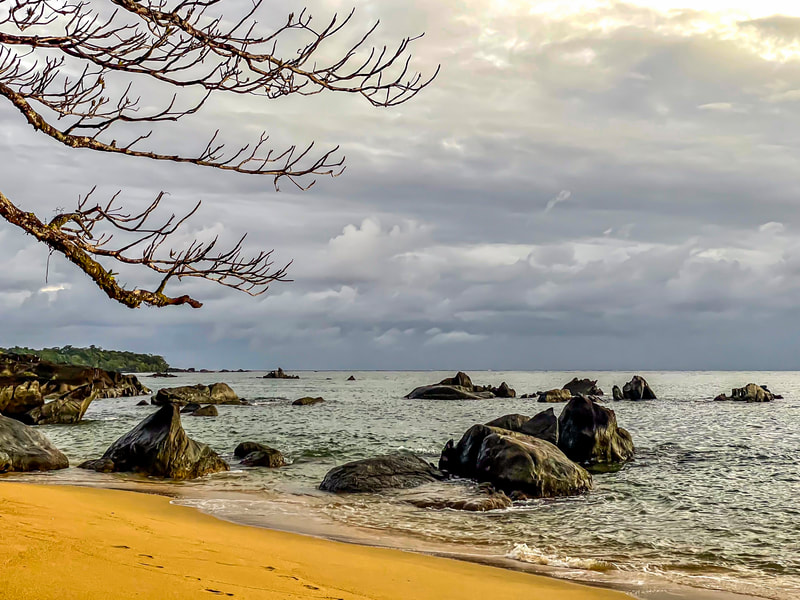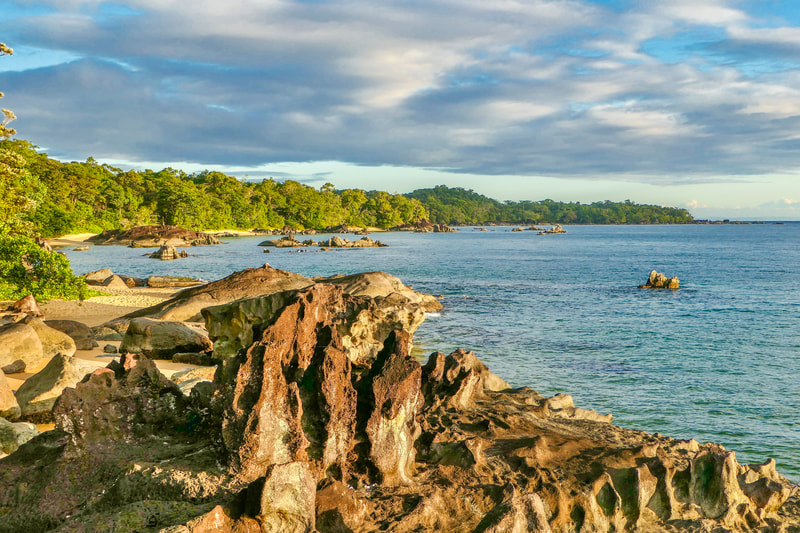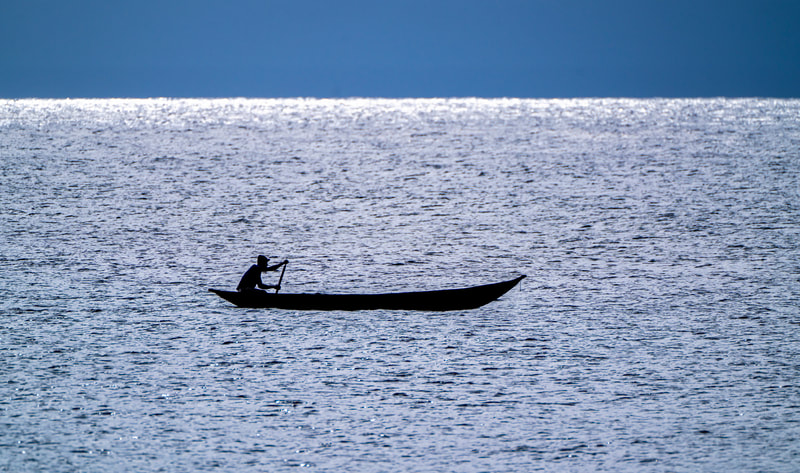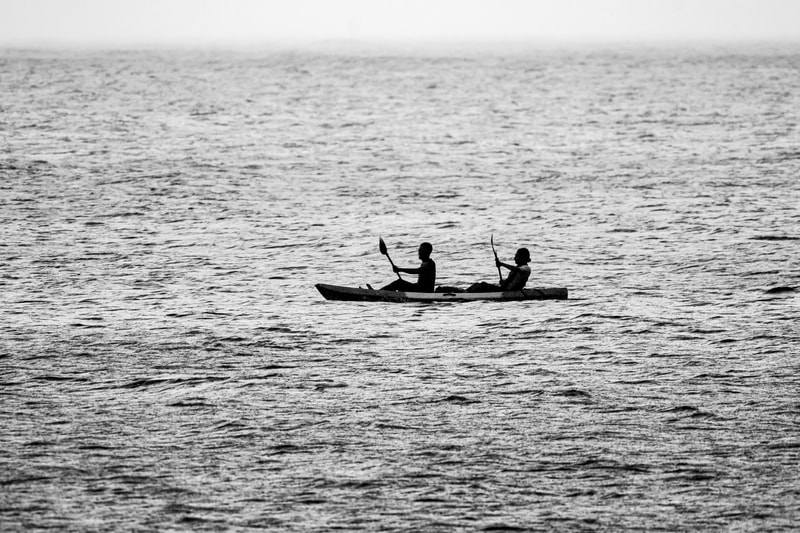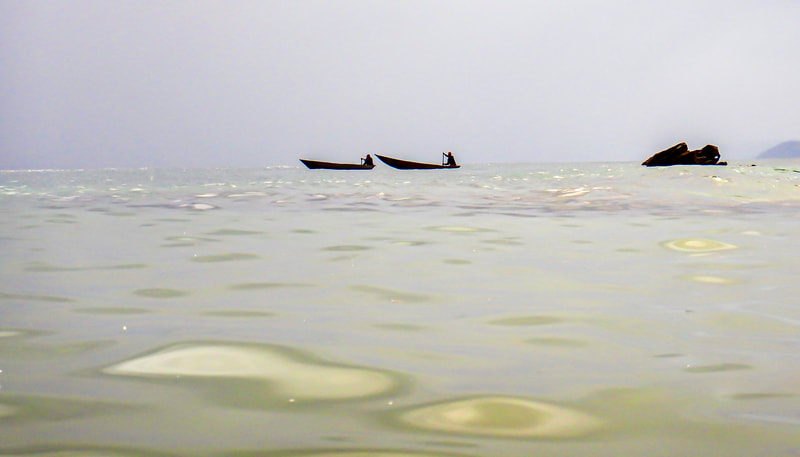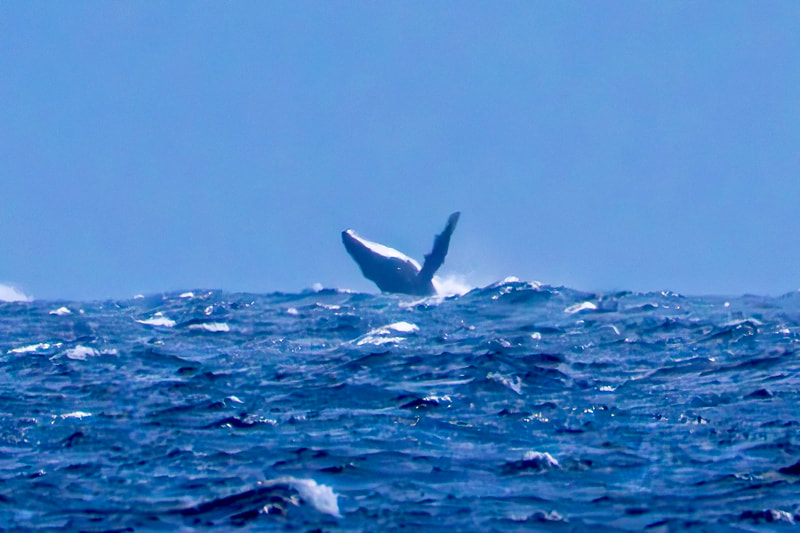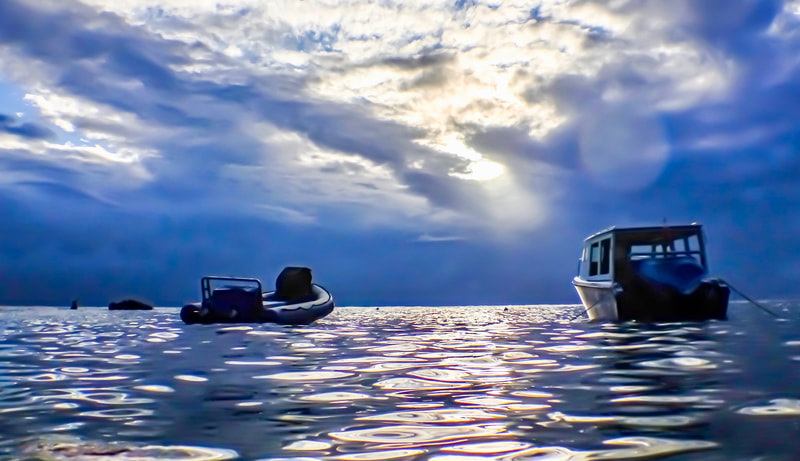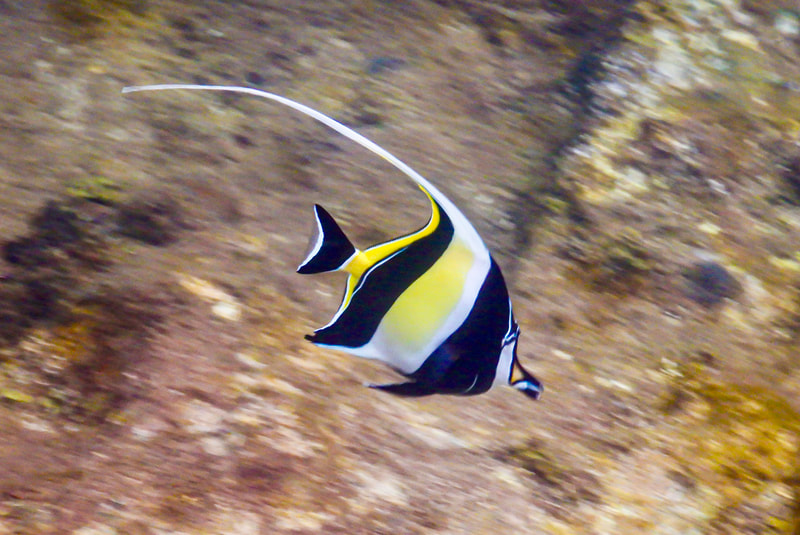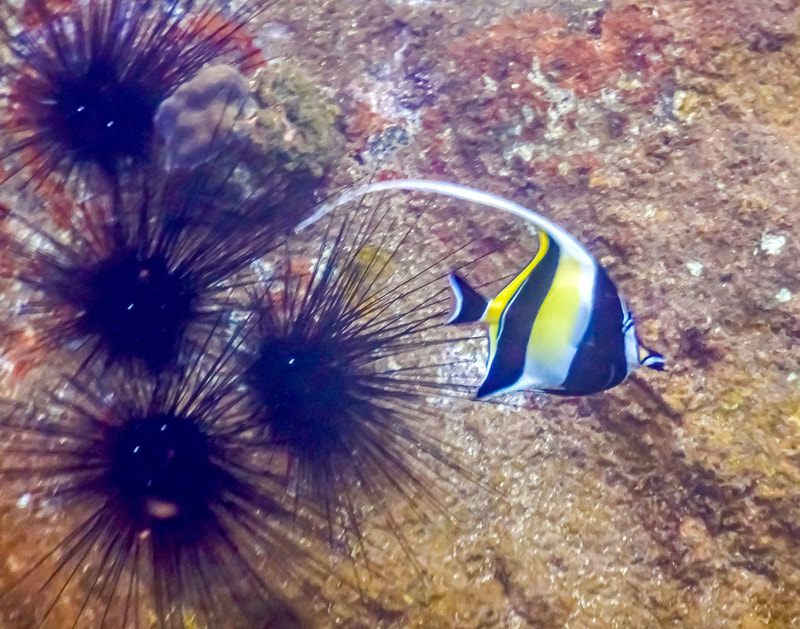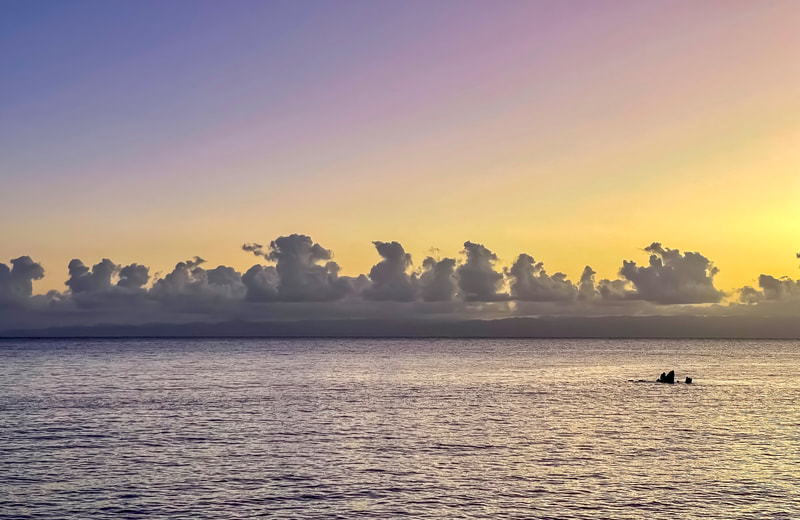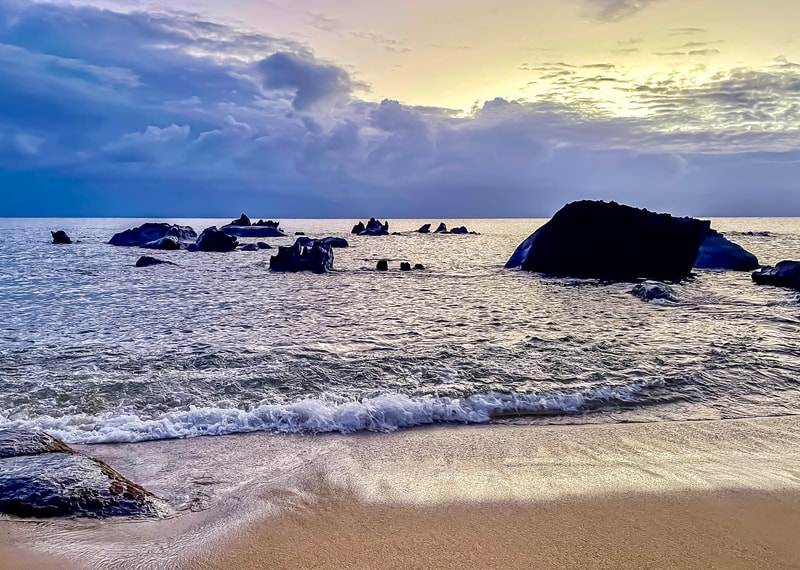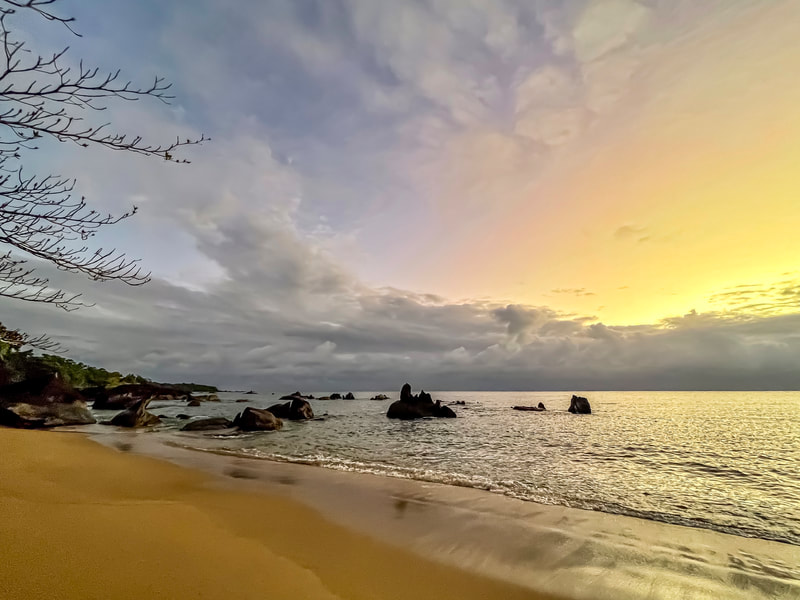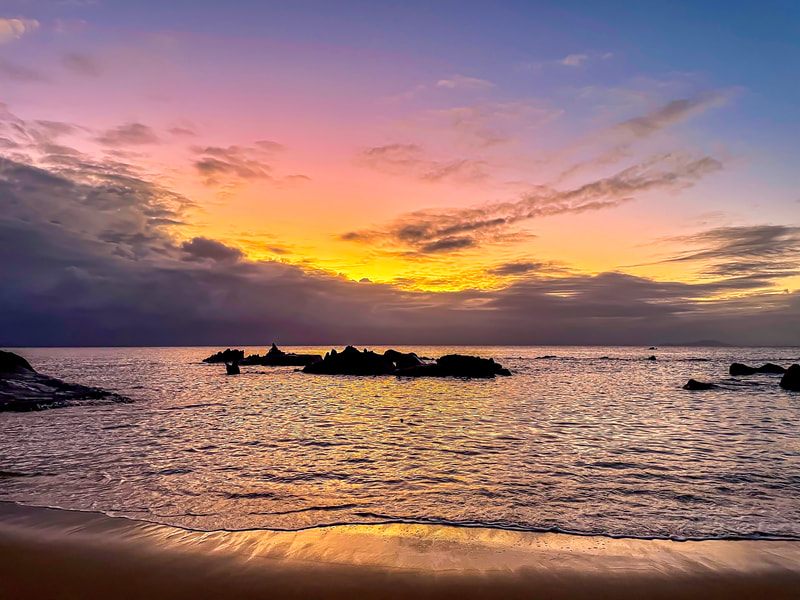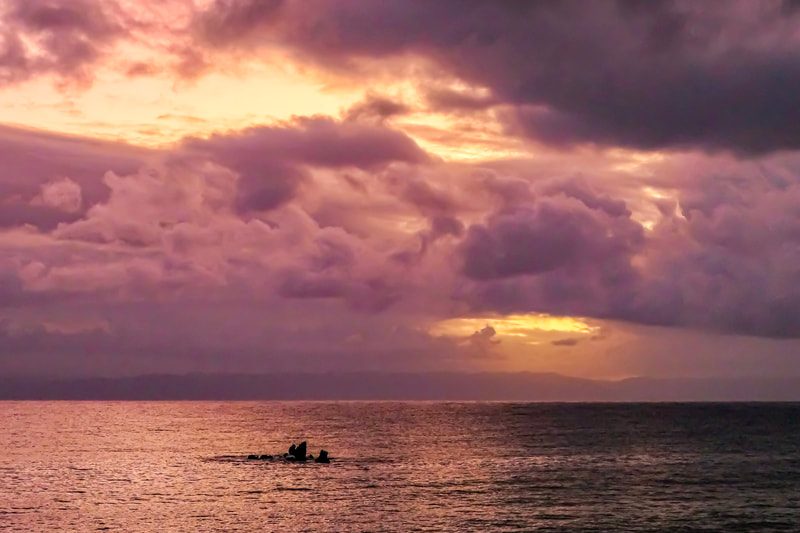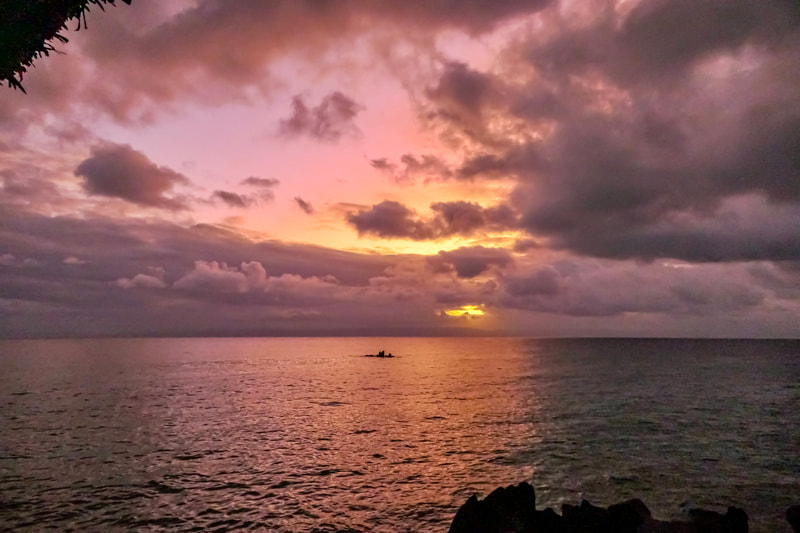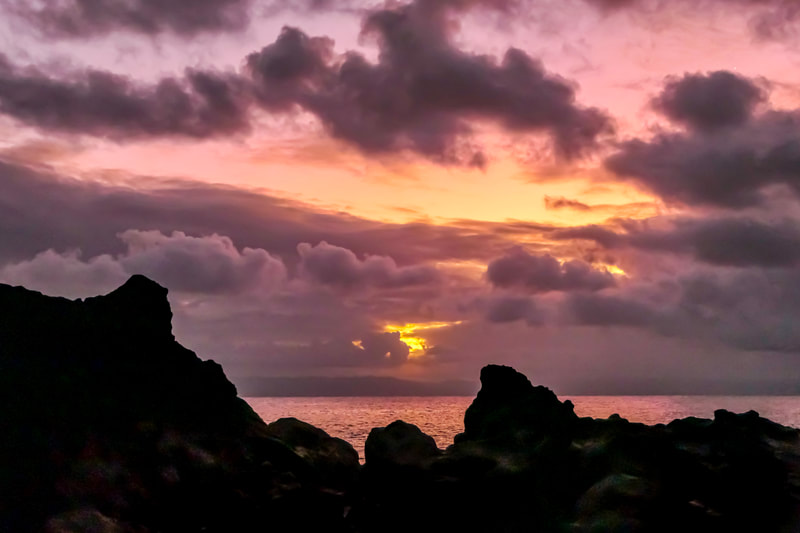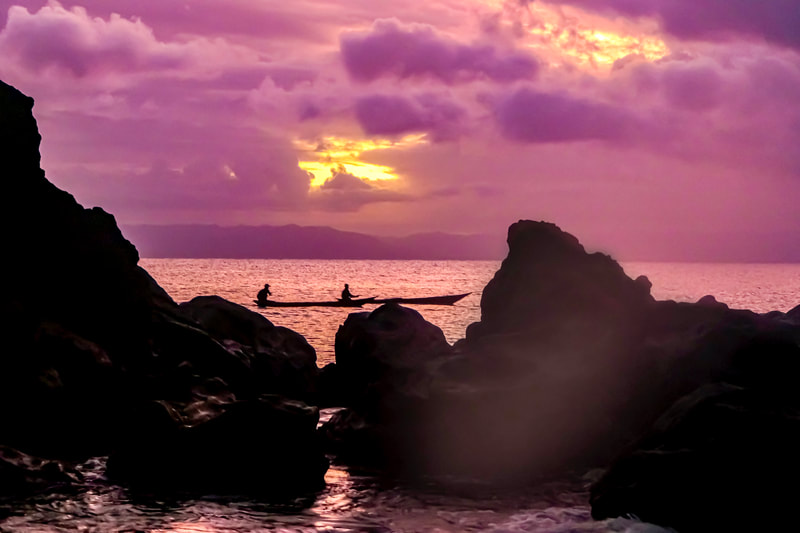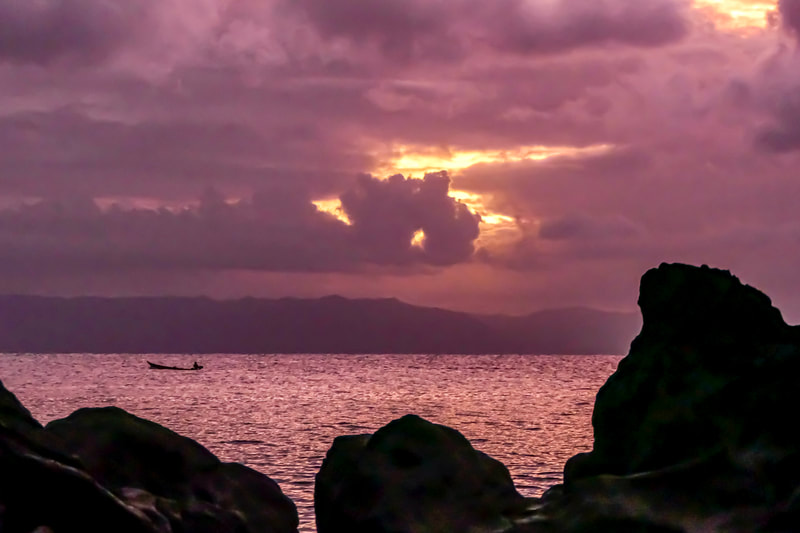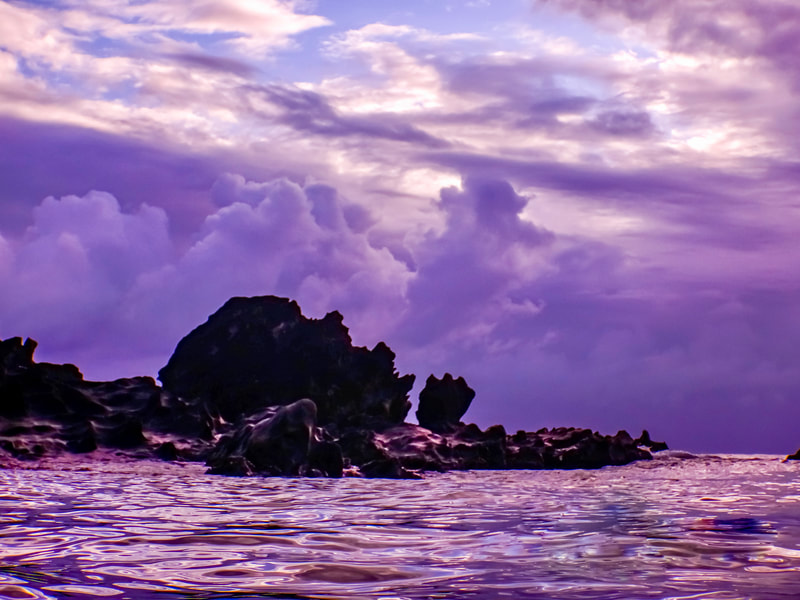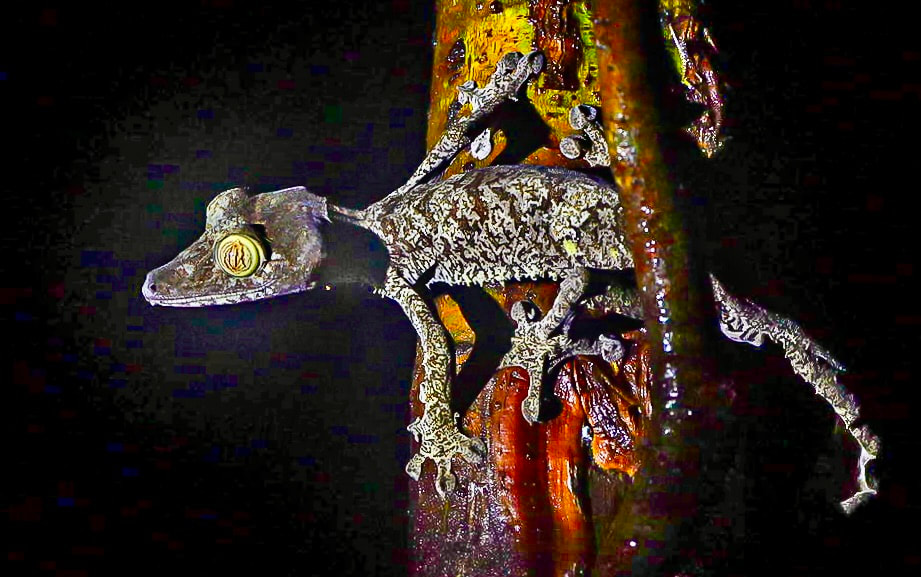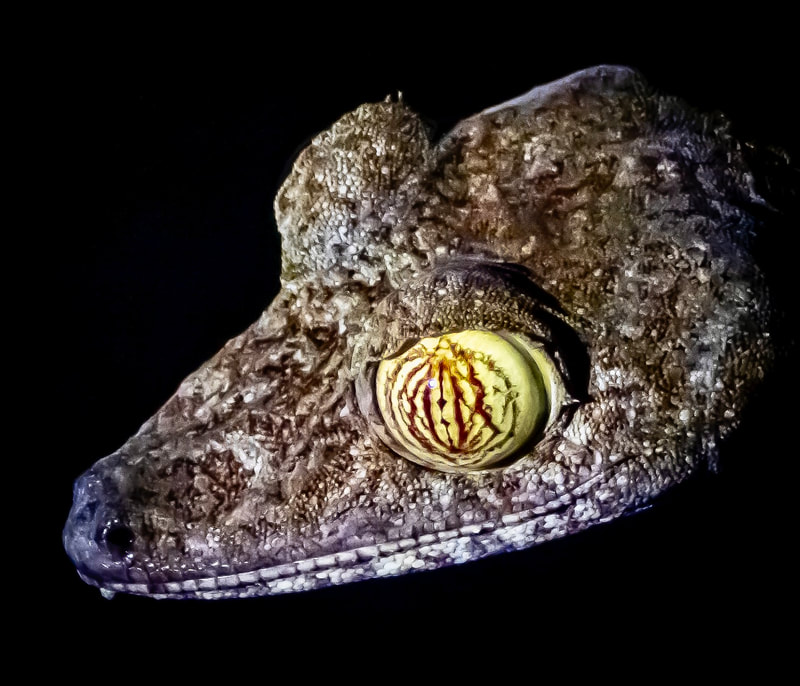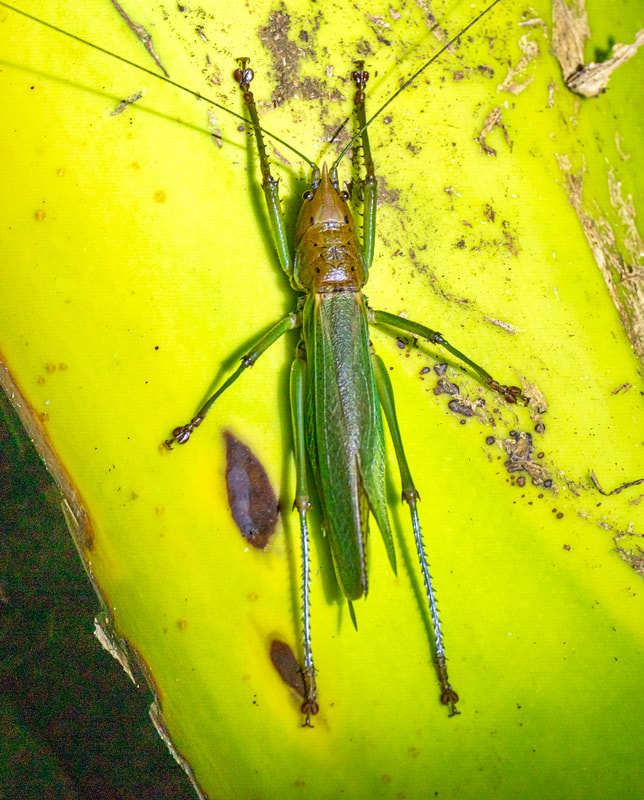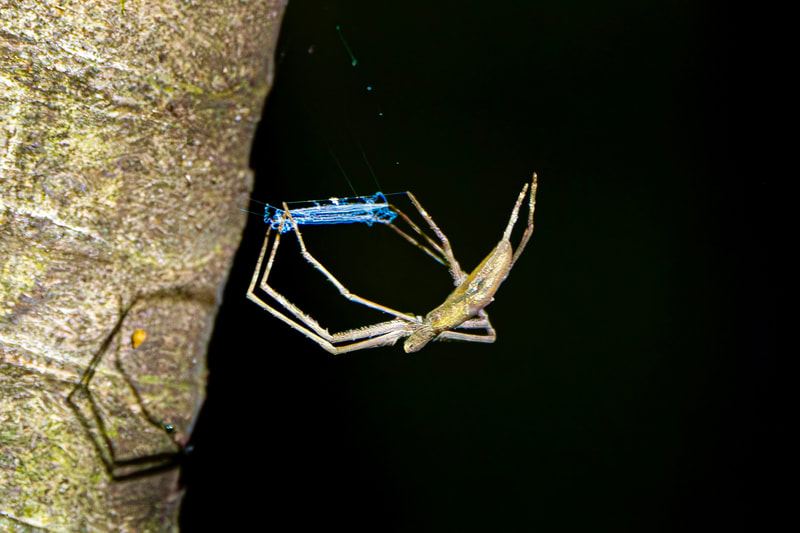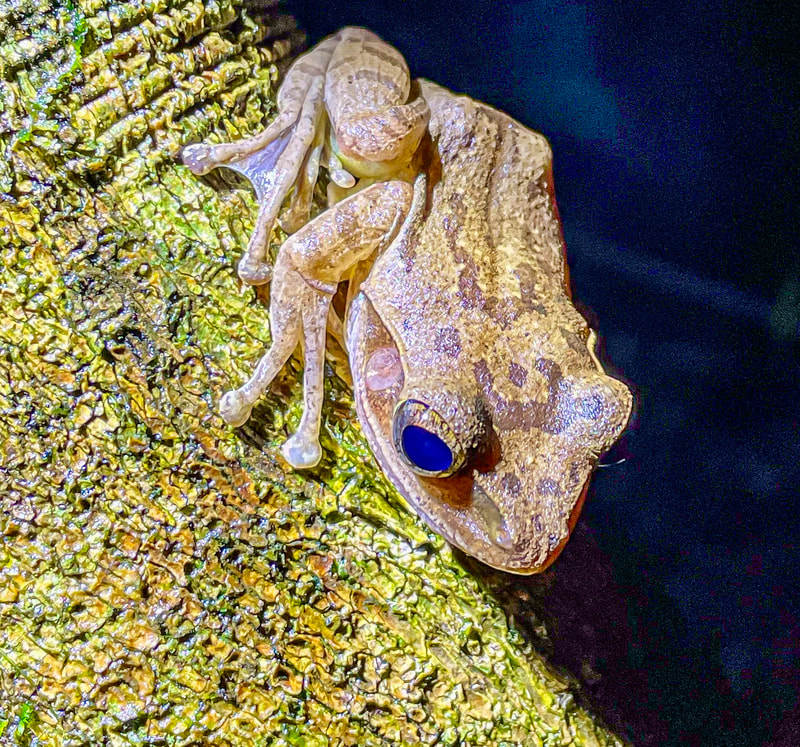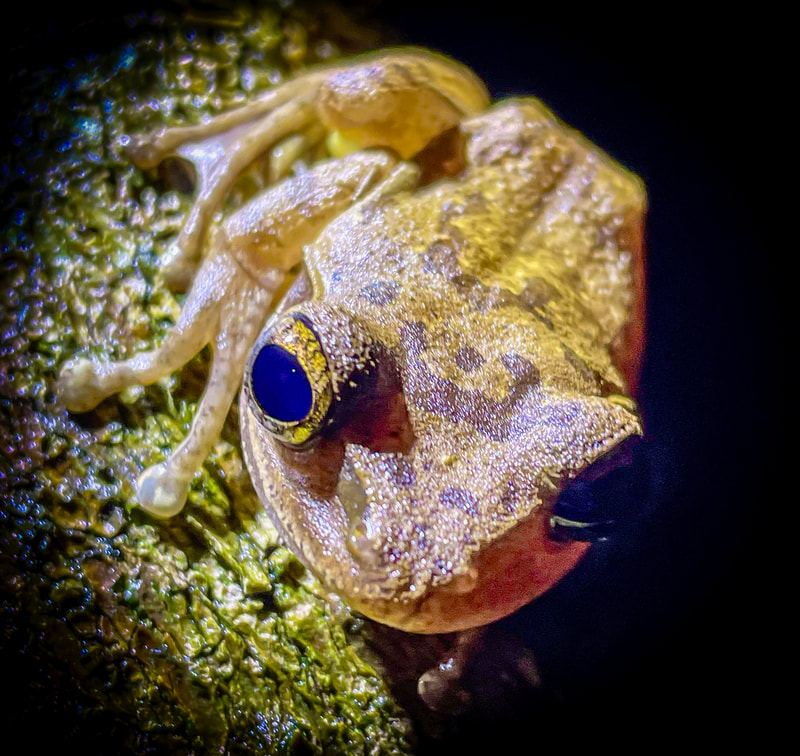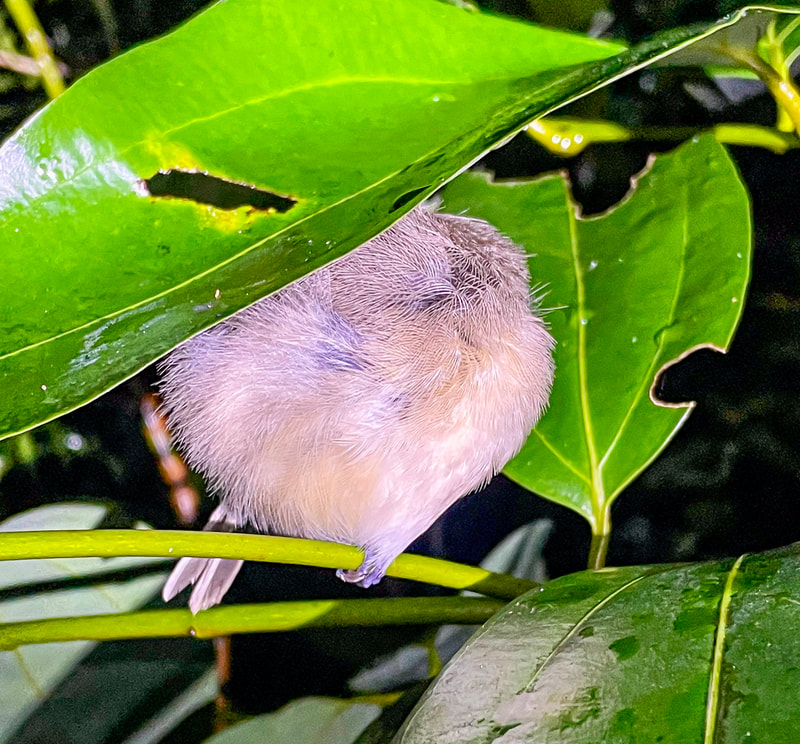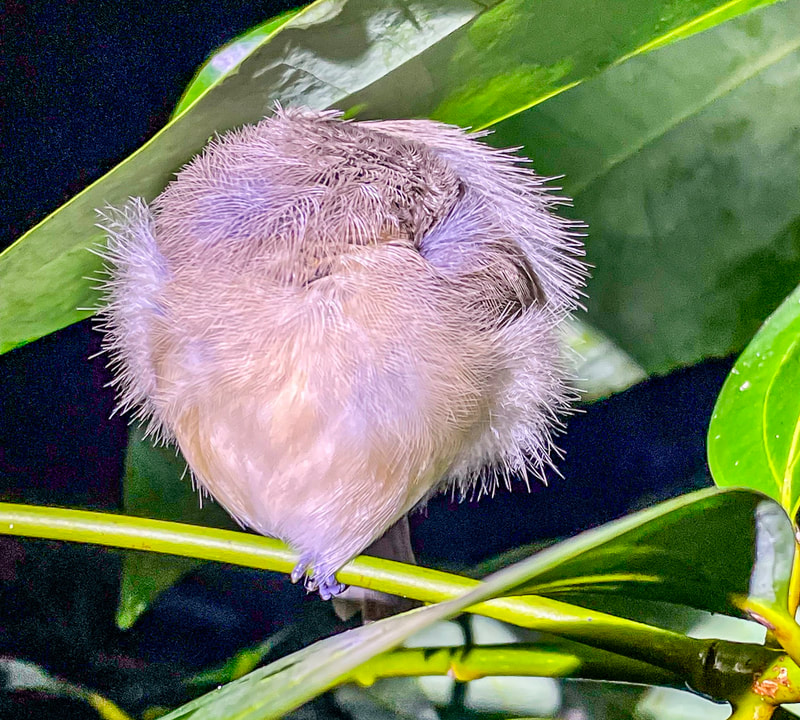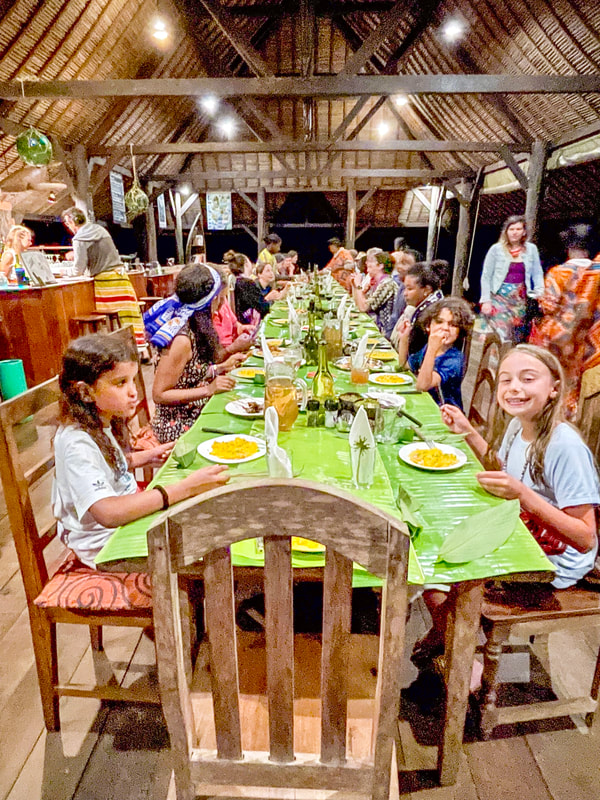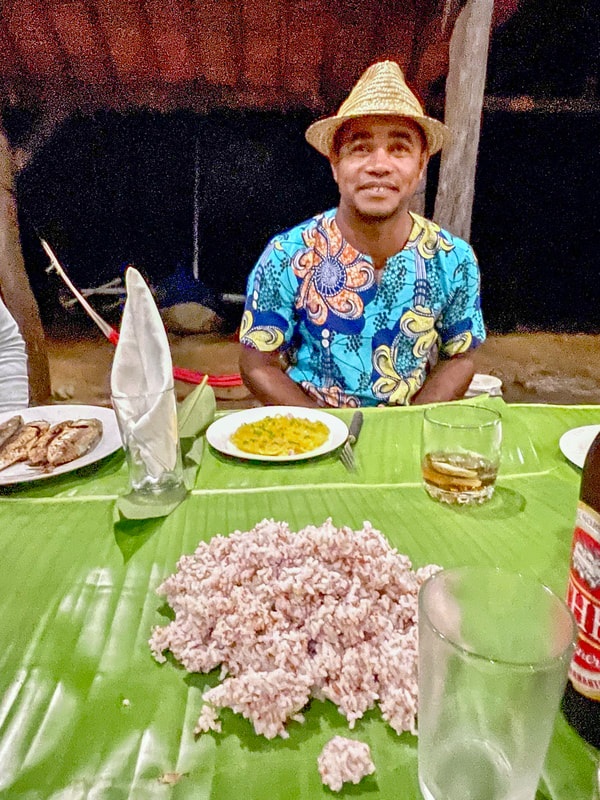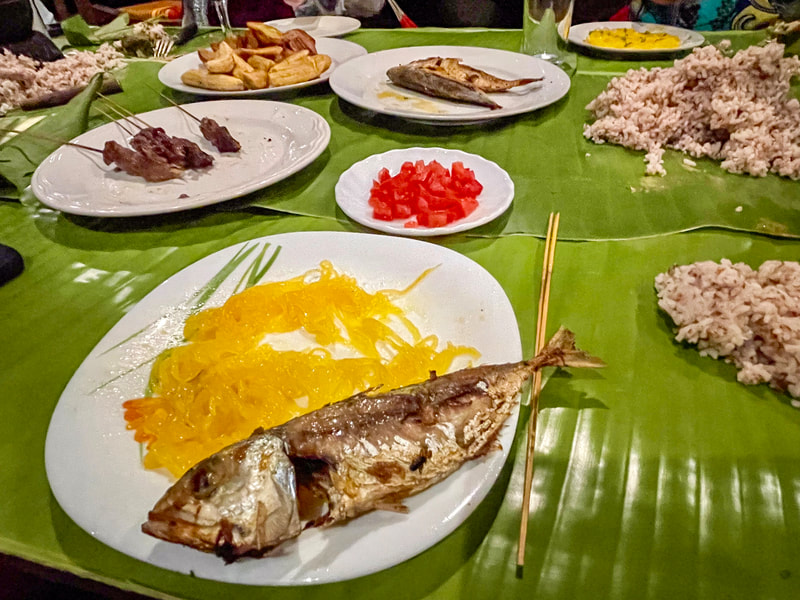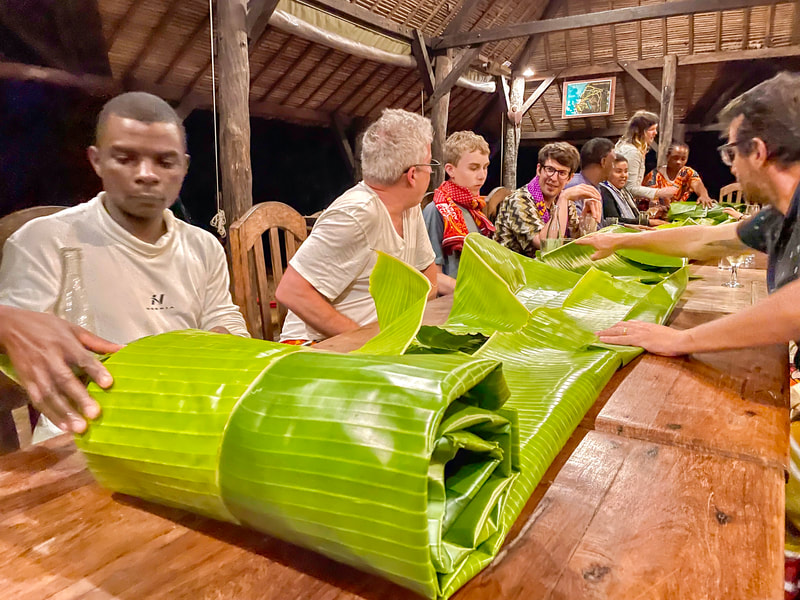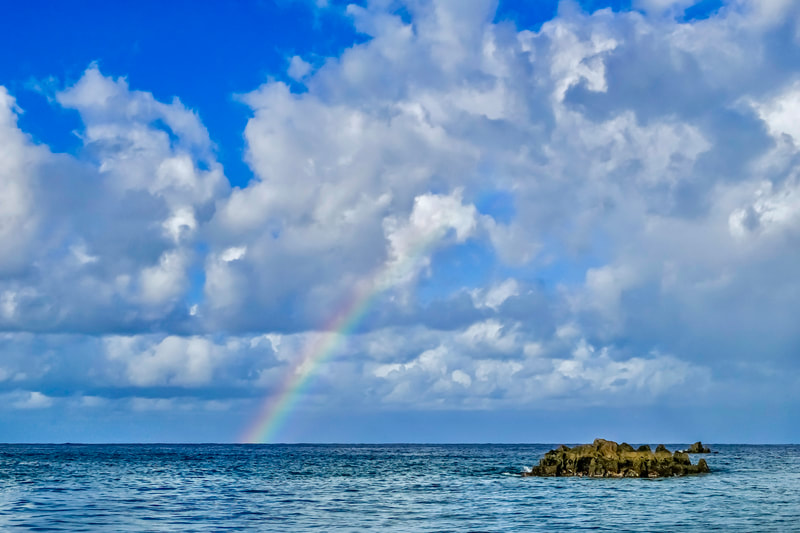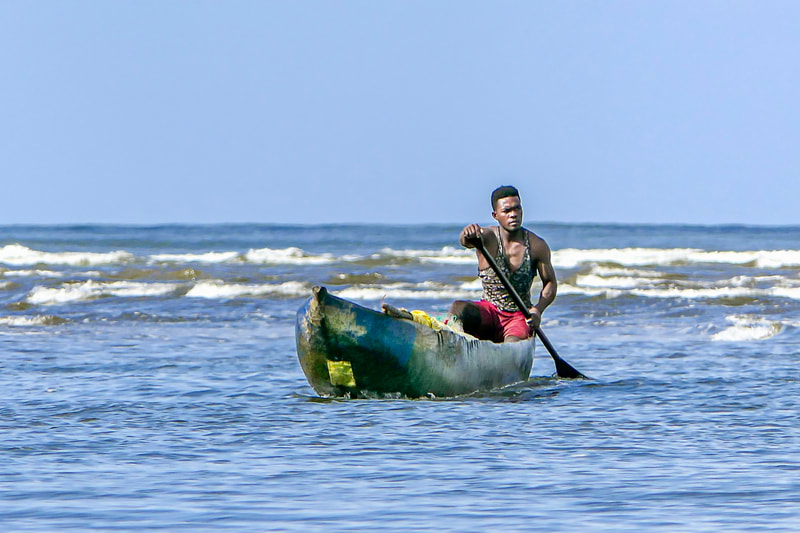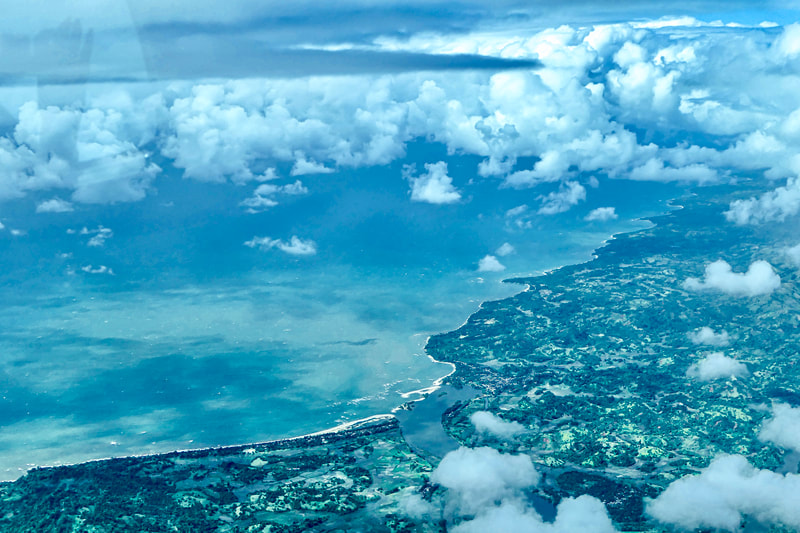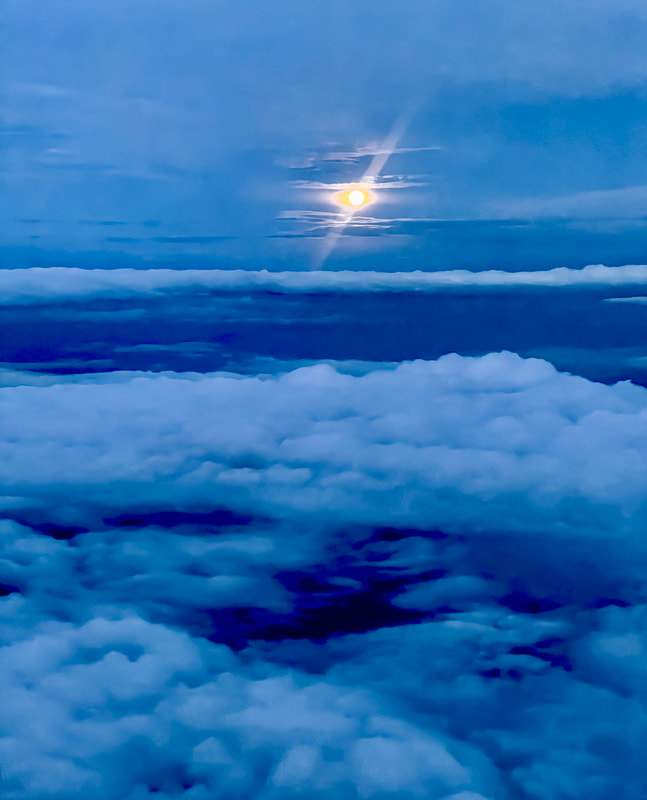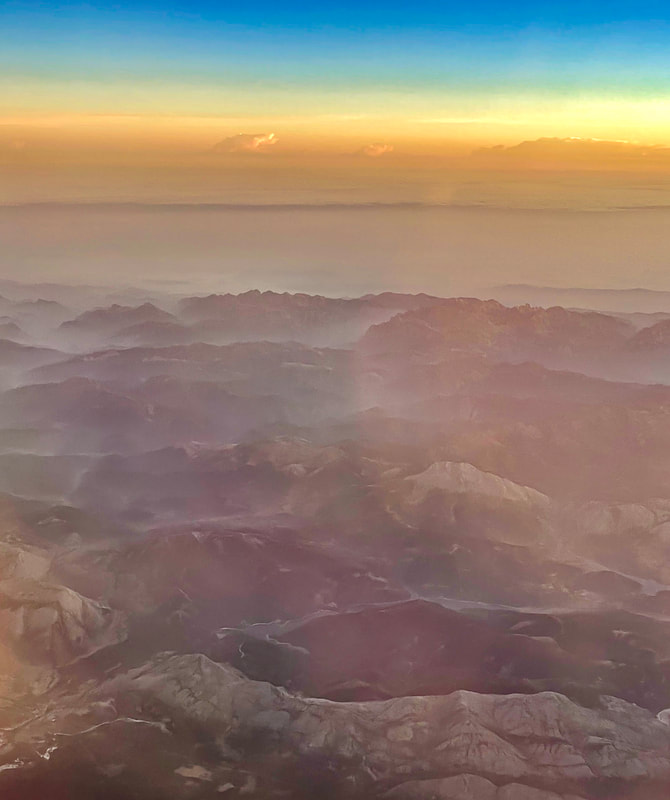This is a very long narrative below, basically my "journal"/summary of the trip. Scroll down below it for all the photos. Please note, this page contains lots of photos - essentially my full set for the whole trip. You can go to some summary pages that are shorter and easier to view:
Trip Highlights
Masoala Peninsulaa
Birds and wildlife
But here is my full "trip report":
I went on a spectacular trip to Madagascar in July-August 2024. The main focus was birding, but not the standard Madagascar birding circuit! The initial aim was to see four very special birds that, realistically, can only be found in the forests and grasslands around Bemanevika, a very remote area in northwestern Madagascar. Most people don't get to see these birds because getting to Bemanevika requires an arduous two-day drive, over an absolutely horrendous road, from the pleasant jump-off point of Ampijoroa and the nearby Ankarafantsika National Park. The four initial target birds were: Madagascar Pochard, Slender-billed Flufftail, Red Owl, and Madagascar Serpent Eagle. After initial discussions, we added two more special target birds, each also requiring long drives on bad roads: Sakalava Rail and Tsingy Wood Rail. In the end, we saw 5 out of the 6 main targets (missing only the serpent eagle), as well as many other spectacular species and dozens of hard-to-see Madagascar endemics! And of course, One can't go to Madagascar and not be fascinated by wildlife, especially lemurs, and chameleons and other small creatures. I didn't even count up all the different lemur species we saw, but it was a lot! I did the main part of trip with Chris Lotz, head of Birding Ecotours, who is a fountain of knowledge on global birds in general, and with special expertise in Madagascar, having guided there often in the past. As seems to be the case on most birding trips in Madagascar, many local guides and helpers joined us along the way, most of whom were amazing, and essential to finding these tough species. Overall a fantastic trip - and a true adventure!
My adventure started with a short pre-trip to Anjozorobe, a small but healthy forest reserve not too far from the capital city of Antananarivo ("Tana"). There I got my first introduction to Malagasy birding (and Malagasy food - lots of rice! :-), but many dishes are wonderful). It was an exciting beginning, because we arrived at the "hotel" well after dark, and there was seemingly nothing there! But within a few minutes, a group of hotel staff came, grabbed my heavy bags, and off we walked through the forest. After some distance walking in the dark, maybe close to half a KM, we rounded a curve, and gleaming through the thick forest trees were the lights of an wonderful hotel. I only stayed there two nights, but it was a very enjoyable stay. In terms of birding, it was little early in the season and very quiet. On the first morning, we walked over an hour before we even heard a bird! In Madagascar, the birding is about quality and not quantity. The country only has about 280 bird species total - far less than my home area in northern Virginia - but about 120 species are only found there, the highest percentage of endemism of any major country. I did see a couple bird species in Anjozorobe that I didn't see anywhere else on the trip, as well as LOTS of chameleons, and my first lemurs, including the amazing Indri, which makes one of the greatest wailing sounds one can ever hear in nature! The weather there was fantastic, crisp late winter, but a little brisker than I expected. There were radiators in the cabin rooms, and I used mine! To hear the wail of the Indri, click on my YouTube video (unfortunately only has the call - the animals were too far away to see at the time):
https://youtube.com/shorts/XDy3dw2hK_8
After Anjozobe, the real trip started. We began with an incredibly productive first morning birding at Lake Tsarasoatra right in Tana (highlights: Meller's Duck, Black Herons, White-throated Rail, and hundreds or thousands of White-faced Whistling Ducks and Red-billed Teals). We flew that same afternoon to Mahajanga (often spelled and pronounced Majunga), a city on the western coast, which was the jumping off place for our first mega-bird quest - the Sakalava Rail. The most accessible place for this beautiful skulker is Lake Kirkony, several hours south of Majunga by rough road. We camped for two nights right by the lakeside, near a picturesque and friendly village. At dawn on our first full day there, we crept out in a pirogue-like canoe, quietly working our way through reed beds that the local guides knew were home to this special bird. It took some time and looking/listening, but eventually we saw a few individuals, including two who responded to calls and came out beautifully into view. We also saw many other waterbirds, including Madagascar Jacana, which I was especially glad to see, as I have now seen all eight Jacana species in the world! One big target down - five to go! After the birding, we enjoyed walking around the peaceful and friendly village. I have posted two videos of the Sakalava Rail here:
https://youtu.be/iVapMhvGaFU
https://youtu.be/kLWTAOFzlsY
After Lake Kirkony, we went back to Majunga and got ready for the long trip to the remote northwest, stopping along the way to see some critically endangered lemurs. and spending one night at a pleasant but rustic "beach resort" on the south side of the Betsiboka River. Back in Majunga, we had a free afternoon before the big trip. We enjoyed the rest, and the serenely beautiful vista over the Betsiboka river mouth, as dhows with brightly colored sails decorated the waters. The next day, before the big drive, we took a boat ride to the Betsiboka Delta, where we saw Madagascar Sacred Ibis and Bernier's Teal, two species that are difficult to see in most other places. We then drove several hours on a mostly paved road to Ampijoroa, and spent two days exploring Ankarafantsika National Park. We saw too many great species to mention here, but among my favorites, and most important, were the endangered Humblot's Heron and the critically endangered Madagascar Fish Eagle on a nearby lake, while White-breasted Mesite, and Van Dam's, Sickle-billed Vangas, Schlegel's Asity, and Frances's Sparrowhawks were among many highlights of the dry forest. Ankarafantsika is a wonderful place, not to difficult birding, and a good way to rest up for the big adventure ahead. I posted a video of the Mesites singing if you are interested - quite a show. I loved those birds!
https://youtu.be/OziE7PwzRLY
All was going great unitl.... I got sick in Ampijoroa. Apparently, many visitors to Madagascar get "hotely belly", and I got a doozy. Not a good time as we were about to embark on the toughest 2 days of driving I have ever experienced. The road was "paved" in some places on the first day, but with giant potholes, and most of it was ground up and washed out dirt and rocks. The second day in particular was grueling - a constant jostle which had me feeling like I'd been in an all-day rugby match!, getting thrown against all sides of the vehicle as we hit the bigger holes and ruts. Despite the horrendous road and my being sick, the drive was fascinating, and I actually got some pretty nice photos. Much of the central plateau is sadly bare from deforestation, but the people and towns/villages along the way were quite interesting. There has been major migration from South and Southeast Asia over the centuries, and in some of the inland cities, one almost feels like one is in Bangladesh or India (South Asian look to the people, and lots of bicycle rickshaws!).
The last leg of the journey to Bemanevika was almost surreal. We lost time along the way due to some vehicle problems, so we had to drive the last few dozen kilometers after dark. One vehicle had issues with the steering wheel and one of the wheels, and a driver who was not very experienced. That car went at a crawling pace, and people in our lead car kept jumping out and running back to help many times along the way. Because of the holes and ruts and rocks and logs in the road, one or more helpers ran alongside or ahead of the vehicles much of the way to enable passage, removing rocks and logs and guiding the best route through the obstacles. When we came to stream crossings or steep hills, we all had to get out also and walk so that the jeeps could make it. At one point one of the helpers in the second vehicle came running alongside our van screaming, and he clearly had blood running down his face. Apparently someone had thrown a large rock at the car and hit him in the face. Given that and the vehicle issues, we pulled into a compound to regroup and plan, in a tiny village that we came across a little further along. In that compound, it was very dark, and truth be told, I was a quite concerned. We were not too far from the incident, and who knows whether this might be an area with resentment to tourists. We had only one sound vehicle, it was probably after 9:00 PM, and we had still a LONG way to go, at a snail's pace. While Chris and the main local guide were trying to sort out the troubles and make a plan, many thoughts spun through my head. "What if we needed to spend the night in the vehicle, or in this compound? What if the people here really are unfriendly?" Since so few people go to this area, much wasn't known. Yet, as I stood in the dark thinking of scenarios, I had to notice some beauty also. A beautiful melody drifted out from a yard next to the house, or from inside the house. It was children singing, maybe a religious song, which gave a sense of peace through the darkness. Then I heard a different sound (grunting) right next to me, and almost stepped on two pigs rooting around my feet. I hadn't noticed them in the dark, though they were less than a foot away! Just then a man walked in off the road, and I could see from the dim compound lights that he was wearing a snappy suit, incongruous so far out in the middle of nowhere. He spoke little English but was very friendly, and I believe he was the owner of the house. I started to feel better about the situation, though problems remained, including whether and how to reach our destination that night with only one vehicle, exacerbated by the late hour and my increasingly upset belly :-). To make a long story slightly less long, we got agreement from the house owner to leave the vehicle in the compound, we all piled into one vehicle, and crept and bounced along through the darkness. Since most of the time we only went as fast as someone could run, or walk!, one or two helpers ran alongside and cleared rocks and debris much of the way. We arrived in camp around midnight for a three night stay, and the camp workers were all up and about and started cooking us up some late dinner. I was surprised how COLD it was - probably in the 40s F. We had to wait a long time for dinner, but it was PERFECT! Hot hot hot noodle soup. Absolutely best thing for the time, temperature, and for my belly!!
And by the way, to my knowledge, no one could explain the rock throwing incident. The area is reportedly very safe and friendly, and everyone we met along the way who we actually saw was friendly and helpful. People we talked with said that violent incidents like that simply don;t happen there. Must have been some mistake due to some random and rare situation, or someone a little off-kilter mentally. Here is a video of the drive on the way out in daylight, showing a bit of what the road was like:
https://youtu.be/8h_AlA1uXDM
So, getting to Bemanevika was quite an adventure!! But more adventures awaited us in the coming two full days, highlighted by the birding, which was fantastic. Such a thrill to be in a place visited by so few people, and to see so many mega species. A little bleary-eyed on the first morning from the late and cold night, we made our way to the first stop, a crater lake where we hoped to see Madagascar Pochard, considered to be the world's rarest duck!, and thought to be extinct in the wild until recently. After a short hike through some beautiful forest, we came to the lake. Loukman Kalavah, the camp leader and well-known bird researcher of the area, brought us out in a small, kayak-like vessel. Whatever tiredness I felt when I awoke transformed to exhilaration as we saw dozens of pochards all around the lake, in fact, we probably saw more than half the entire wild population of this rare species. In appearance, they're not all that spectacular, like say a Wood Duck or Mandarin Duck, but their dark, almost black appearance that's lit up with a bright white eye, gives them an interesting and slightly mysterious look. After we rounded most of the lake, the boat docked in the reeds, and we got out to walk through the forest. Here, we were in search of the shy and very rare Red Owl. It had been located in previous days at a day roost, and if it was there, we'd see it. If it had decided to roost somewhere else, our chances of finding it would be almost nil. Luckily, it was there, but even knowing it was there and having guides point out its general location, it took me over a minute to actually see it - up among some thick palm fronds, partly hidden and well camouflaged, it was a real thrill to see this very special bird.
The afternoon of the first day had us looking for another rare endemic skulker - the Slender-billed Flufftail. Flufftails, with one or two possible exceptions, are exceedingly difficult to see well, as they are tiny, brown, and skulk around in thick grass or scrubby low growth. The Slender-billed Flufftail is one of the hardest, being only reliably found in this remote part of Madagascar. The way most flufftails are viewed is by tramping through fields or marshes and hoping to flush them, or flattening some portion of a marsh/grassy field where they are calling and try to get them to scamper across the trampled vegetation. We tried both methods, spending the better part of an hour looking in a field at the base of another crater, with no luck, though we did flush a snipe. And then, soon after the snipe, there was great excitement as one of the guides flushed one. It rose up briefly a couple of times, allowing ok but fairly distant and short views, and disappeared each time back into the thick grass. That happened a couple more times, and though I didn't get a great look, it was still very exciting to see the mega-difficult and rare species! It was getting dark, so I was fairly content with the experience as it was, but the guides kept at it... why?? Well, all of a sudden one of them leaped into the grass, stayed down for a second or two, and came up with the flufftail in his hands!! He rushed over to show us, and we all took photos, and I even held a slender-billed flufftail in my hand!!!!! What a thrill and what a way to end our first day. We released the bird unharmed, and although it would not be healthy to subject the bird to this very often, there are so few visitors to Bamanevika that it hopefully did no harm. I won't say too much about the second full day, because we spent the greater part of it looking for the Madagascar Serpent Eagle, and alas, our search came up empty. We did see some other great birds during the search, including the Madagascar Flufftail, seen dashing and skulking through thick grass, and another look at the Red Owl. We also had some great looks at different owls at night, and on our final morning we flushed some Madagascar Partridge in the fields near camp.
After two wonderful days, it was time to again endure the grueling 2-day return drive, first to the small city of Antsohihi, where the simple hotel seemed like a fancy palace :-), then to Ampijoroa, and finally to Majunga. By then, my belly was starting to feel a little bit better, and recalling the joy of the fantastic birding was slowly starting to win out over bouncing of the long hard drive. It was a wonderful experience, fantastic birding and unforgettable adventure! At that point, we had seen four out of our five mega targets, probably better than I had expected, the only miss being the serpent eagle. The Peregrine Fund, which manages the research camp there, does not allow visitor access during the nesting season, and since the eagles (which are very thinly distributed anyway even at Bemanevika) have large territories, if one doesn't know where a nest is, they are quite hard to see. The guides all heard one calling, so they were definitely there and around, but with my poor ears I did not hear the call. But 4 out of 5 mega species was great, and we saw so much else too! One mega target to go!! - the Tsingy Wood Rail, coming up...
I need to say one thing here about the local guides. When birding in Madagascar, one always has lots of guides and helpers for company. Most are good and helpful; a few are probably superfluous, but one never knows. Our main local guide for this whole portion of the trip (Lake Kitkony through Bemanevika) - Lala was his name or nickname - was fantastic. In addition to being great at finding key target birds, and dealing with problems, he was very friendly. One fun ritual of the trip was that every time we saw a great bird, mega target or other great birds like the Mesites or Cuckoo Roller, he would enthusiastically give my curly head a nice rub. It was endearing and gave an extra fun and friendly aspect to all the great bird sightings.
After the long ride back and some recuperation in Majunga and Tana, we again flew from Tana over to the west side of the island, this time to Morondava, where we hoped to see our last mega-target, the Tsingy Wood Rail. Additionally, we would go through and explore some of the most spectacular areas and scenery in all of Madagascar, driving through the "Avenue of the Baobabs" and walking around the strange and beautiful Tsingy limestone rock formations. We spent one night on the way to Tsingy in the Kirindy Forest, which is well known as the best place in the world to see the curious Fosa - a member of the Malagasy Carnivore family. We were very lucky to see this creature, which looks kind of like a small puma, but with big rounded ears and huge eyes, which give is a somewhat sinister look. It is an amazing animal. The only downside was that we saw it because it was feeding on discarded food waste and other trash, so the setting was a little sad and not quite like seeing it in the pristine wild, but an amazing treat nevertheless!. We also saw a really beautiful bird in Kirindy - the Giant Coua, which is large, almost the size of a chicken, brown but with a rich cinnamon breast, and a large patch of bare skin around the eye, colored a bright and almost iridescent blue/purple. It was one of my favorite birds of the trip.
From Kirindy, we had a several-hours drive on a rough road to the Tsingy area, but it was a piece of cake for us, compared to the drive to Bemanevika!! Our destination was the Tsingy de Bemaraha National Park, which is famous for most visitors because of the spectacular Tsingy rock formations. It is also famous - among birders - for the Tsingy Wood Rail. We had two full days to look for this, our 6th and final mega target. It proved to be a little harder than expected, as we wandered through good habitat the entire first day without luck. On the second day, we left our hotel well before dawn and drove to "Big Tsingy" where the most spectacular rock formations are. We walked for at least a couple of hours in the morning with no luck, before our main local guide (also amazing guide) heard the low alarm call very nearby. With a little patience, we watched as a pair appeared, walked very close, and (sort of) cooperated for some pretty decent photos :-).
Having succeeded with our final mega-target (we saw 5 out of 6 of the "mega's"!!), we had the rest of the day to enjoy the amazing Tsingy rocks. It is pretty indescribable - one of the strangest and most beautiful landscapes I have ever seen. "Tsingy" comes from Malagasy and means something like "where you cannot walk barefoot" - well named indeed! Tsingy are heavy eroded limestone formations, with needle-like points, pinnacles that can reach over 300 feet, and deep holes and chasms. The formations can be isolated within the dry forest of the area, or spread like a giant rock forest. It is a truly amazing sight, and often very difficult to walk through, even if one is not barefoot! A wonderful way to close out the Tsingy area.
On the way back to Morondava we spent a good deal of time at the Avenue of the Baobabs. Madagascar has six different Baobab species (out of the 8 or 9 in the world, depending on the source), and along the western coast there are areas where they dominate the landscape. We were there at sunset, and enjoyed a spectacular end to the Birding Ecotours part of the trip!
And one final note on all the driving... On most of the long drives we made on this trip, there were ferries. They are often quite fascinating, usually powered with a very old crank engine, but sometimes, when crossing narrow rivers, powered by someone pulling it across with a rope! One sees lots of nice examples of Malagasy life on the ferries and at ferry stops. Quite a few of the photos below try to show little pieces of that.
After three weeks of fantastic birding - and rough travel - I thought a few days of comfortable R&R would be fun. So I said goodbye, and great thanks!, to Chris, and went on a brief jaunt up to the Masoala Peninsula in northeastern Madagascar (organized through Natural World Safaris). I initially envisioned it being a nice beach holiday with a little bit of birding and nature thrown in, but there was soooo much interesting nature to see birds, lemurs, chameleons, coral reef, etc., that I was wonderfully busy all the time, trying to see as much as I could, even at a somewhat relaxed pace. Masoala is actually famous among birders as the best place in Madagascar to see one of the great birds of the world - the Helmet Vanga. We took a boat from the lodge to the national park for a full day hike to search for this amazing species. It took us a while, but we eventually had wonderful looks at a few of them. One of my favorite all-time birds! We also saw lots of lemurs and chameleons and other forest creatures, beautiful scenery, and even a couple of whales from shore. And I even succeeded in having a bit of a nice and relaxing "beach holiday" :-). The place I stayed at was the Masoala Forest Lodge - I think it's the only lodge offering relatively easy access to the national park - is a wonderful lodge in an amazing setting, what I'd call rustic luxury :-). Very highly recommended!! And a fantastic way to end my trip!!
Trip Highlights
Masoala Peninsulaa
Birds and wildlife
But here is my full "trip report":
I went on a spectacular trip to Madagascar in July-August 2024. The main focus was birding, but not the standard Madagascar birding circuit! The initial aim was to see four very special birds that, realistically, can only be found in the forests and grasslands around Bemanevika, a very remote area in northwestern Madagascar. Most people don't get to see these birds because getting to Bemanevika requires an arduous two-day drive, over an absolutely horrendous road, from the pleasant jump-off point of Ampijoroa and the nearby Ankarafantsika National Park. The four initial target birds were: Madagascar Pochard, Slender-billed Flufftail, Red Owl, and Madagascar Serpent Eagle. After initial discussions, we added two more special target birds, each also requiring long drives on bad roads: Sakalava Rail and Tsingy Wood Rail. In the end, we saw 5 out of the 6 main targets (missing only the serpent eagle), as well as many other spectacular species and dozens of hard-to-see Madagascar endemics! And of course, One can't go to Madagascar and not be fascinated by wildlife, especially lemurs, and chameleons and other small creatures. I didn't even count up all the different lemur species we saw, but it was a lot! I did the main part of trip with Chris Lotz, head of Birding Ecotours, who is a fountain of knowledge on global birds in general, and with special expertise in Madagascar, having guided there often in the past. As seems to be the case on most birding trips in Madagascar, many local guides and helpers joined us along the way, most of whom were amazing, and essential to finding these tough species. Overall a fantastic trip - and a true adventure!
My adventure started with a short pre-trip to Anjozorobe, a small but healthy forest reserve not too far from the capital city of Antananarivo ("Tana"). There I got my first introduction to Malagasy birding (and Malagasy food - lots of rice! :-), but many dishes are wonderful). It was an exciting beginning, because we arrived at the "hotel" well after dark, and there was seemingly nothing there! But within a few minutes, a group of hotel staff came, grabbed my heavy bags, and off we walked through the forest. After some distance walking in the dark, maybe close to half a KM, we rounded a curve, and gleaming through the thick forest trees were the lights of an wonderful hotel. I only stayed there two nights, but it was a very enjoyable stay. In terms of birding, it was little early in the season and very quiet. On the first morning, we walked over an hour before we even heard a bird! In Madagascar, the birding is about quality and not quantity. The country only has about 280 bird species total - far less than my home area in northern Virginia - but about 120 species are only found there, the highest percentage of endemism of any major country. I did see a couple bird species in Anjozorobe that I didn't see anywhere else on the trip, as well as LOTS of chameleons, and my first lemurs, including the amazing Indri, which makes one of the greatest wailing sounds one can ever hear in nature! The weather there was fantastic, crisp late winter, but a little brisker than I expected. There were radiators in the cabin rooms, and I used mine! To hear the wail of the Indri, click on my YouTube video (unfortunately only has the call - the animals were too far away to see at the time):
https://youtube.com/shorts/XDy3dw2hK_8
After Anjozobe, the real trip started. We began with an incredibly productive first morning birding at Lake Tsarasoatra right in Tana (highlights: Meller's Duck, Black Herons, White-throated Rail, and hundreds or thousands of White-faced Whistling Ducks and Red-billed Teals). We flew that same afternoon to Mahajanga (often spelled and pronounced Majunga), a city on the western coast, which was the jumping off place for our first mega-bird quest - the Sakalava Rail. The most accessible place for this beautiful skulker is Lake Kirkony, several hours south of Majunga by rough road. We camped for two nights right by the lakeside, near a picturesque and friendly village. At dawn on our first full day there, we crept out in a pirogue-like canoe, quietly working our way through reed beds that the local guides knew were home to this special bird. It took some time and looking/listening, but eventually we saw a few individuals, including two who responded to calls and came out beautifully into view. We also saw many other waterbirds, including Madagascar Jacana, which I was especially glad to see, as I have now seen all eight Jacana species in the world! One big target down - five to go! After the birding, we enjoyed walking around the peaceful and friendly village. I have posted two videos of the Sakalava Rail here:
https://youtu.be/iVapMhvGaFU
https://youtu.be/kLWTAOFzlsY
After Lake Kirkony, we went back to Majunga and got ready for the long trip to the remote northwest, stopping along the way to see some critically endangered lemurs. and spending one night at a pleasant but rustic "beach resort" on the south side of the Betsiboka River. Back in Majunga, we had a free afternoon before the big trip. We enjoyed the rest, and the serenely beautiful vista over the Betsiboka river mouth, as dhows with brightly colored sails decorated the waters. The next day, before the big drive, we took a boat ride to the Betsiboka Delta, where we saw Madagascar Sacred Ibis and Bernier's Teal, two species that are difficult to see in most other places. We then drove several hours on a mostly paved road to Ampijoroa, and spent two days exploring Ankarafantsika National Park. We saw too many great species to mention here, but among my favorites, and most important, were the endangered Humblot's Heron and the critically endangered Madagascar Fish Eagle on a nearby lake, while White-breasted Mesite, and Van Dam's, Sickle-billed Vangas, Schlegel's Asity, and Frances's Sparrowhawks were among many highlights of the dry forest. Ankarafantsika is a wonderful place, not to difficult birding, and a good way to rest up for the big adventure ahead. I posted a video of the Mesites singing if you are interested - quite a show. I loved those birds!
https://youtu.be/OziE7PwzRLY
All was going great unitl.... I got sick in Ampijoroa. Apparently, many visitors to Madagascar get "hotely belly", and I got a doozy. Not a good time as we were about to embark on the toughest 2 days of driving I have ever experienced. The road was "paved" in some places on the first day, but with giant potholes, and most of it was ground up and washed out dirt and rocks. The second day in particular was grueling - a constant jostle which had me feeling like I'd been in an all-day rugby match!, getting thrown against all sides of the vehicle as we hit the bigger holes and ruts. Despite the horrendous road and my being sick, the drive was fascinating, and I actually got some pretty nice photos. Much of the central plateau is sadly bare from deforestation, but the people and towns/villages along the way were quite interesting. There has been major migration from South and Southeast Asia over the centuries, and in some of the inland cities, one almost feels like one is in Bangladesh or India (South Asian look to the people, and lots of bicycle rickshaws!).
The last leg of the journey to Bemanevika was almost surreal. We lost time along the way due to some vehicle problems, so we had to drive the last few dozen kilometers after dark. One vehicle had issues with the steering wheel and one of the wheels, and a driver who was not very experienced. That car went at a crawling pace, and people in our lead car kept jumping out and running back to help many times along the way. Because of the holes and ruts and rocks and logs in the road, one or more helpers ran alongside or ahead of the vehicles much of the way to enable passage, removing rocks and logs and guiding the best route through the obstacles. When we came to stream crossings or steep hills, we all had to get out also and walk so that the jeeps could make it. At one point one of the helpers in the second vehicle came running alongside our van screaming, and he clearly had blood running down his face. Apparently someone had thrown a large rock at the car and hit him in the face. Given that and the vehicle issues, we pulled into a compound to regroup and plan, in a tiny village that we came across a little further along. In that compound, it was very dark, and truth be told, I was a quite concerned. We were not too far from the incident, and who knows whether this might be an area with resentment to tourists. We had only one sound vehicle, it was probably after 9:00 PM, and we had still a LONG way to go, at a snail's pace. While Chris and the main local guide were trying to sort out the troubles and make a plan, many thoughts spun through my head. "What if we needed to spend the night in the vehicle, or in this compound? What if the people here really are unfriendly?" Since so few people go to this area, much wasn't known. Yet, as I stood in the dark thinking of scenarios, I had to notice some beauty also. A beautiful melody drifted out from a yard next to the house, or from inside the house. It was children singing, maybe a religious song, which gave a sense of peace through the darkness. Then I heard a different sound (grunting) right next to me, and almost stepped on two pigs rooting around my feet. I hadn't noticed them in the dark, though they were less than a foot away! Just then a man walked in off the road, and I could see from the dim compound lights that he was wearing a snappy suit, incongruous so far out in the middle of nowhere. He spoke little English but was very friendly, and I believe he was the owner of the house. I started to feel better about the situation, though problems remained, including whether and how to reach our destination that night with only one vehicle, exacerbated by the late hour and my increasingly upset belly :-). To make a long story slightly less long, we got agreement from the house owner to leave the vehicle in the compound, we all piled into one vehicle, and crept and bounced along through the darkness. Since most of the time we only went as fast as someone could run, or walk!, one or two helpers ran alongside and cleared rocks and debris much of the way. We arrived in camp around midnight for a three night stay, and the camp workers were all up and about and started cooking us up some late dinner. I was surprised how COLD it was - probably in the 40s F. We had to wait a long time for dinner, but it was PERFECT! Hot hot hot noodle soup. Absolutely best thing for the time, temperature, and for my belly!!
And by the way, to my knowledge, no one could explain the rock throwing incident. The area is reportedly very safe and friendly, and everyone we met along the way who we actually saw was friendly and helpful. People we talked with said that violent incidents like that simply don;t happen there. Must have been some mistake due to some random and rare situation, or someone a little off-kilter mentally. Here is a video of the drive on the way out in daylight, showing a bit of what the road was like:
https://youtu.be/8h_AlA1uXDM
So, getting to Bemanevika was quite an adventure!! But more adventures awaited us in the coming two full days, highlighted by the birding, which was fantastic. Such a thrill to be in a place visited by so few people, and to see so many mega species. A little bleary-eyed on the first morning from the late and cold night, we made our way to the first stop, a crater lake where we hoped to see Madagascar Pochard, considered to be the world's rarest duck!, and thought to be extinct in the wild until recently. After a short hike through some beautiful forest, we came to the lake. Loukman Kalavah, the camp leader and well-known bird researcher of the area, brought us out in a small, kayak-like vessel. Whatever tiredness I felt when I awoke transformed to exhilaration as we saw dozens of pochards all around the lake, in fact, we probably saw more than half the entire wild population of this rare species. In appearance, they're not all that spectacular, like say a Wood Duck or Mandarin Duck, but their dark, almost black appearance that's lit up with a bright white eye, gives them an interesting and slightly mysterious look. After we rounded most of the lake, the boat docked in the reeds, and we got out to walk through the forest. Here, we were in search of the shy and very rare Red Owl. It had been located in previous days at a day roost, and if it was there, we'd see it. If it had decided to roost somewhere else, our chances of finding it would be almost nil. Luckily, it was there, but even knowing it was there and having guides point out its general location, it took me over a minute to actually see it - up among some thick palm fronds, partly hidden and well camouflaged, it was a real thrill to see this very special bird.
The afternoon of the first day had us looking for another rare endemic skulker - the Slender-billed Flufftail. Flufftails, with one or two possible exceptions, are exceedingly difficult to see well, as they are tiny, brown, and skulk around in thick grass or scrubby low growth. The Slender-billed Flufftail is one of the hardest, being only reliably found in this remote part of Madagascar. The way most flufftails are viewed is by tramping through fields or marshes and hoping to flush them, or flattening some portion of a marsh/grassy field where they are calling and try to get them to scamper across the trampled vegetation. We tried both methods, spending the better part of an hour looking in a field at the base of another crater, with no luck, though we did flush a snipe. And then, soon after the snipe, there was great excitement as one of the guides flushed one. It rose up briefly a couple of times, allowing ok but fairly distant and short views, and disappeared each time back into the thick grass. That happened a couple more times, and though I didn't get a great look, it was still very exciting to see the mega-difficult and rare species! It was getting dark, so I was fairly content with the experience as it was, but the guides kept at it... why?? Well, all of a sudden one of them leaped into the grass, stayed down for a second or two, and came up with the flufftail in his hands!! He rushed over to show us, and we all took photos, and I even held a slender-billed flufftail in my hand!!!!! What a thrill and what a way to end our first day. We released the bird unharmed, and although it would not be healthy to subject the bird to this very often, there are so few visitors to Bamanevika that it hopefully did no harm. I won't say too much about the second full day, because we spent the greater part of it looking for the Madagascar Serpent Eagle, and alas, our search came up empty. We did see some other great birds during the search, including the Madagascar Flufftail, seen dashing and skulking through thick grass, and another look at the Red Owl. We also had some great looks at different owls at night, and on our final morning we flushed some Madagascar Partridge in the fields near camp.
After two wonderful days, it was time to again endure the grueling 2-day return drive, first to the small city of Antsohihi, where the simple hotel seemed like a fancy palace :-), then to Ampijoroa, and finally to Majunga. By then, my belly was starting to feel a little bit better, and recalling the joy of the fantastic birding was slowly starting to win out over bouncing of the long hard drive. It was a wonderful experience, fantastic birding and unforgettable adventure! At that point, we had seen four out of our five mega targets, probably better than I had expected, the only miss being the serpent eagle. The Peregrine Fund, which manages the research camp there, does not allow visitor access during the nesting season, and since the eagles (which are very thinly distributed anyway even at Bemanevika) have large territories, if one doesn't know where a nest is, they are quite hard to see. The guides all heard one calling, so they were definitely there and around, but with my poor ears I did not hear the call. But 4 out of 5 mega species was great, and we saw so much else too! One mega target to go!! - the Tsingy Wood Rail, coming up...
I need to say one thing here about the local guides. When birding in Madagascar, one always has lots of guides and helpers for company. Most are good and helpful; a few are probably superfluous, but one never knows. Our main local guide for this whole portion of the trip (Lake Kitkony through Bemanevika) - Lala was his name or nickname - was fantastic. In addition to being great at finding key target birds, and dealing with problems, he was very friendly. One fun ritual of the trip was that every time we saw a great bird, mega target or other great birds like the Mesites or Cuckoo Roller, he would enthusiastically give my curly head a nice rub. It was endearing and gave an extra fun and friendly aspect to all the great bird sightings.
After the long ride back and some recuperation in Majunga and Tana, we again flew from Tana over to the west side of the island, this time to Morondava, where we hoped to see our last mega-target, the Tsingy Wood Rail. Additionally, we would go through and explore some of the most spectacular areas and scenery in all of Madagascar, driving through the "Avenue of the Baobabs" and walking around the strange and beautiful Tsingy limestone rock formations. We spent one night on the way to Tsingy in the Kirindy Forest, which is well known as the best place in the world to see the curious Fosa - a member of the Malagasy Carnivore family. We were very lucky to see this creature, which looks kind of like a small puma, but with big rounded ears and huge eyes, which give is a somewhat sinister look. It is an amazing animal. The only downside was that we saw it because it was feeding on discarded food waste and other trash, so the setting was a little sad and not quite like seeing it in the pristine wild, but an amazing treat nevertheless!. We also saw a really beautiful bird in Kirindy - the Giant Coua, which is large, almost the size of a chicken, brown but with a rich cinnamon breast, and a large patch of bare skin around the eye, colored a bright and almost iridescent blue/purple. It was one of my favorite birds of the trip.
From Kirindy, we had a several-hours drive on a rough road to the Tsingy area, but it was a piece of cake for us, compared to the drive to Bemanevika!! Our destination was the Tsingy de Bemaraha National Park, which is famous for most visitors because of the spectacular Tsingy rock formations. It is also famous - among birders - for the Tsingy Wood Rail. We had two full days to look for this, our 6th and final mega target. It proved to be a little harder than expected, as we wandered through good habitat the entire first day without luck. On the second day, we left our hotel well before dawn and drove to "Big Tsingy" where the most spectacular rock formations are. We walked for at least a couple of hours in the morning with no luck, before our main local guide (also amazing guide) heard the low alarm call very nearby. With a little patience, we watched as a pair appeared, walked very close, and (sort of) cooperated for some pretty decent photos :-).
Having succeeded with our final mega-target (we saw 5 out of 6 of the "mega's"!!), we had the rest of the day to enjoy the amazing Tsingy rocks. It is pretty indescribable - one of the strangest and most beautiful landscapes I have ever seen. "Tsingy" comes from Malagasy and means something like "where you cannot walk barefoot" - well named indeed! Tsingy are heavy eroded limestone formations, with needle-like points, pinnacles that can reach over 300 feet, and deep holes and chasms. The formations can be isolated within the dry forest of the area, or spread like a giant rock forest. It is a truly amazing sight, and often very difficult to walk through, even if one is not barefoot! A wonderful way to close out the Tsingy area.
On the way back to Morondava we spent a good deal of time at the Avenue of the Baobabs. Madagascar has six different Baobab species (out of the 8 or 9 in the world, depending on the source), and along the western coast there are areas where they dominate the landscape. We were there at sunset, and enjoyed a spectacular end to the Birding Ecotours part of the trip!
And one final note on all the driving... On most of the long drives we made on this trip, there were ferries. They are often quite fascinating, usually powered with a very old crank engine, but sometimes, when crossing narrow rivers, powered by someone pulling it across with a rope! One sees lots of nice examples of Malagasy life on the ferries and at ferry stops. Quite a few of the photos below try to show little pieces of that.
After three weeks of fantastic birding - and rough travel - I thought a few days of comfortable R&R would be fun. So I said goodbye, and great thanks!, to Chris, and went on a brief jaunt up to the Masoala Peninsula in northeastern Madagascar (organized through Natural World Safaris). I initially envisioned it being a nice beach holiday with a little bit of birding and nature thrown in, but there was soooo much interesting nature to see birds, lemurs, chameleons, coral reef, etc., that I was wonderfully busy all the time, trying to see as much as I could, even at a somewhat relaxed pace. Masoala is actually famous among birders as the best place in Madagascar to see one of the great birds of the world - the Helmet Vanga. We took a boat from the lodge to the national park for a full day hike to search for this amazing species. It took us a while, but we eventually had wonderful looks at a few of them. One of my favorite all-time birds! We also saw lots of lemurs and chameleons and other forest creatures, beautiful scenery, and even a couple of whales from shore. And I even succeeded in having a bit of a nice and relaxing "beach holiday" :-). The place I stayed at was the Masoala Forest Lodge - I think it's the only lodge offering relatively easy access to the national park - is a wonderful lodge in an amazing setting, what I'd call rustic luxury :-). Very highly recommended!! And a fantastic way to end my trip!!
